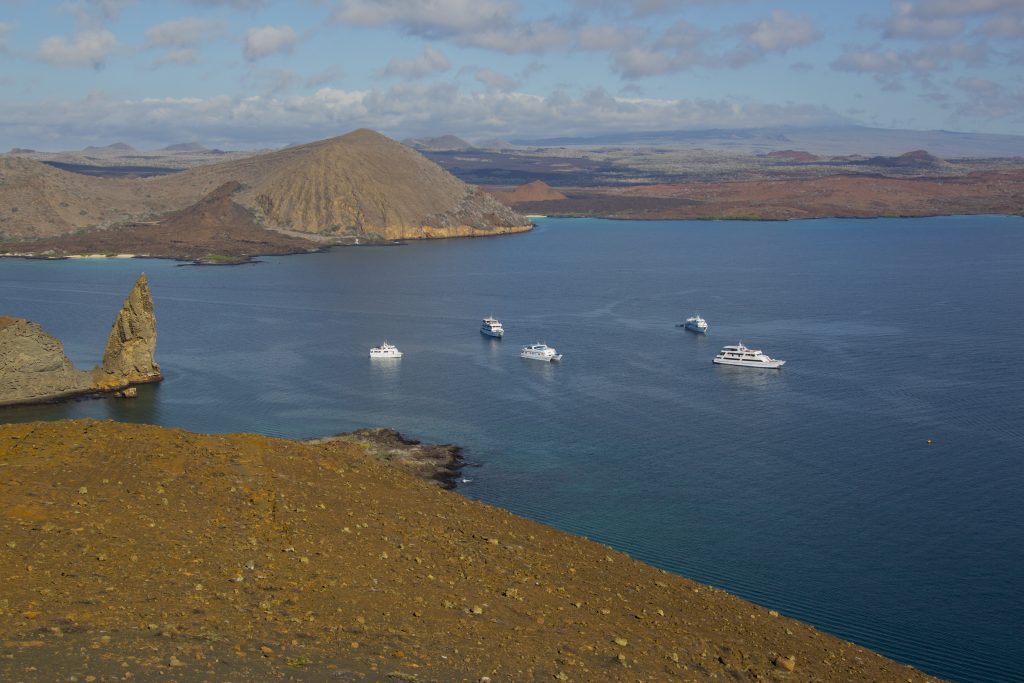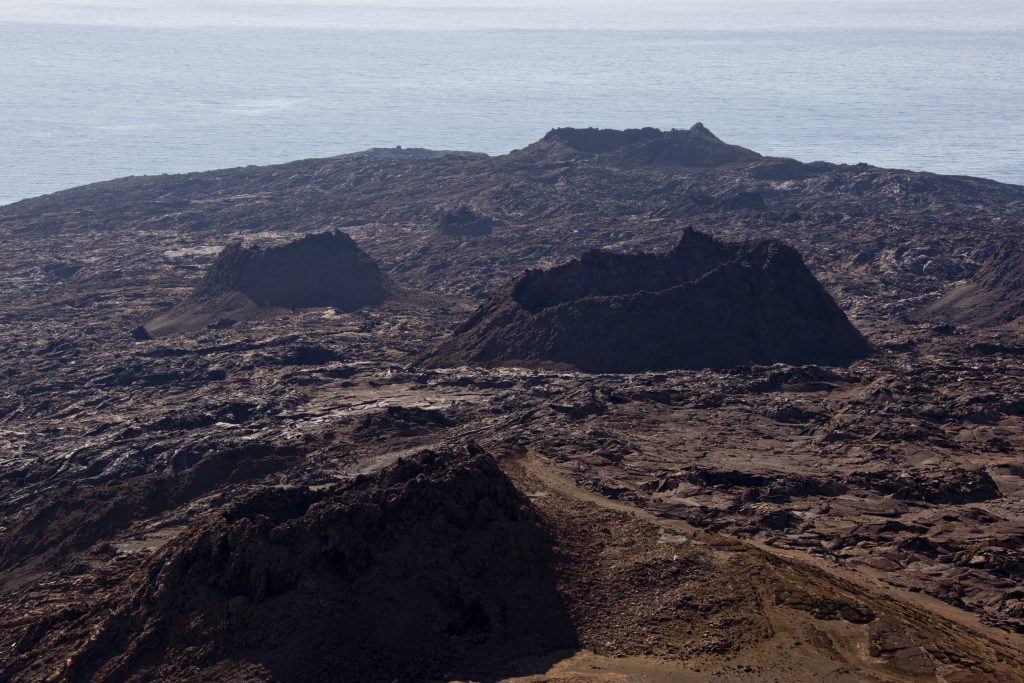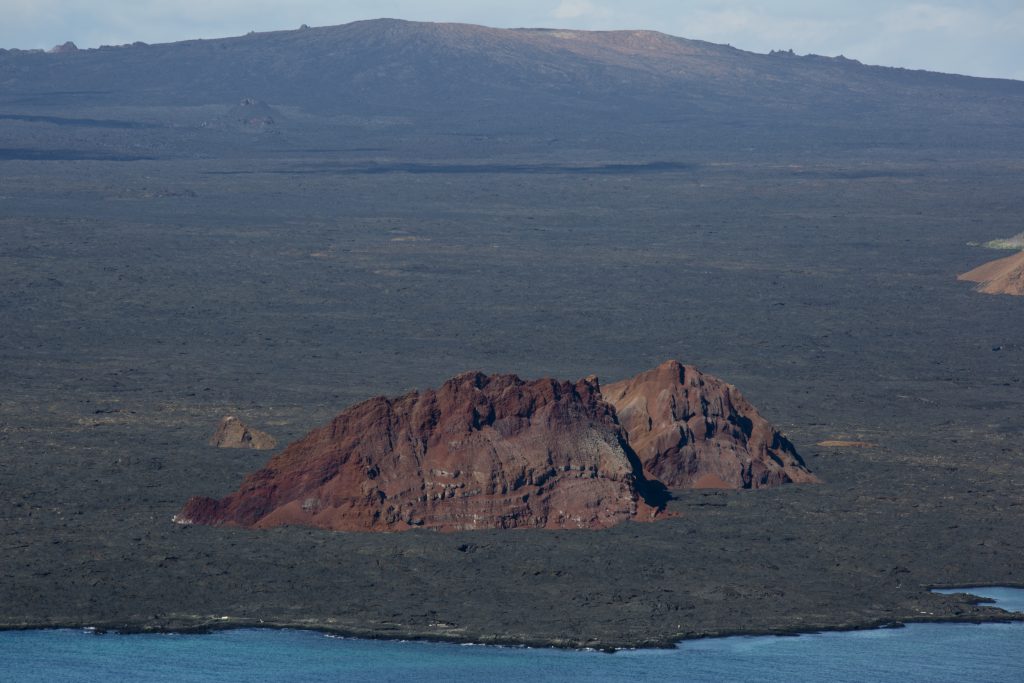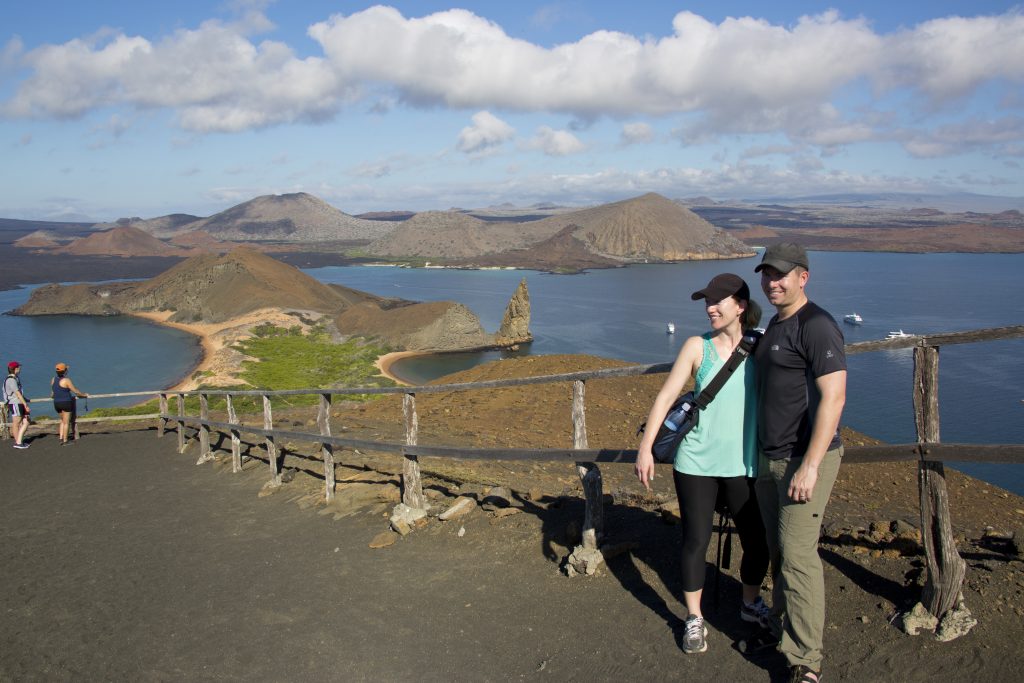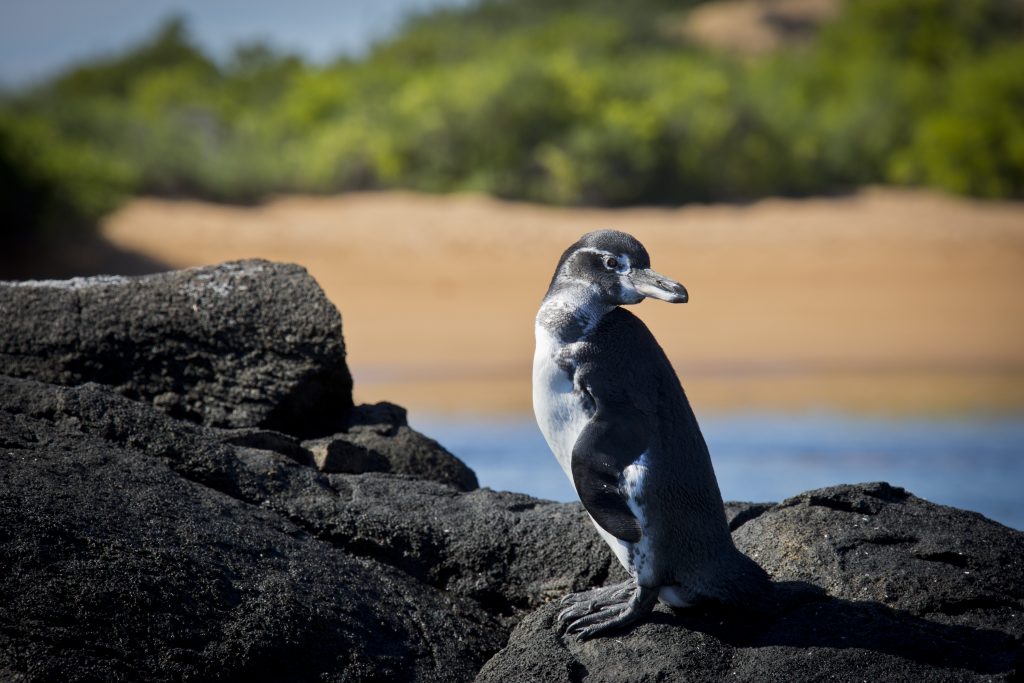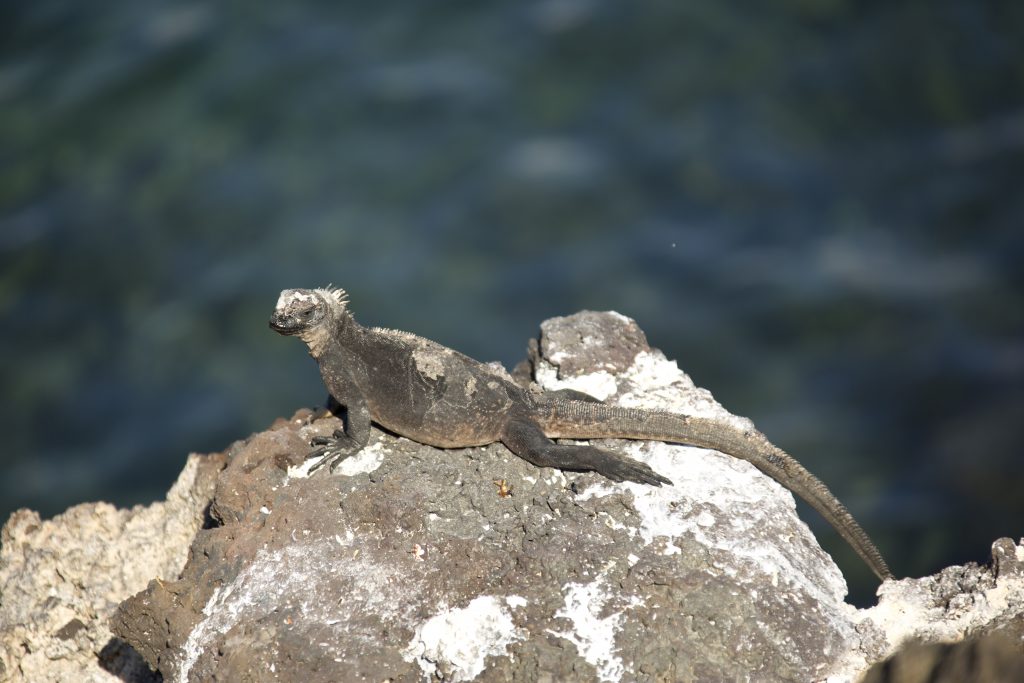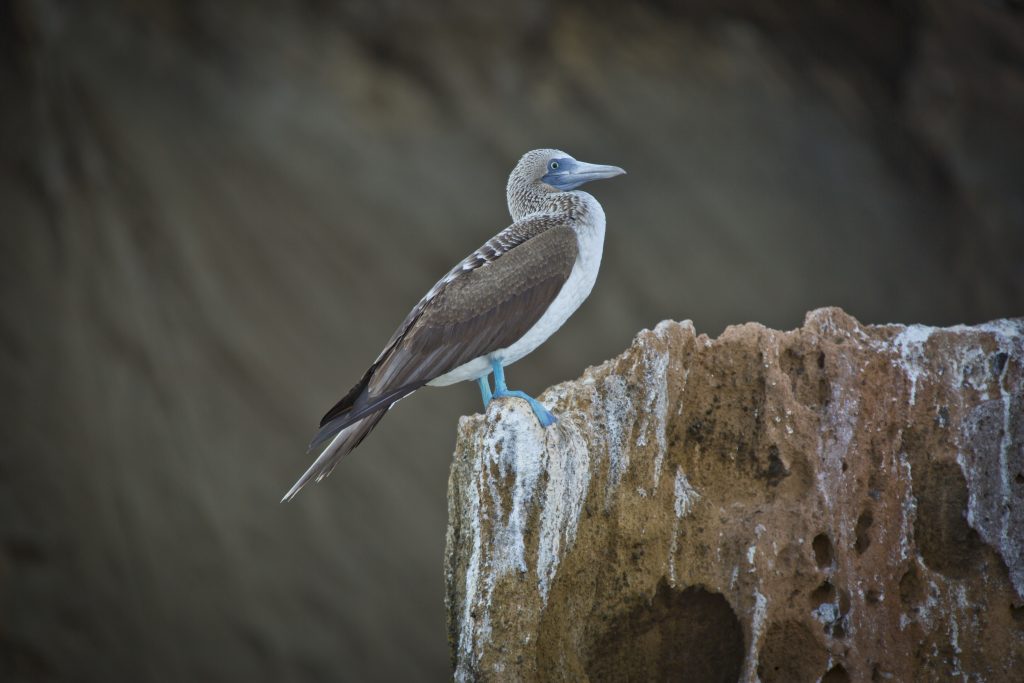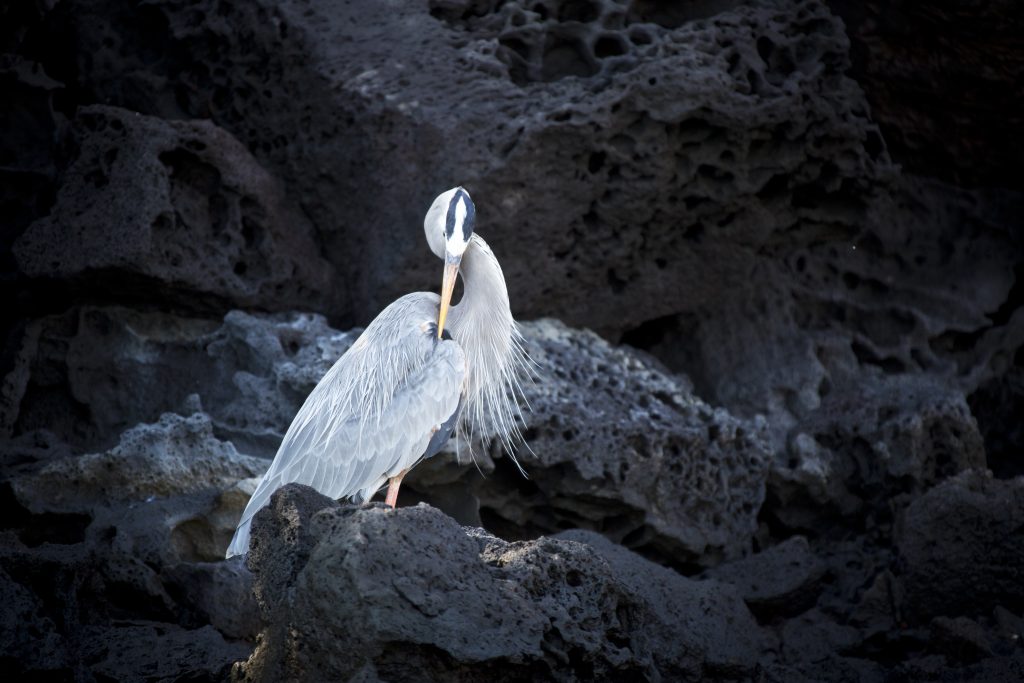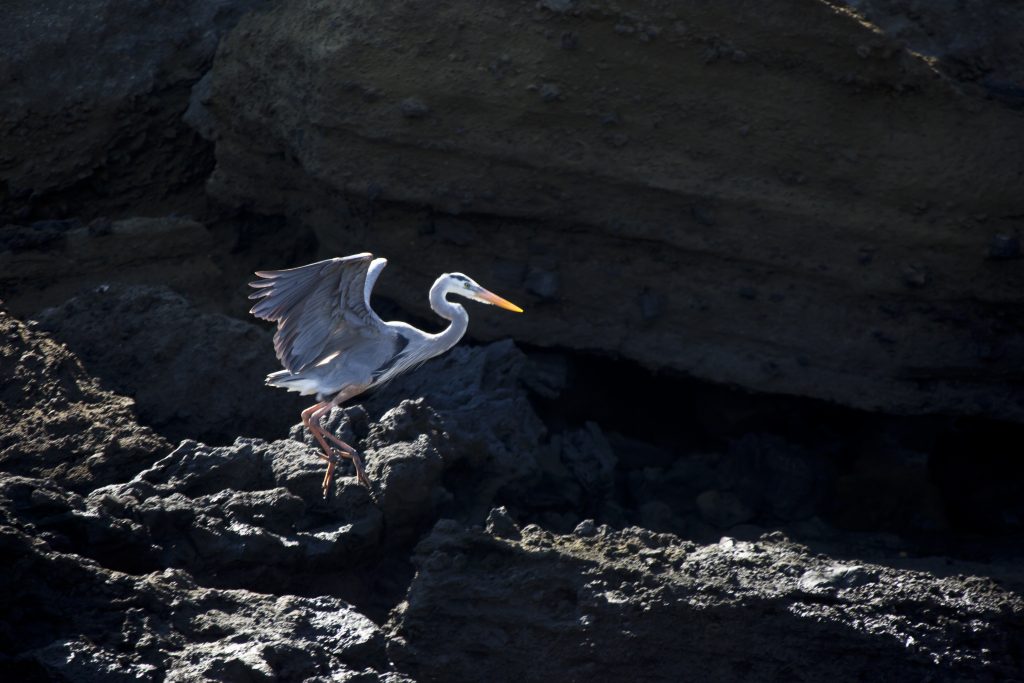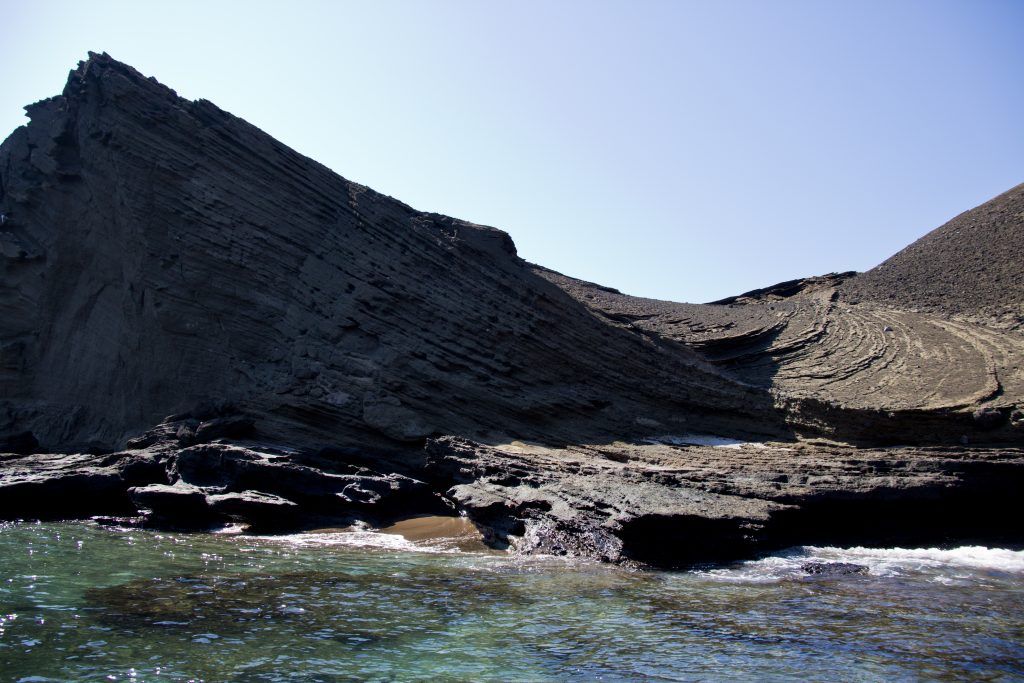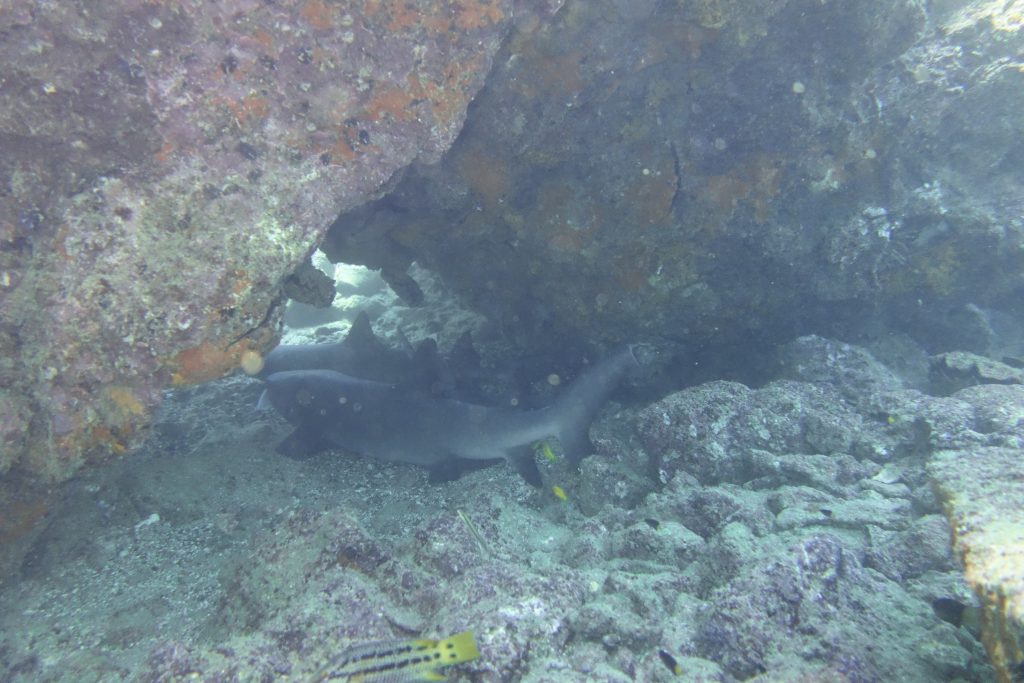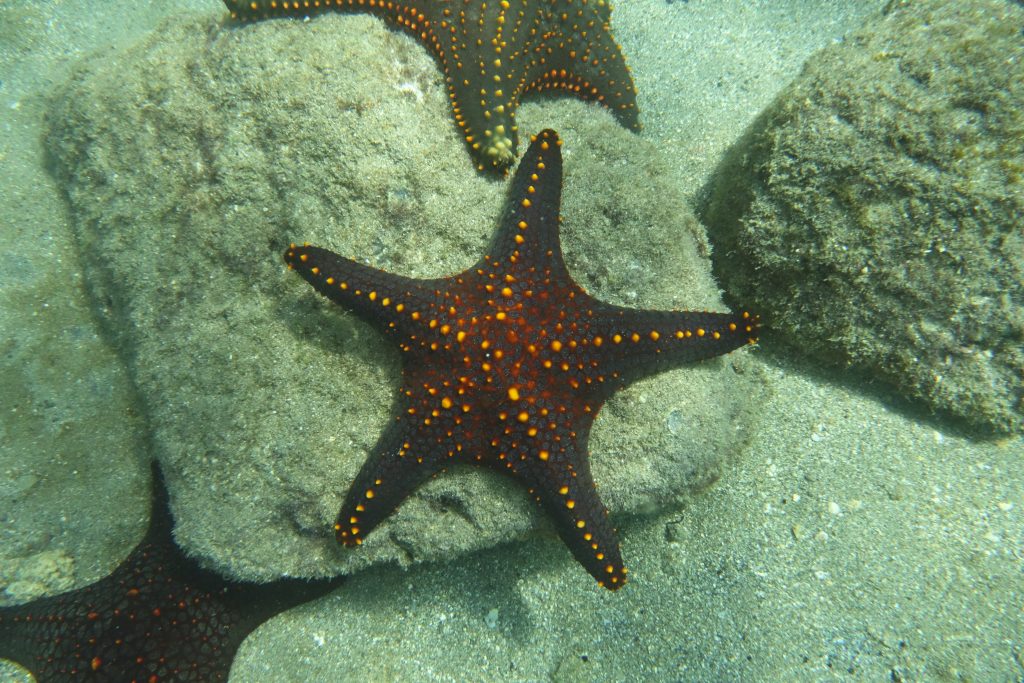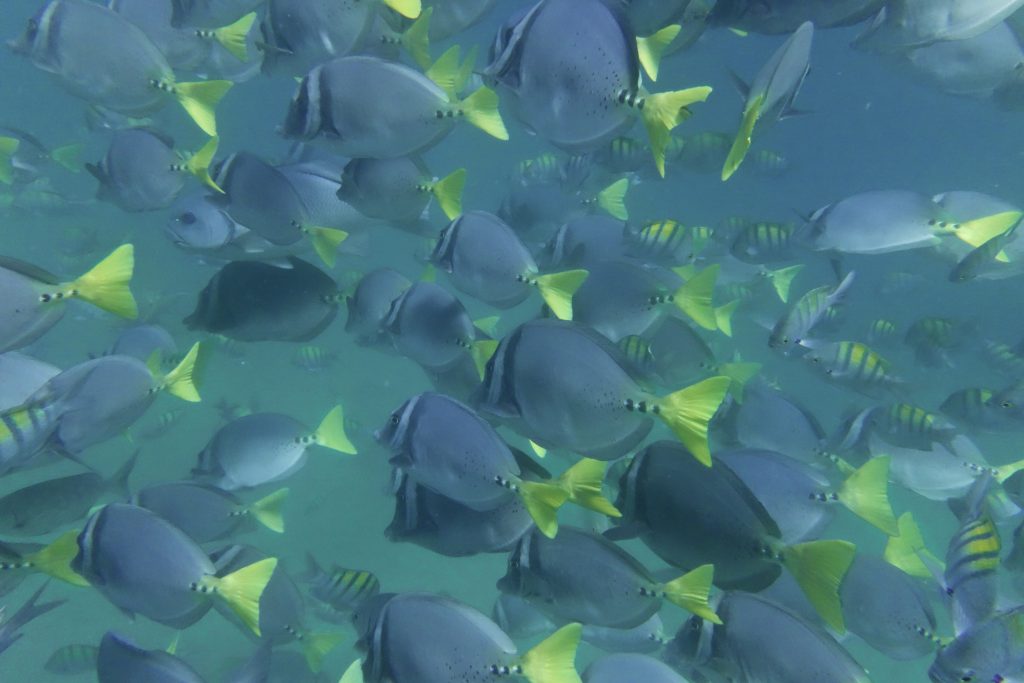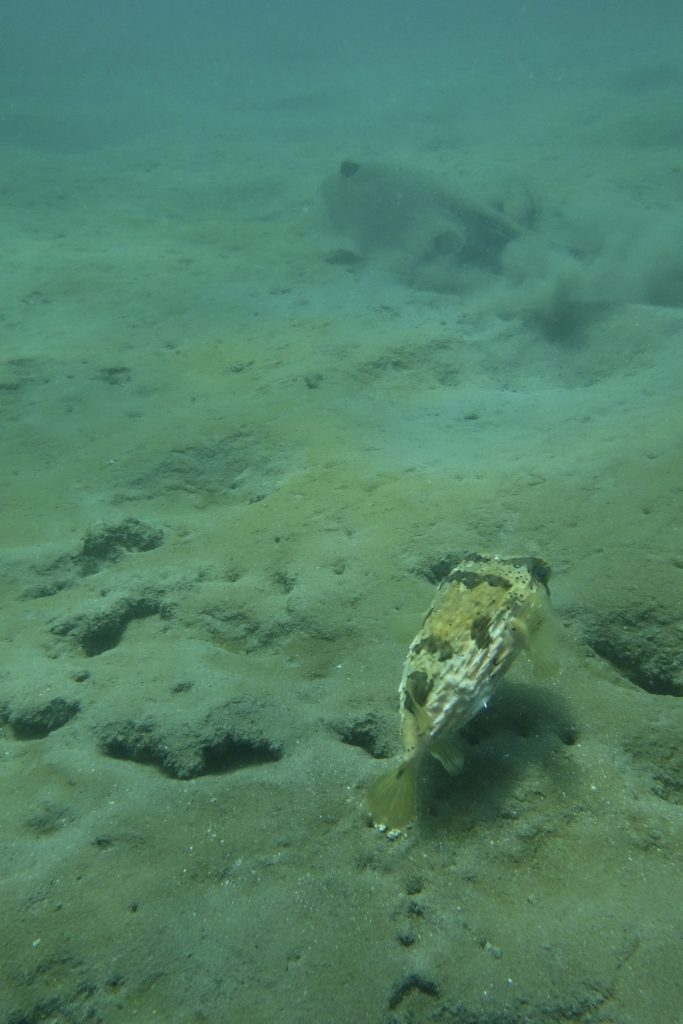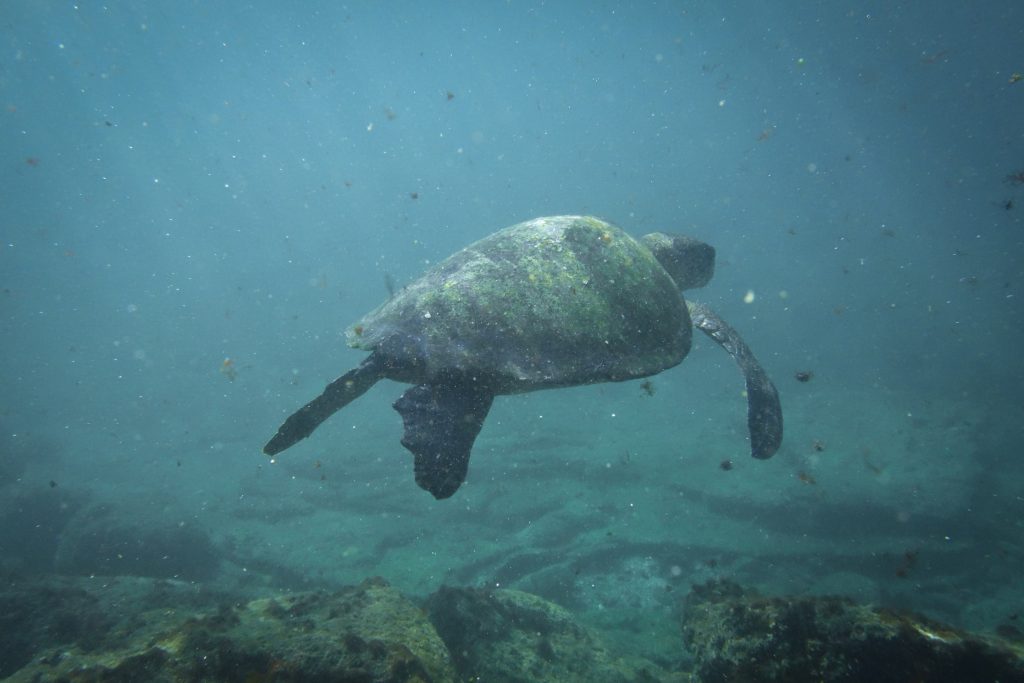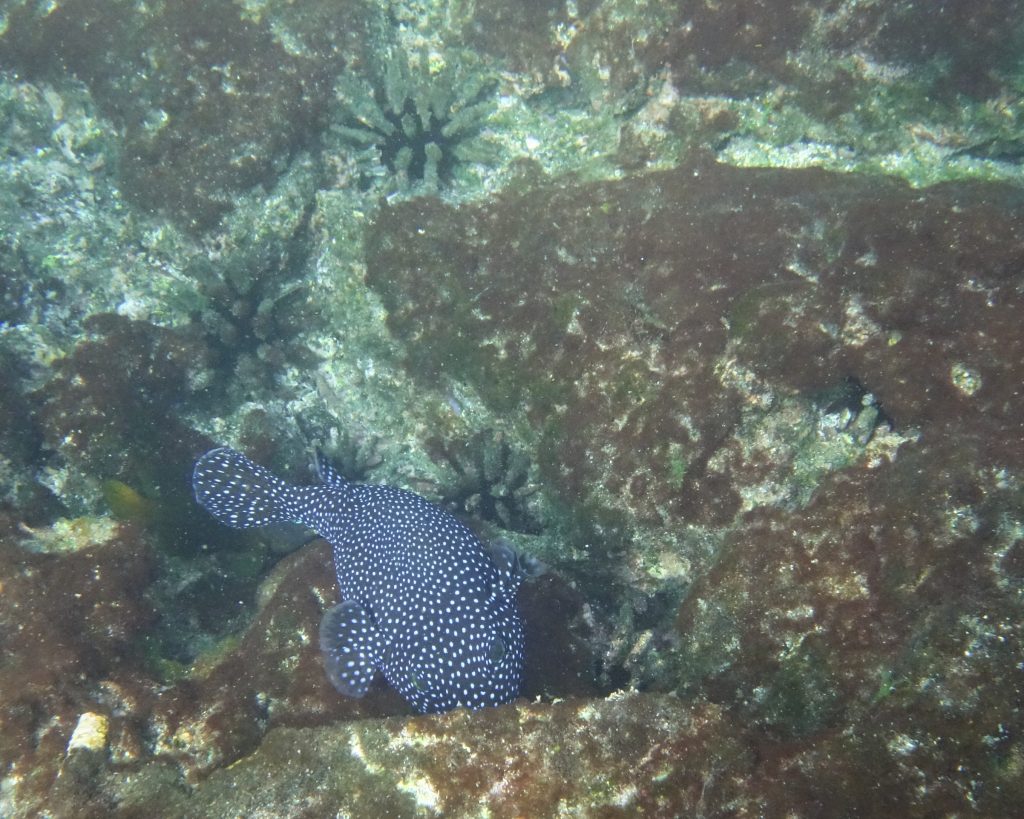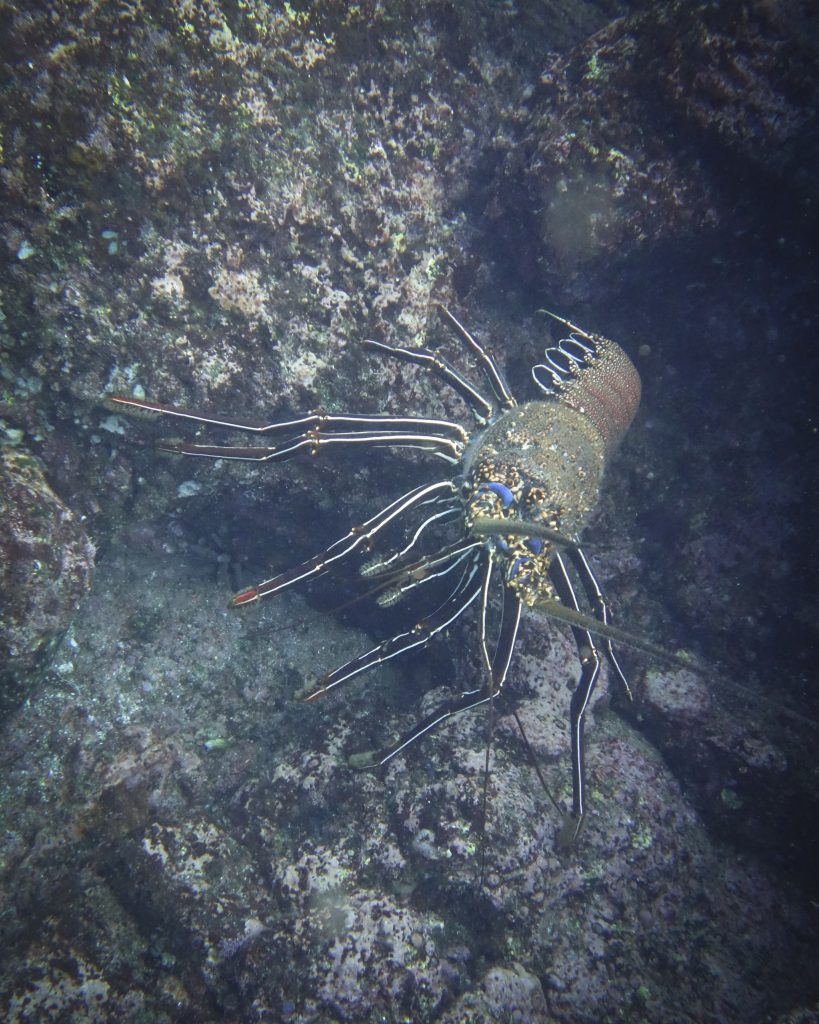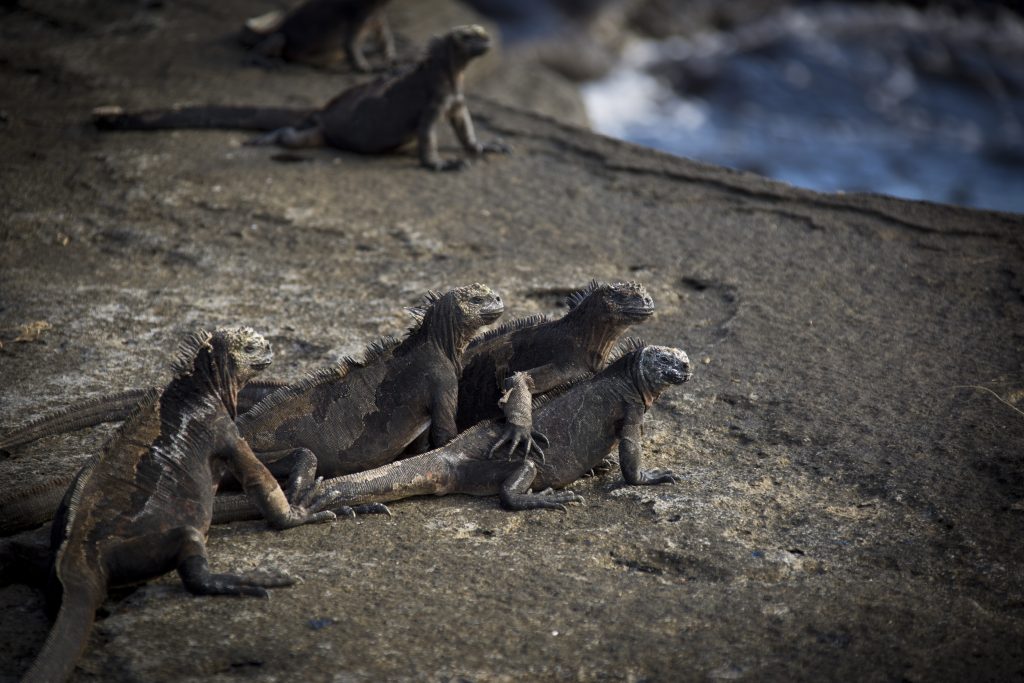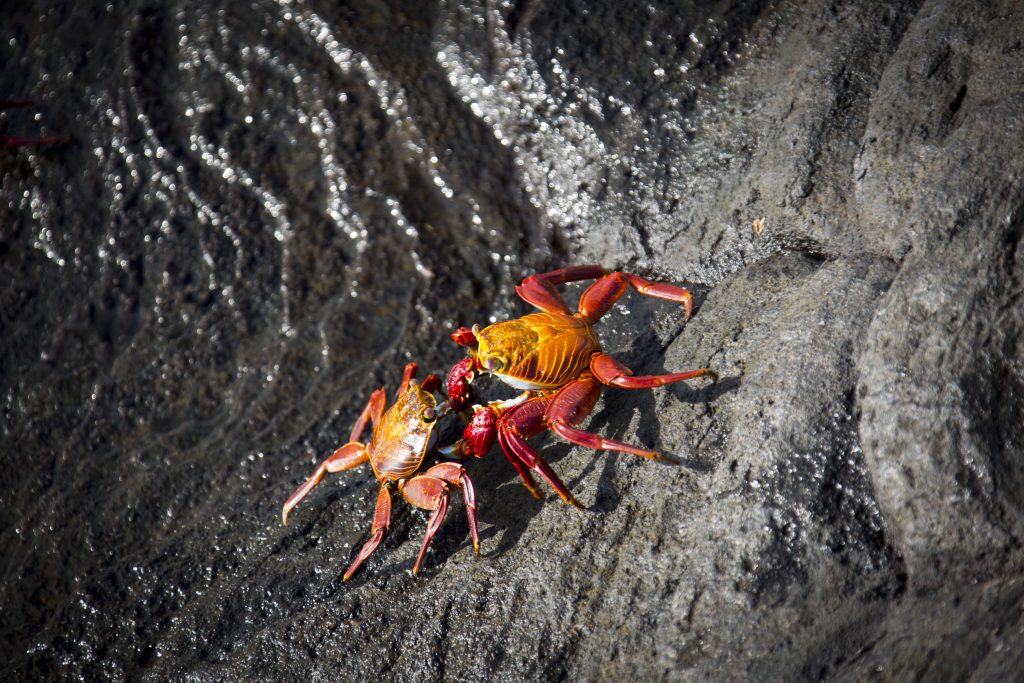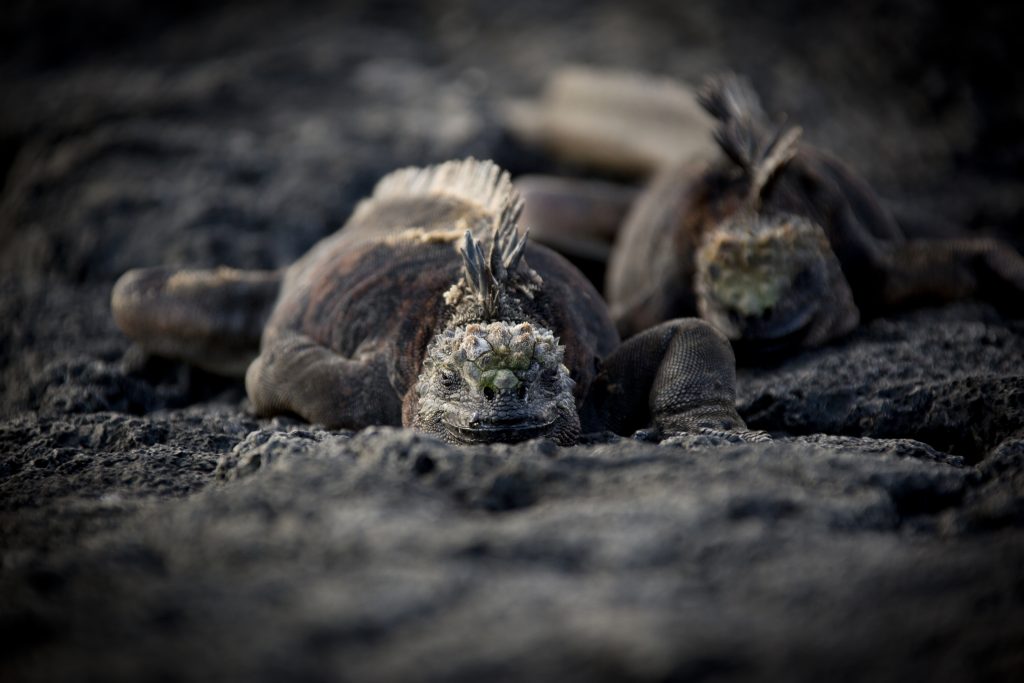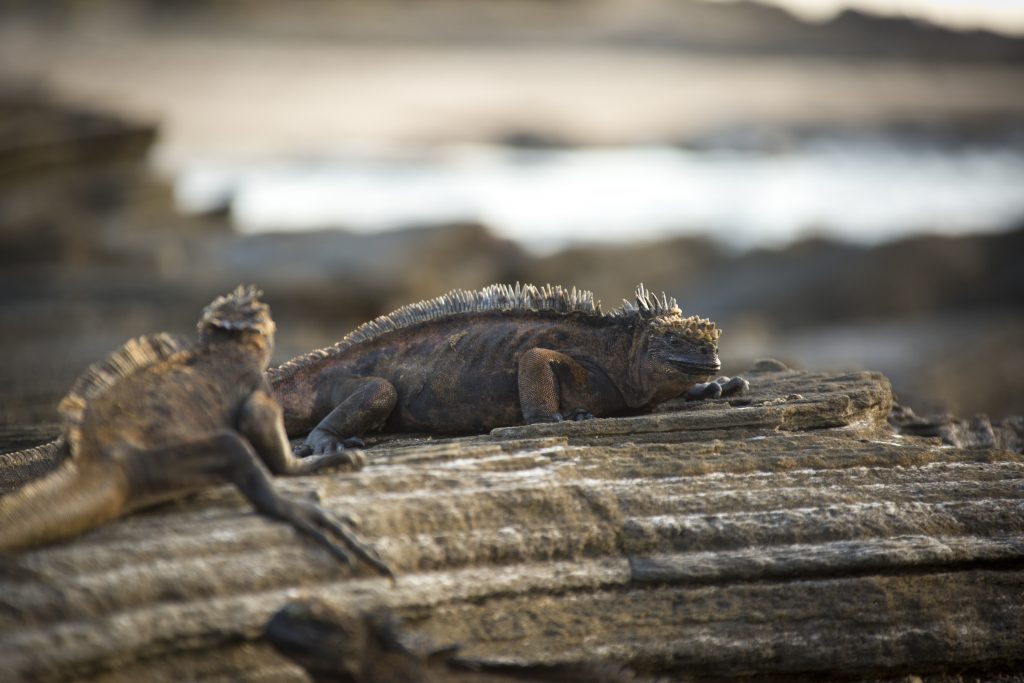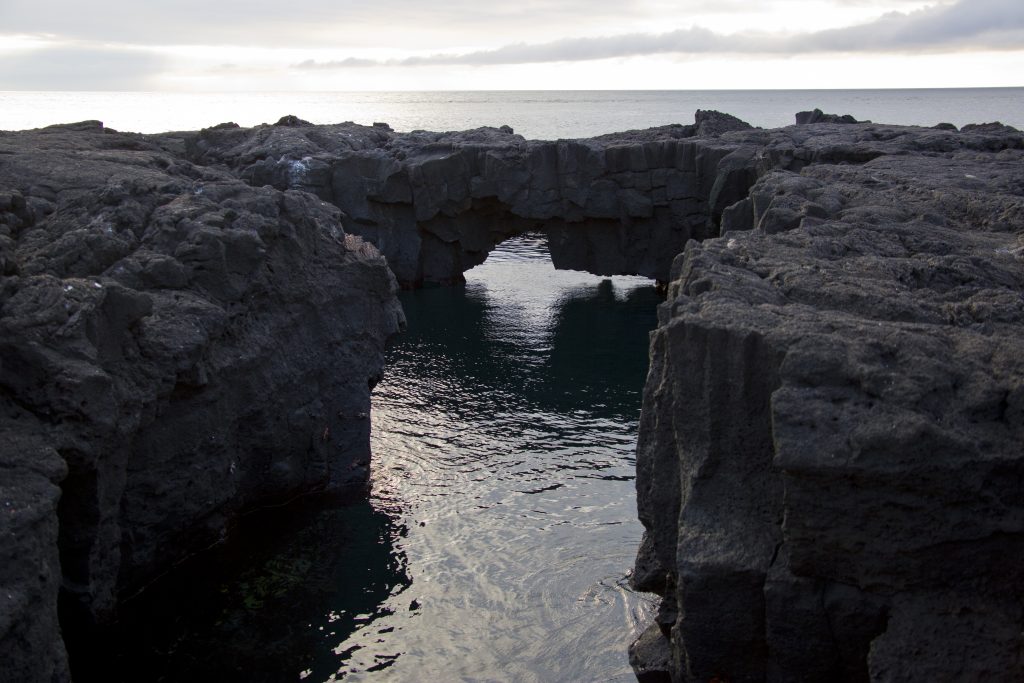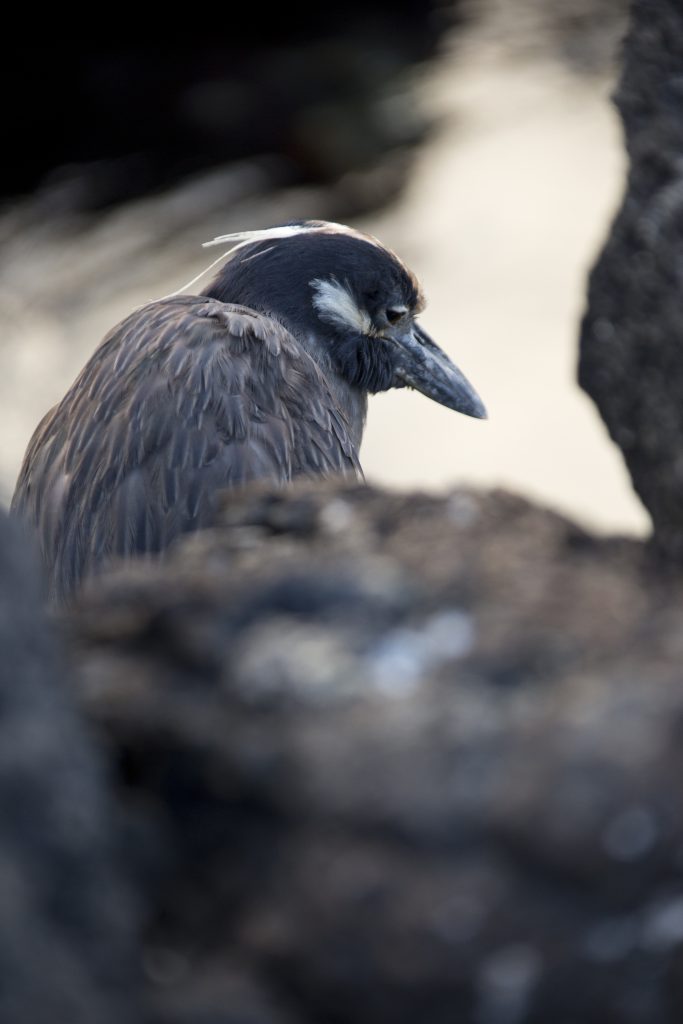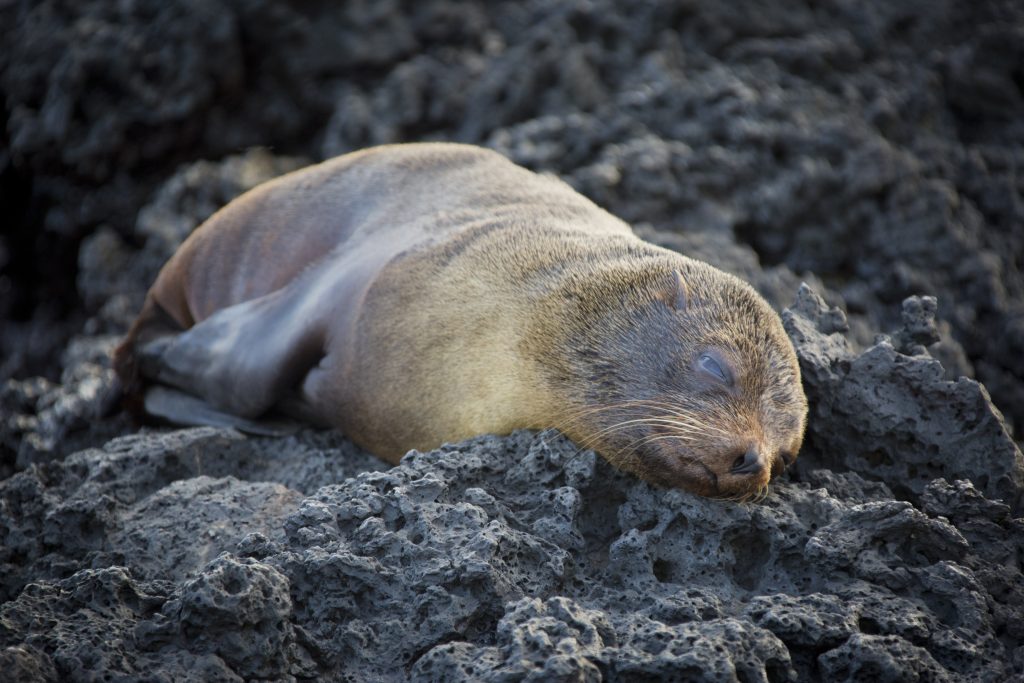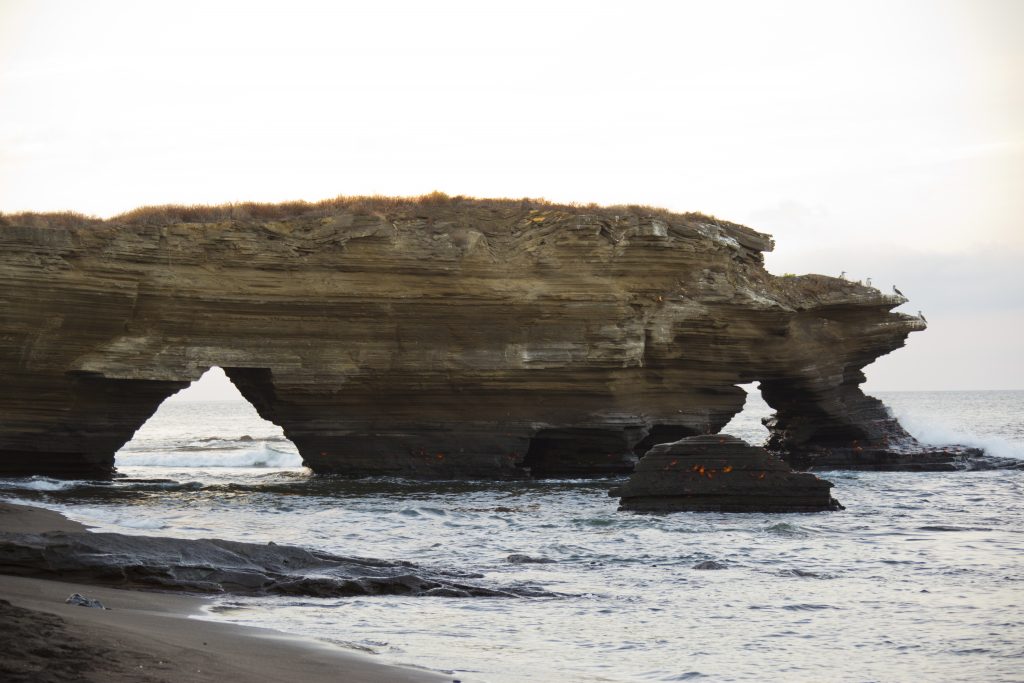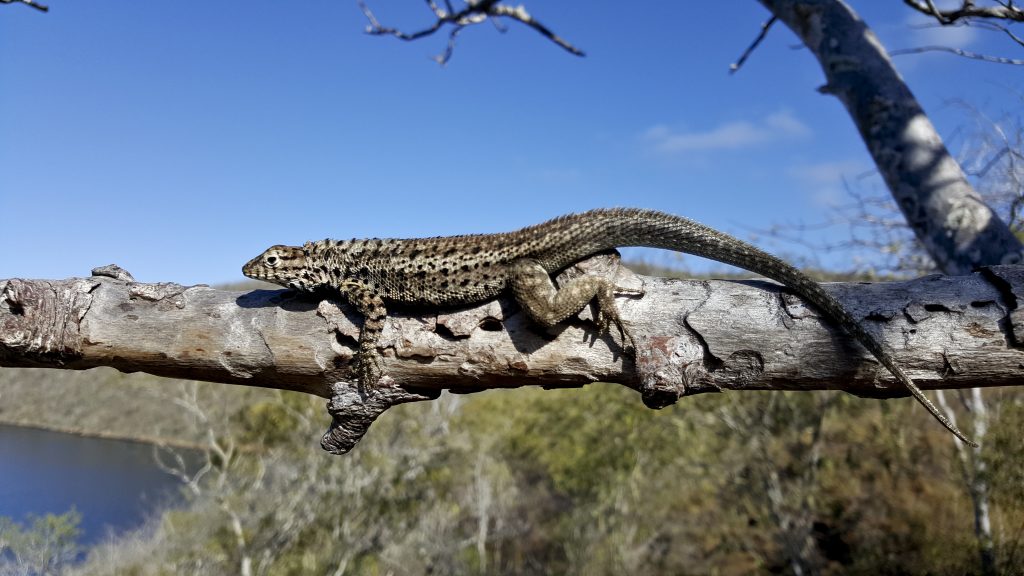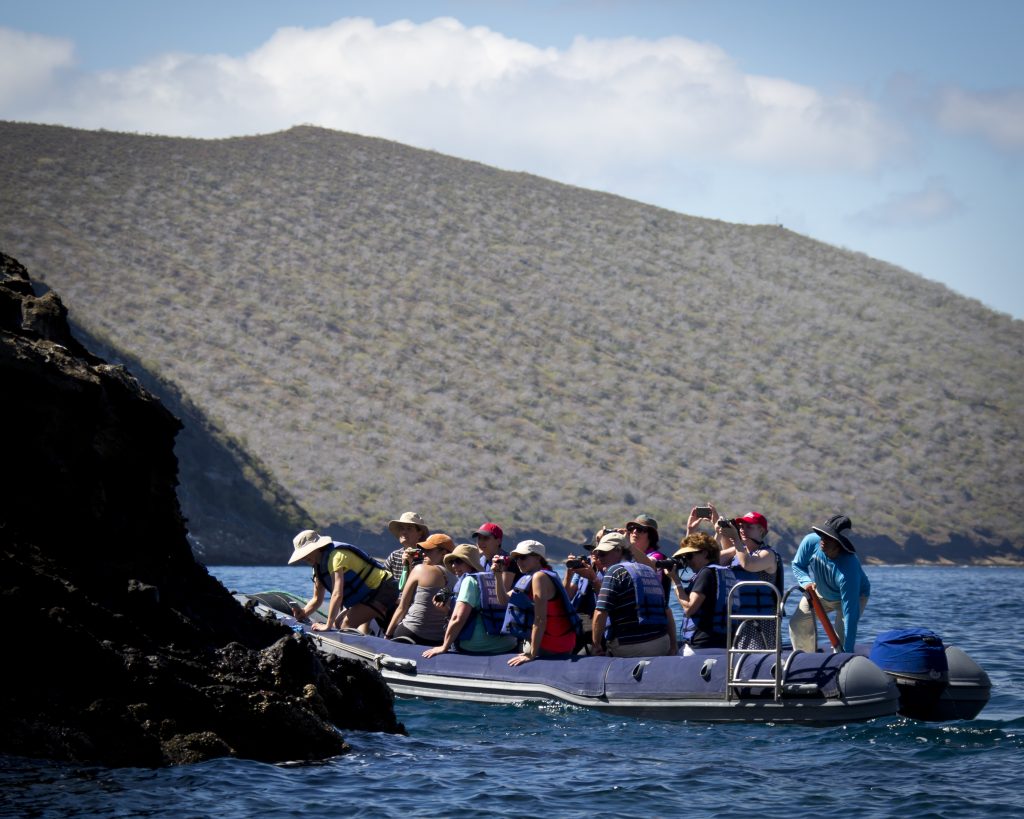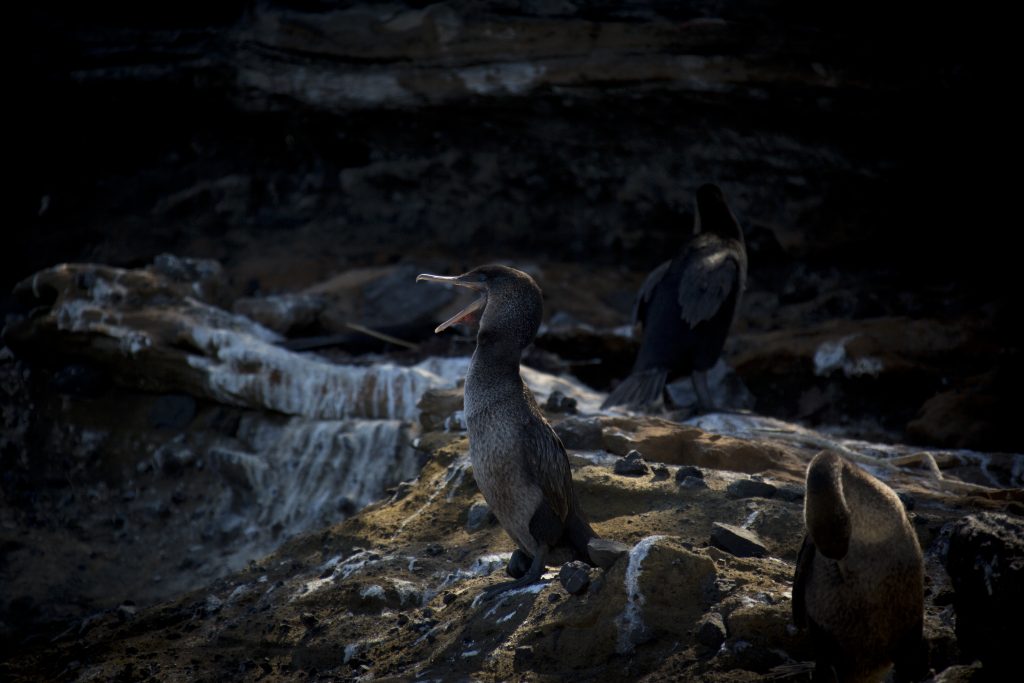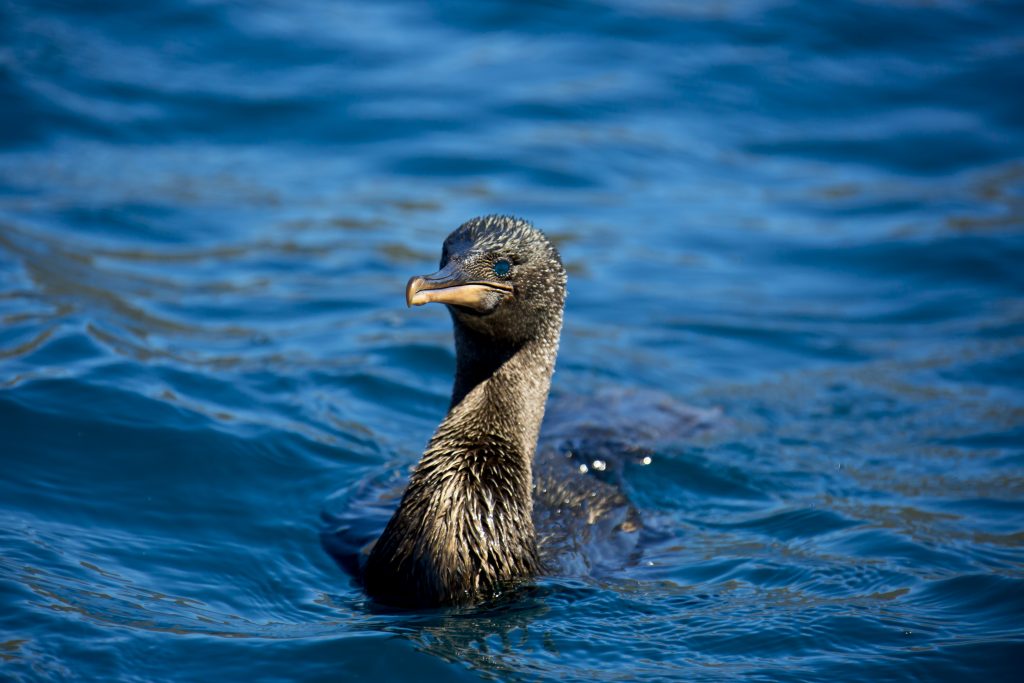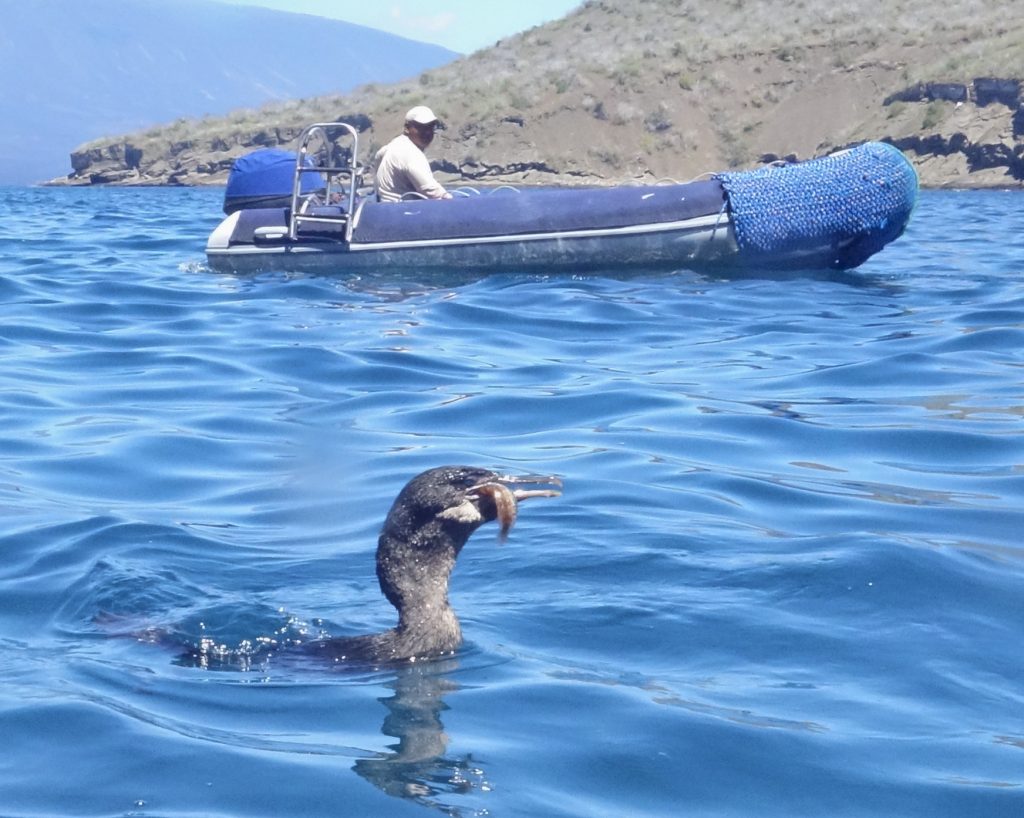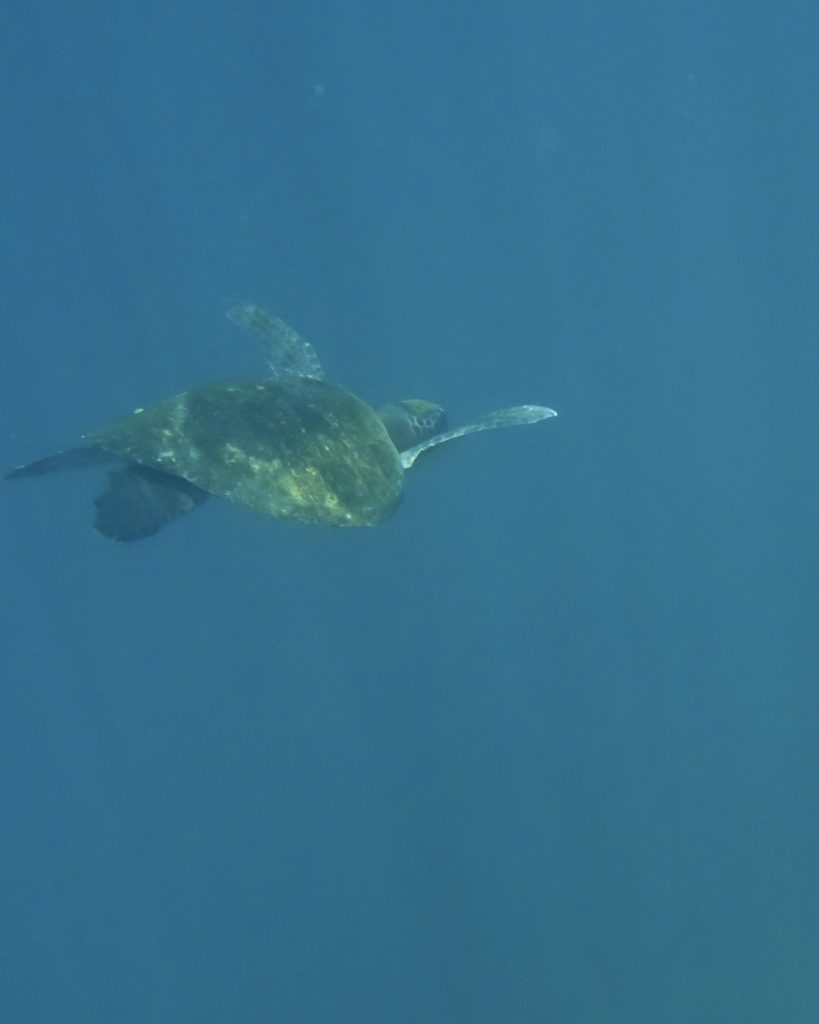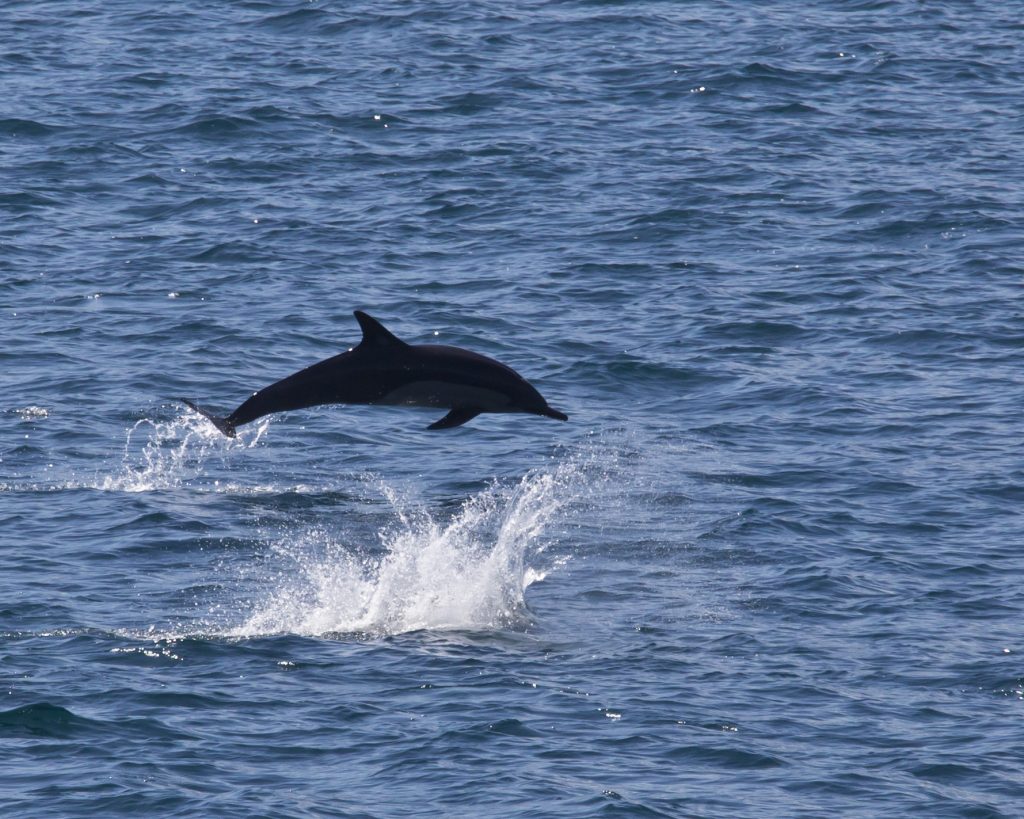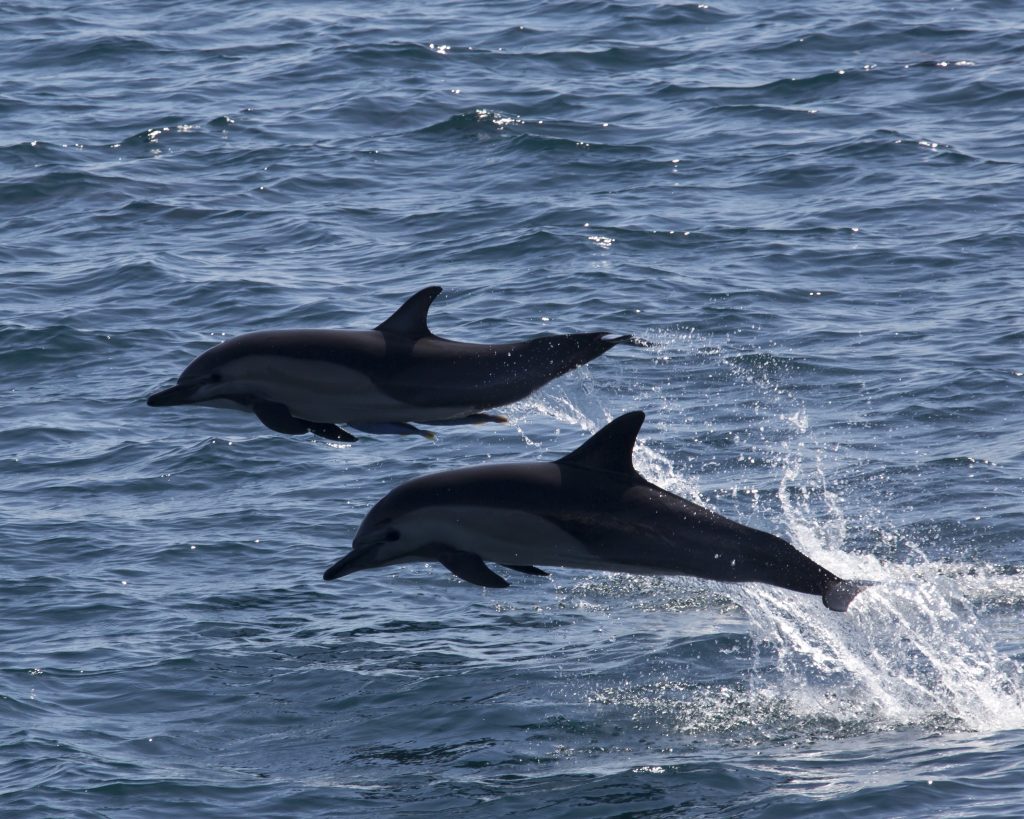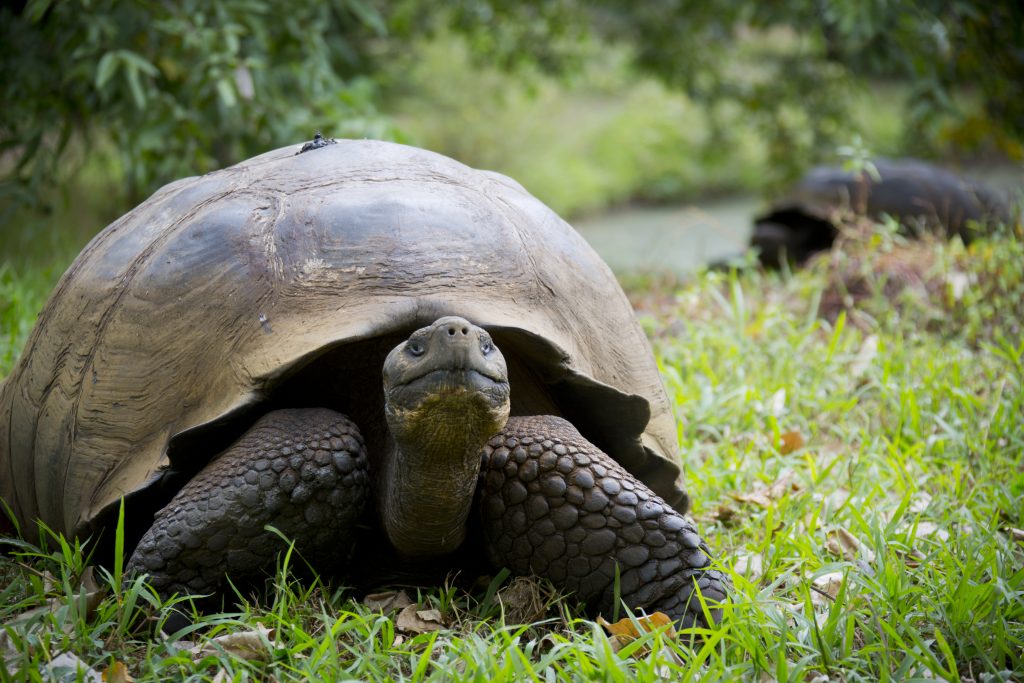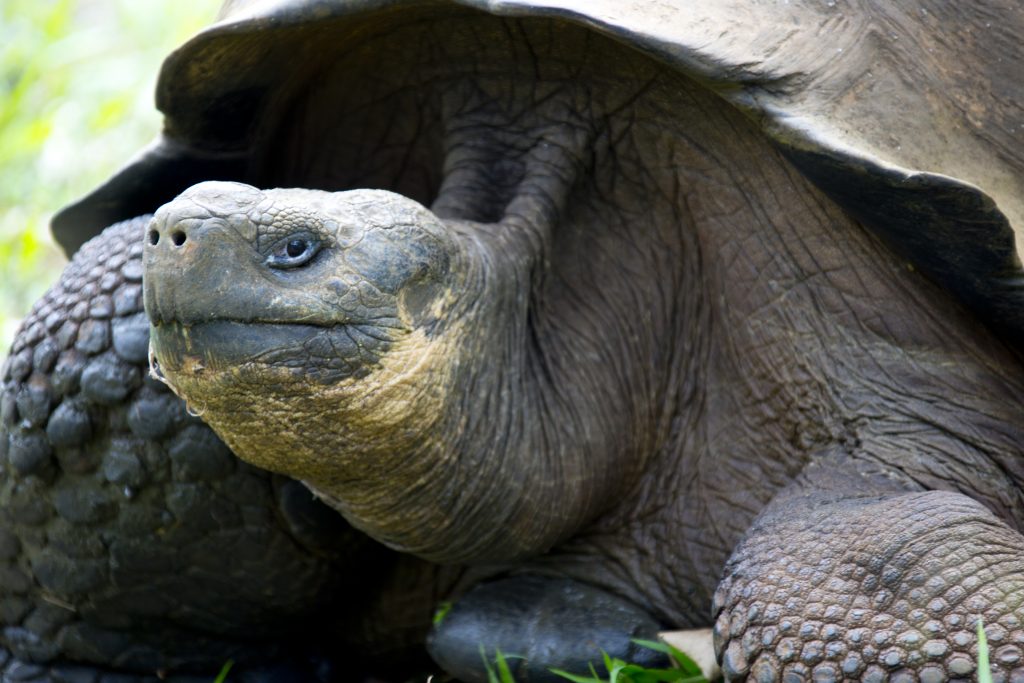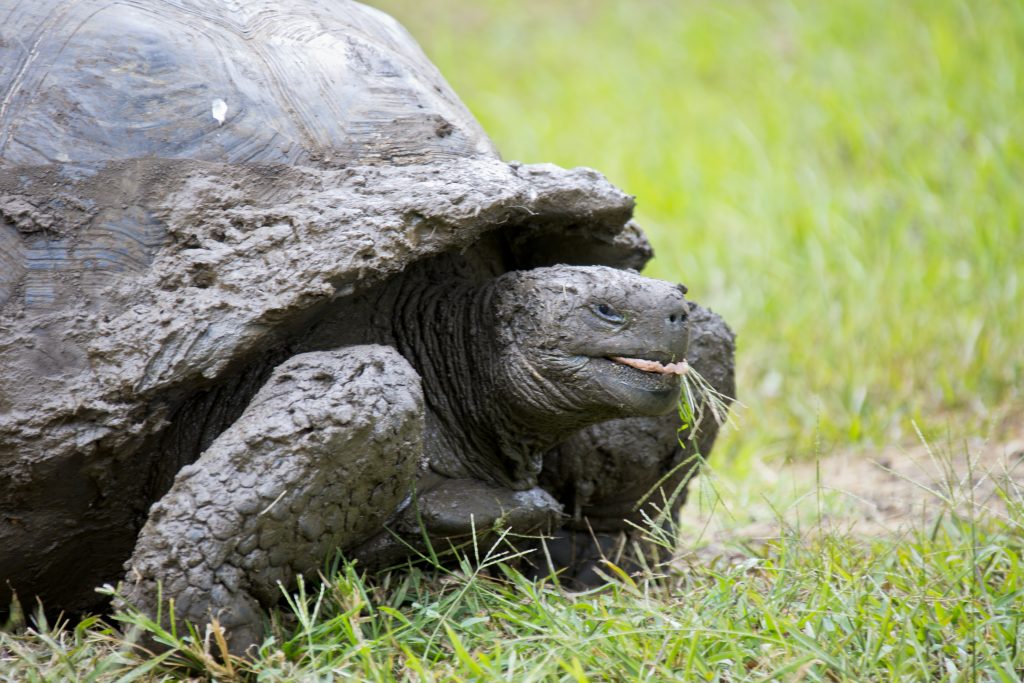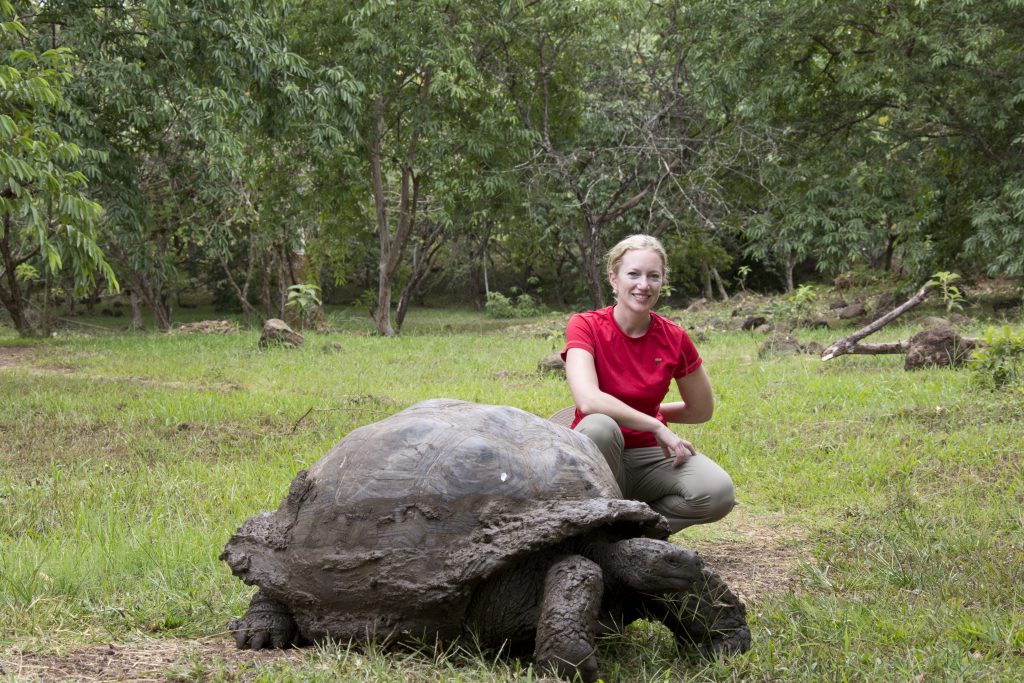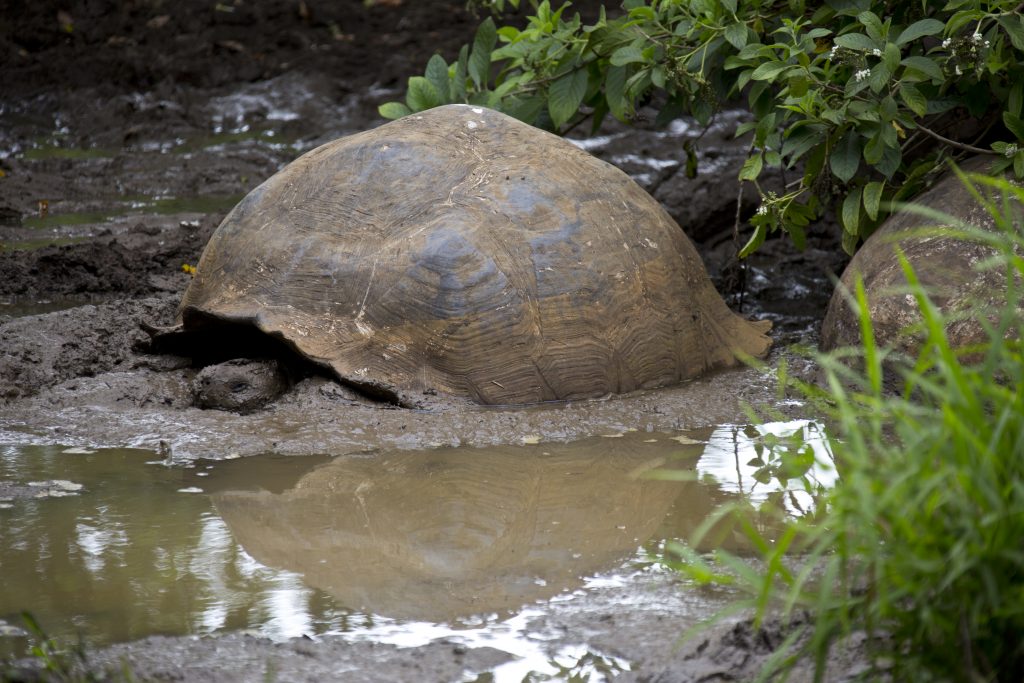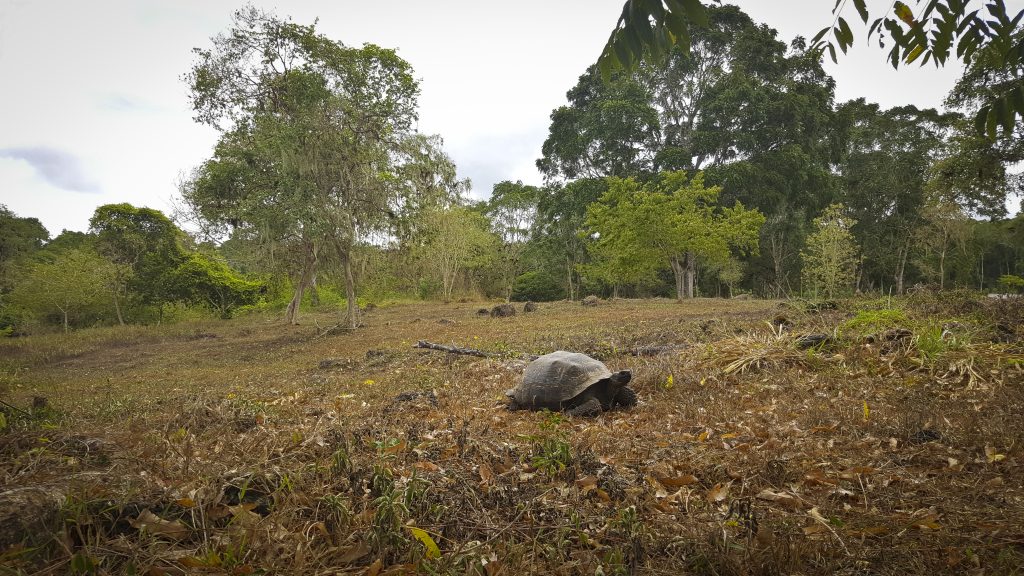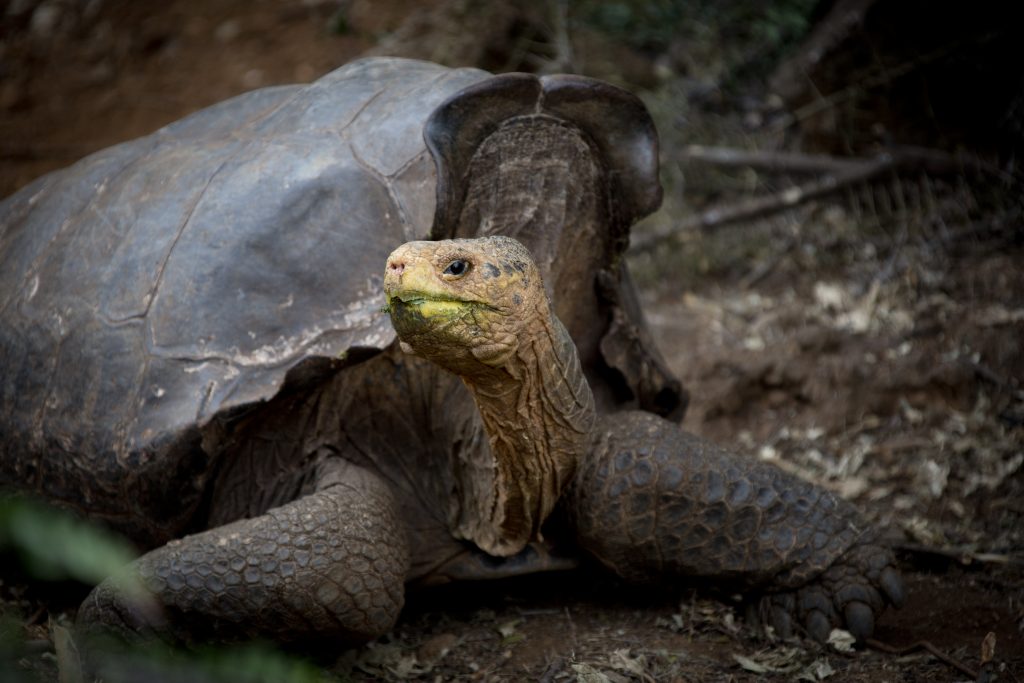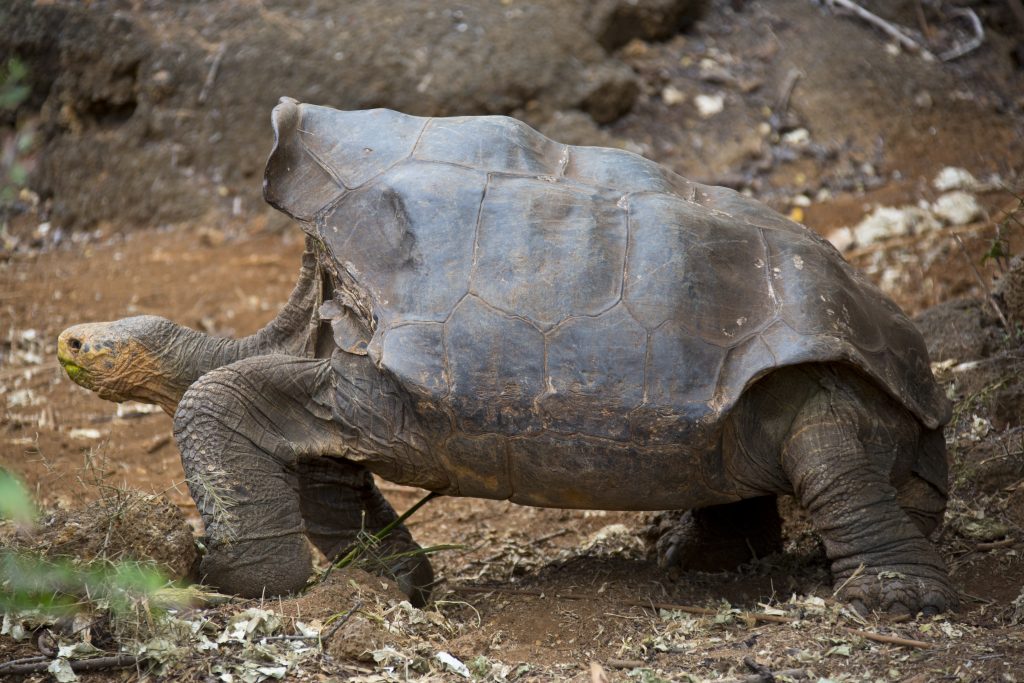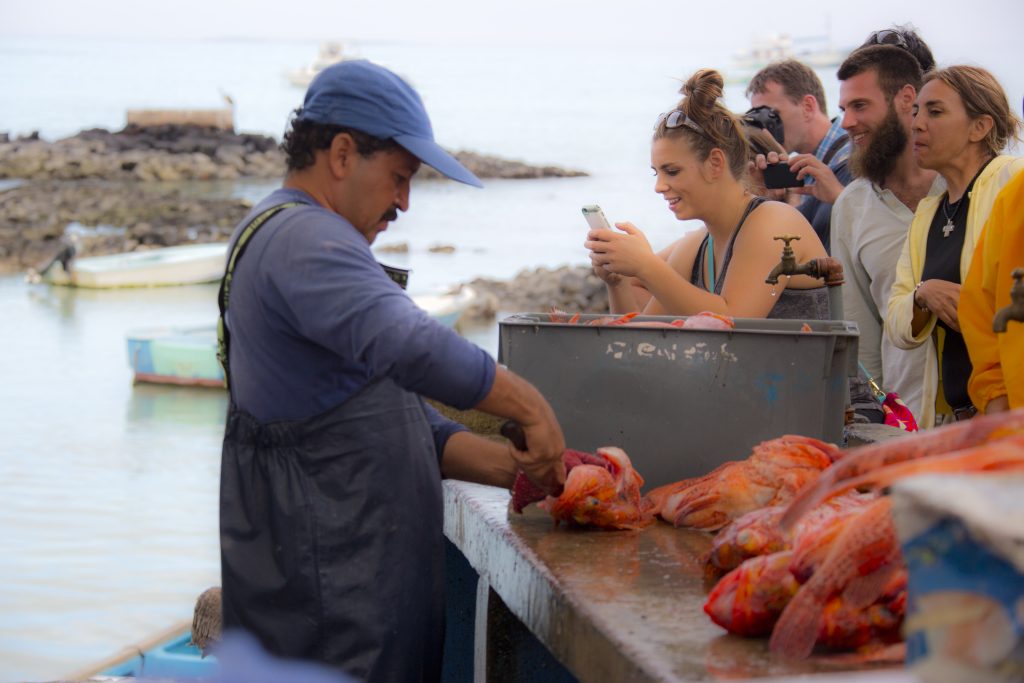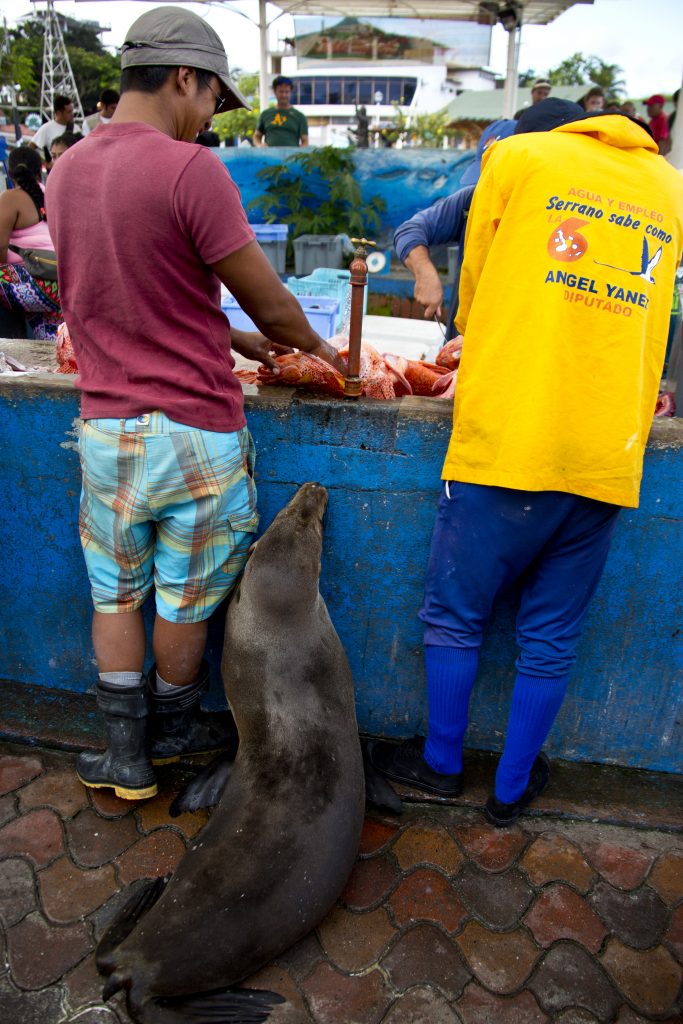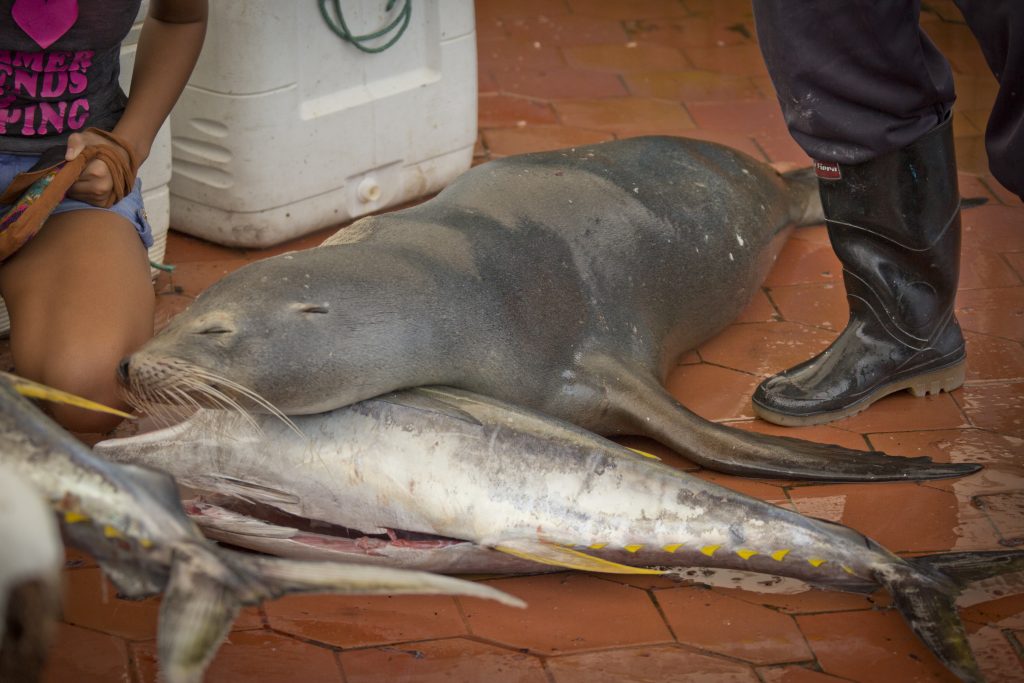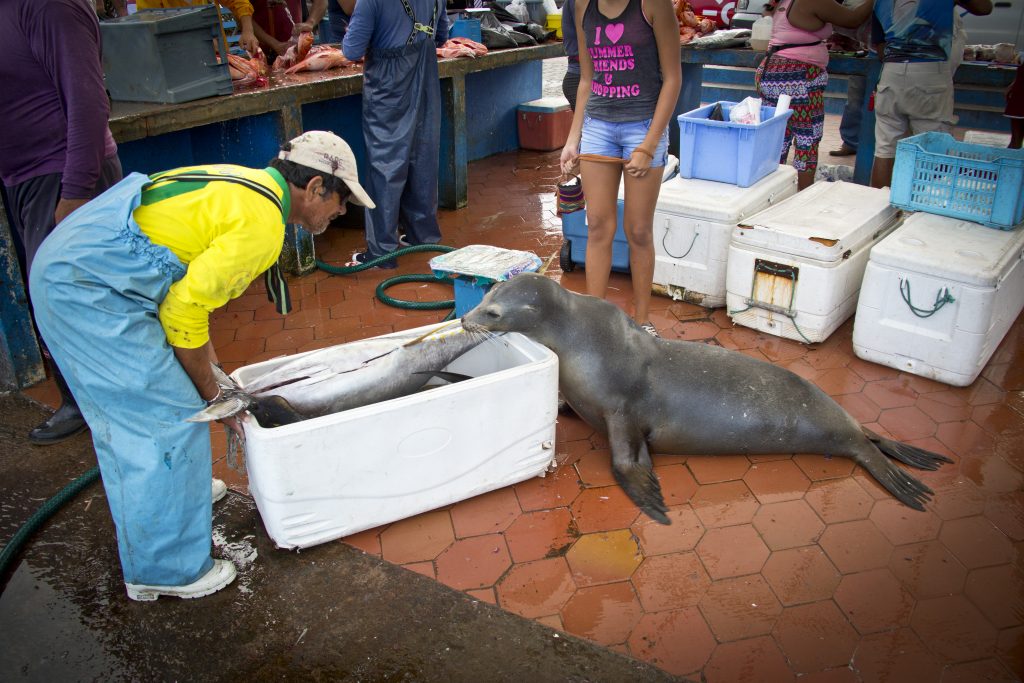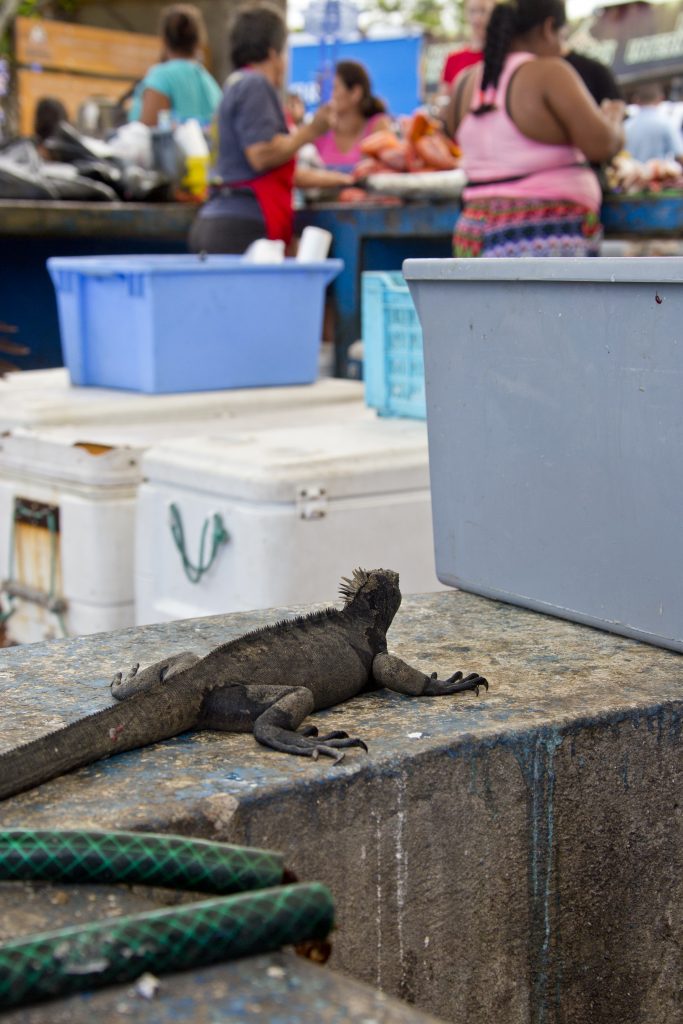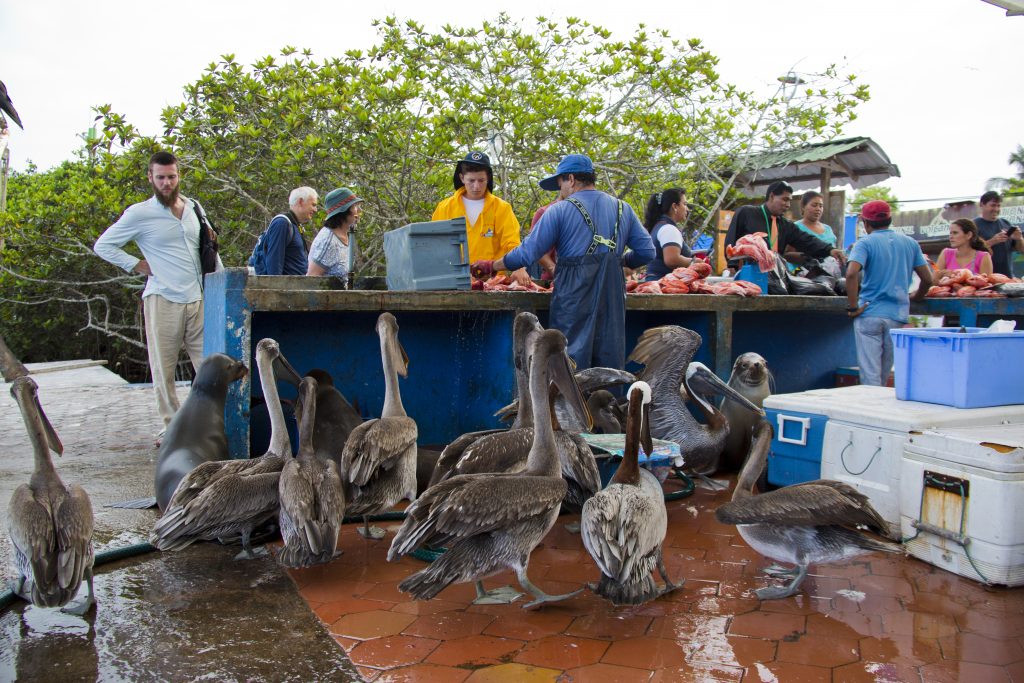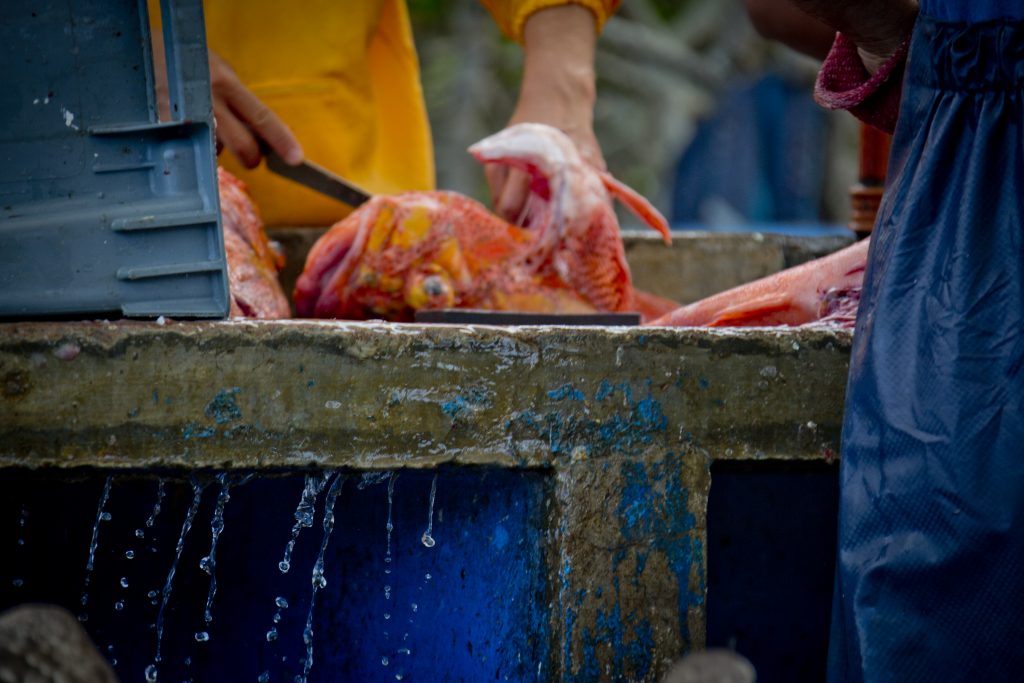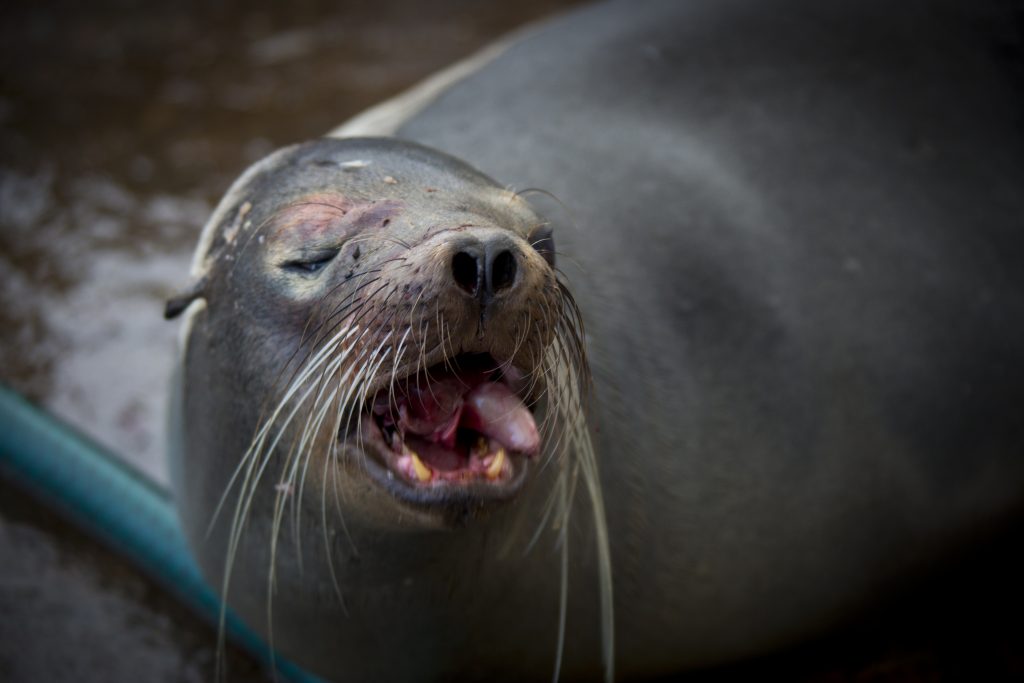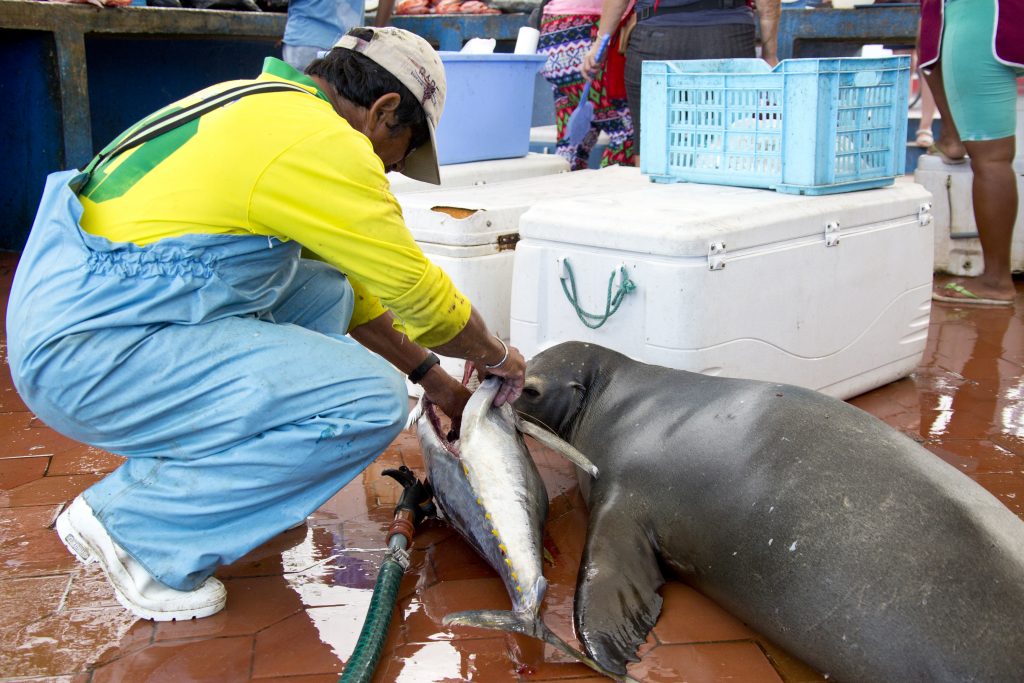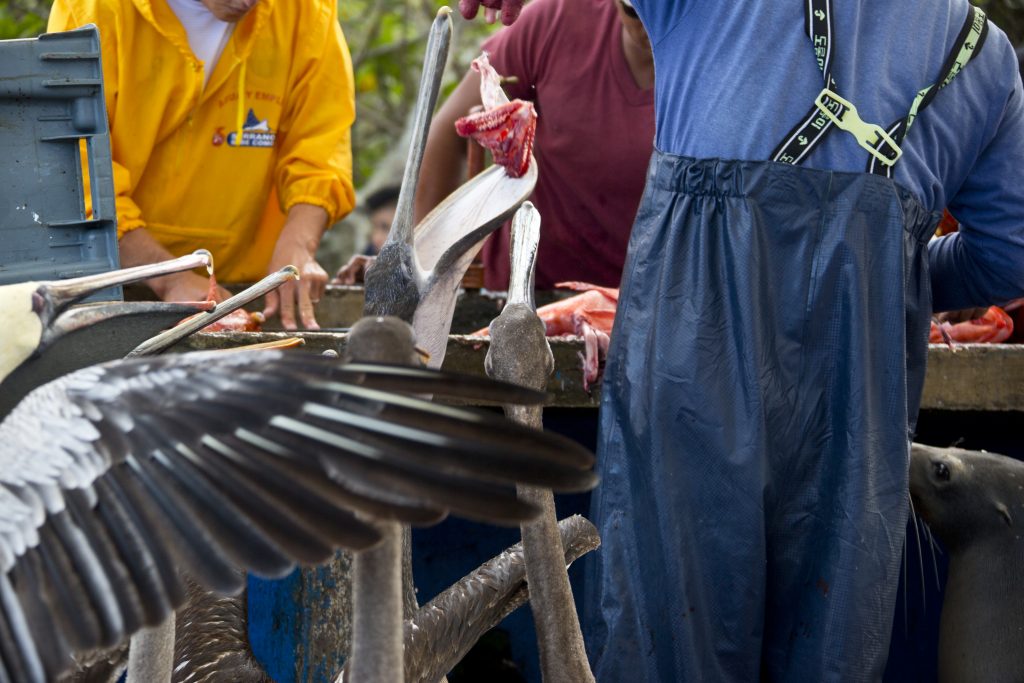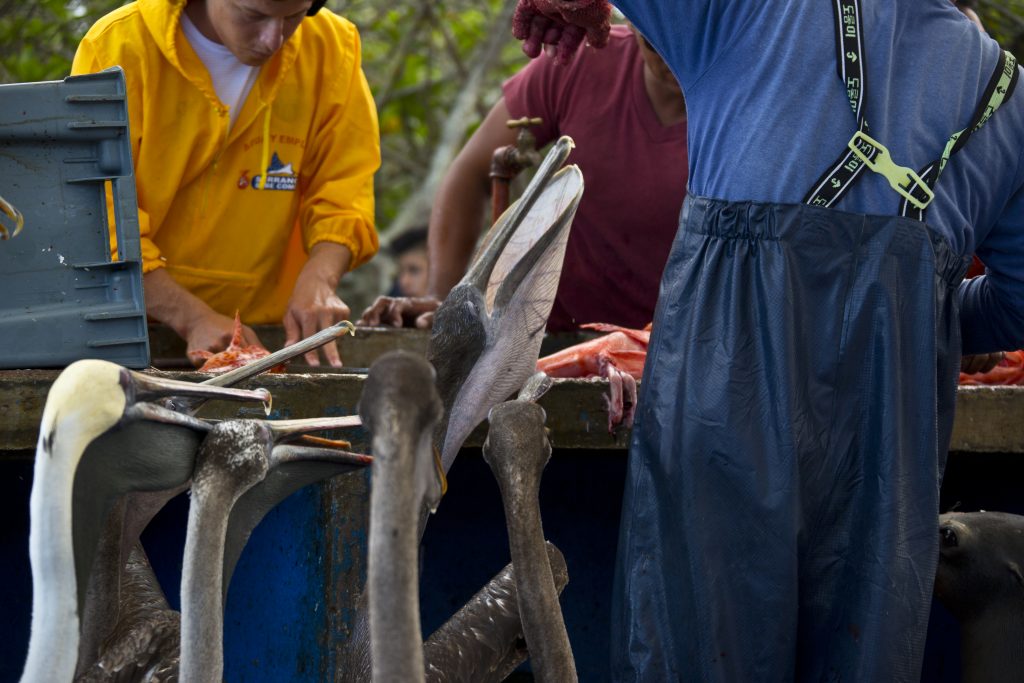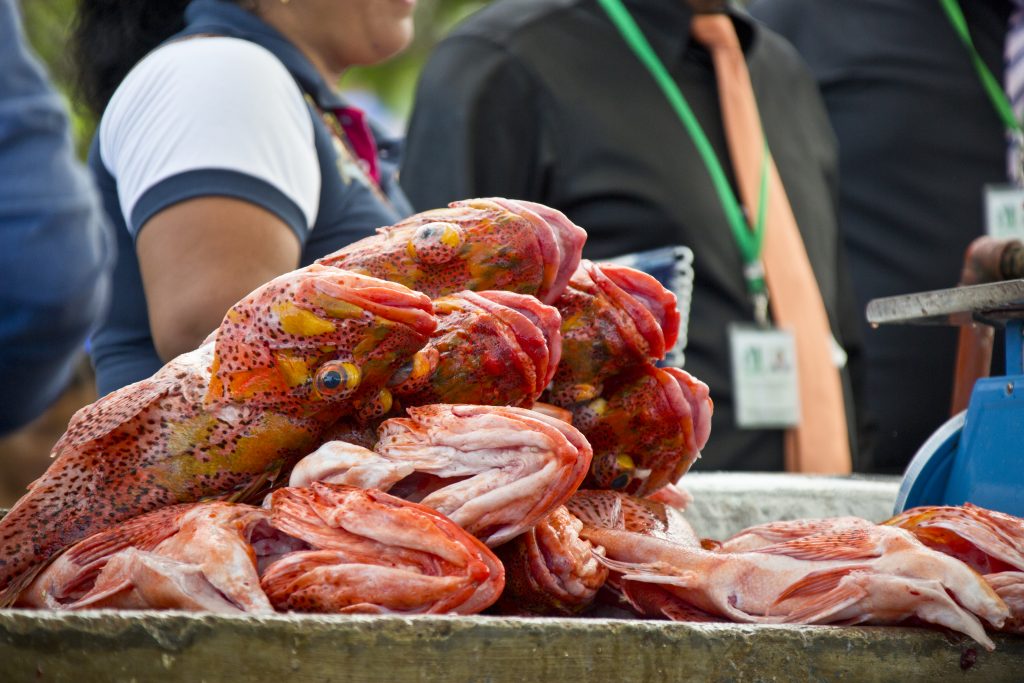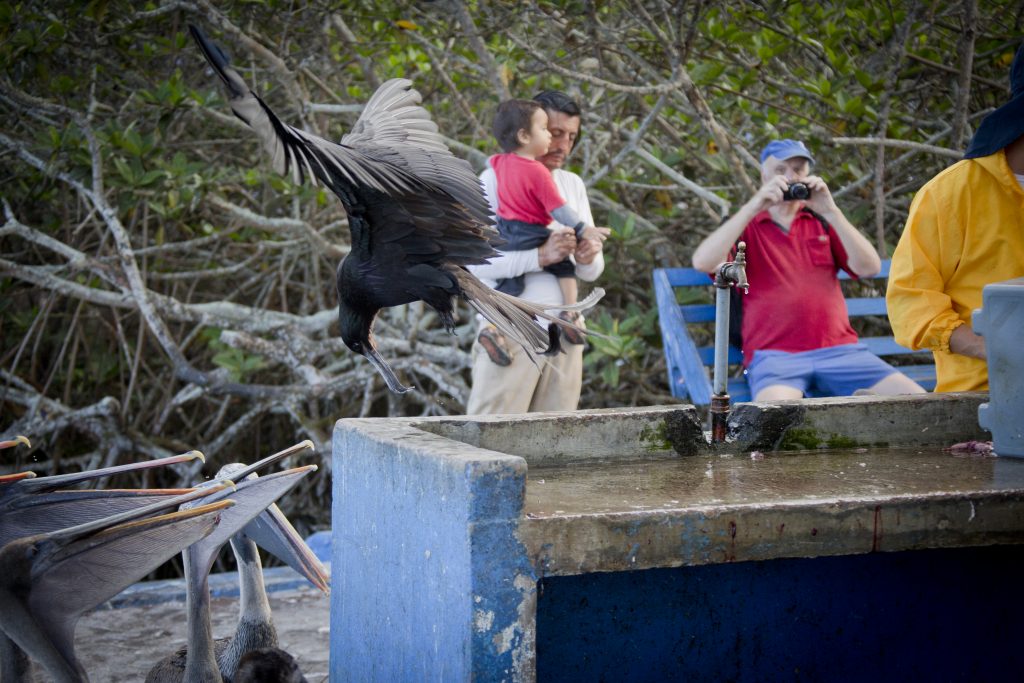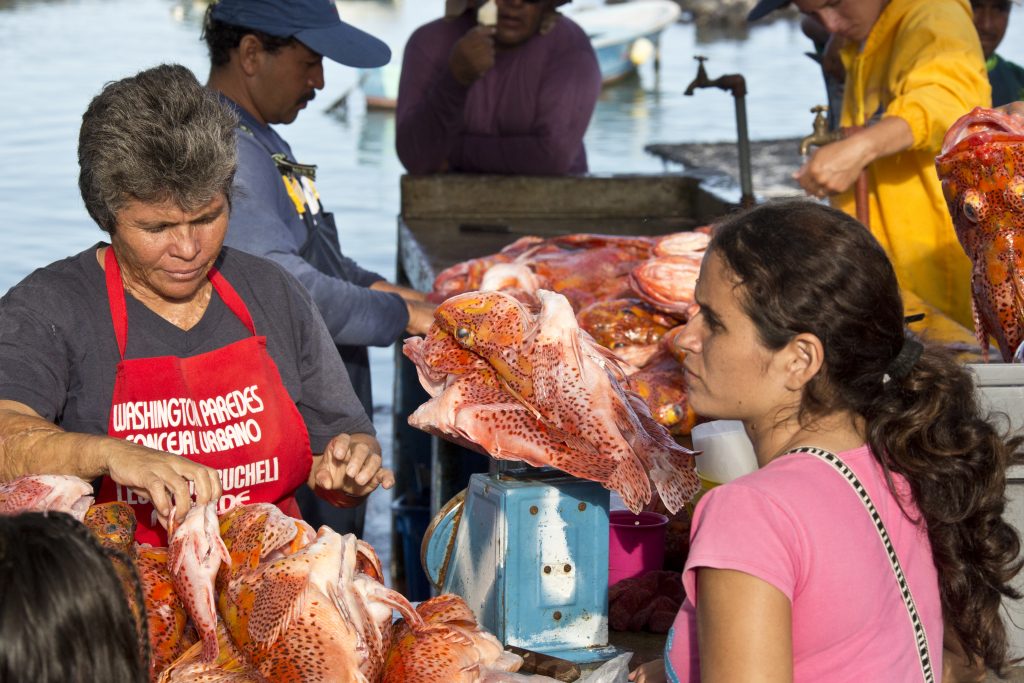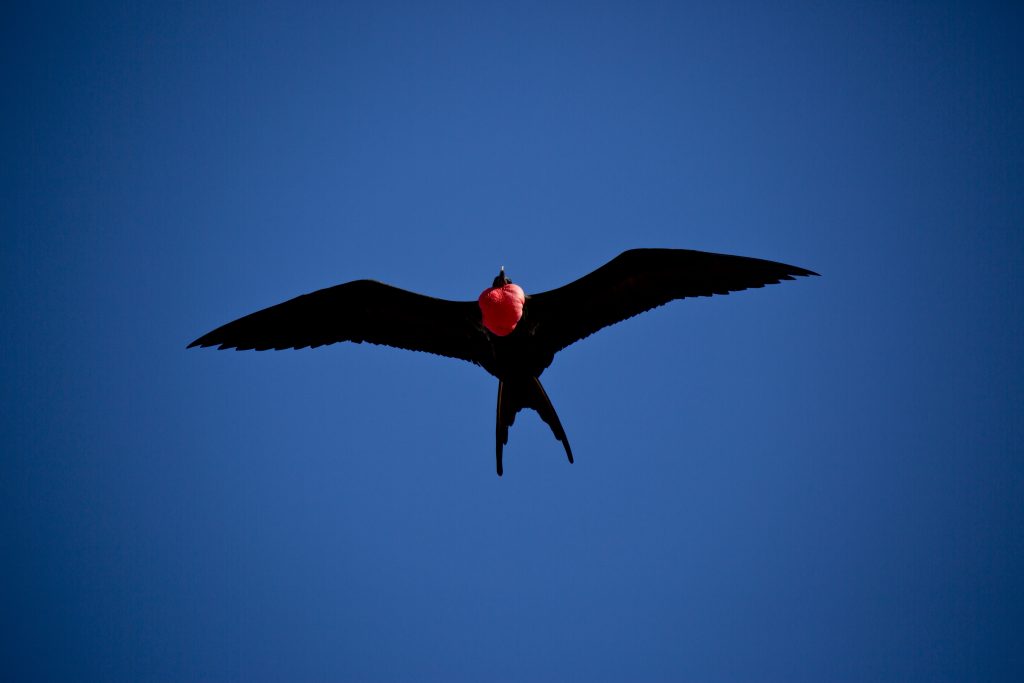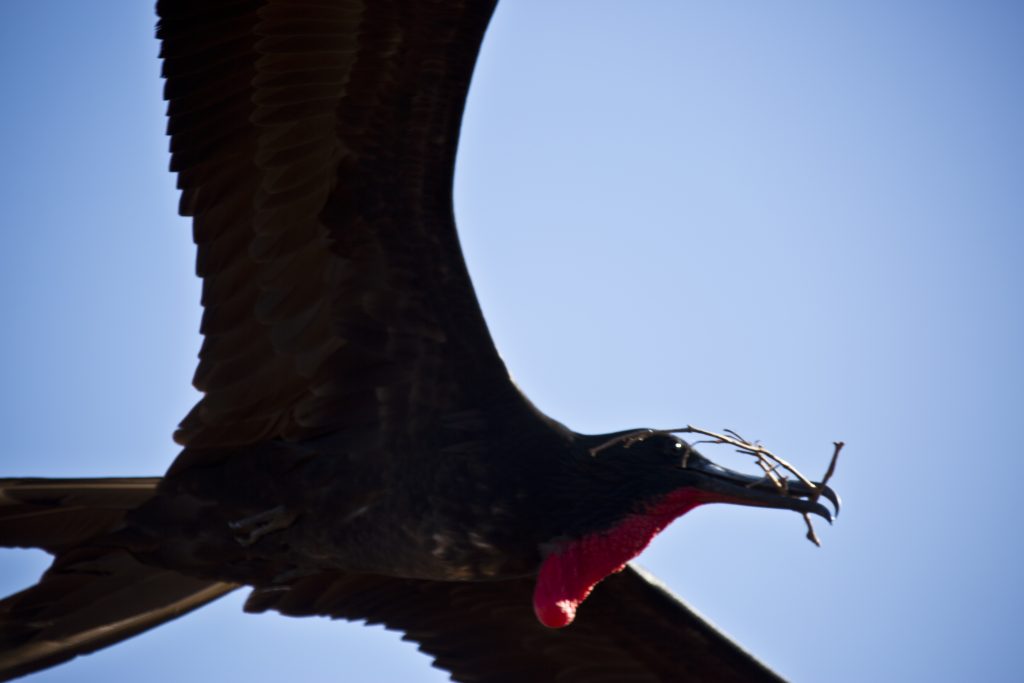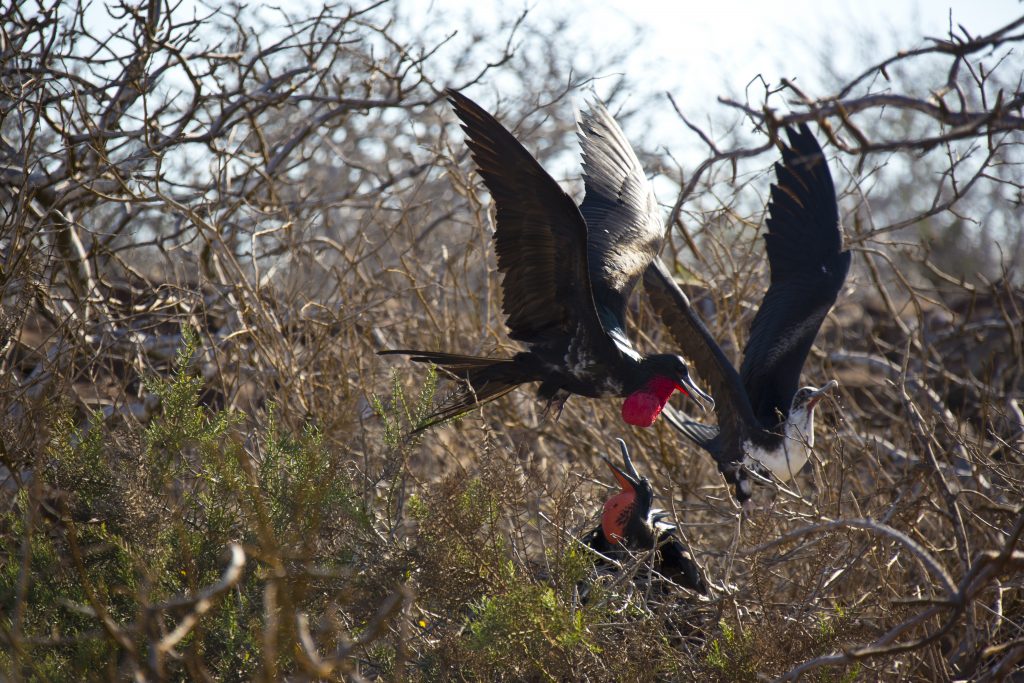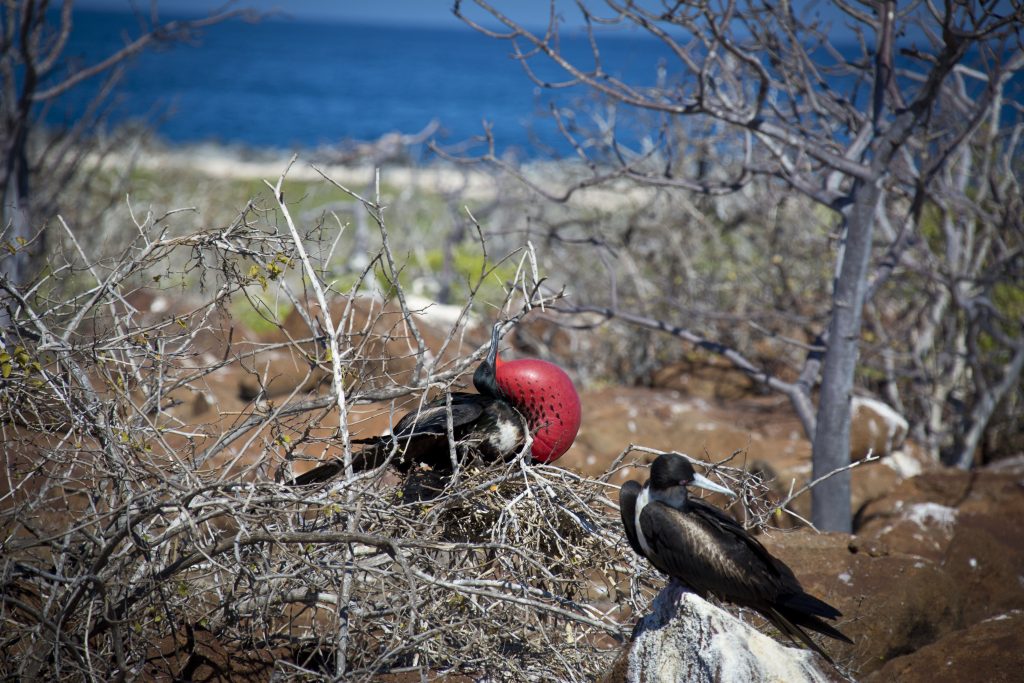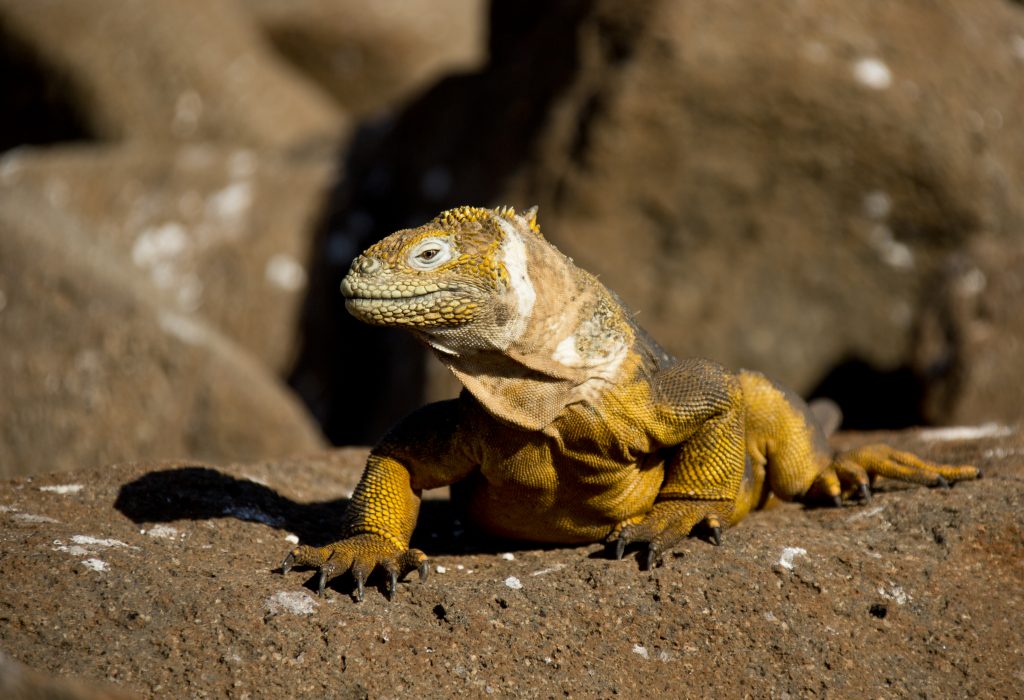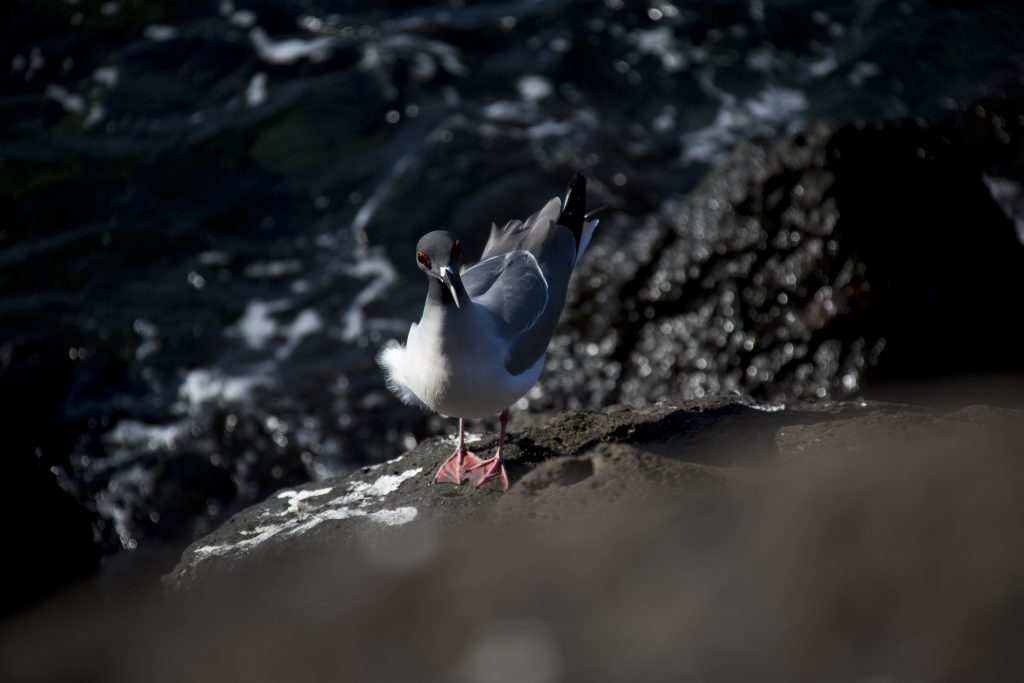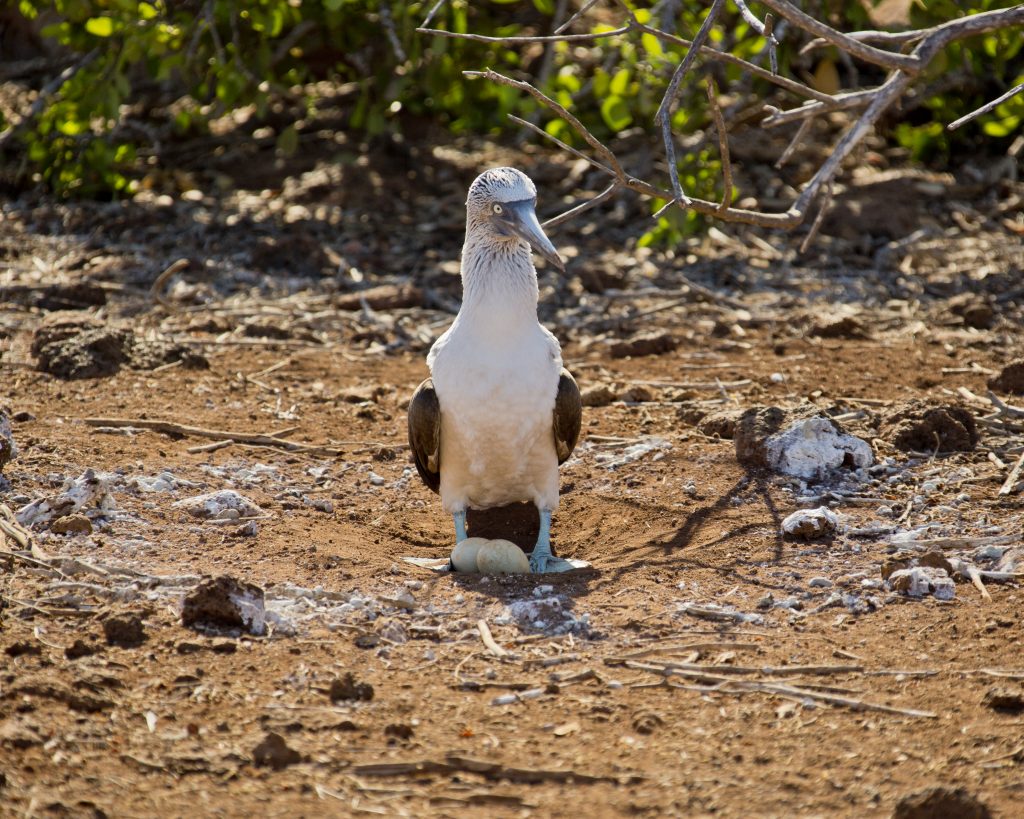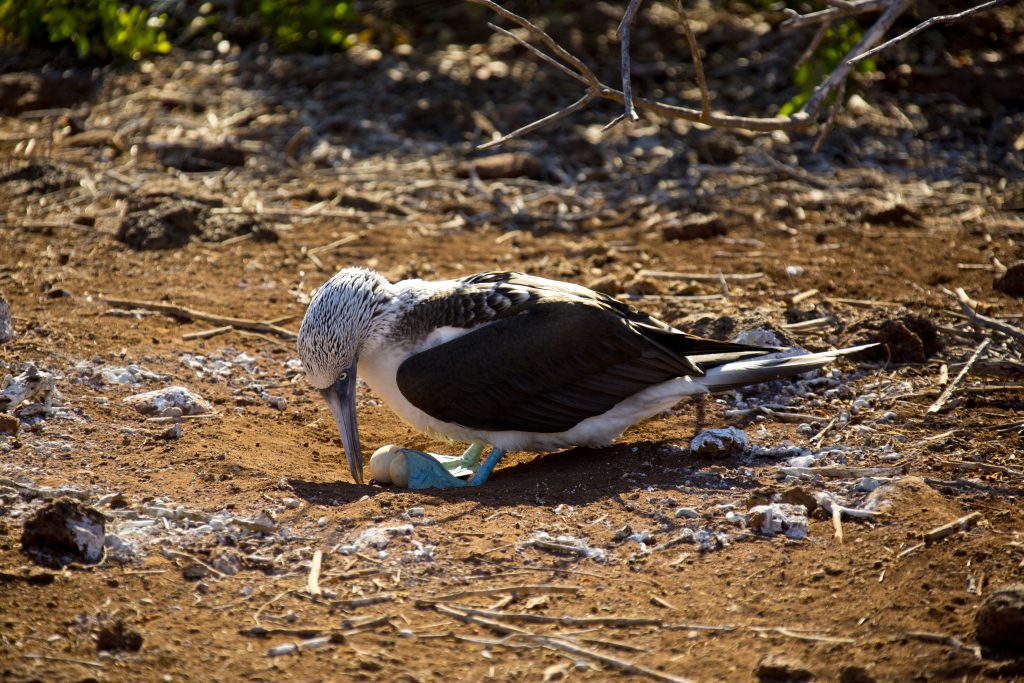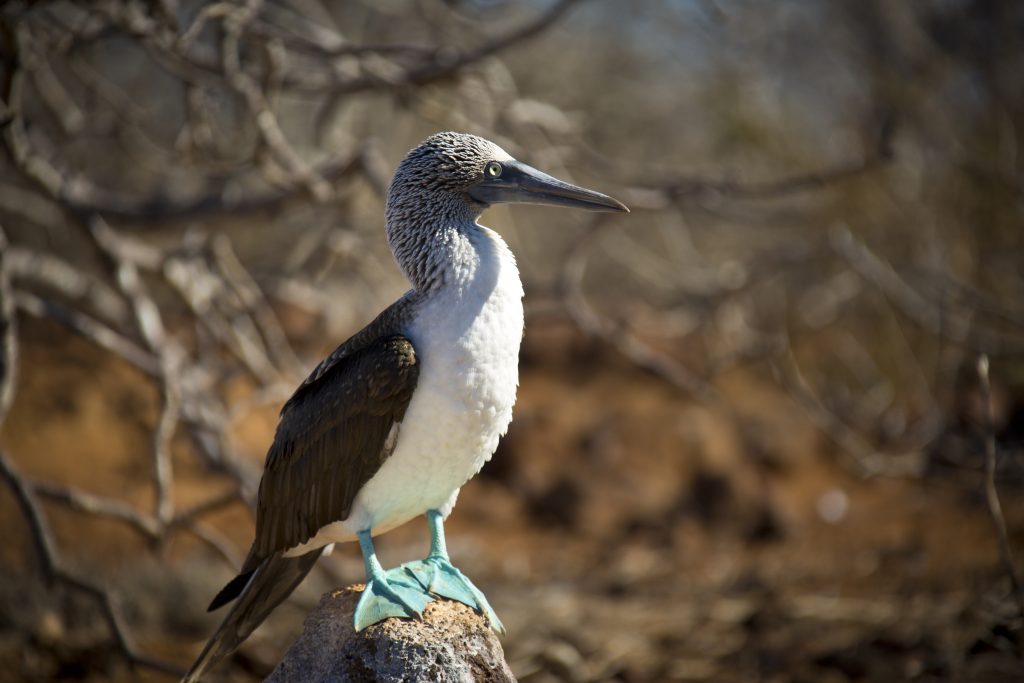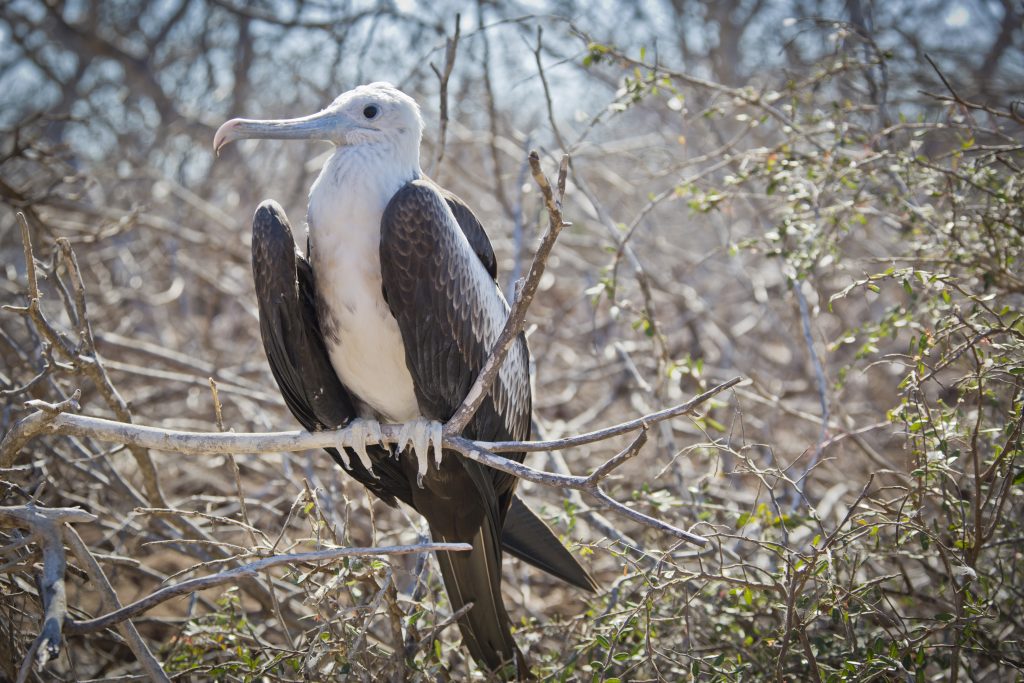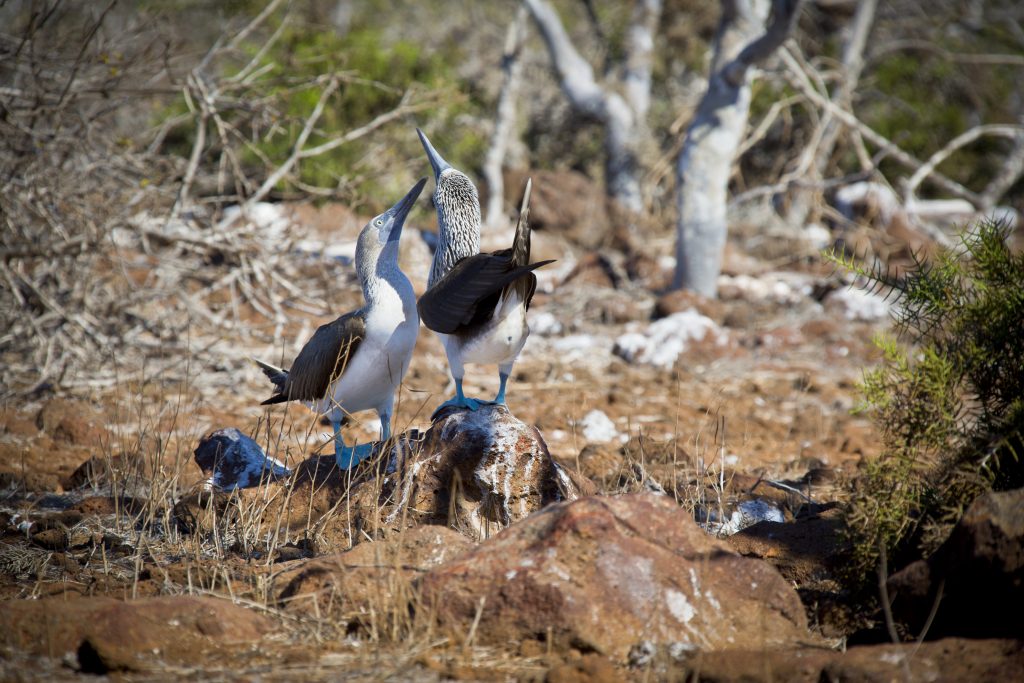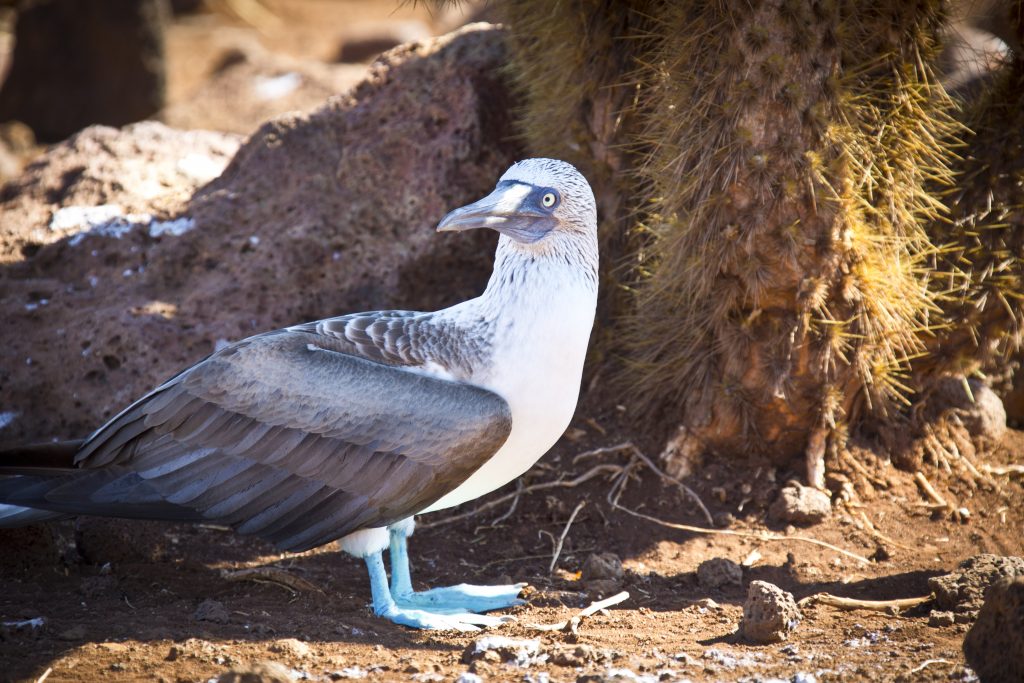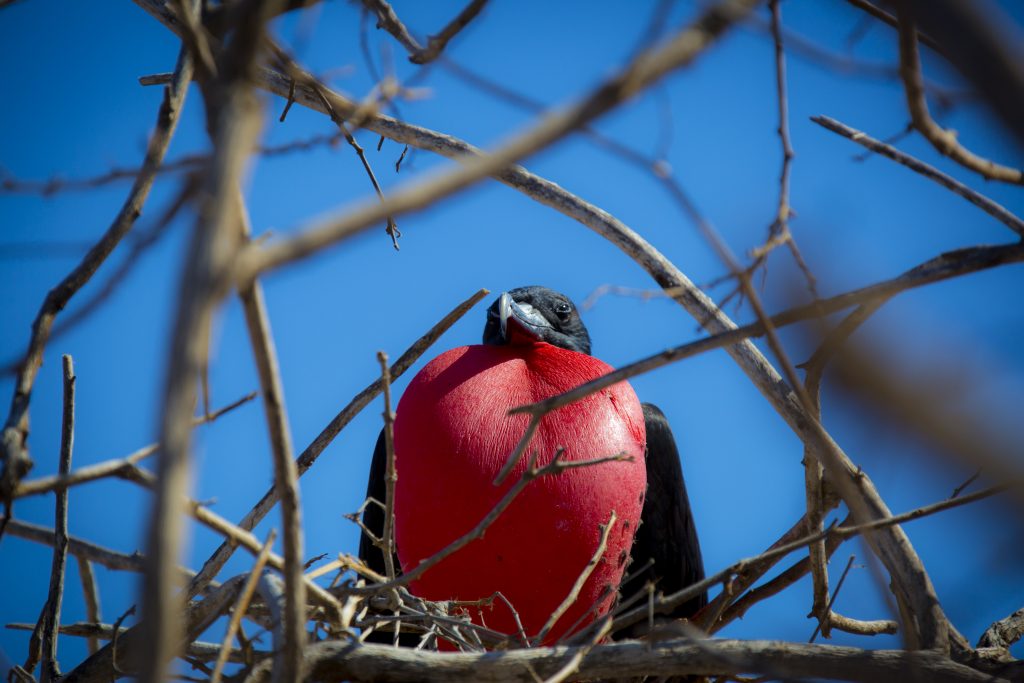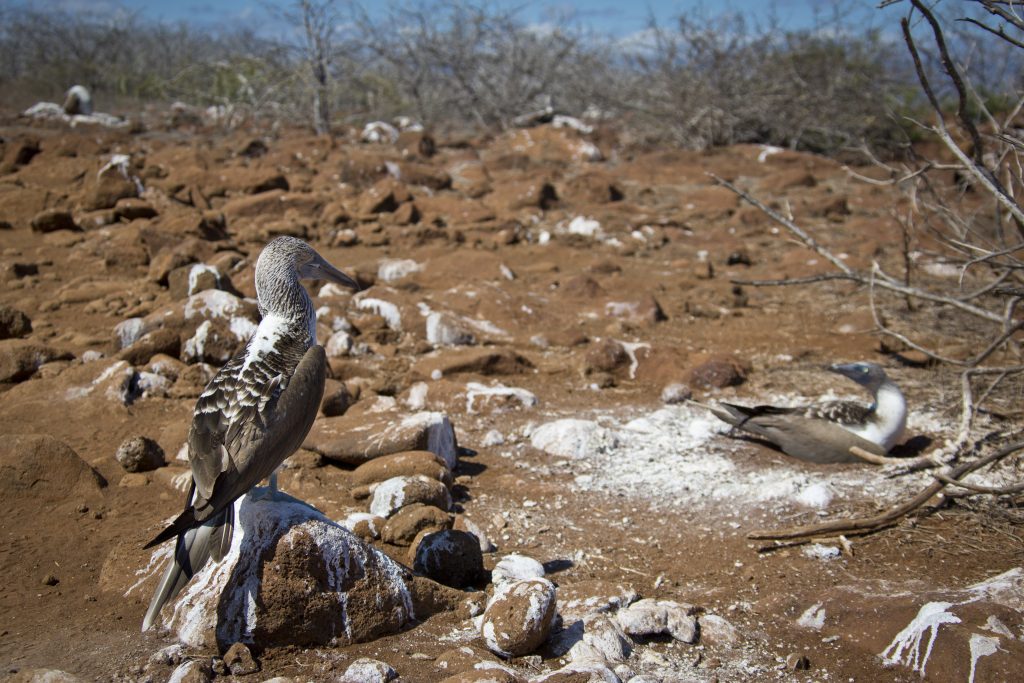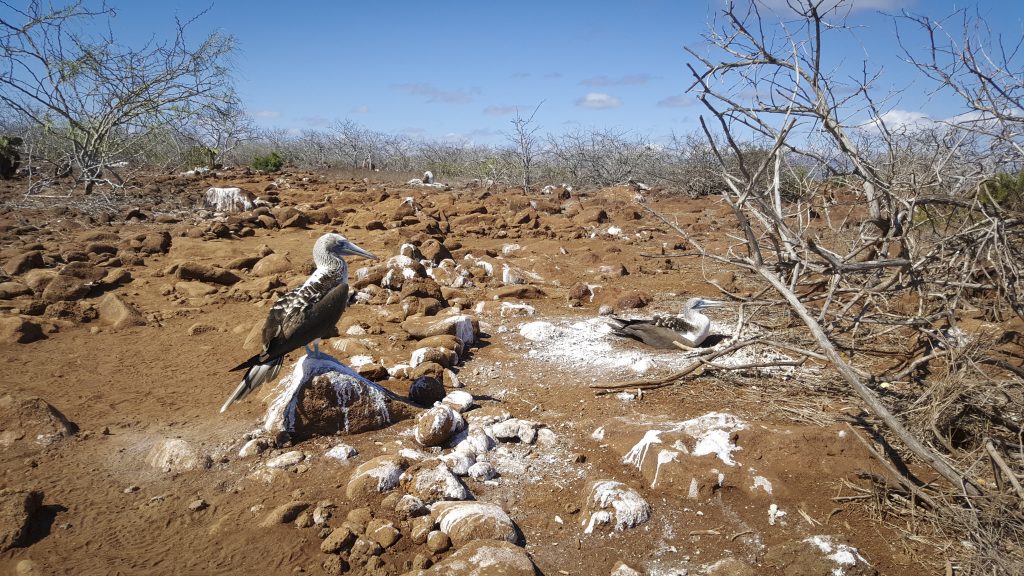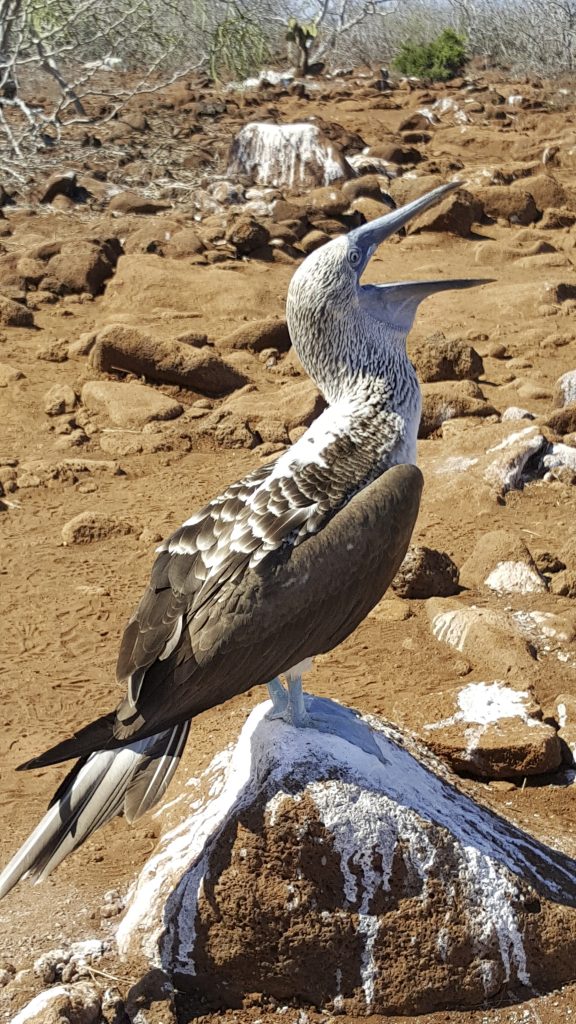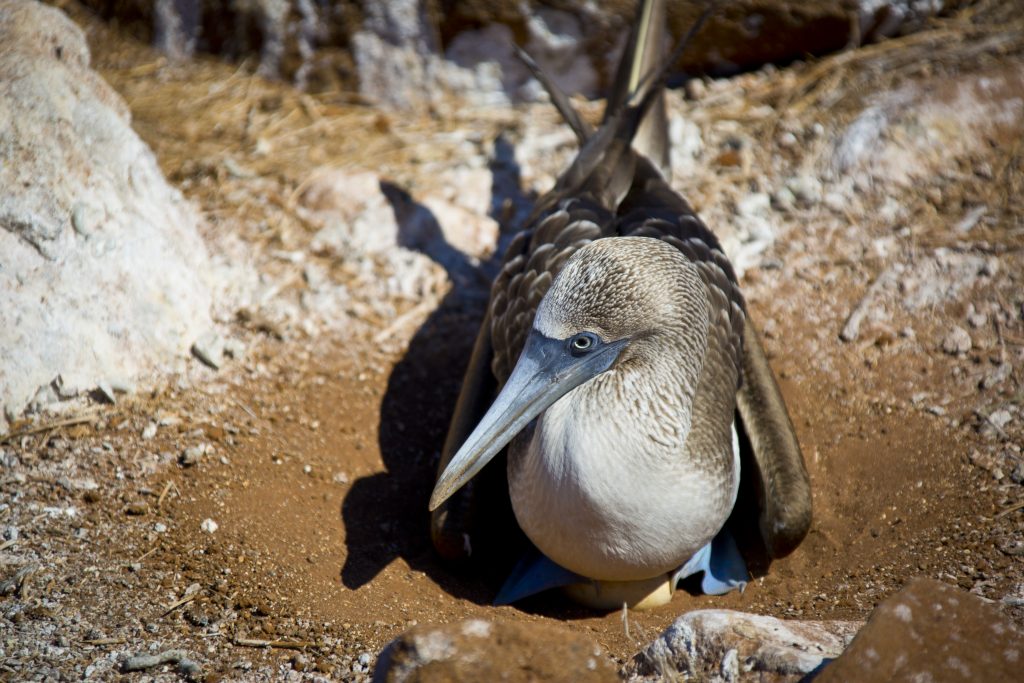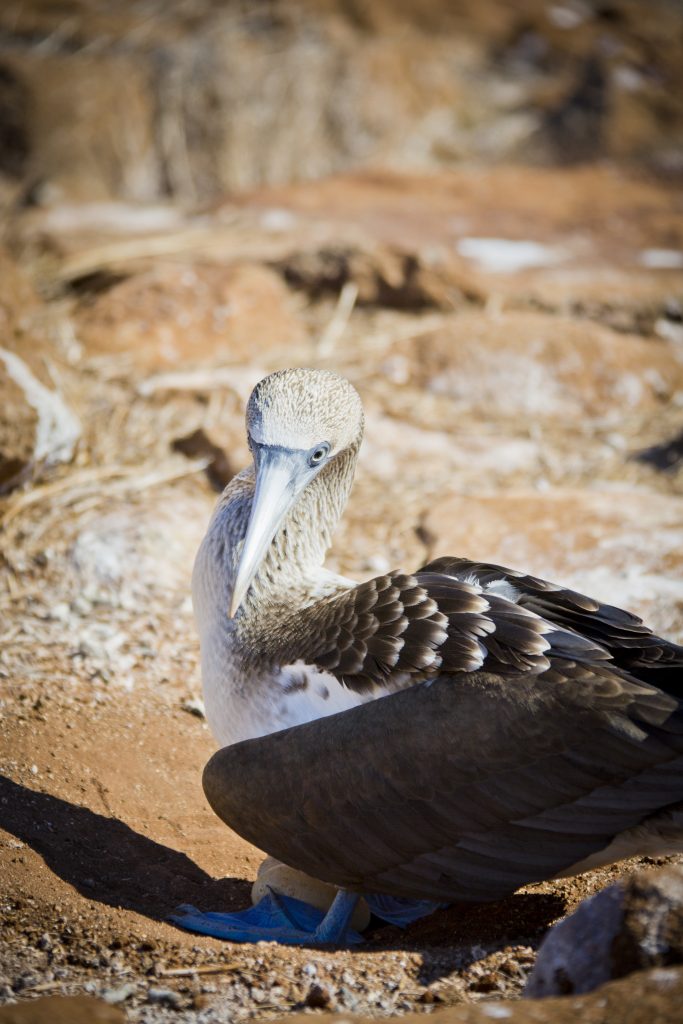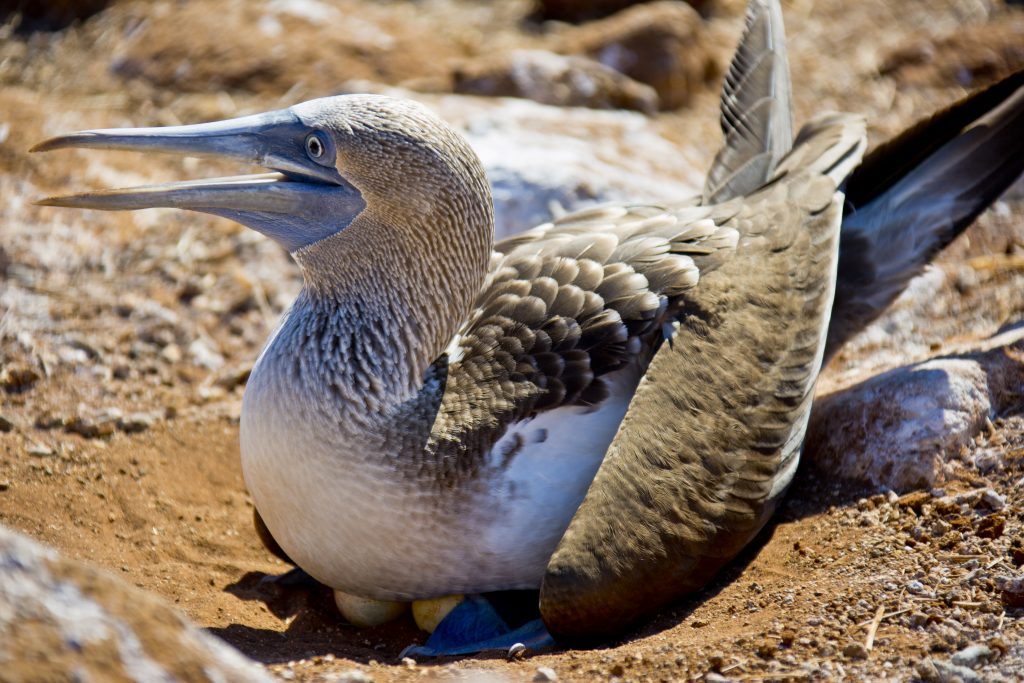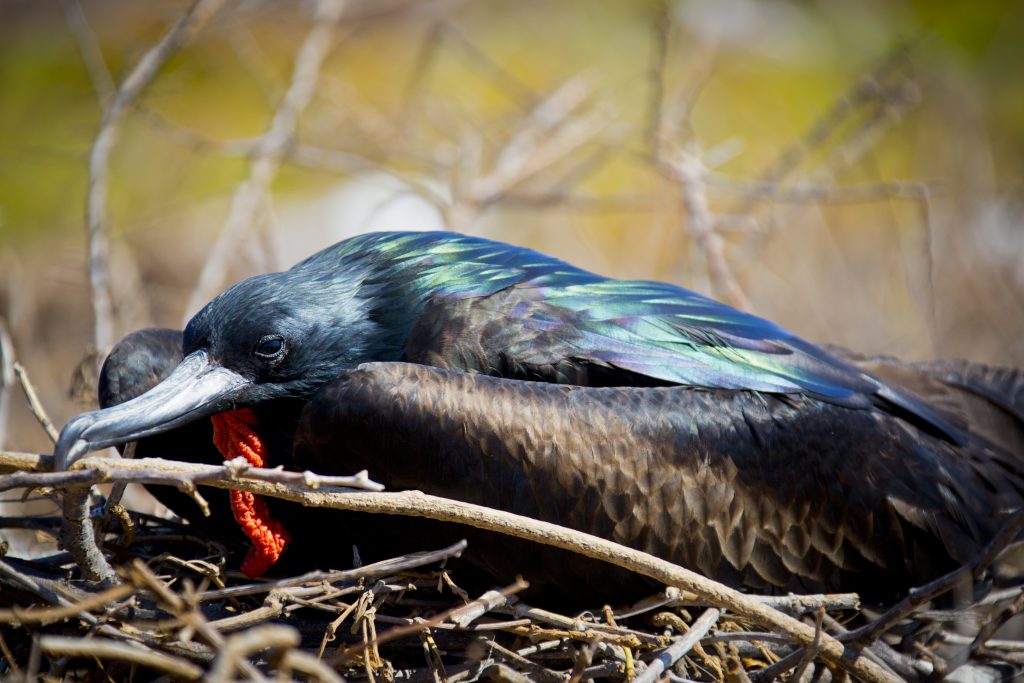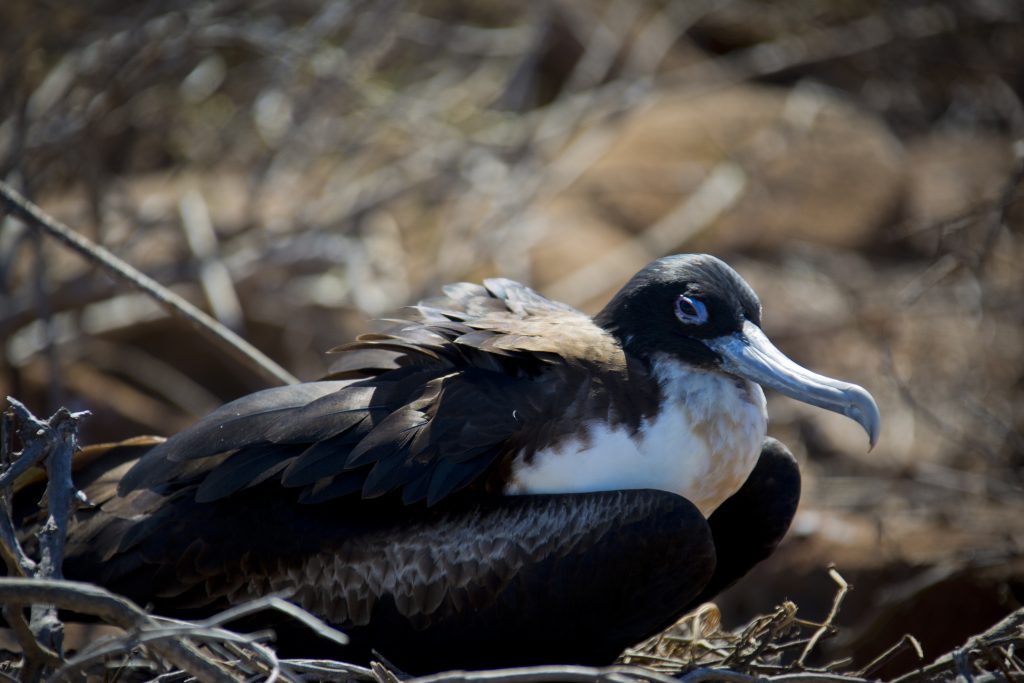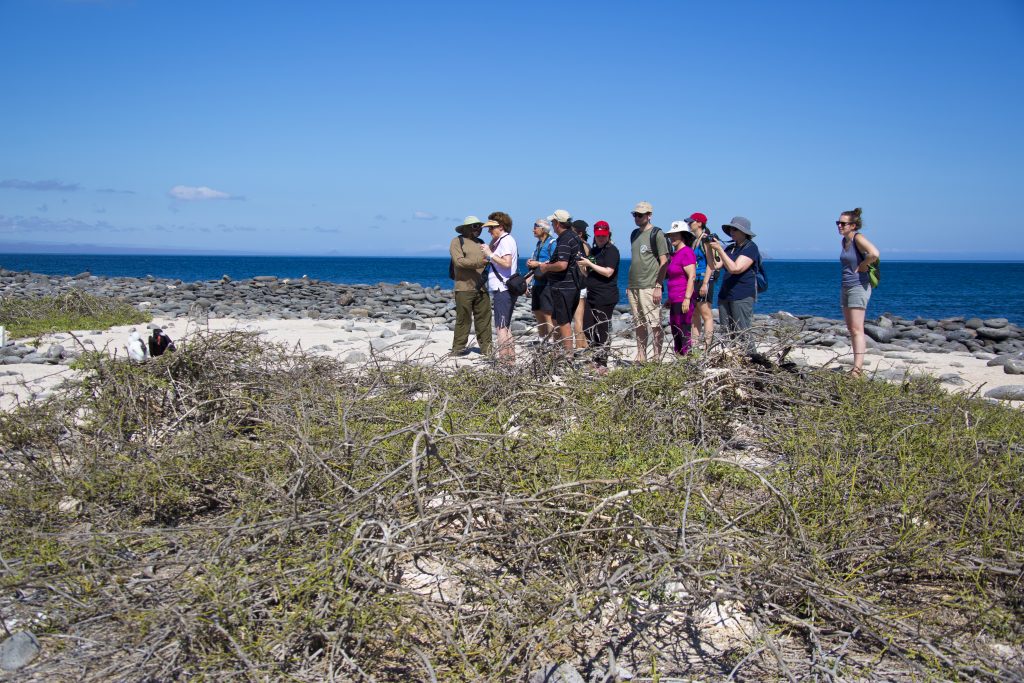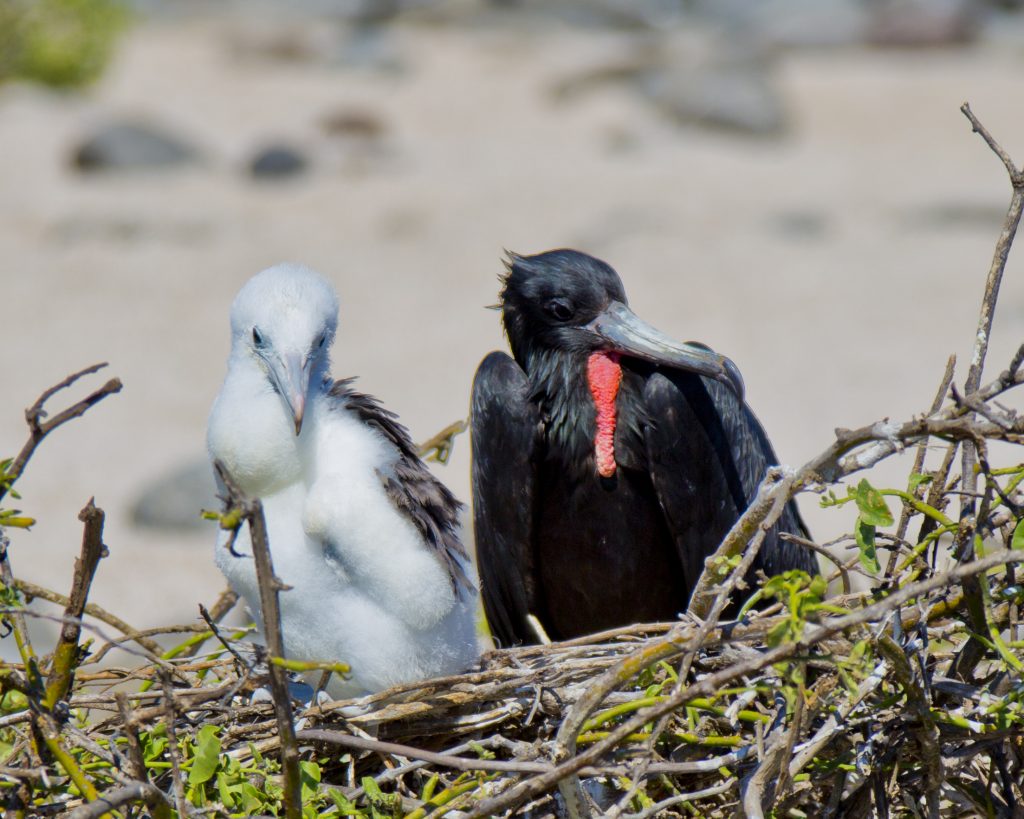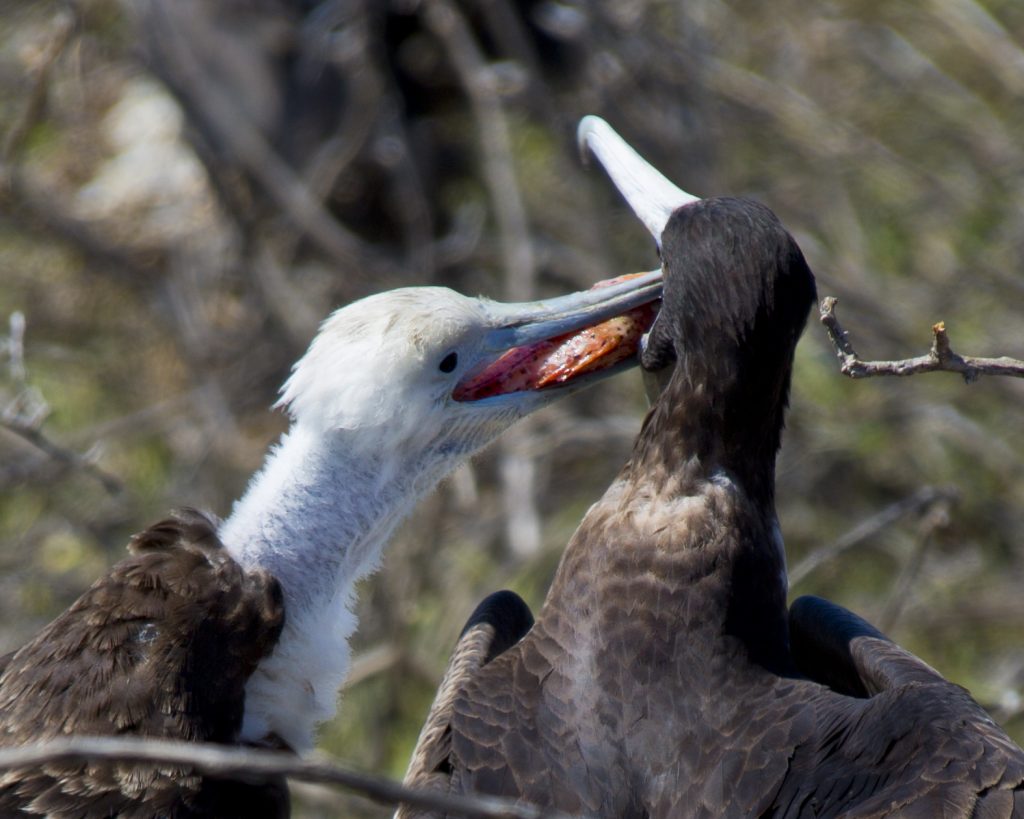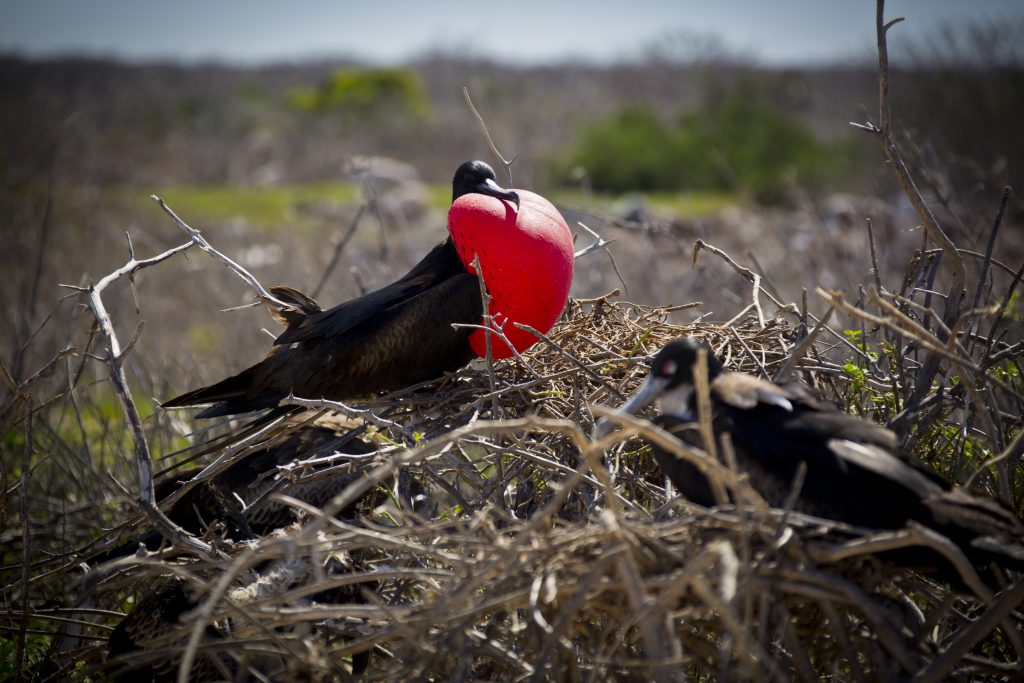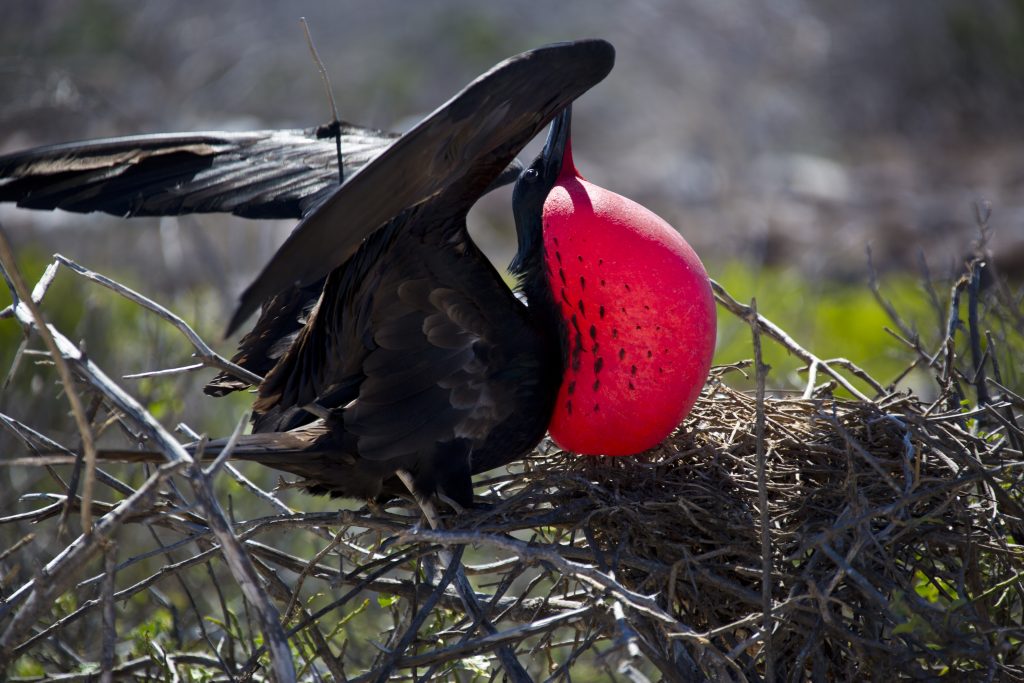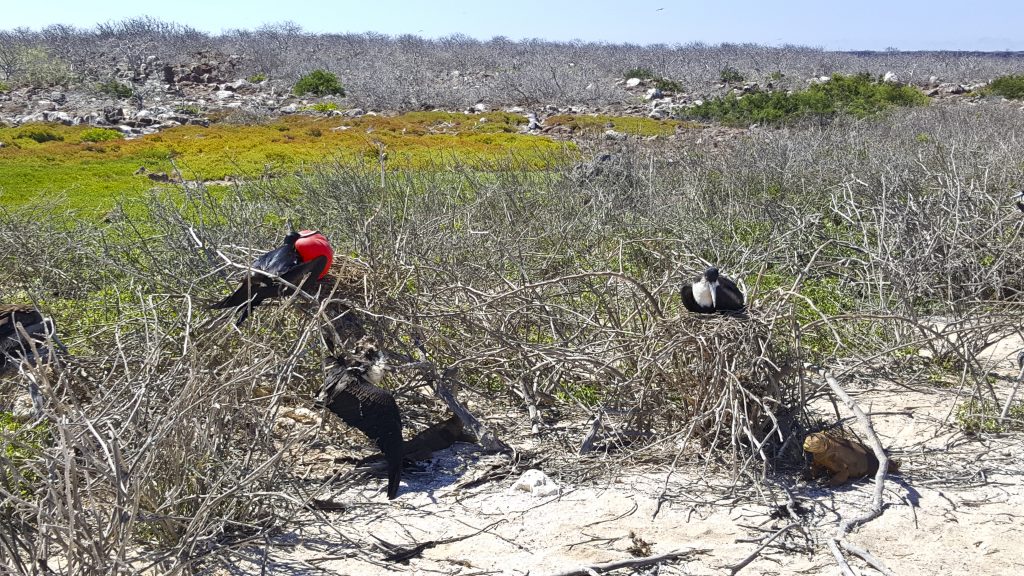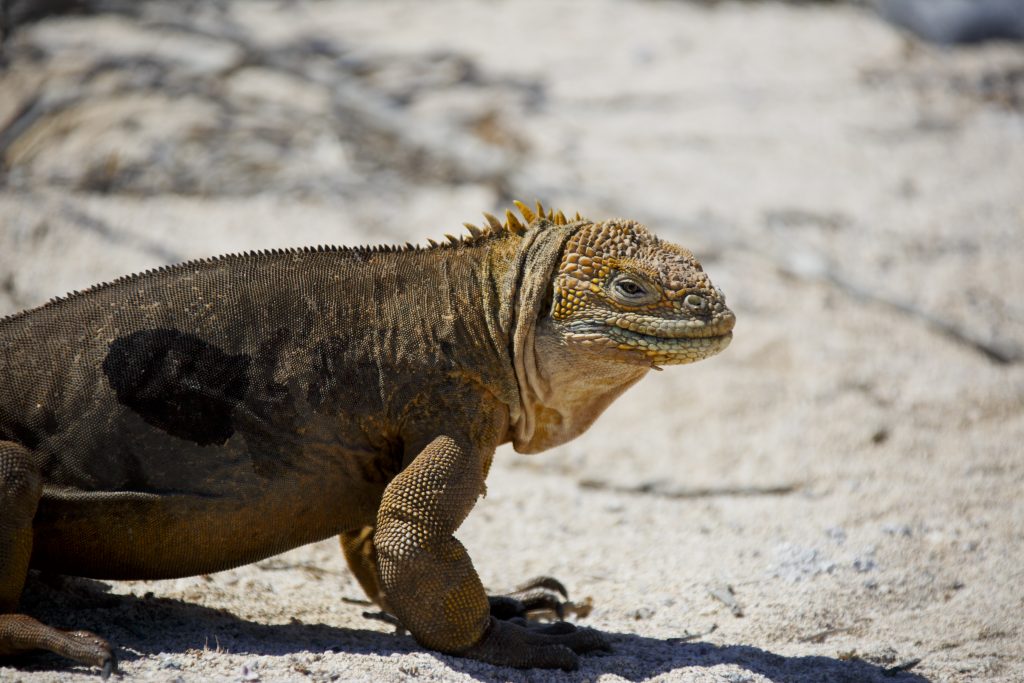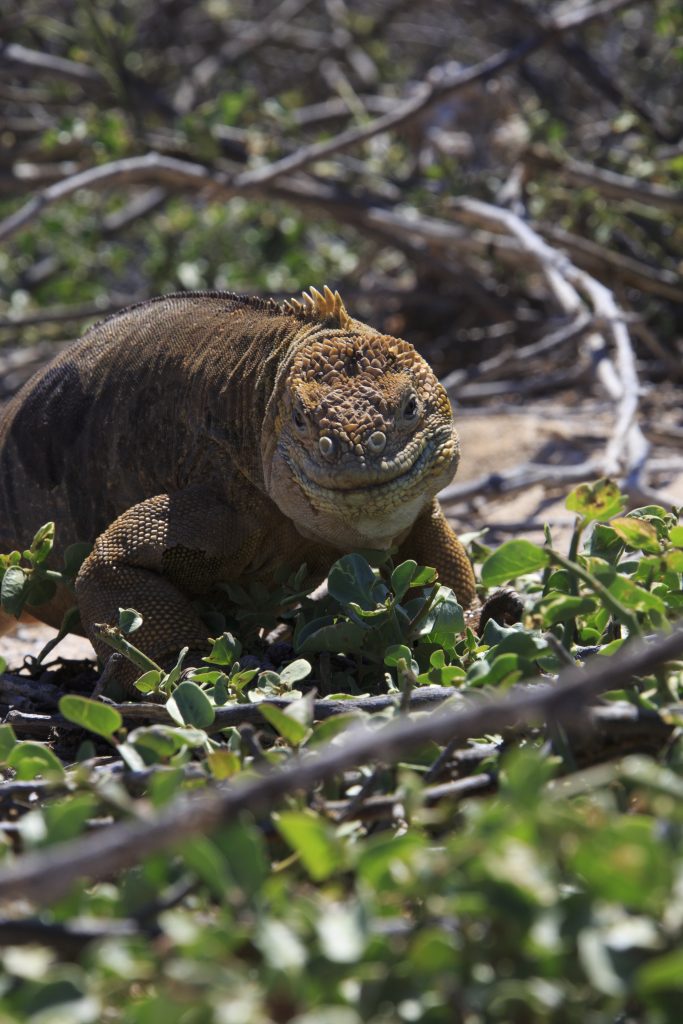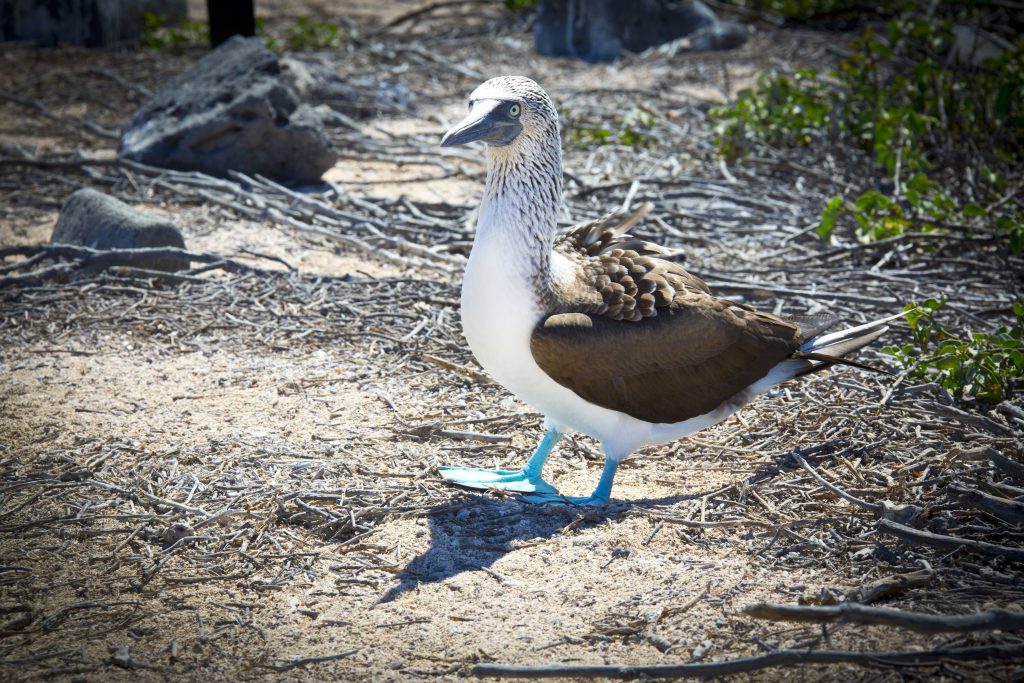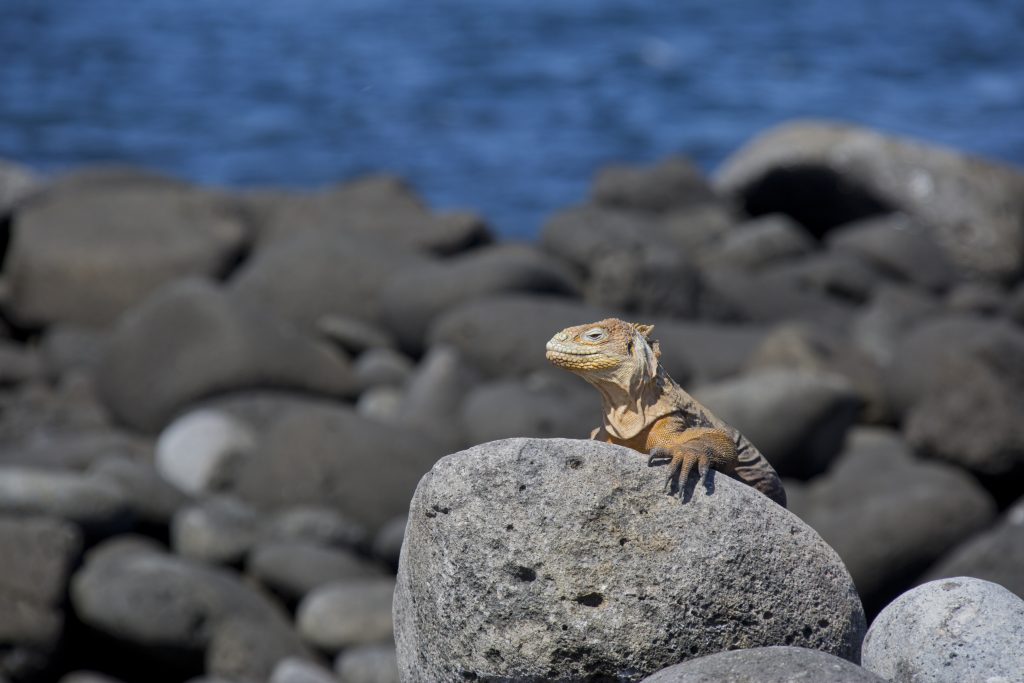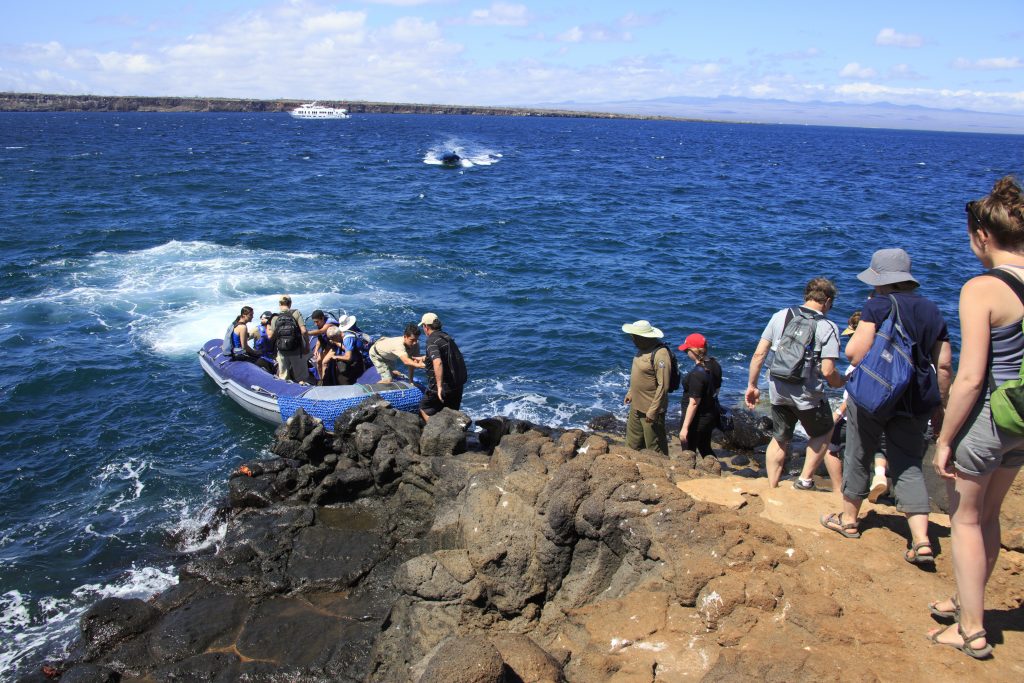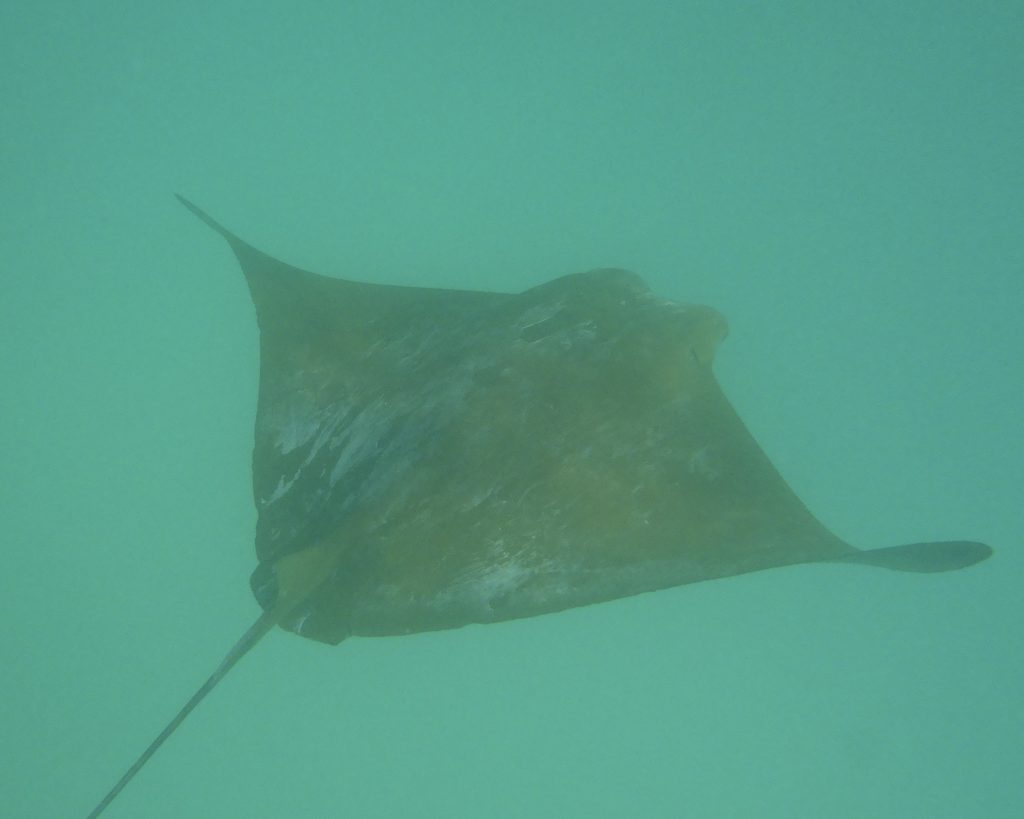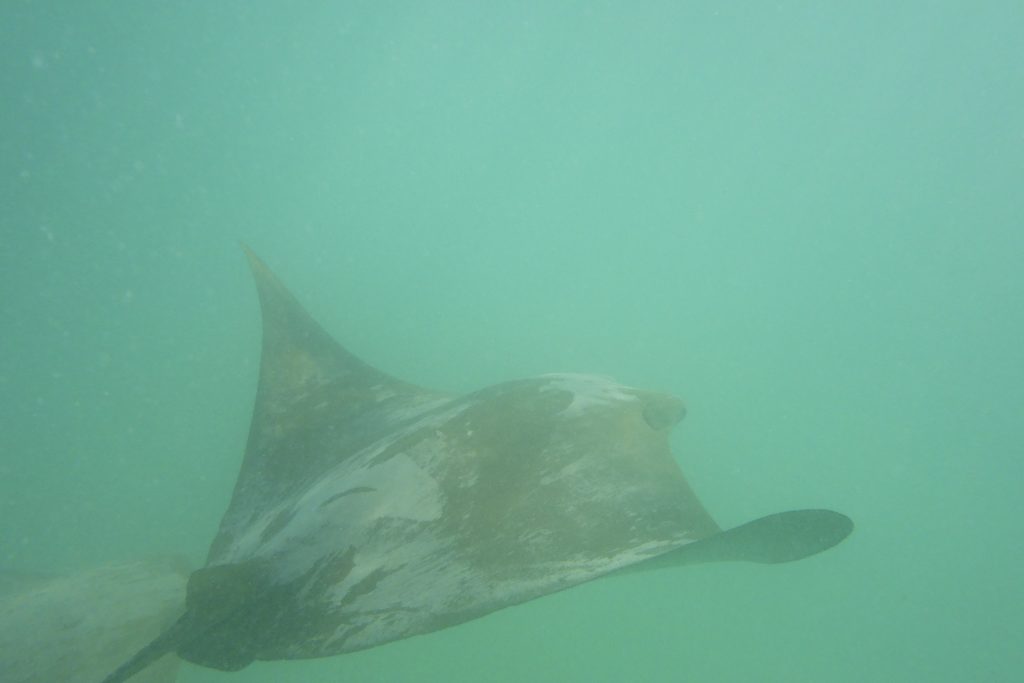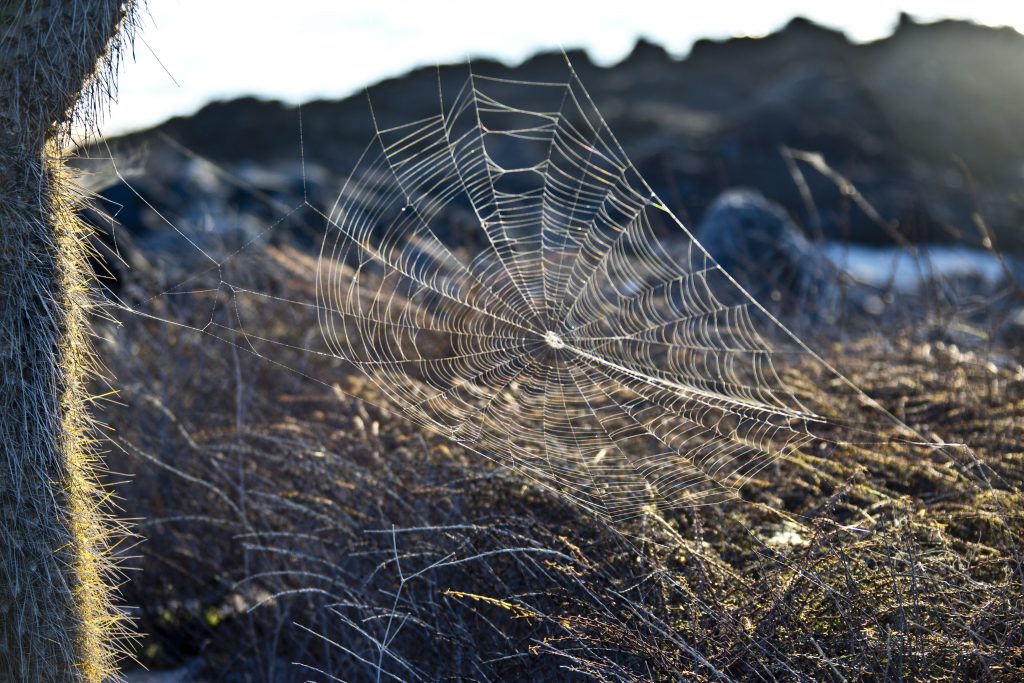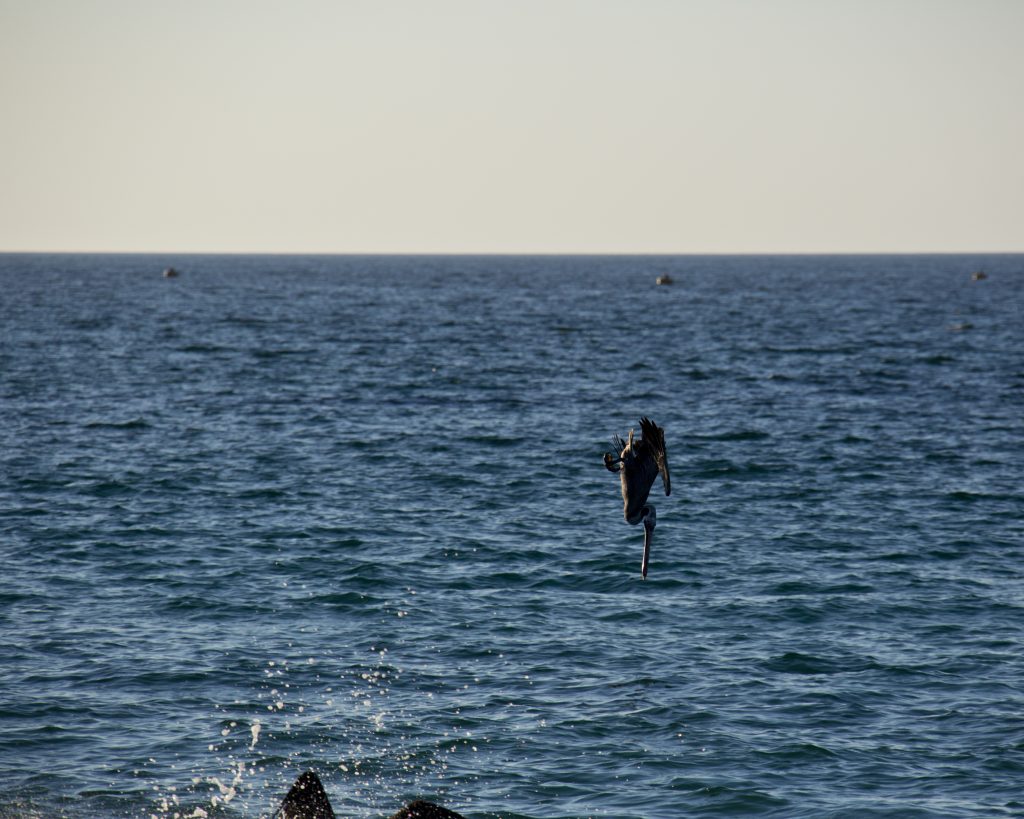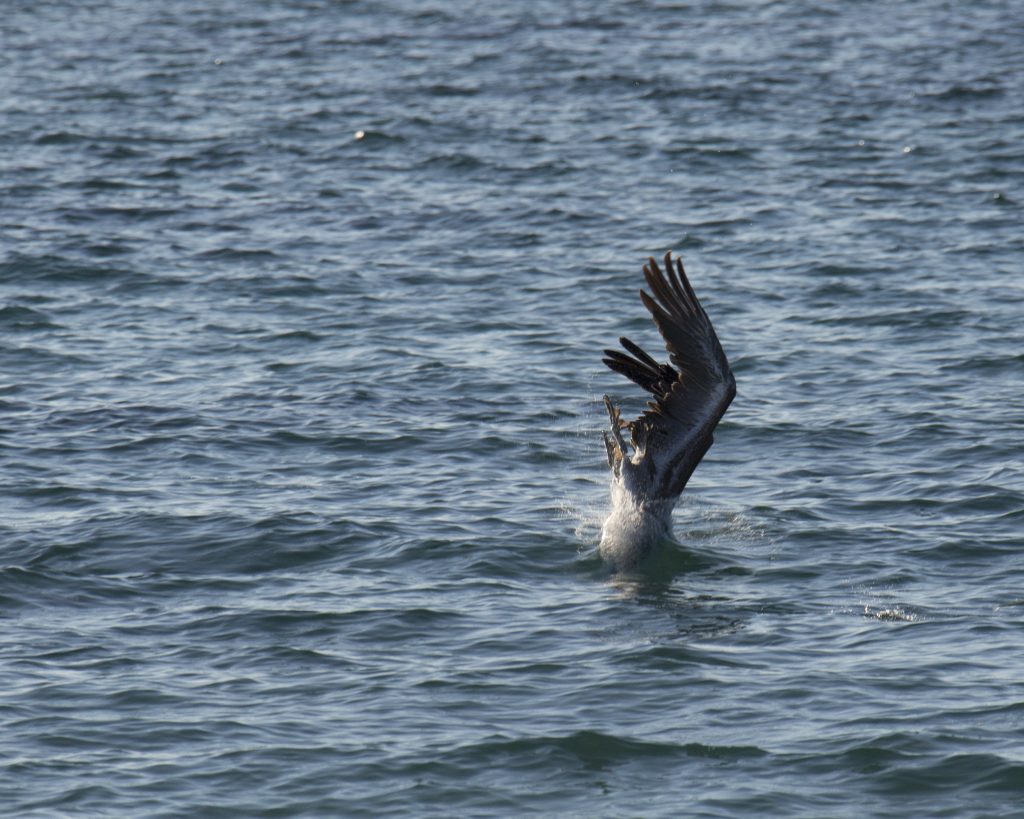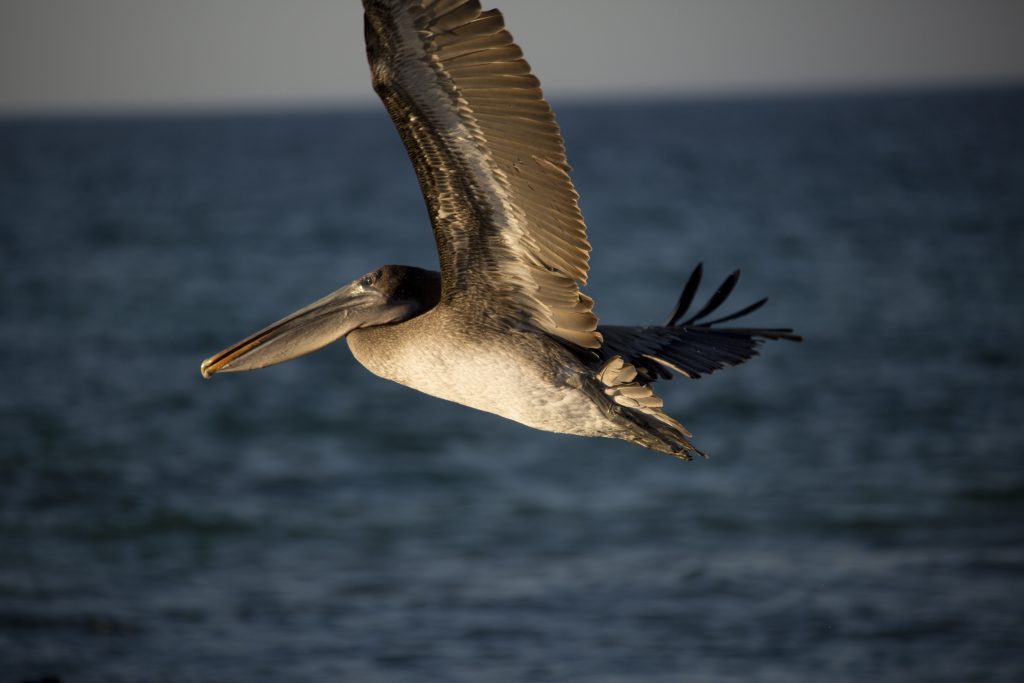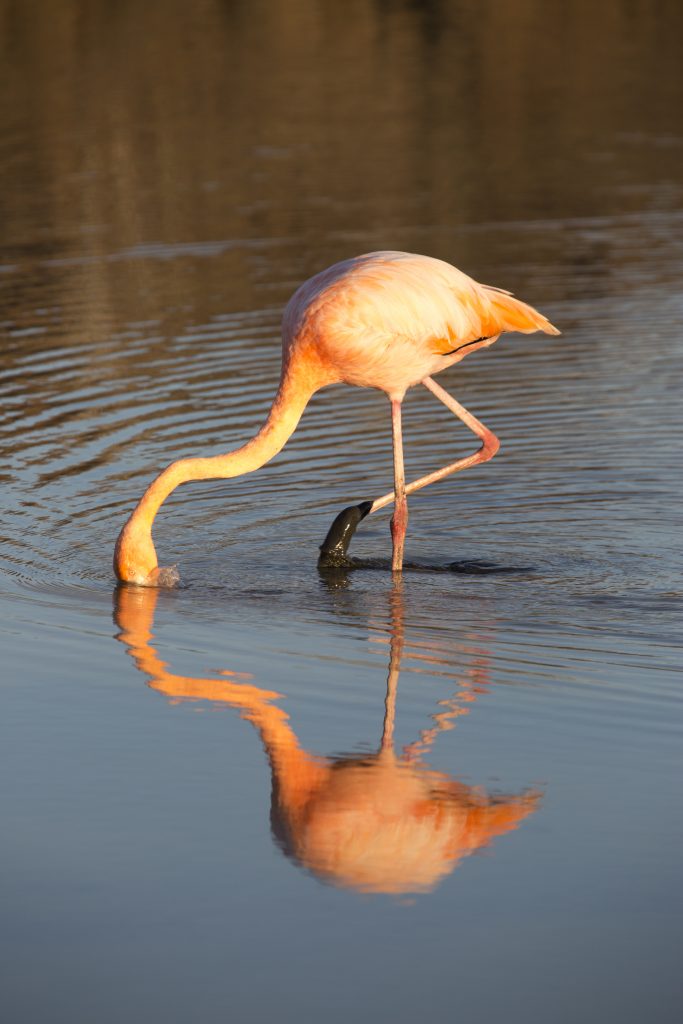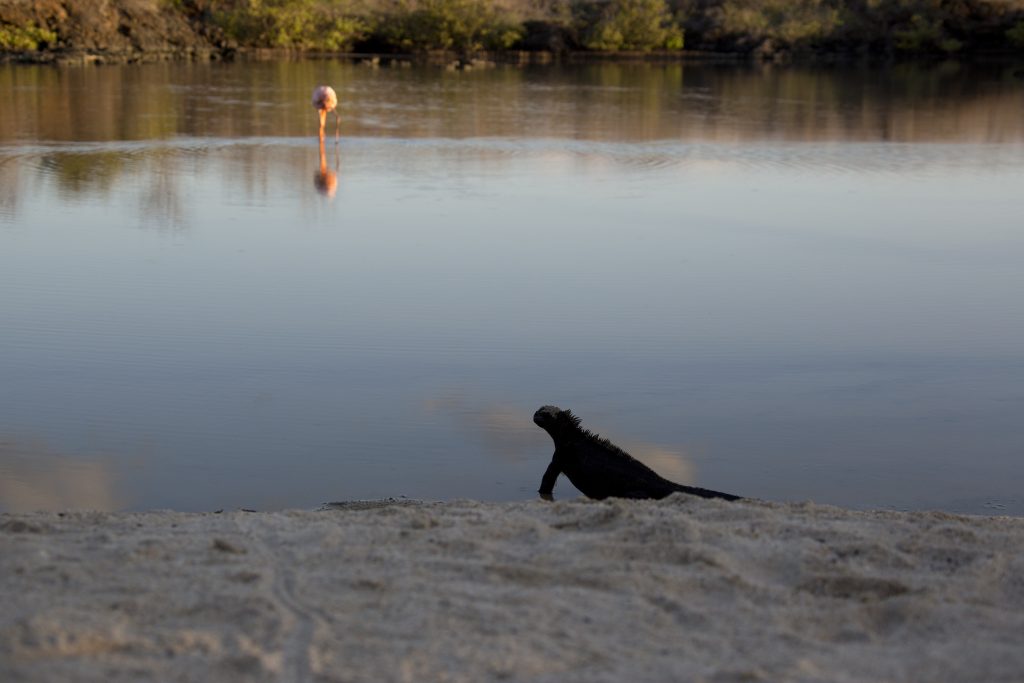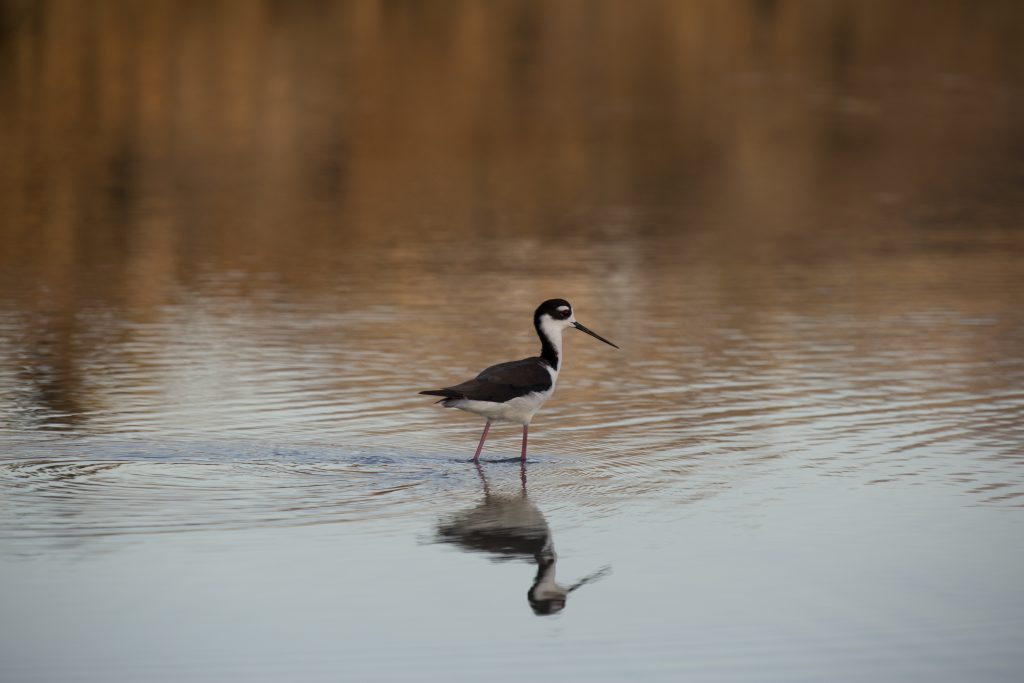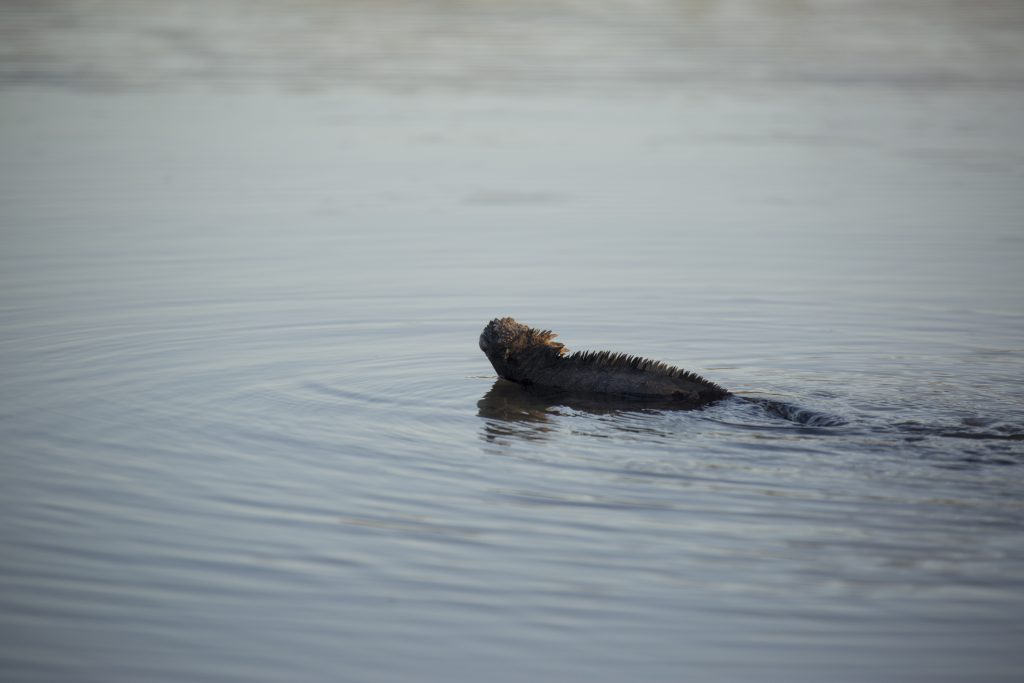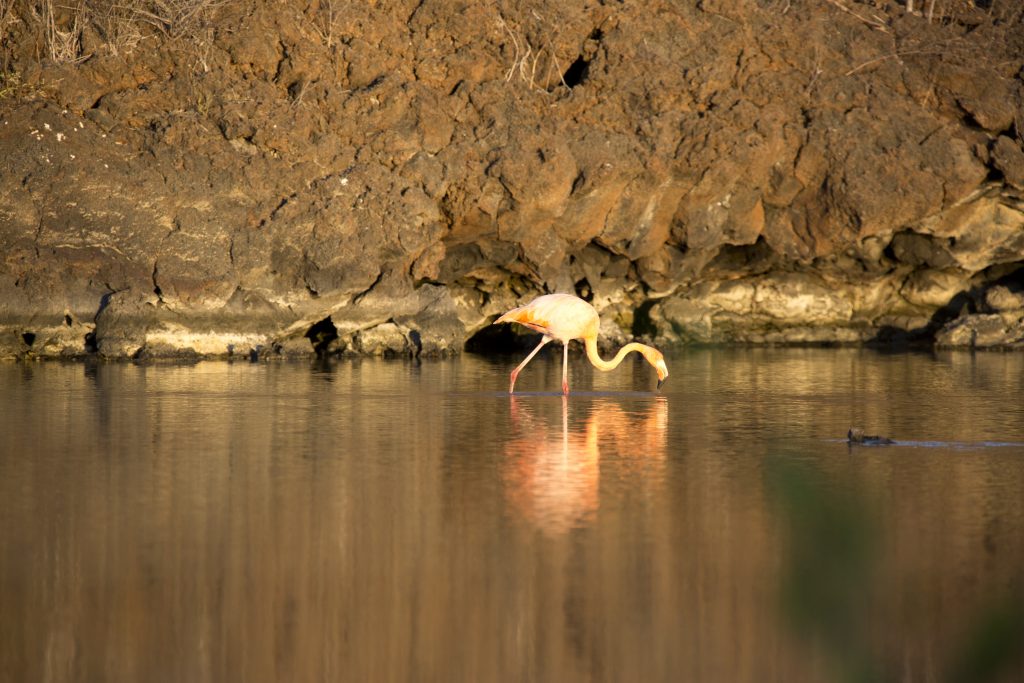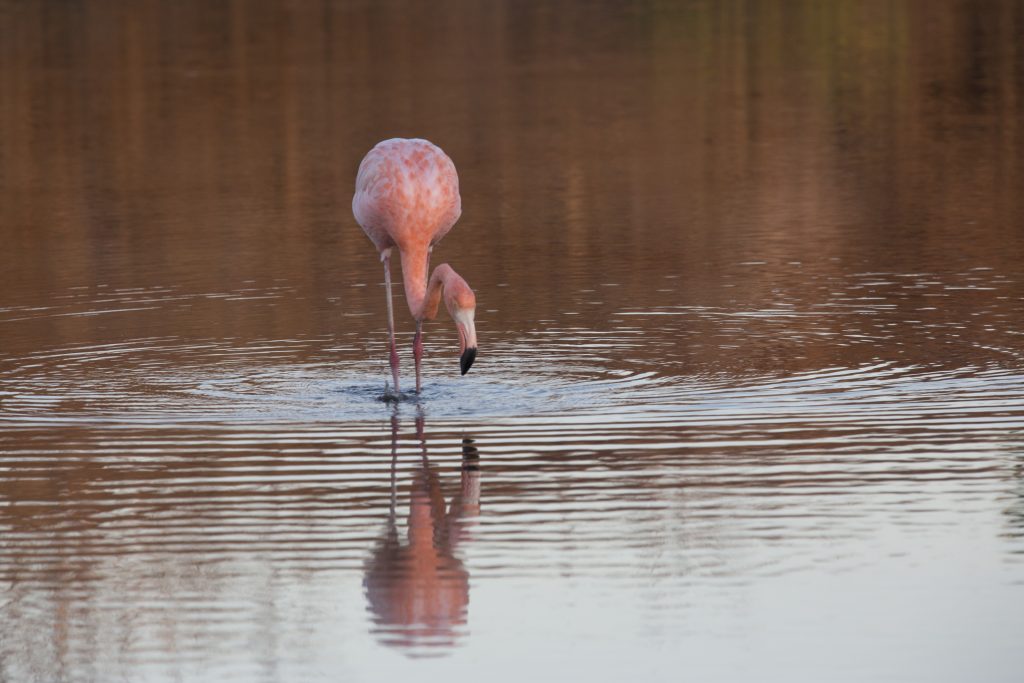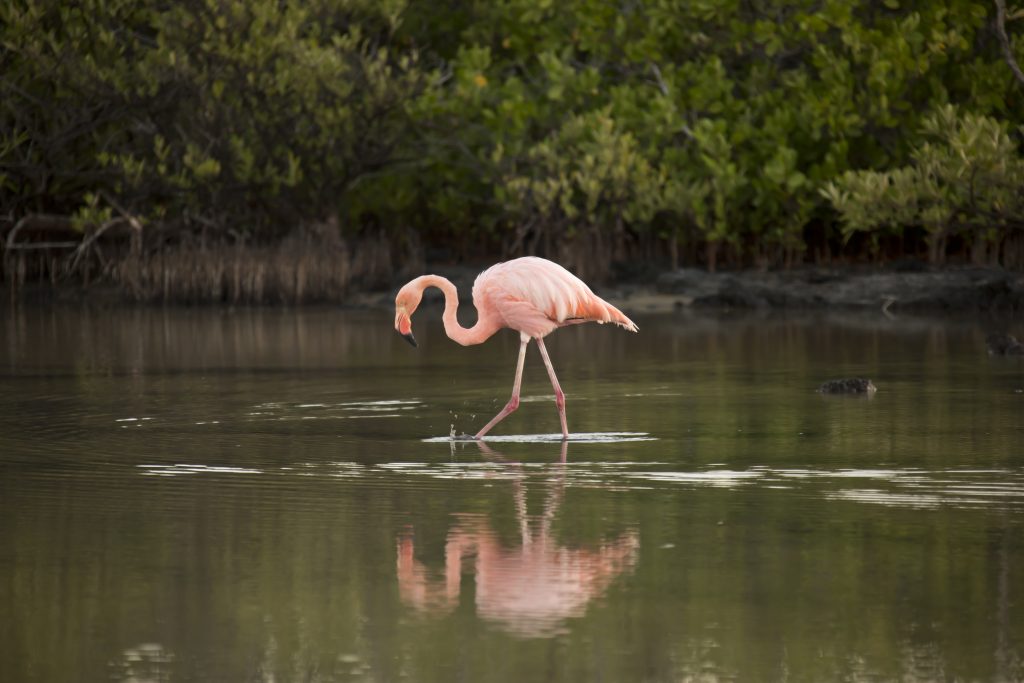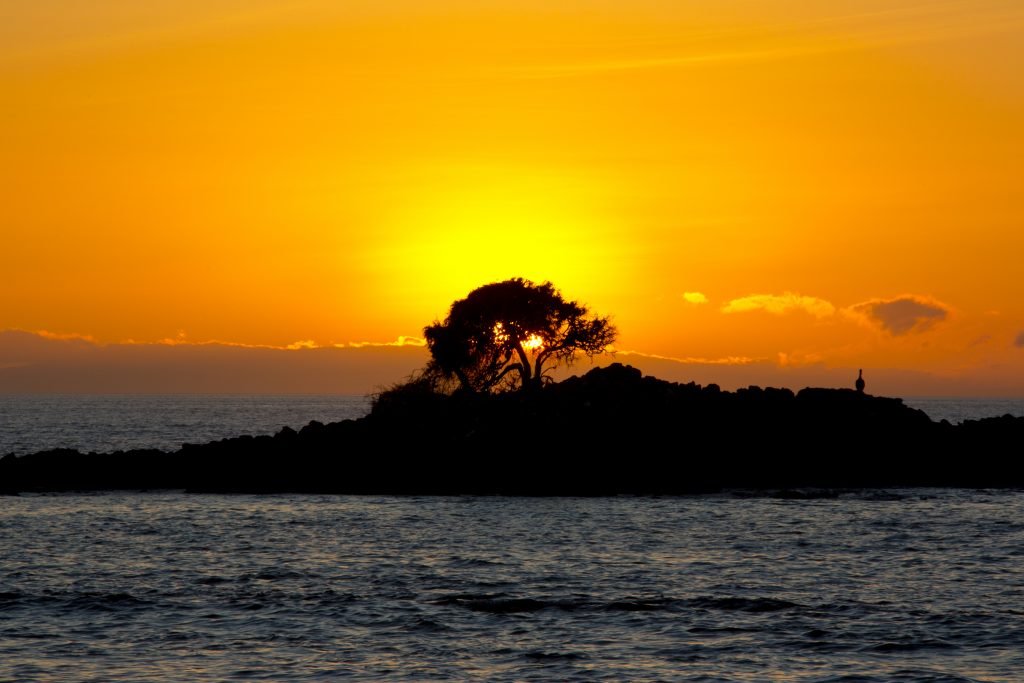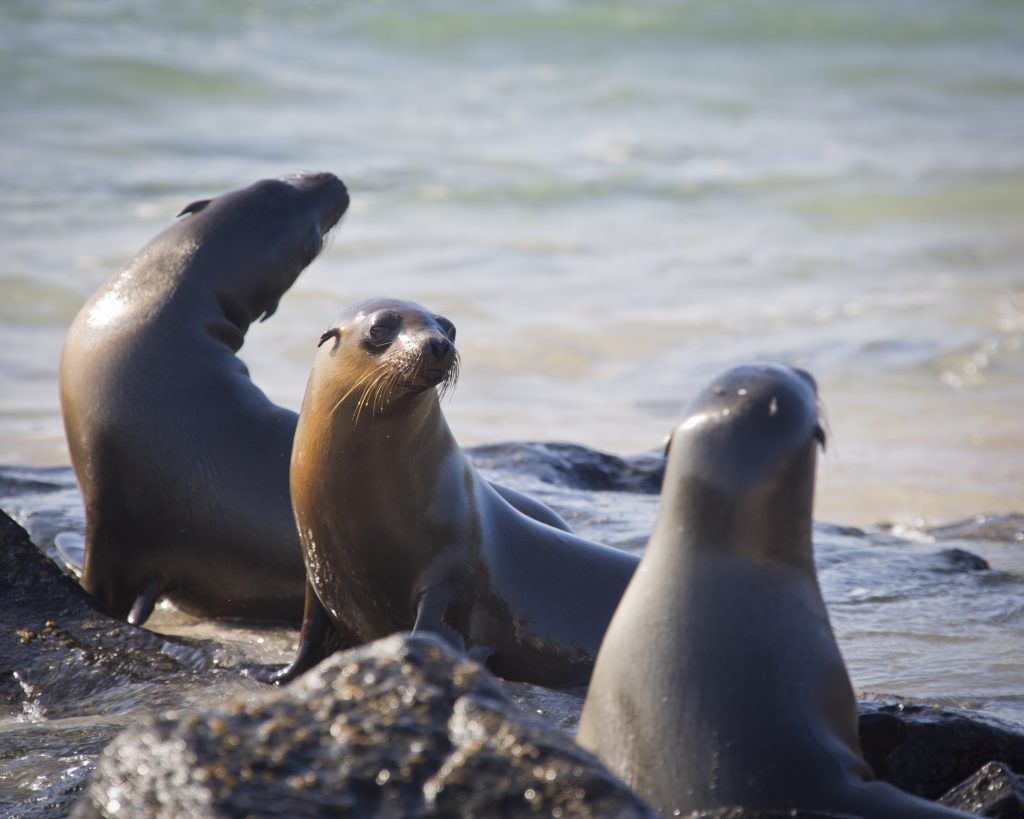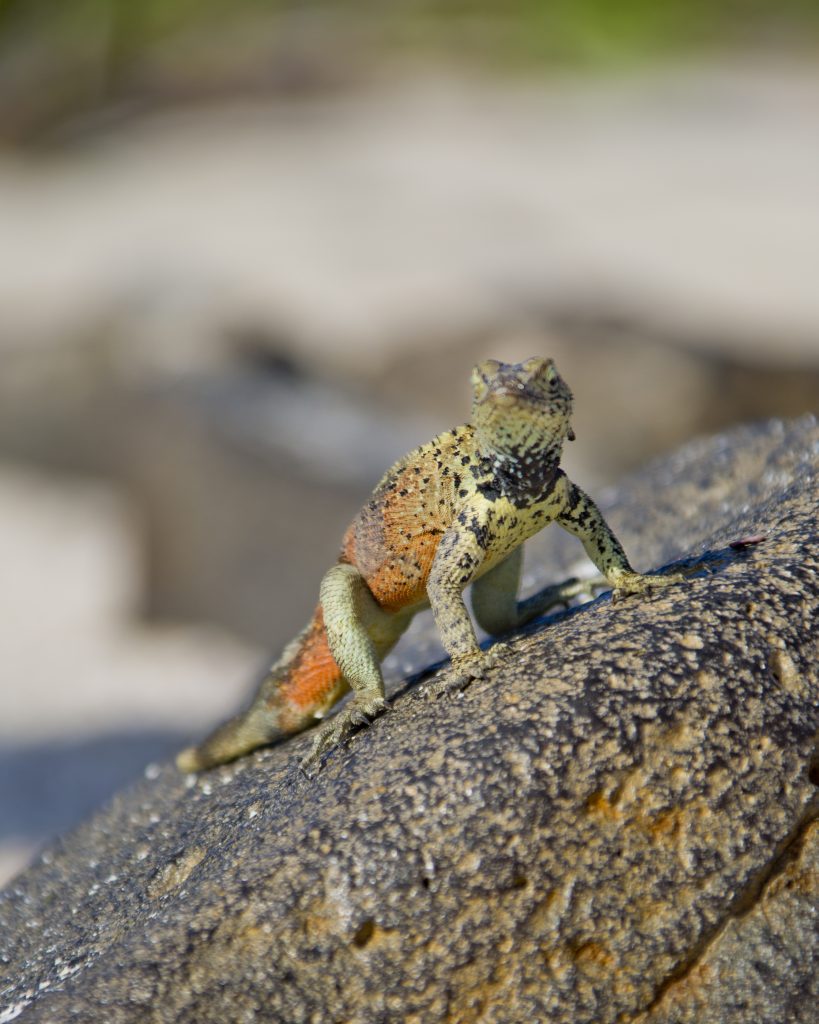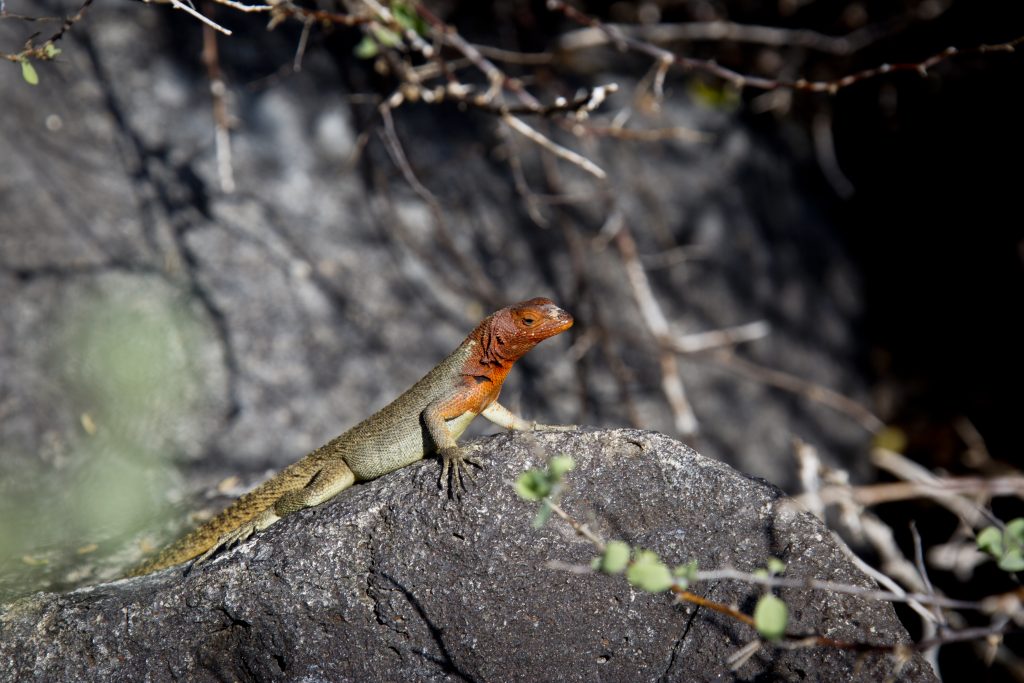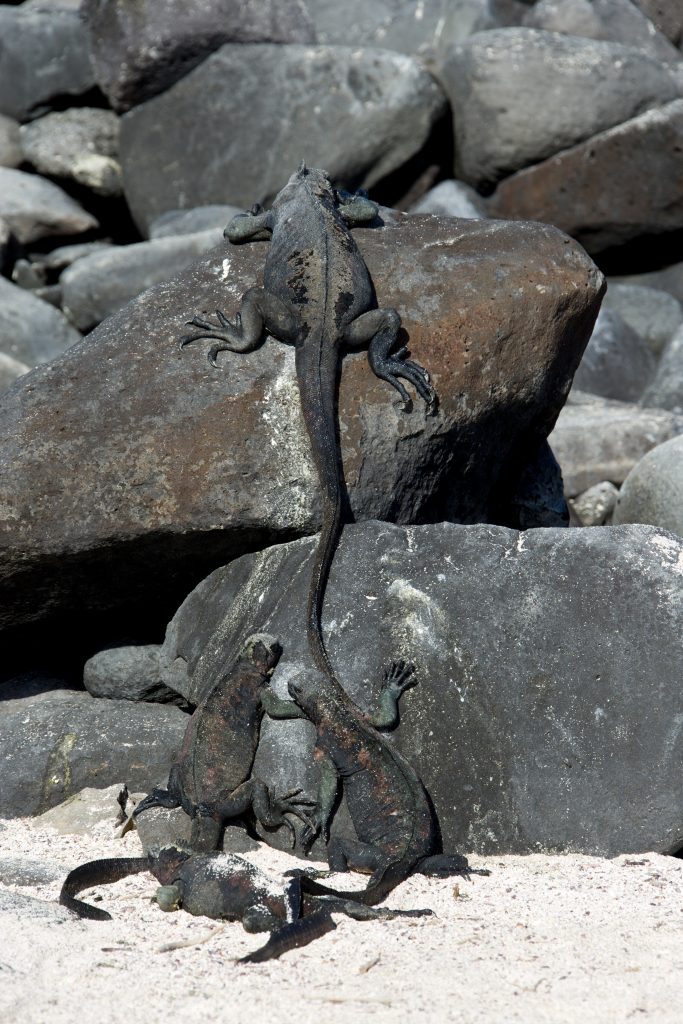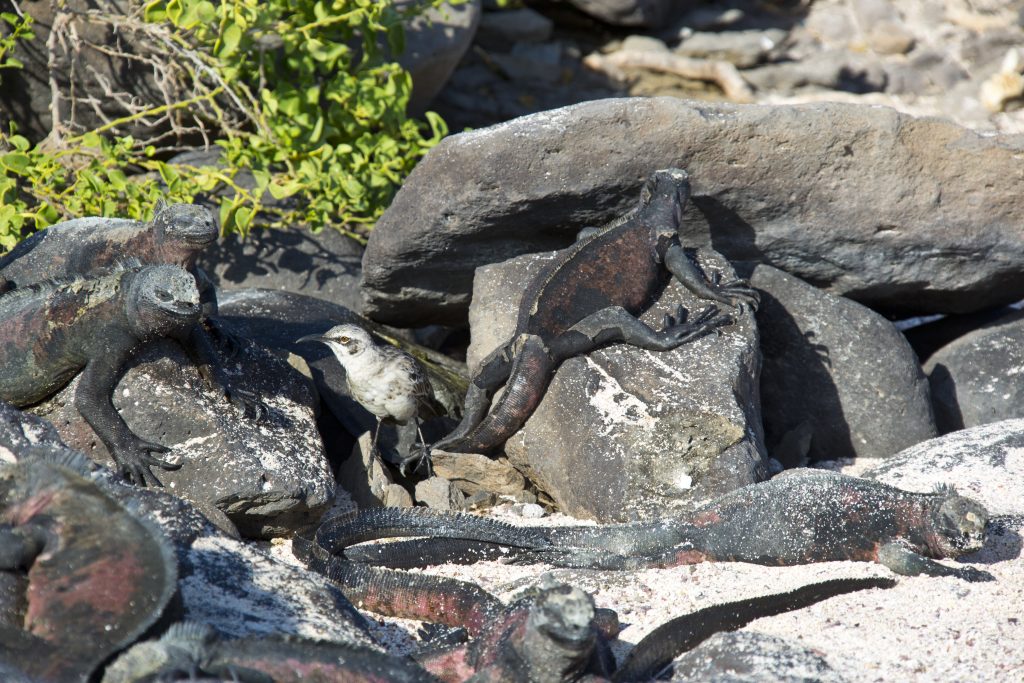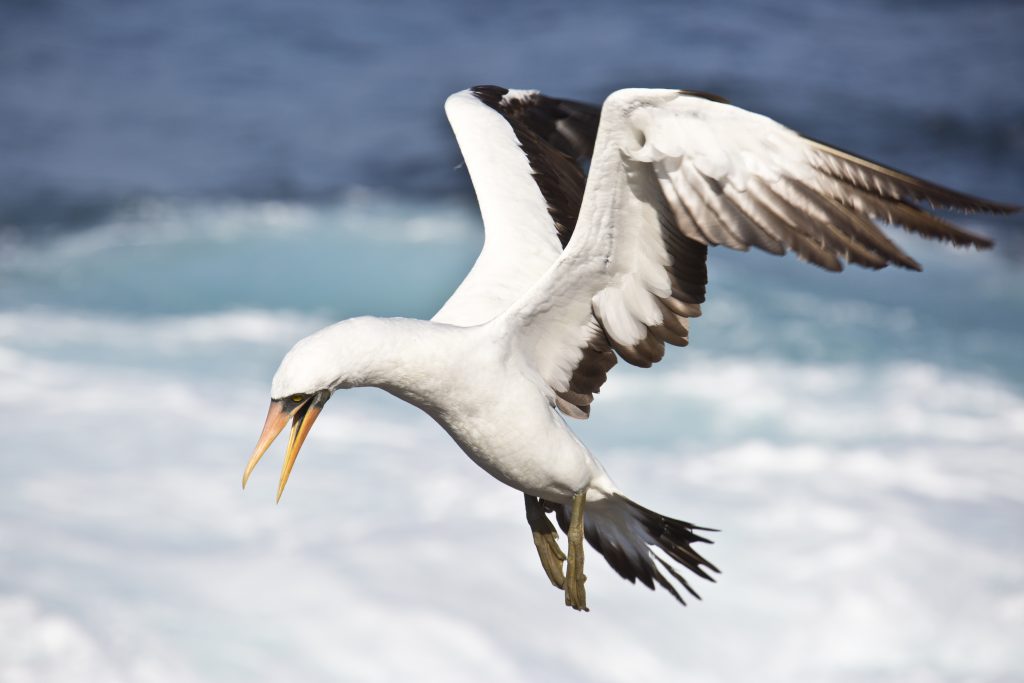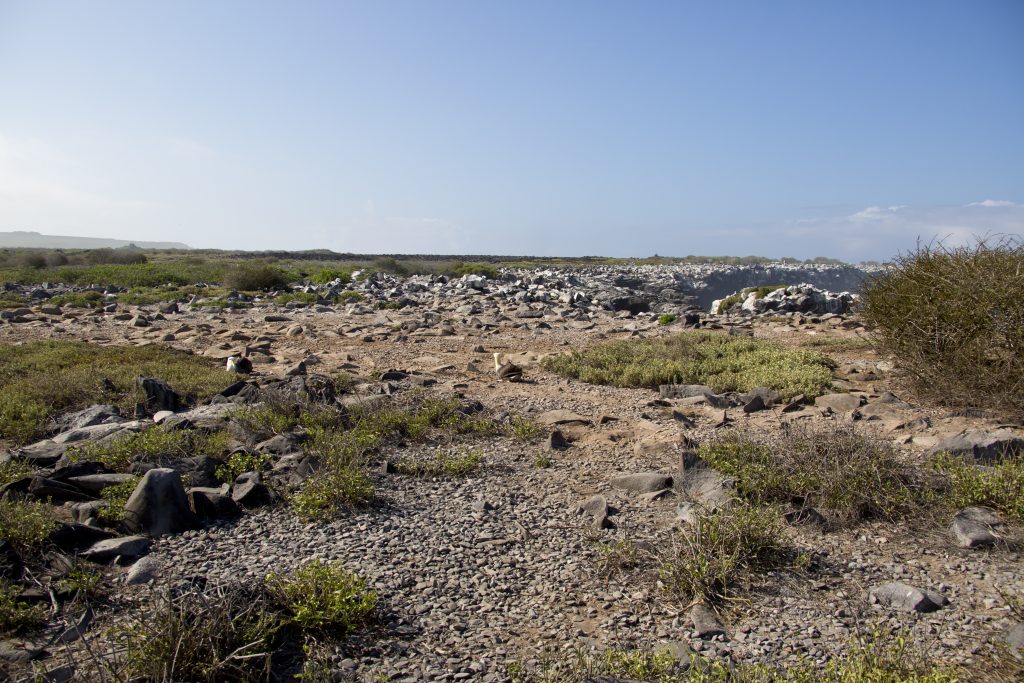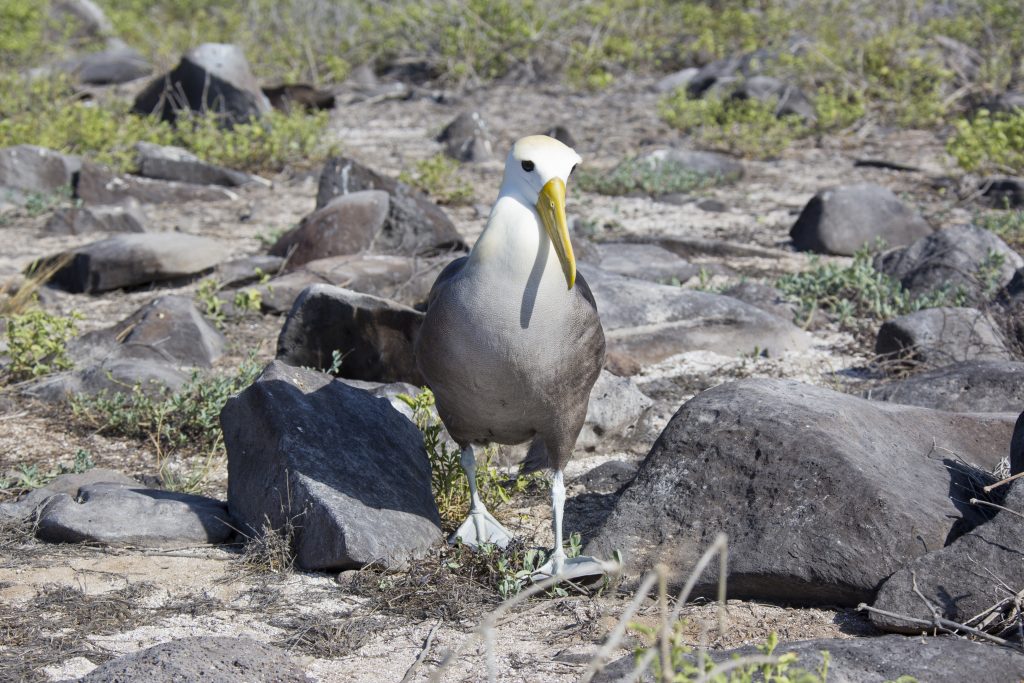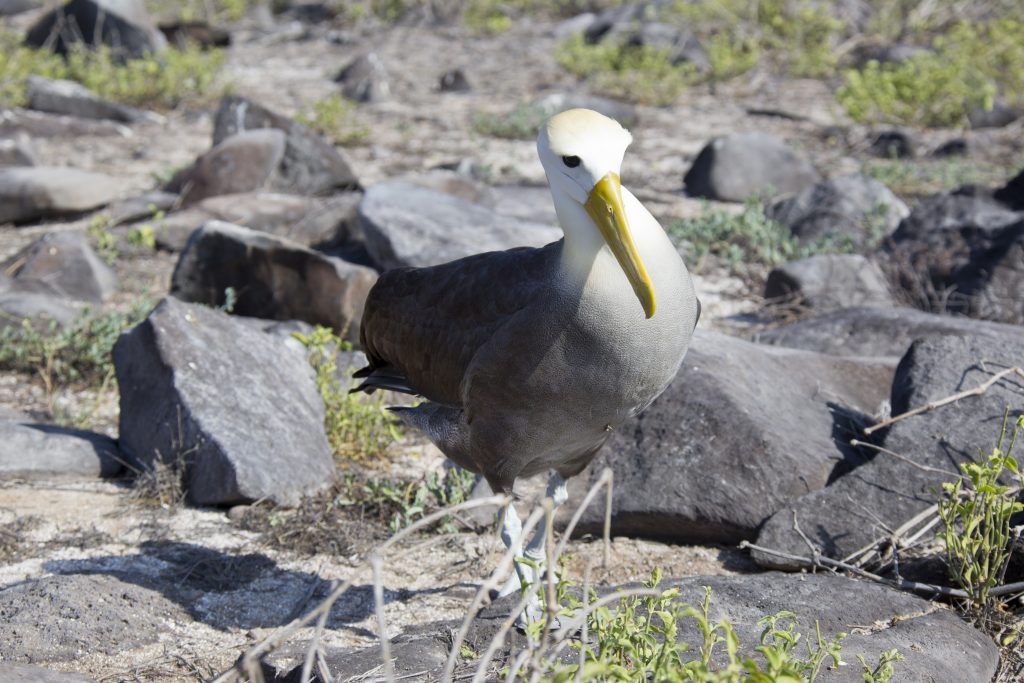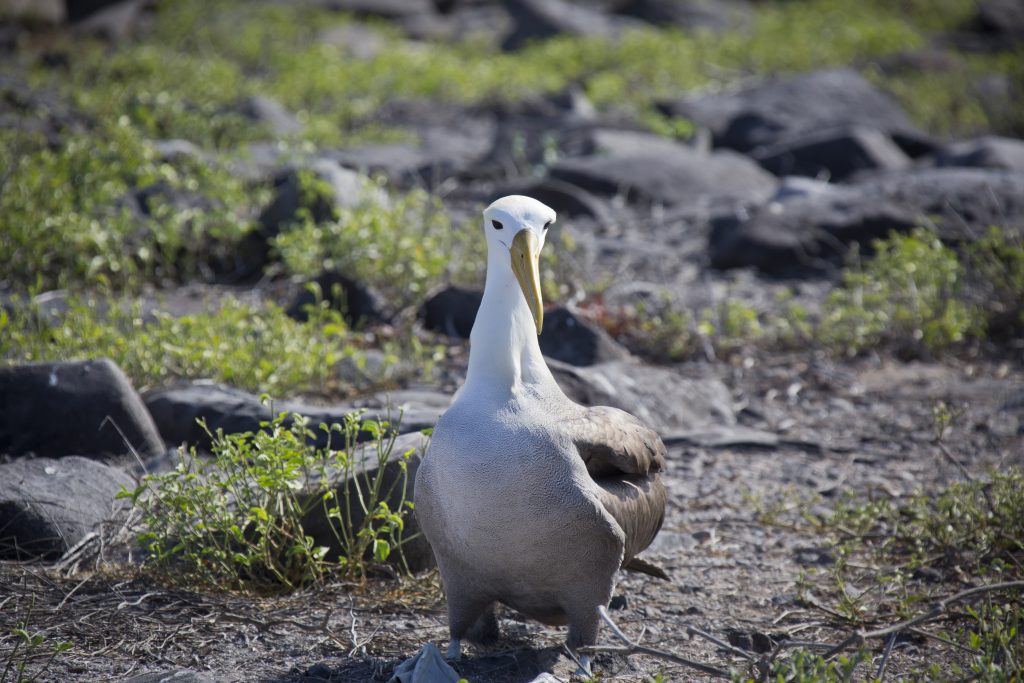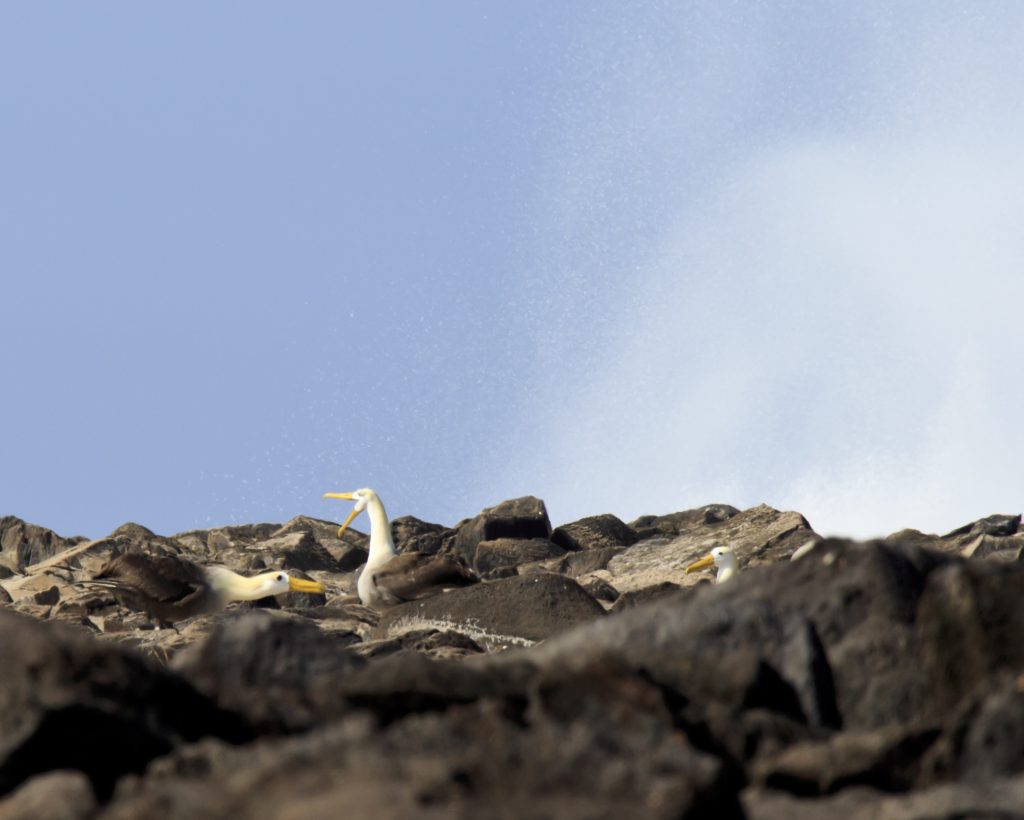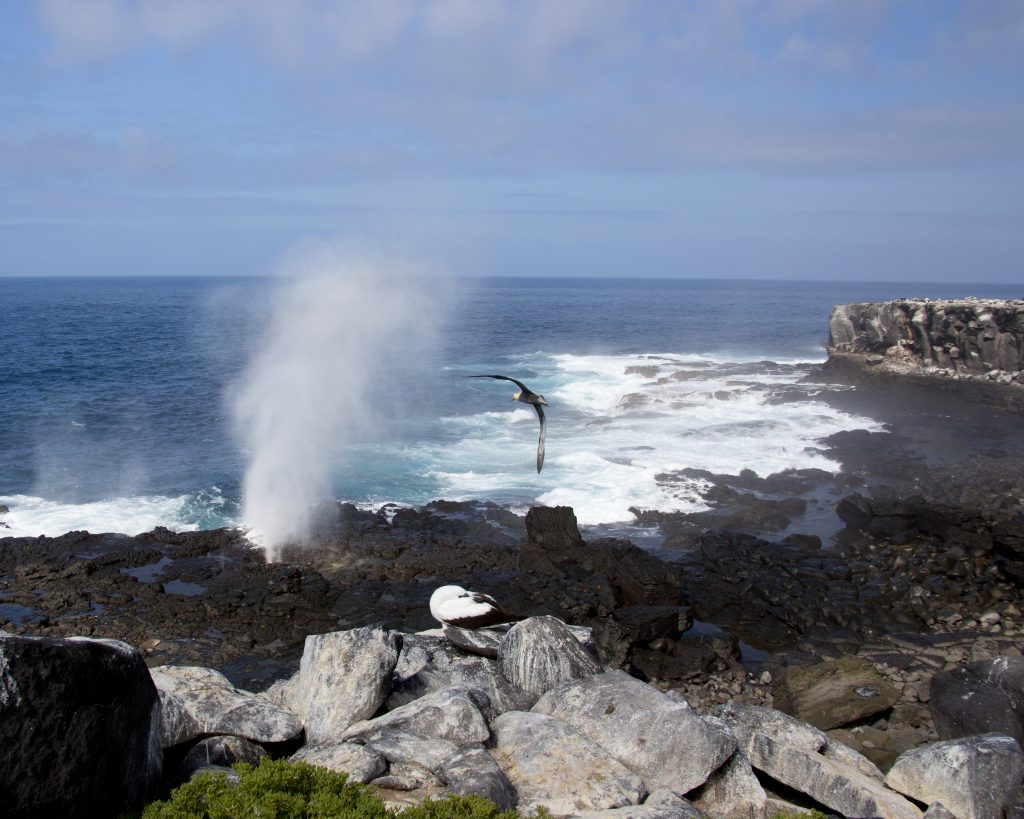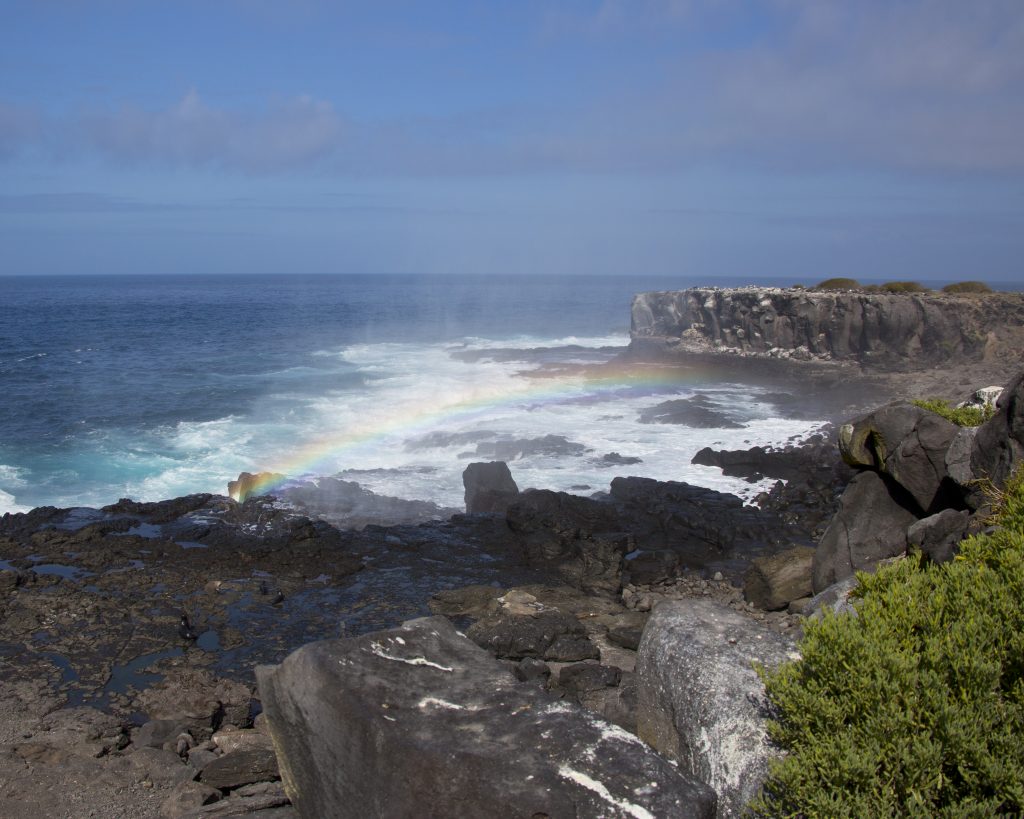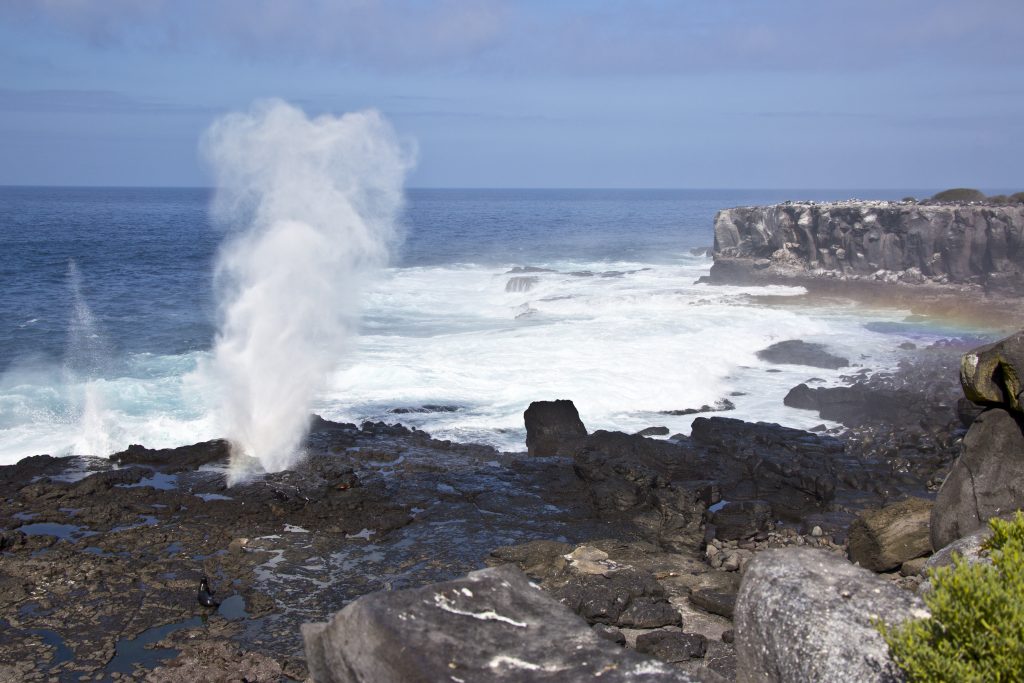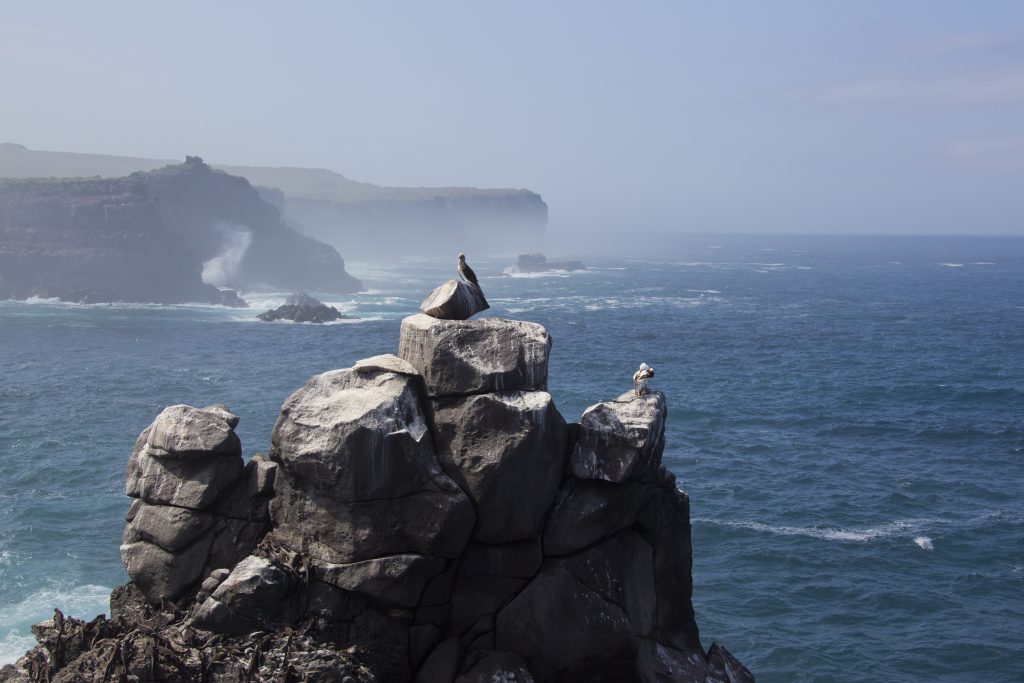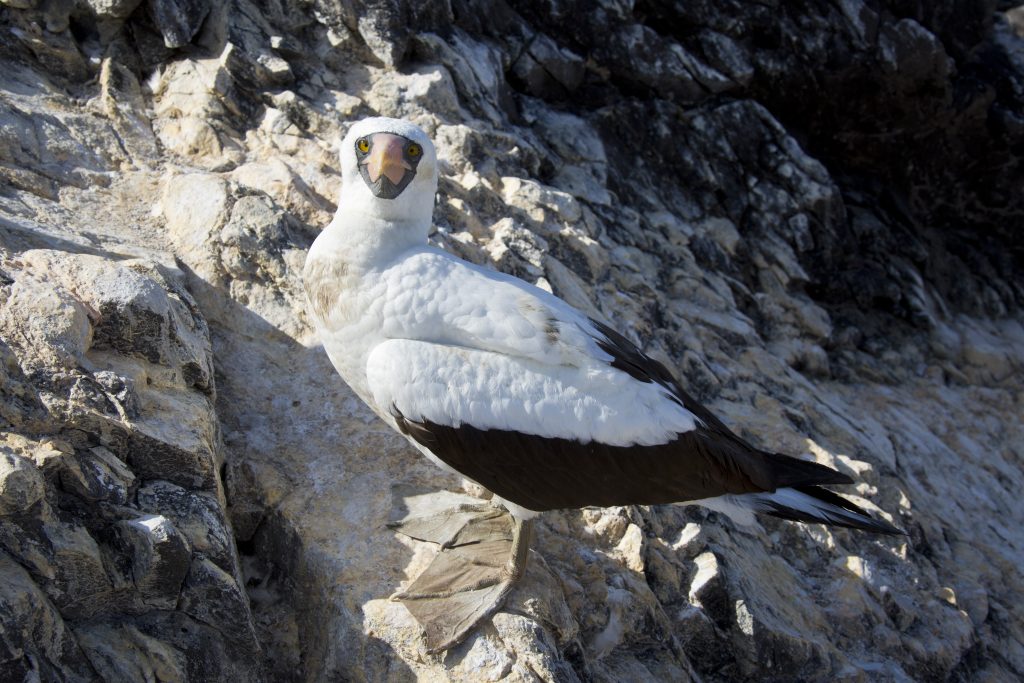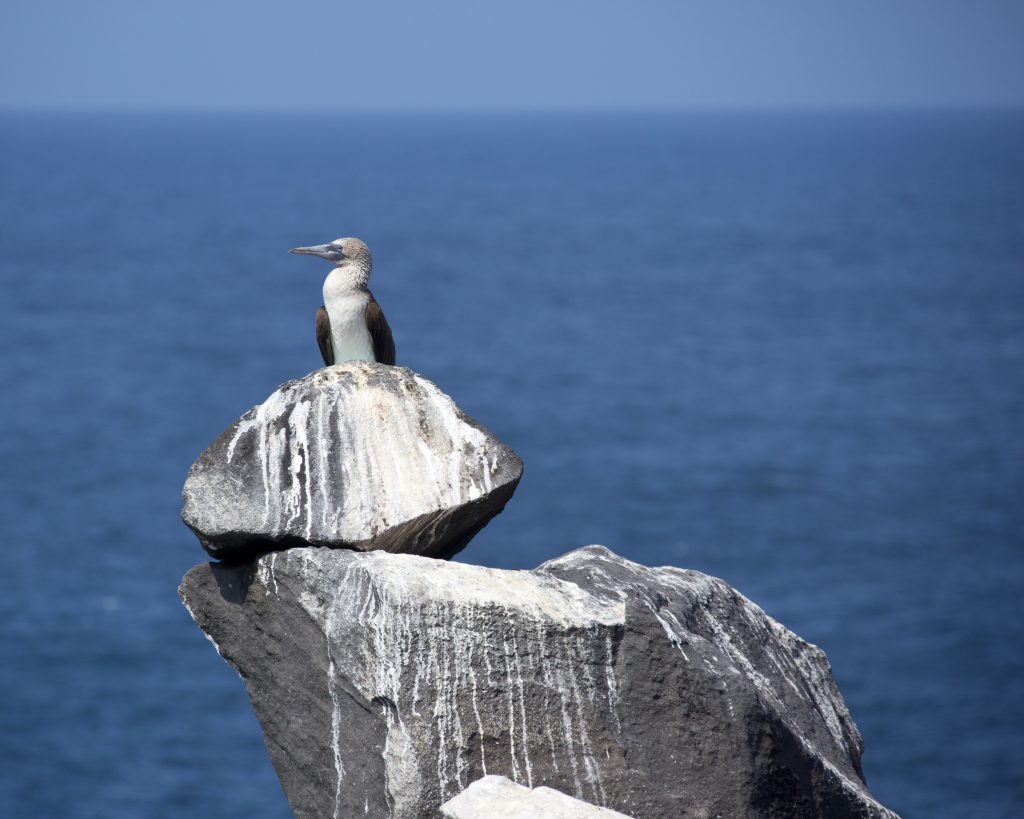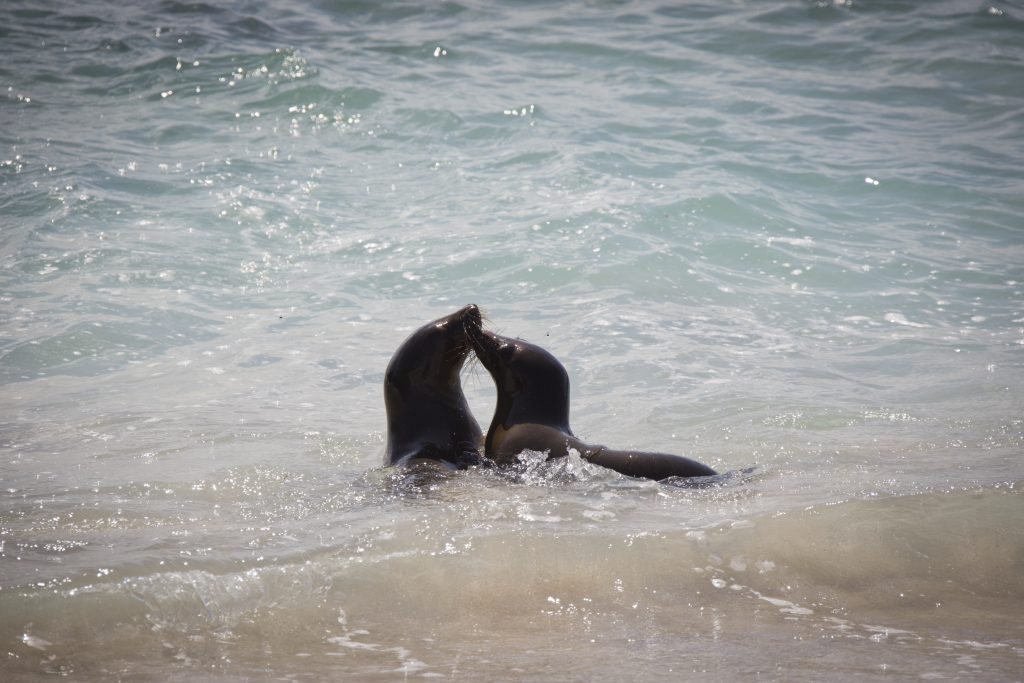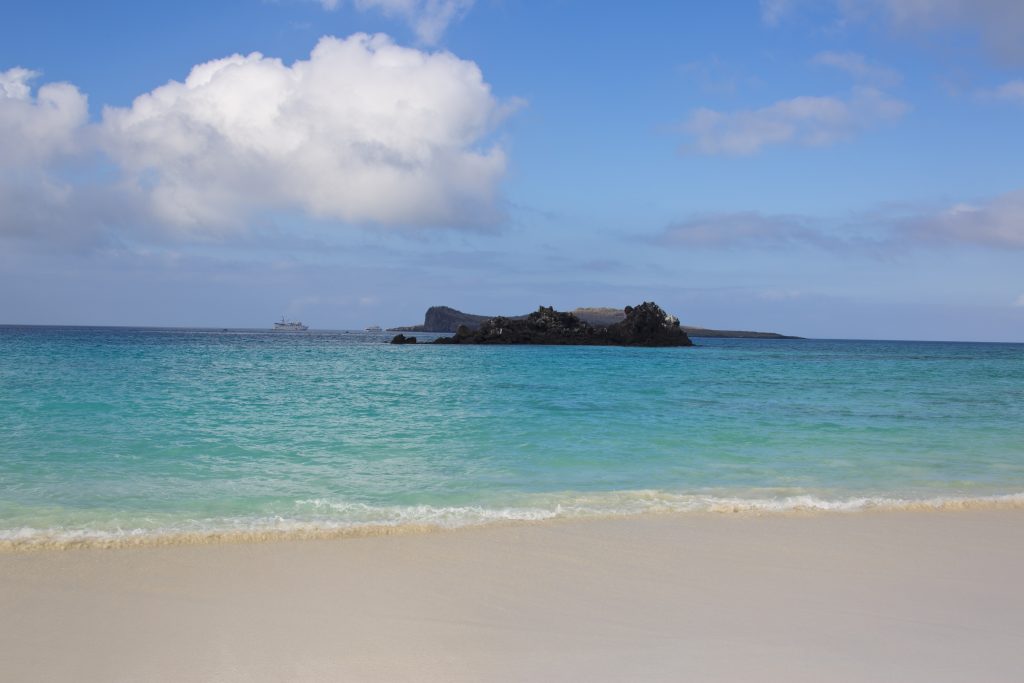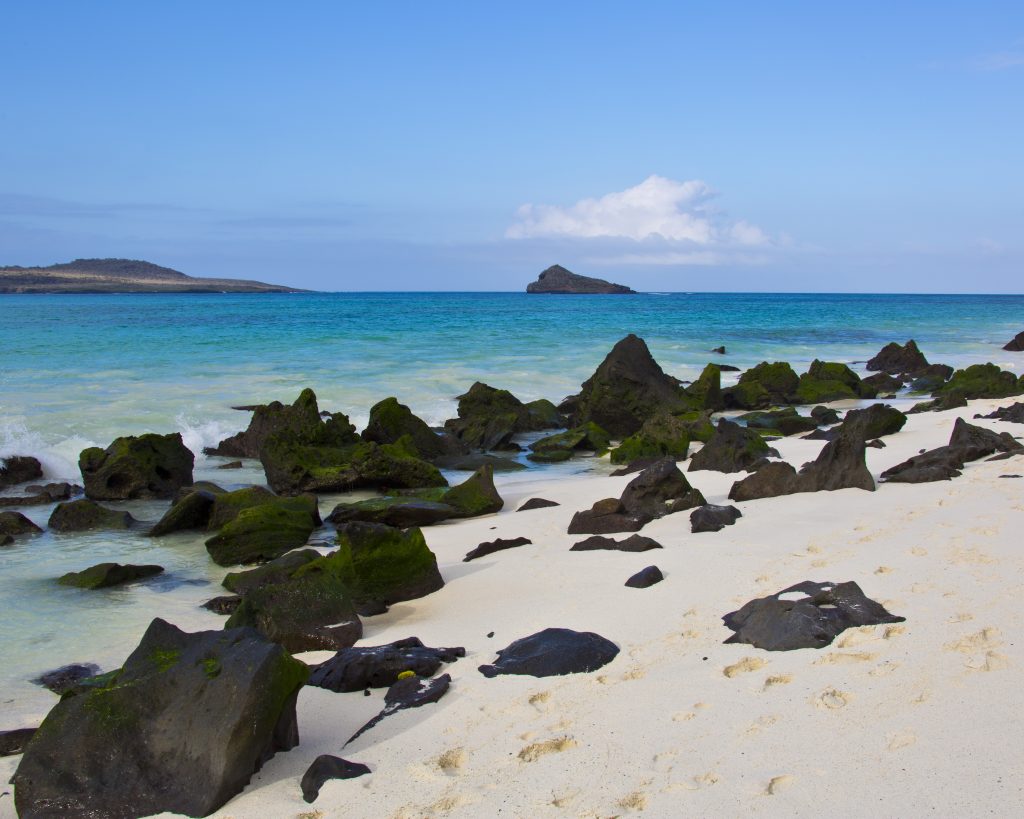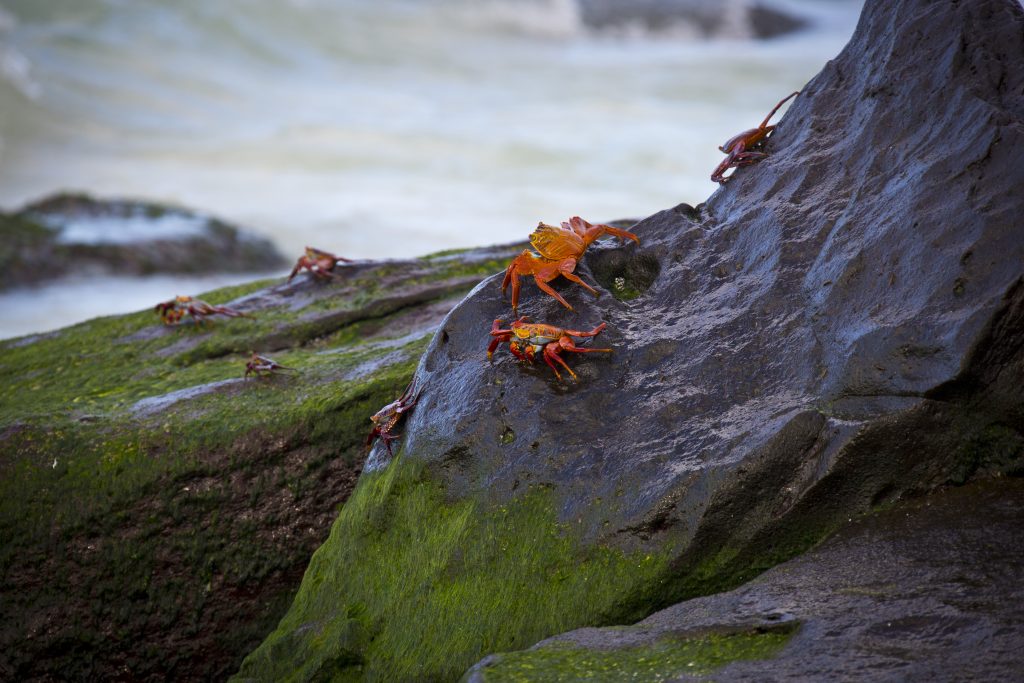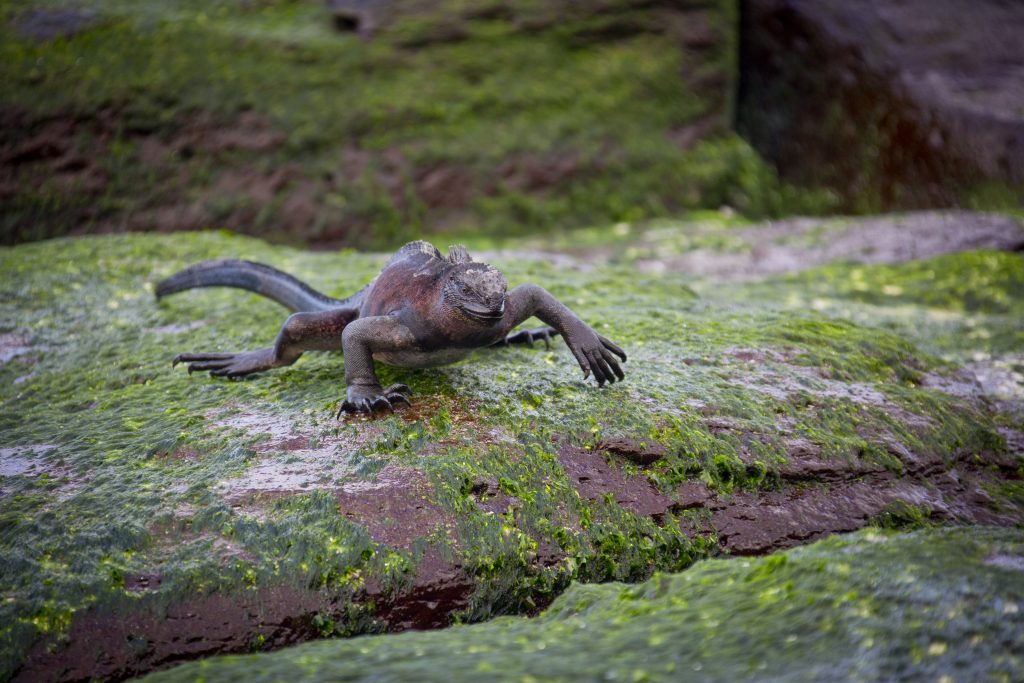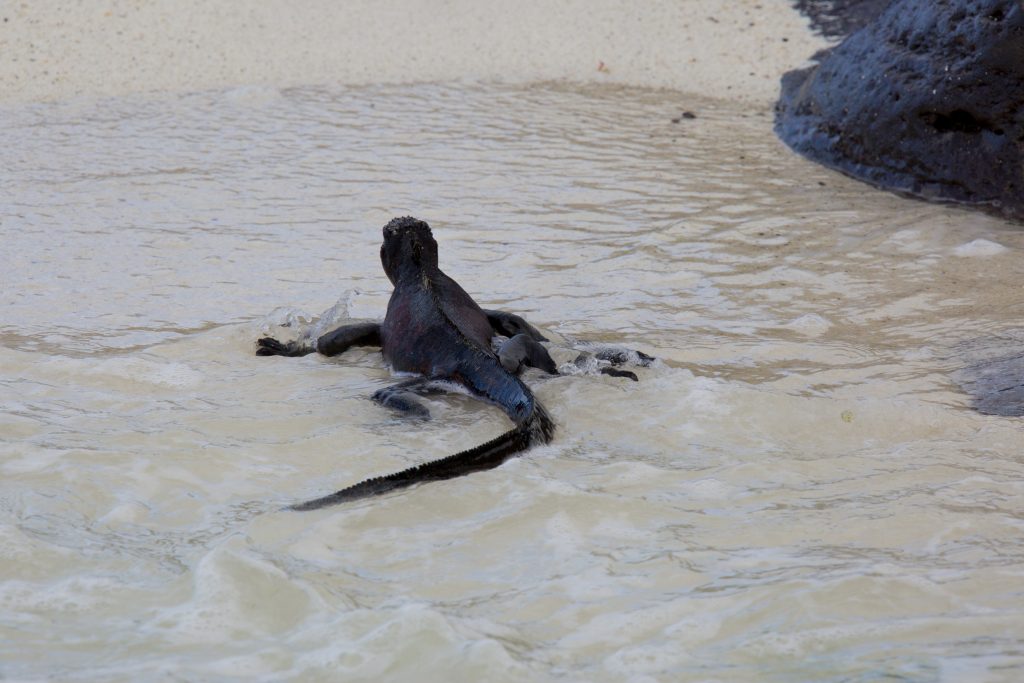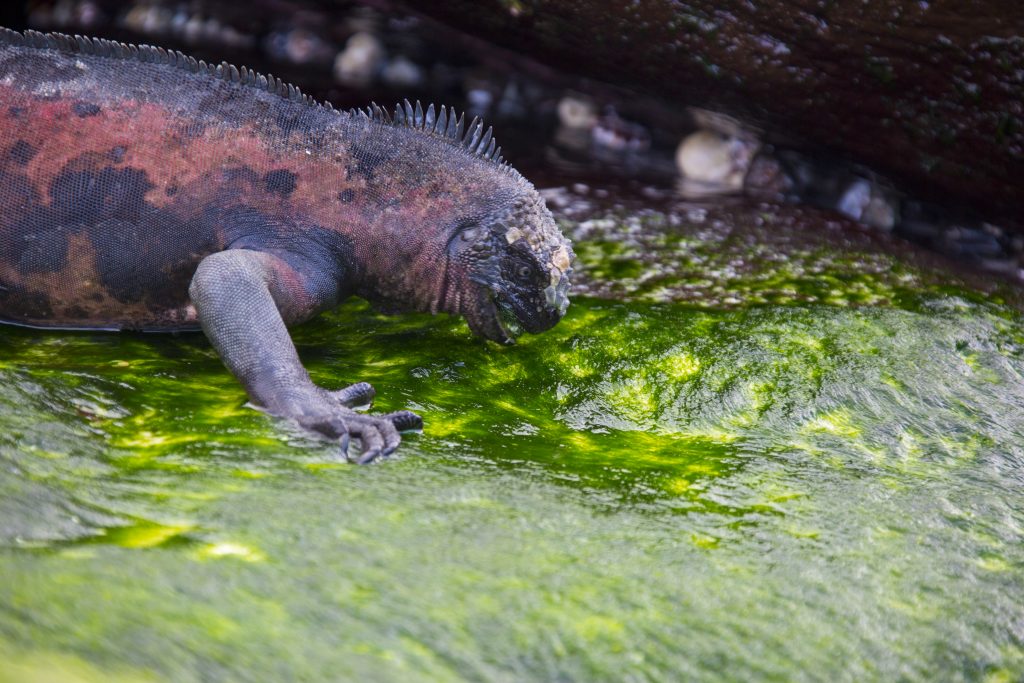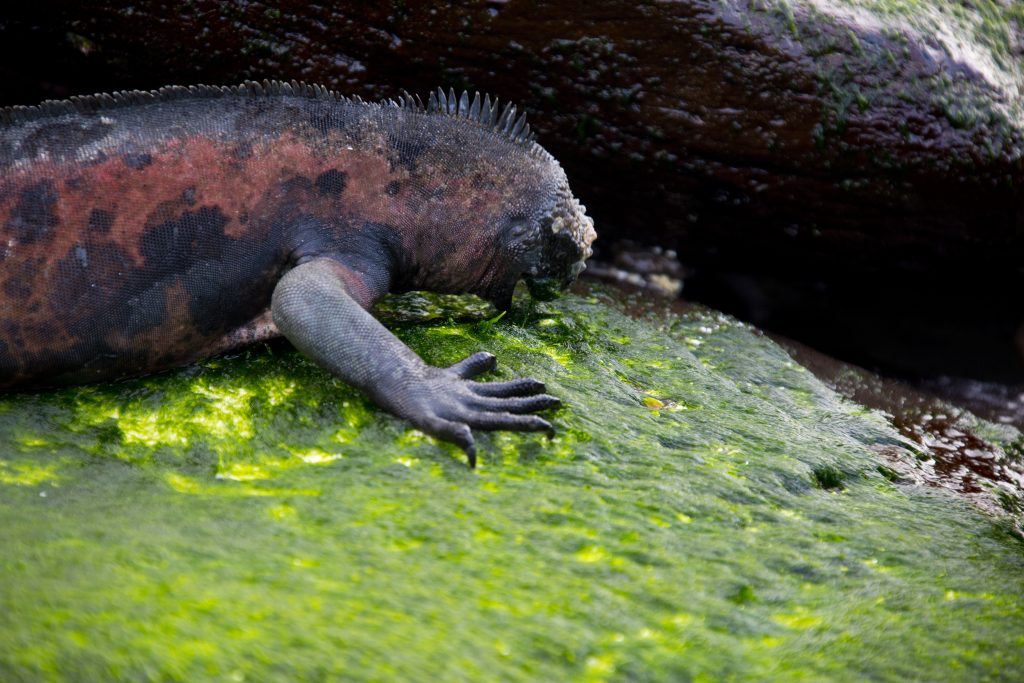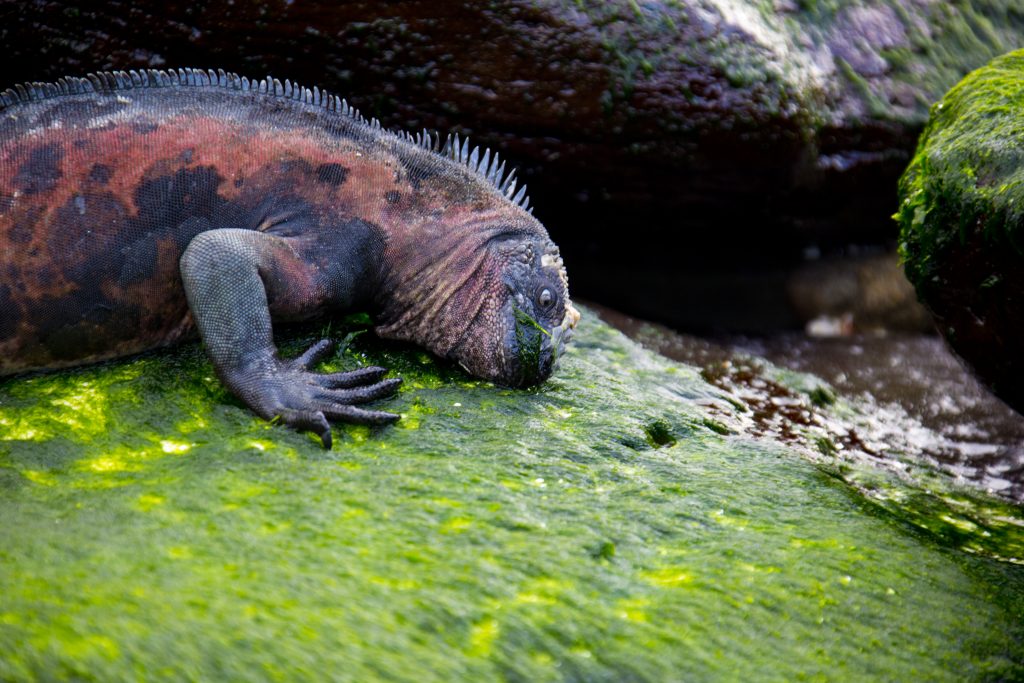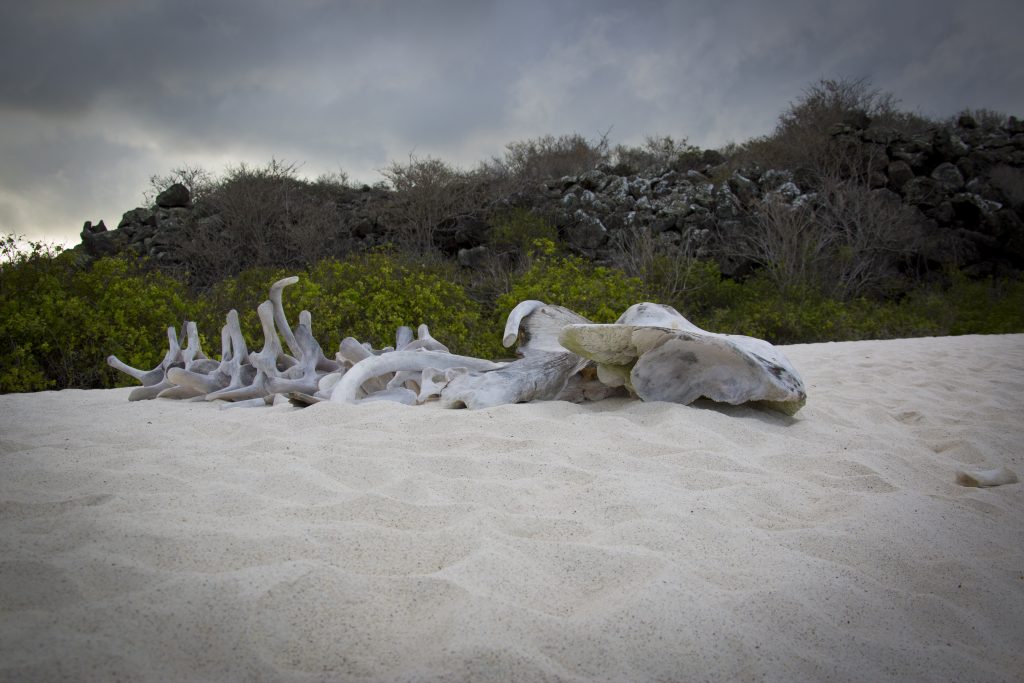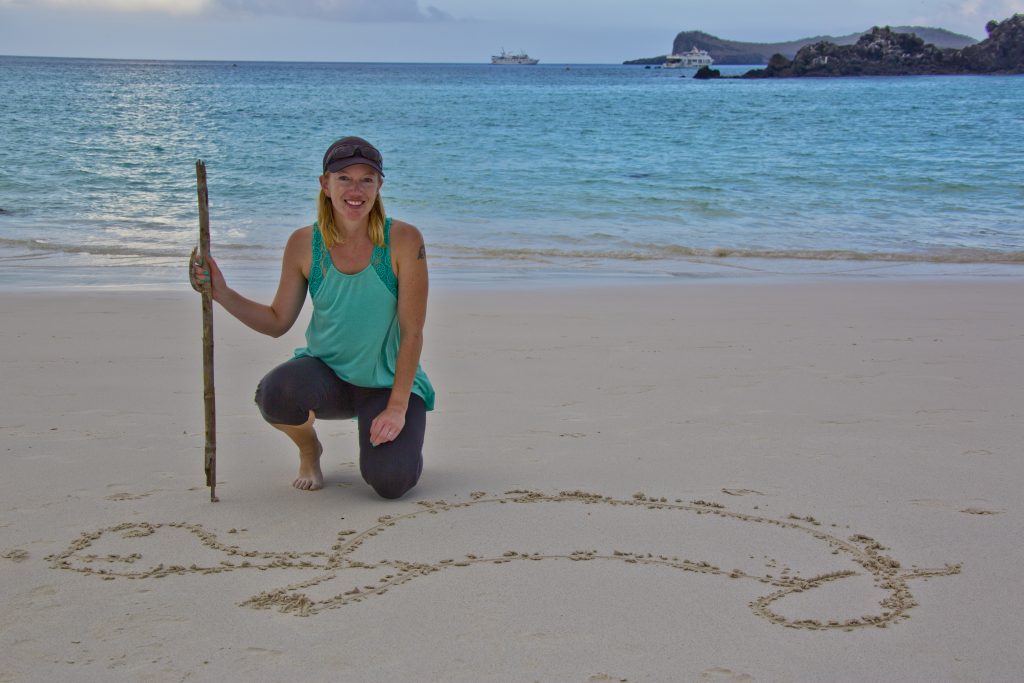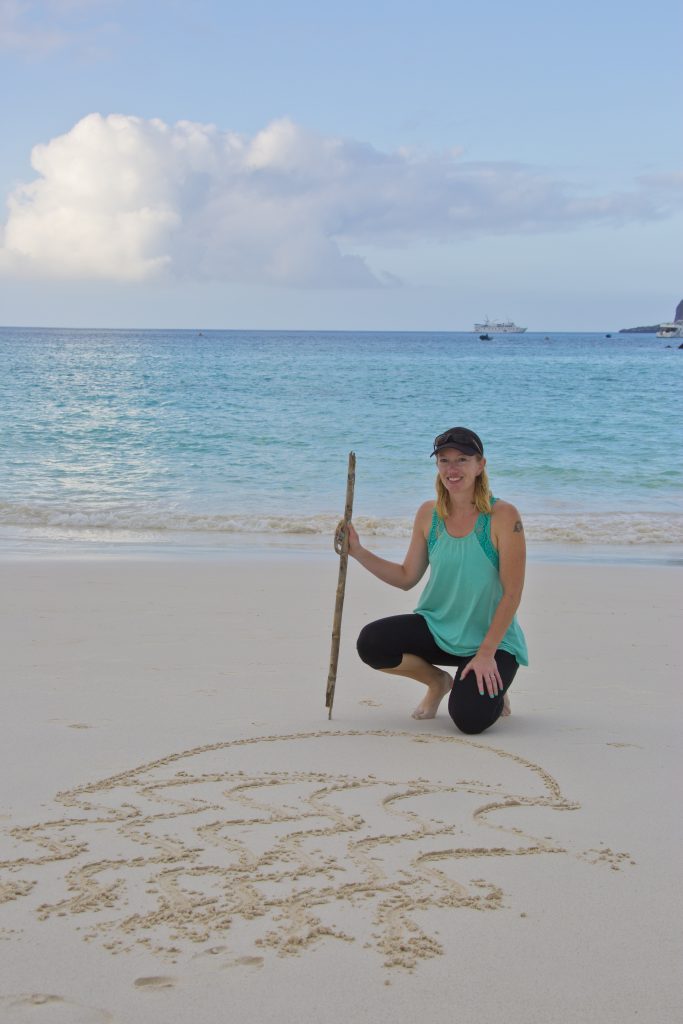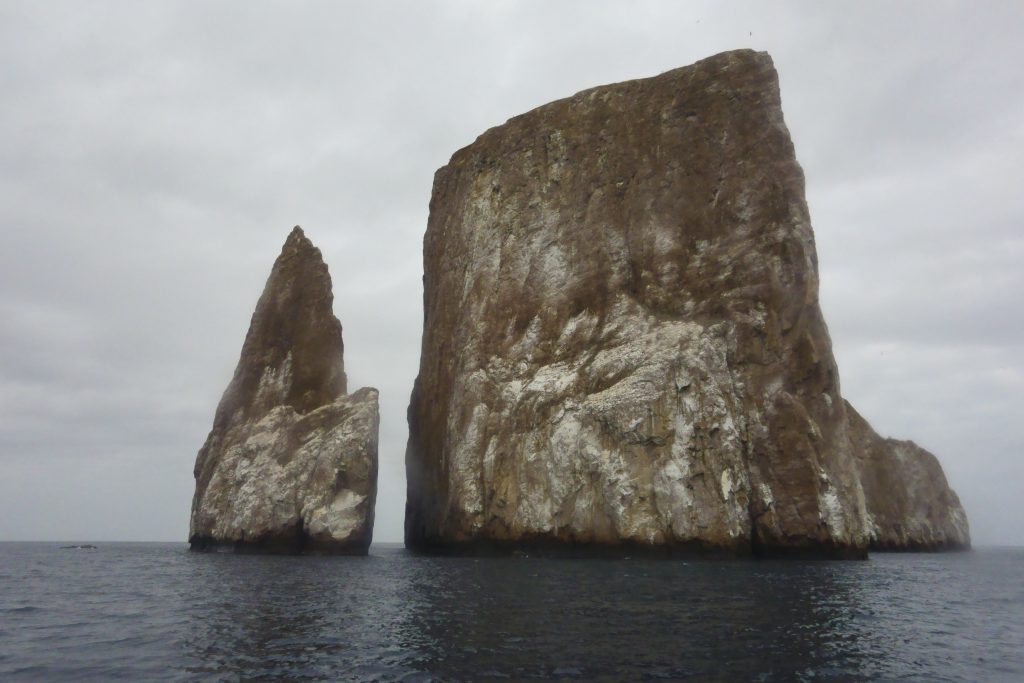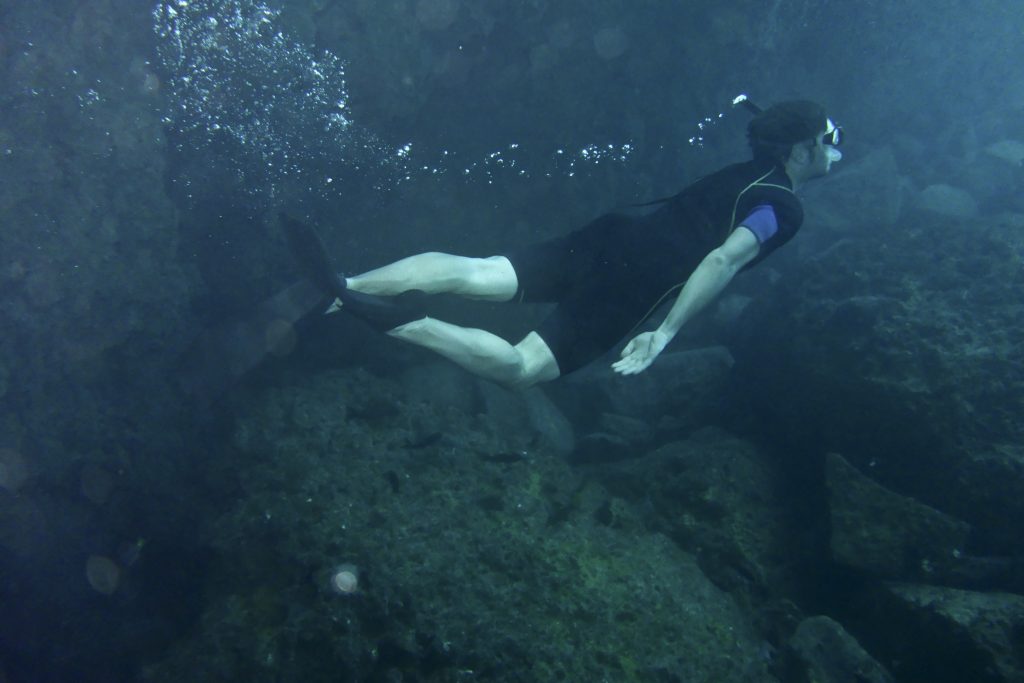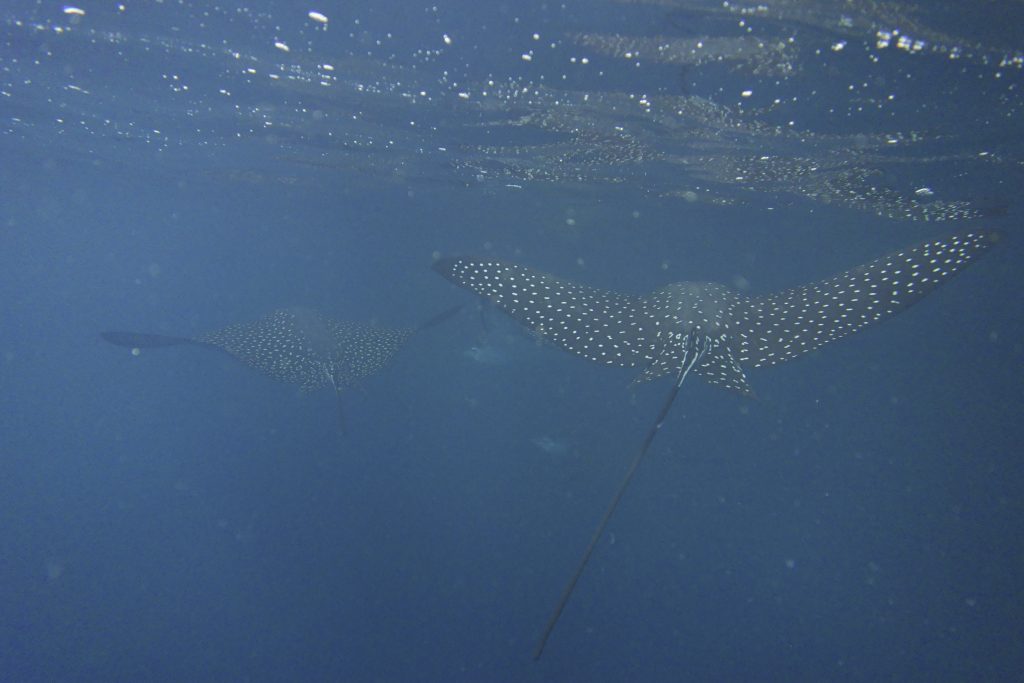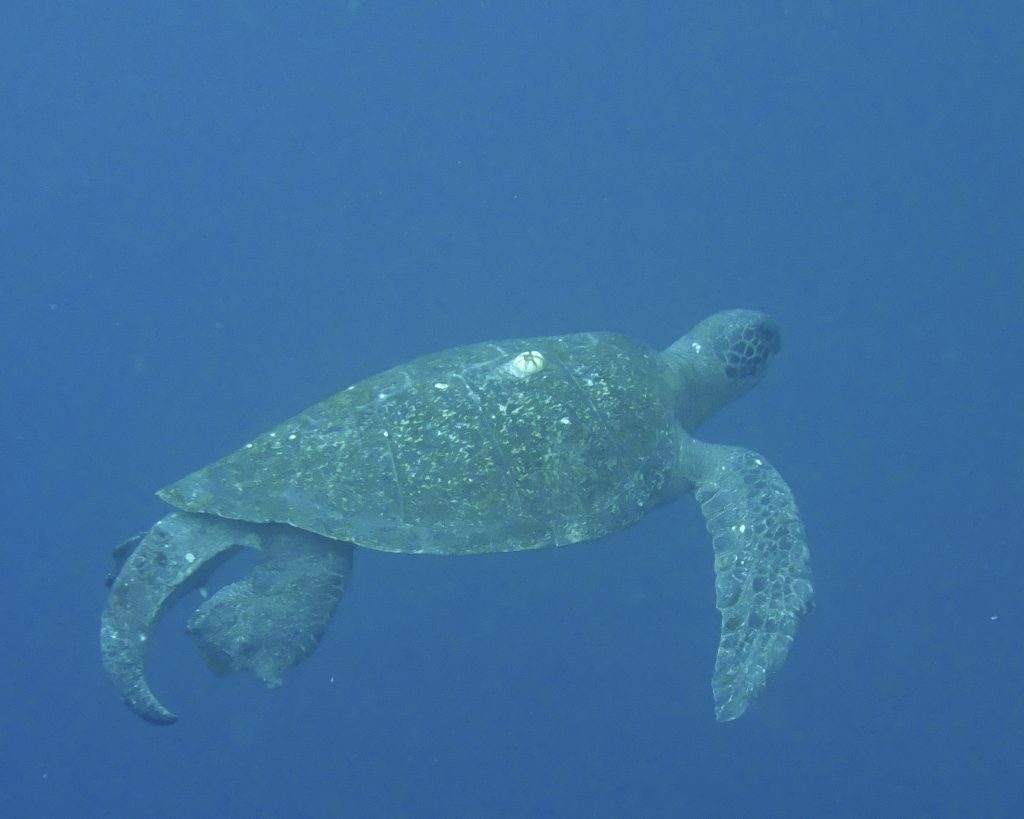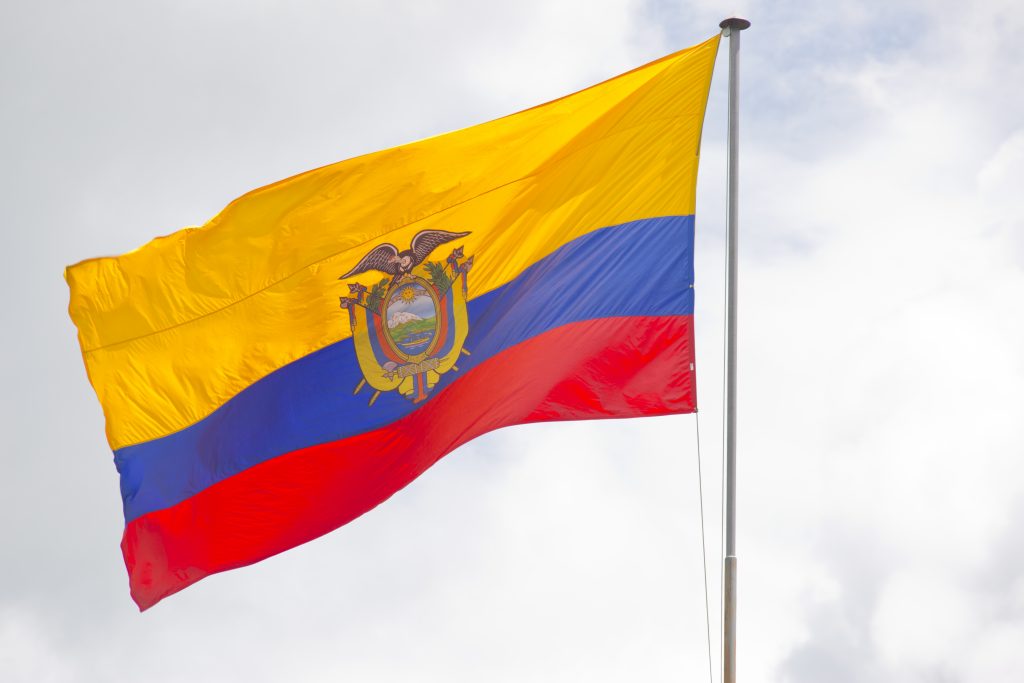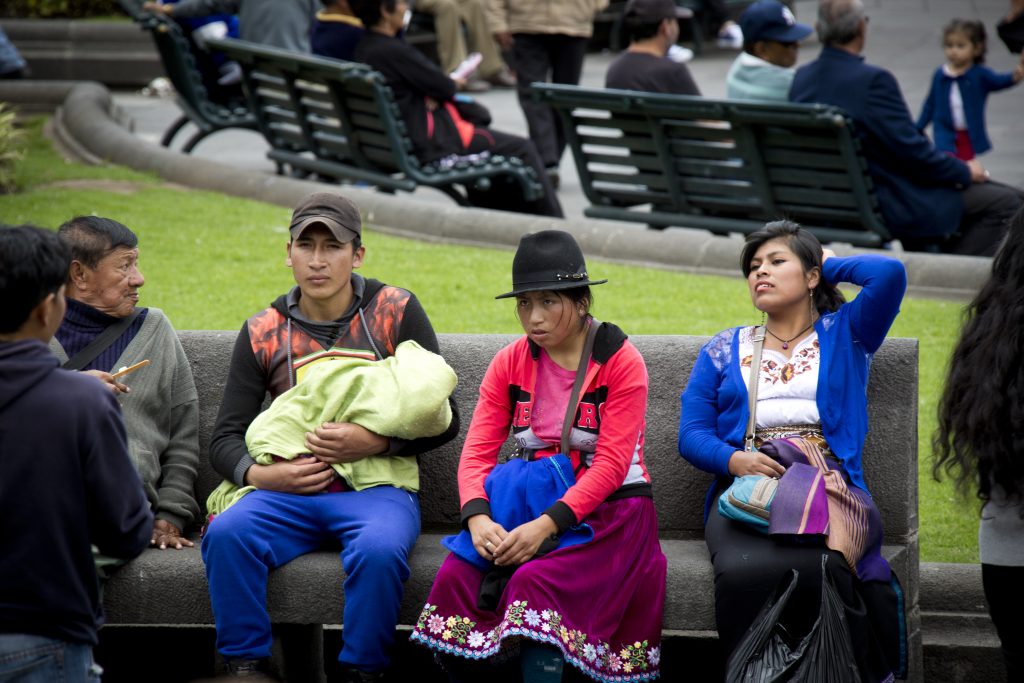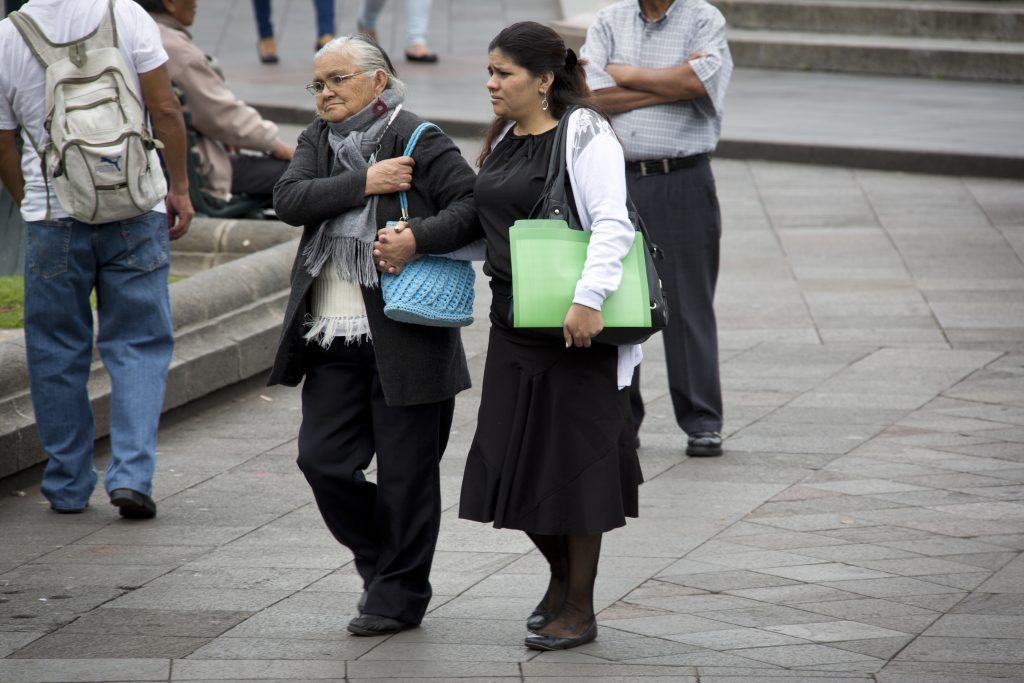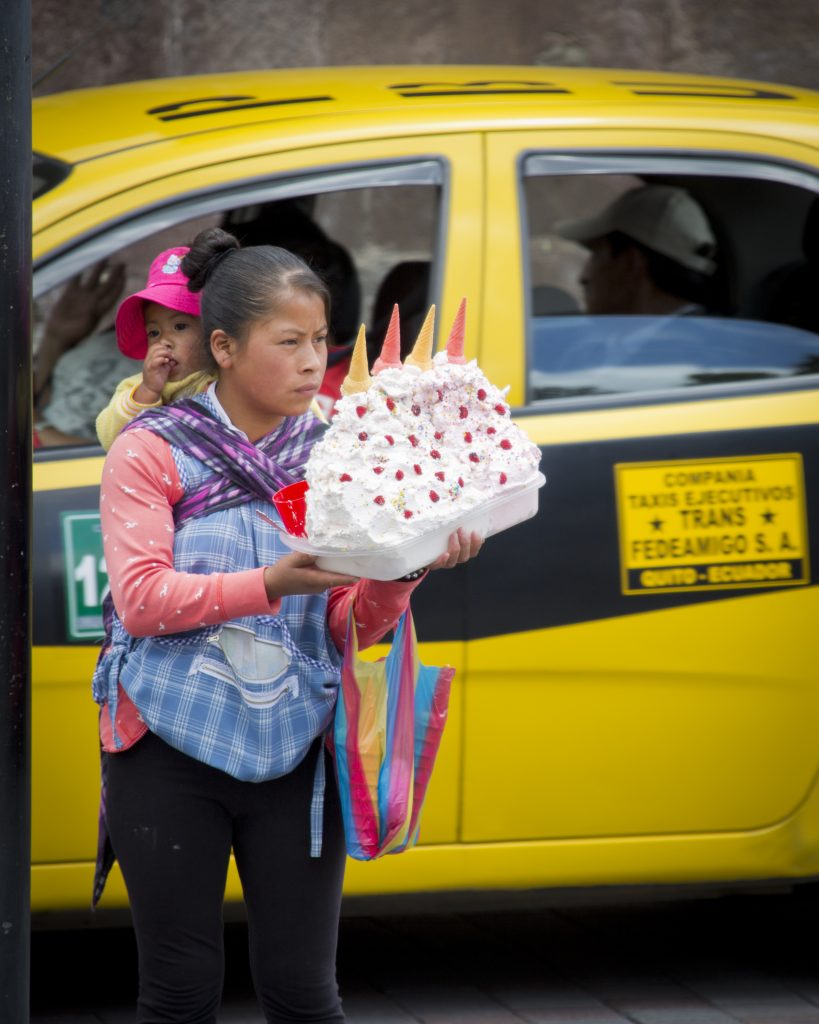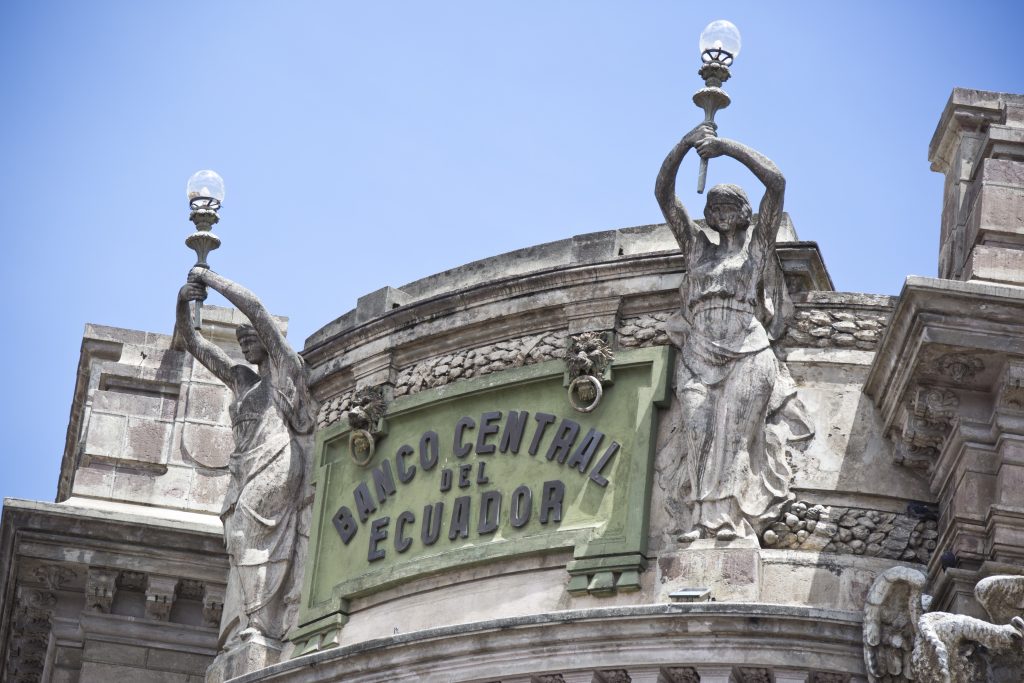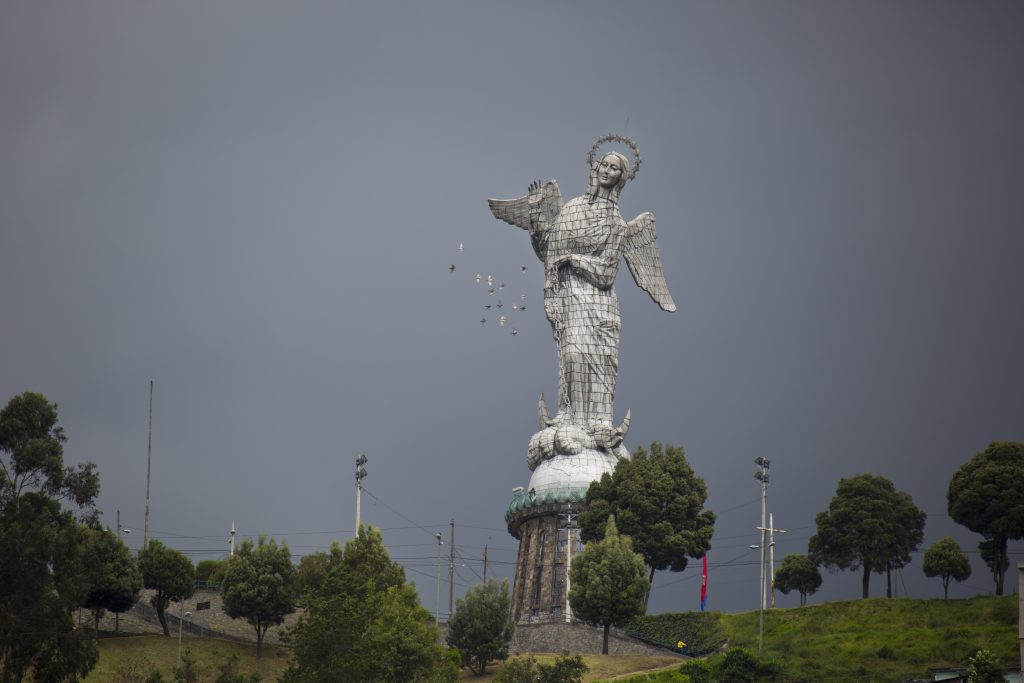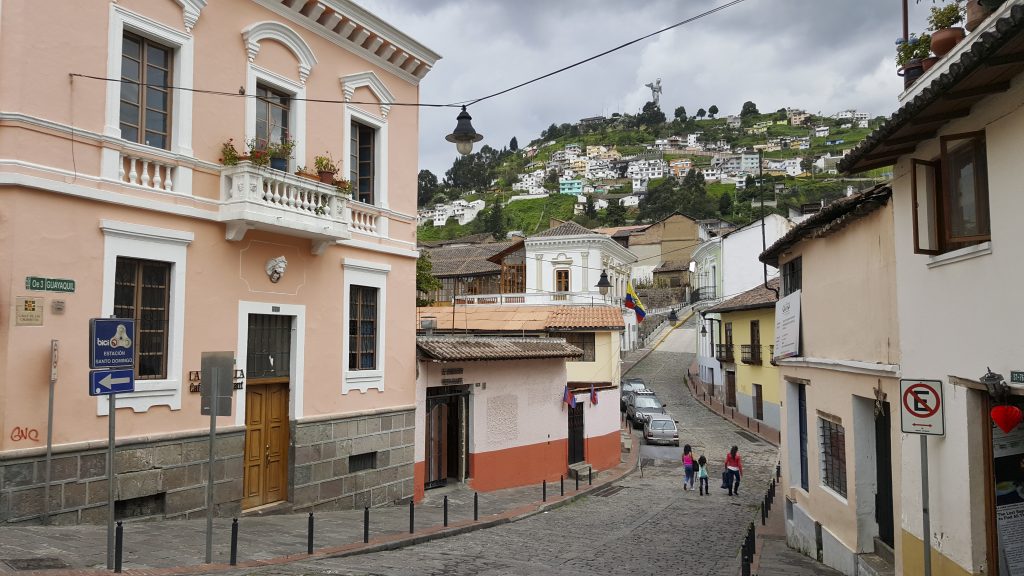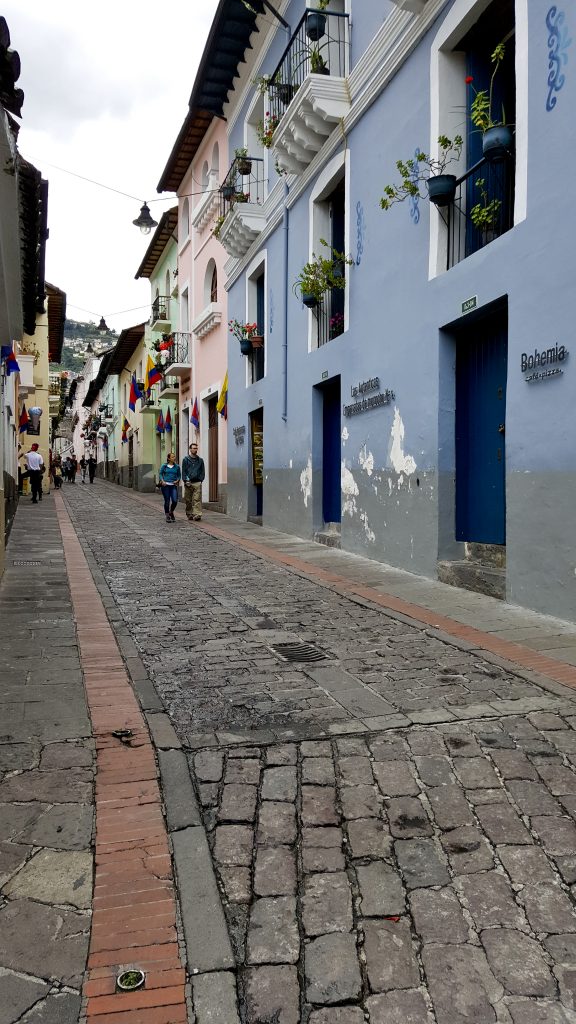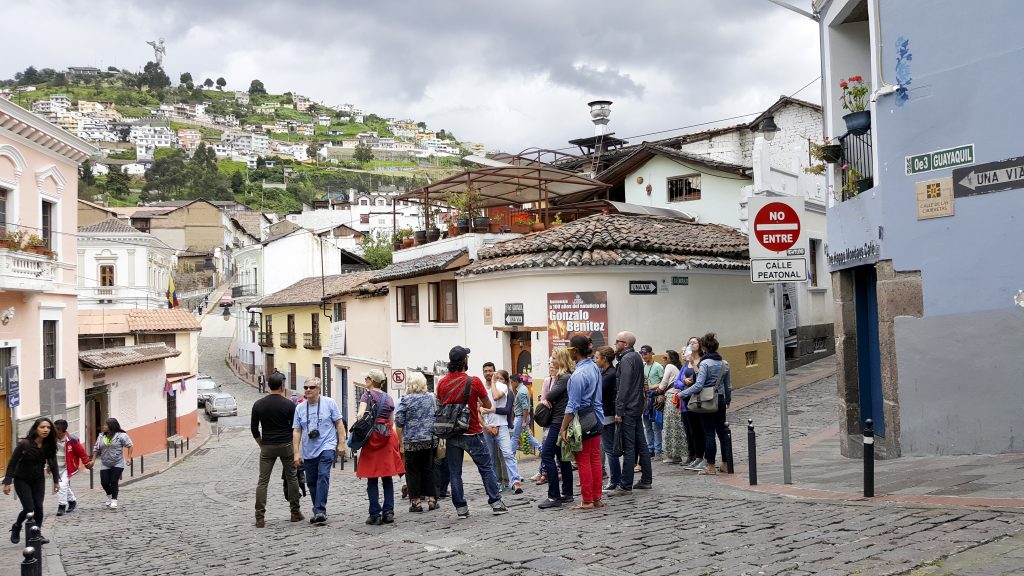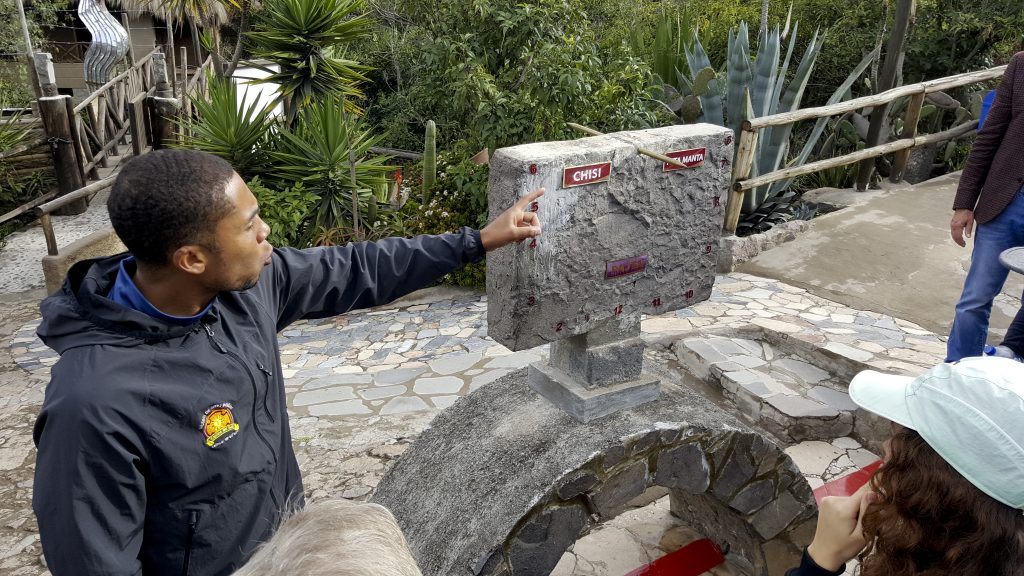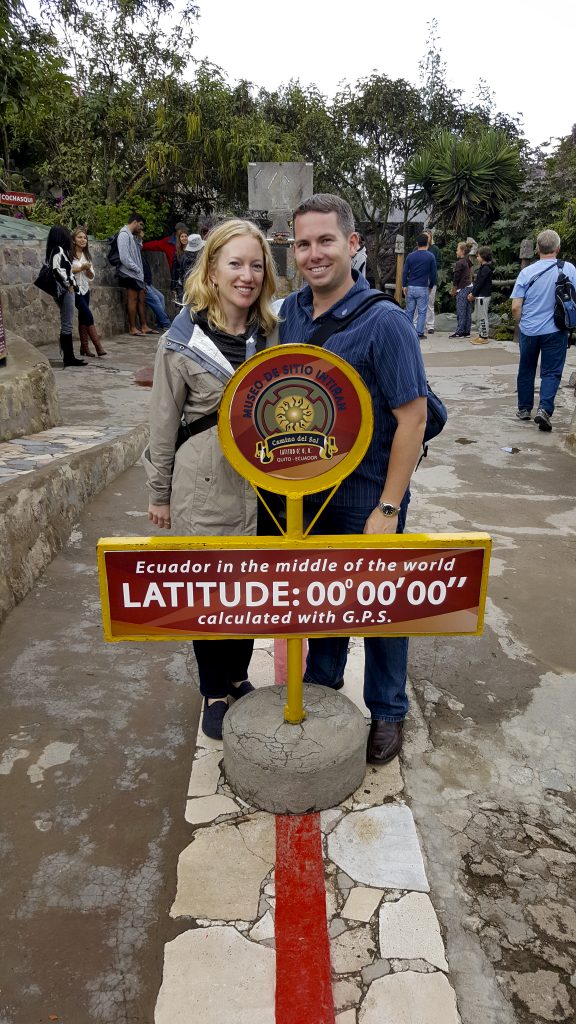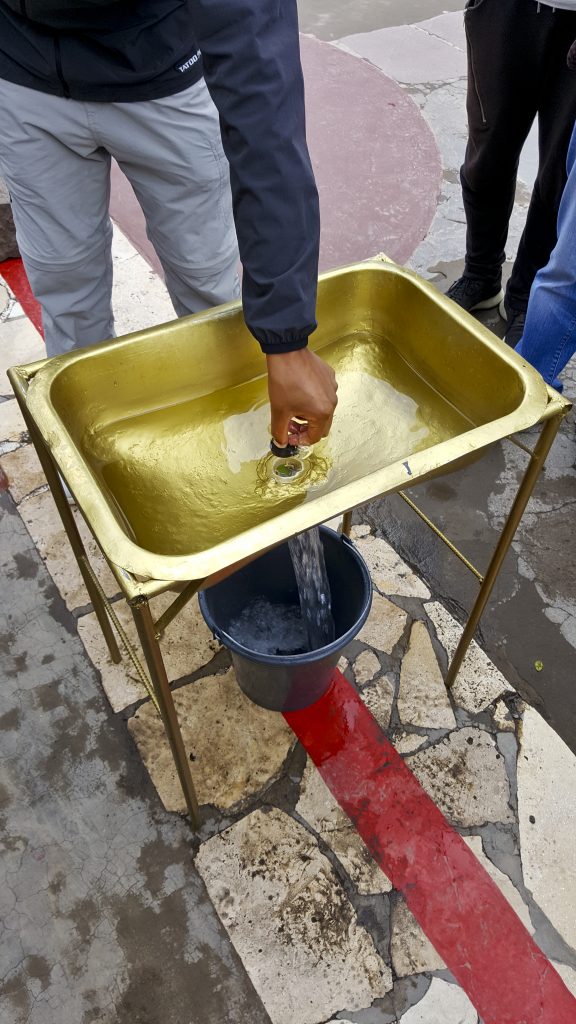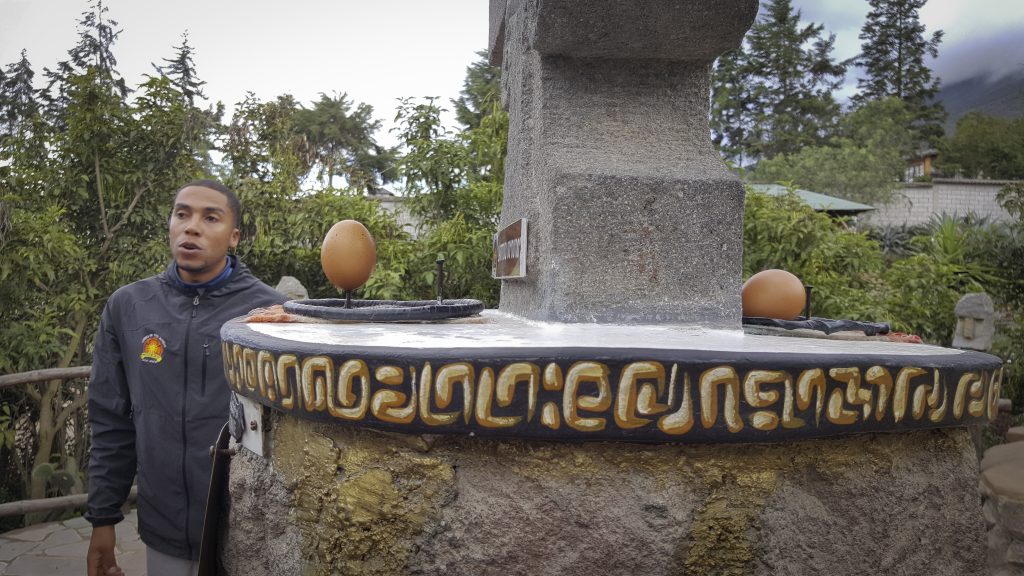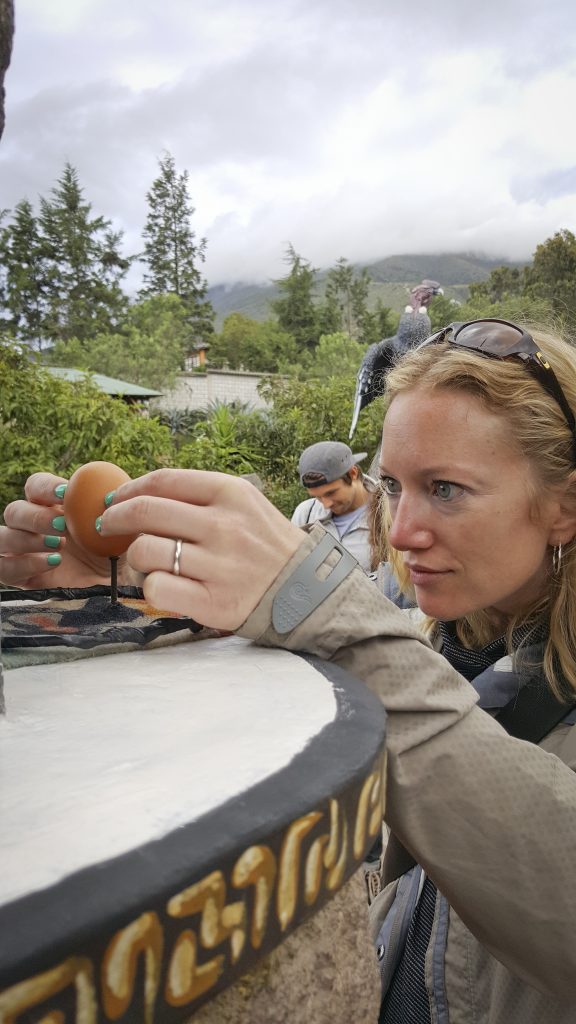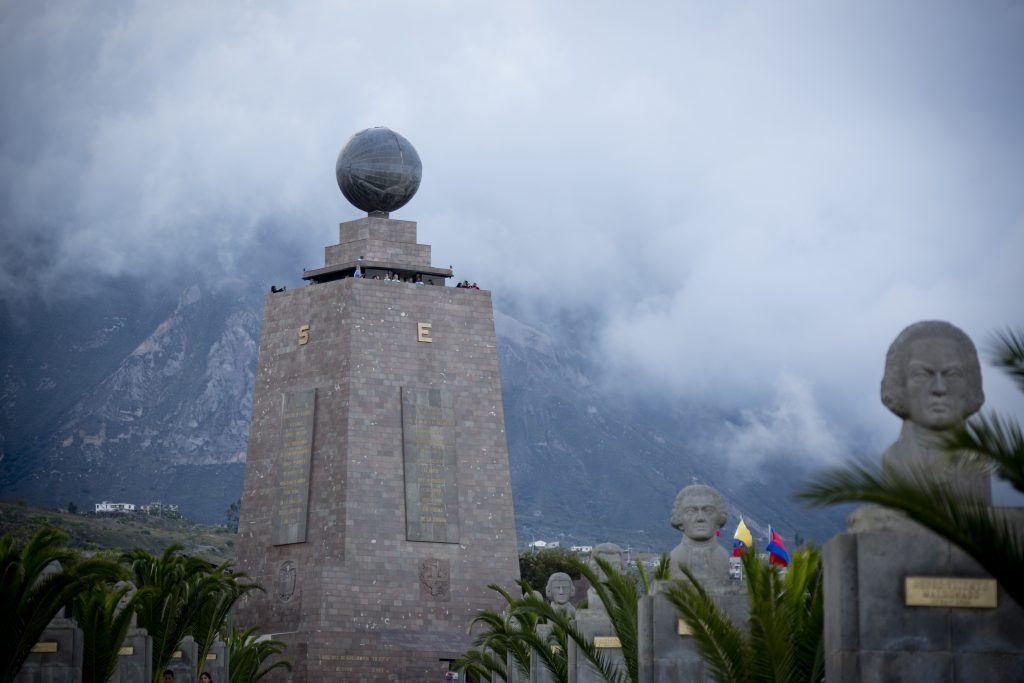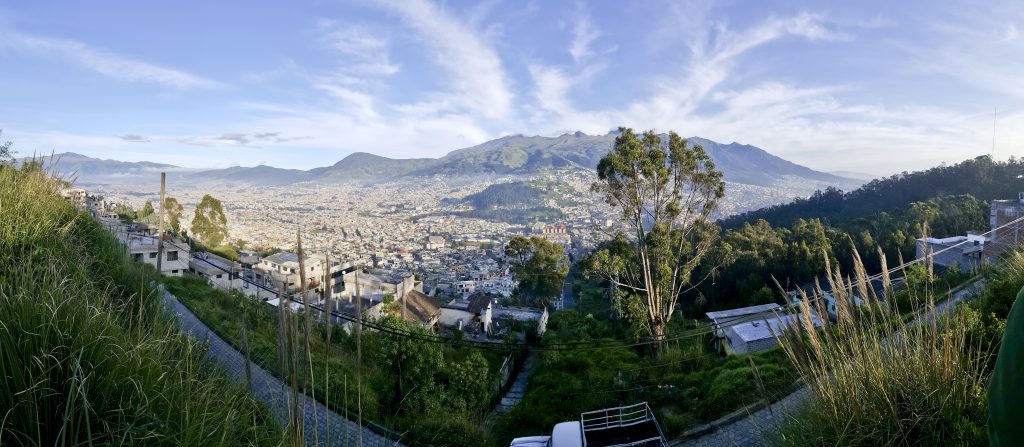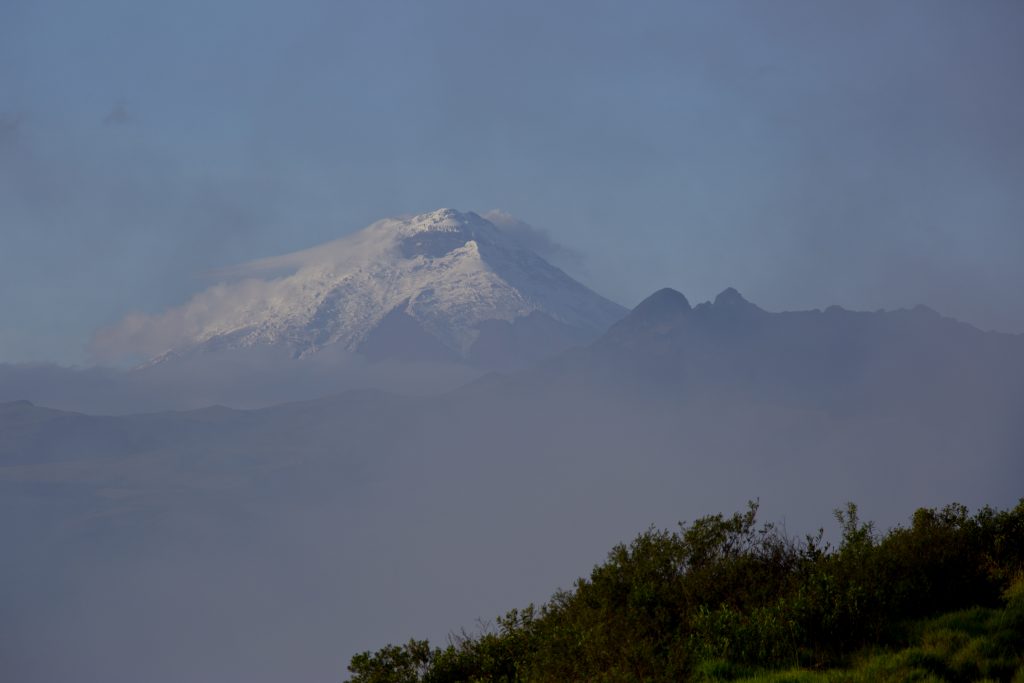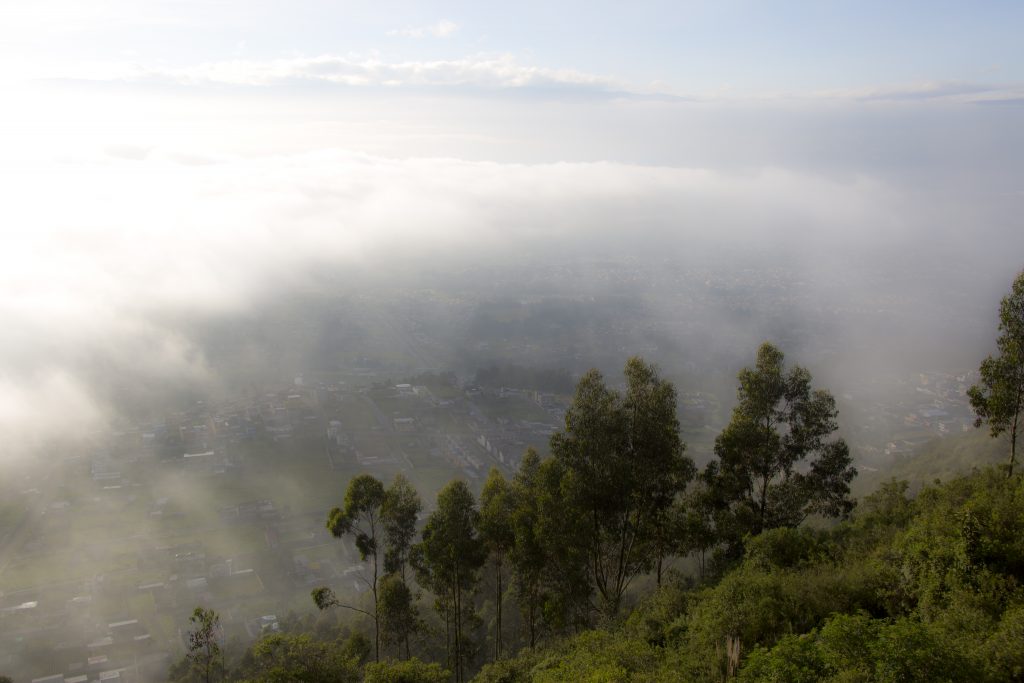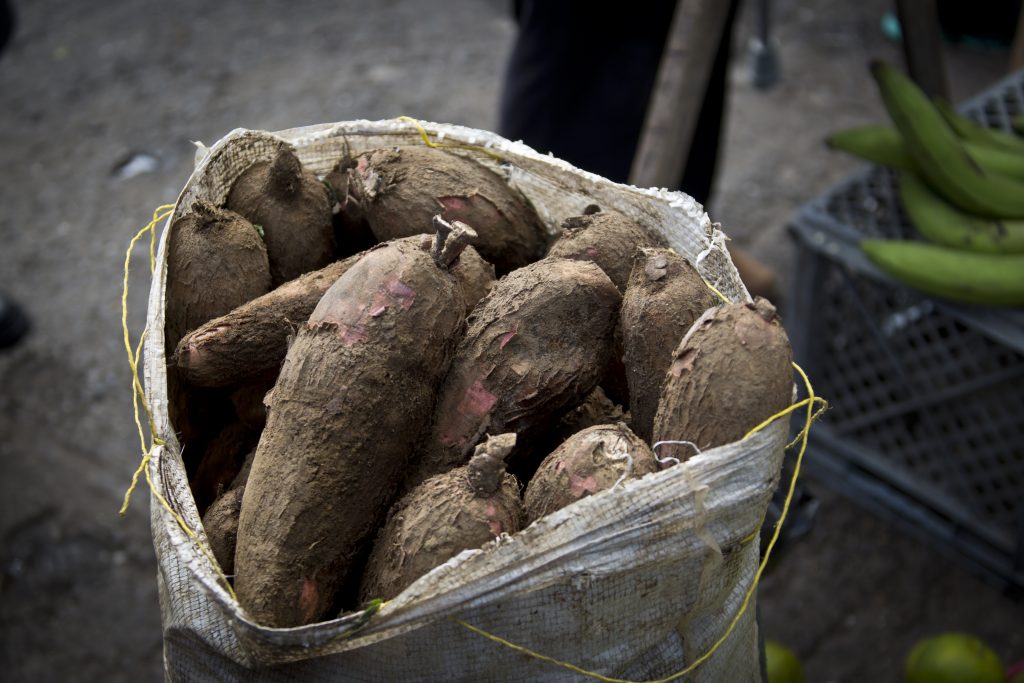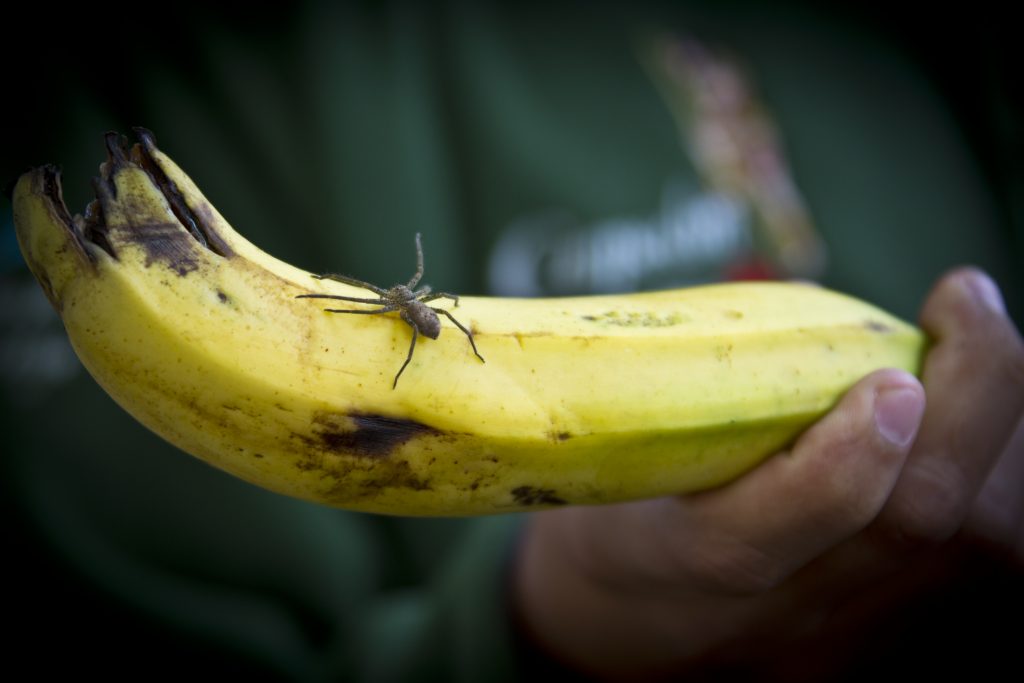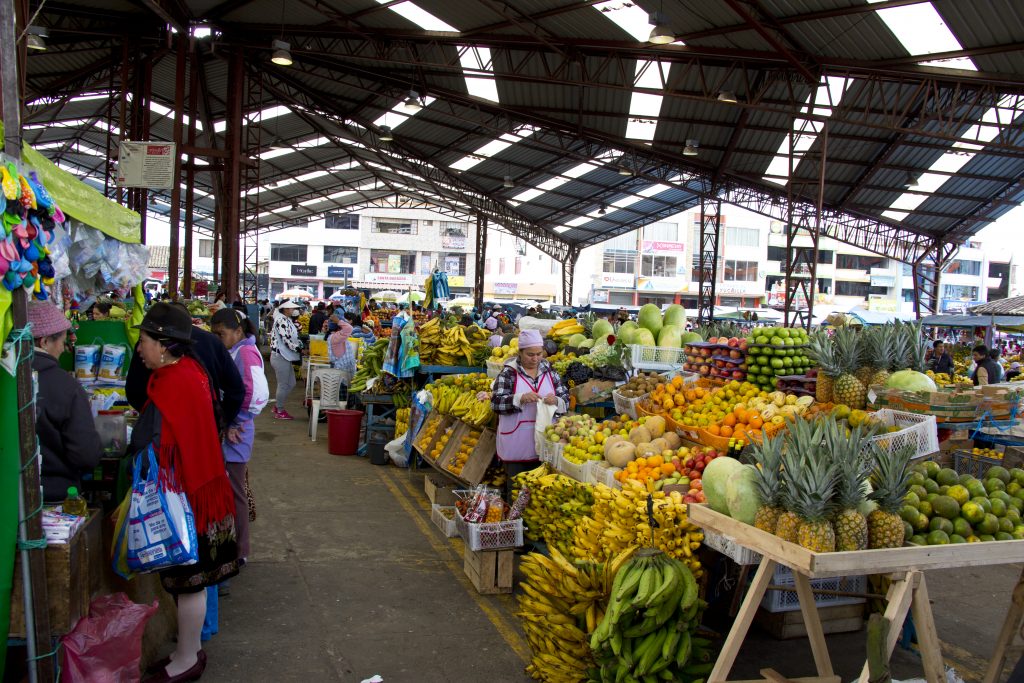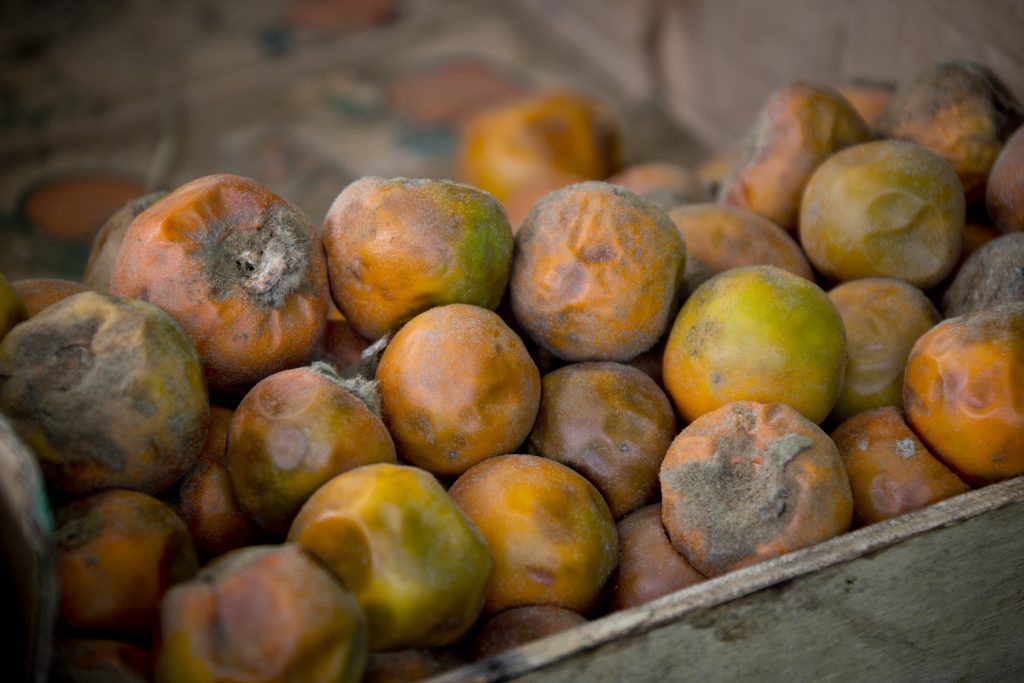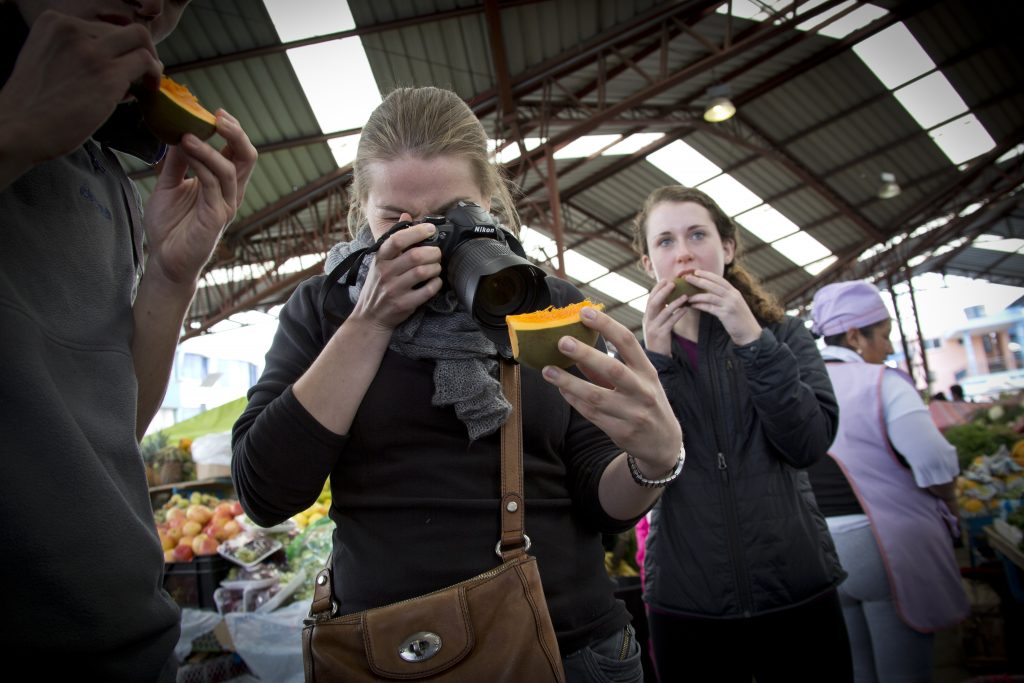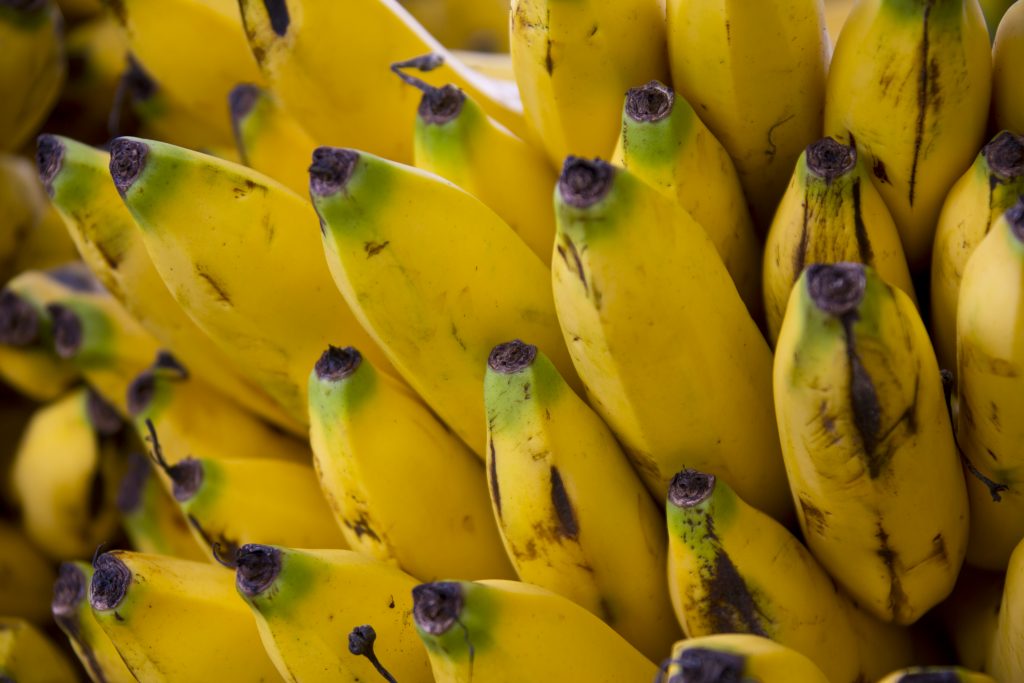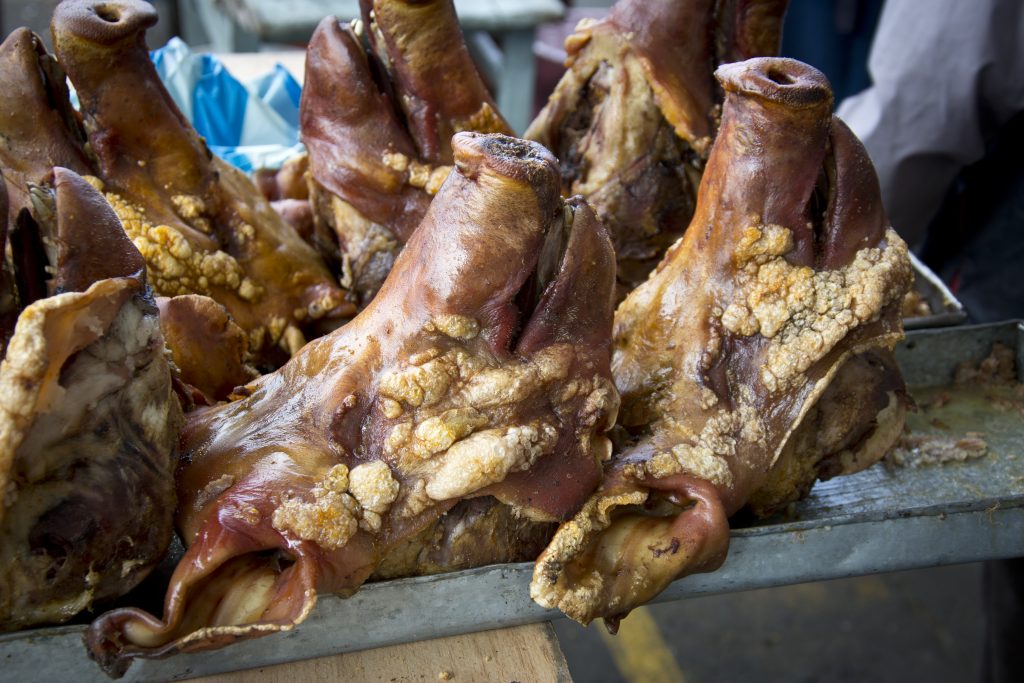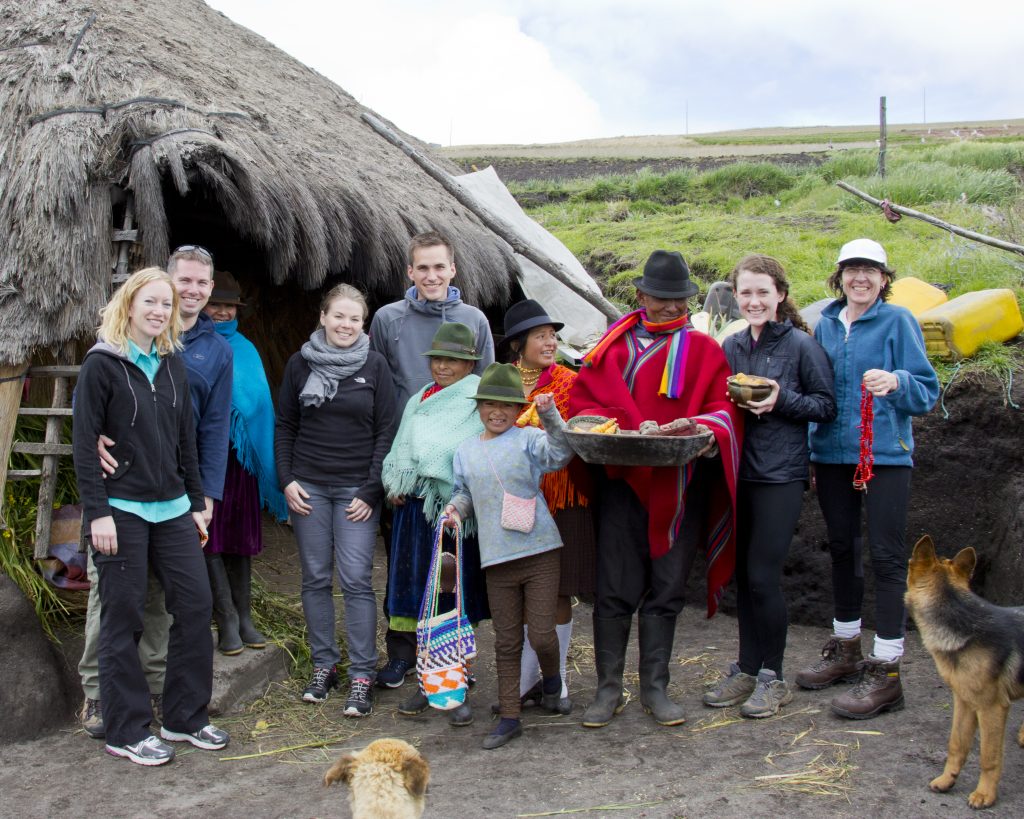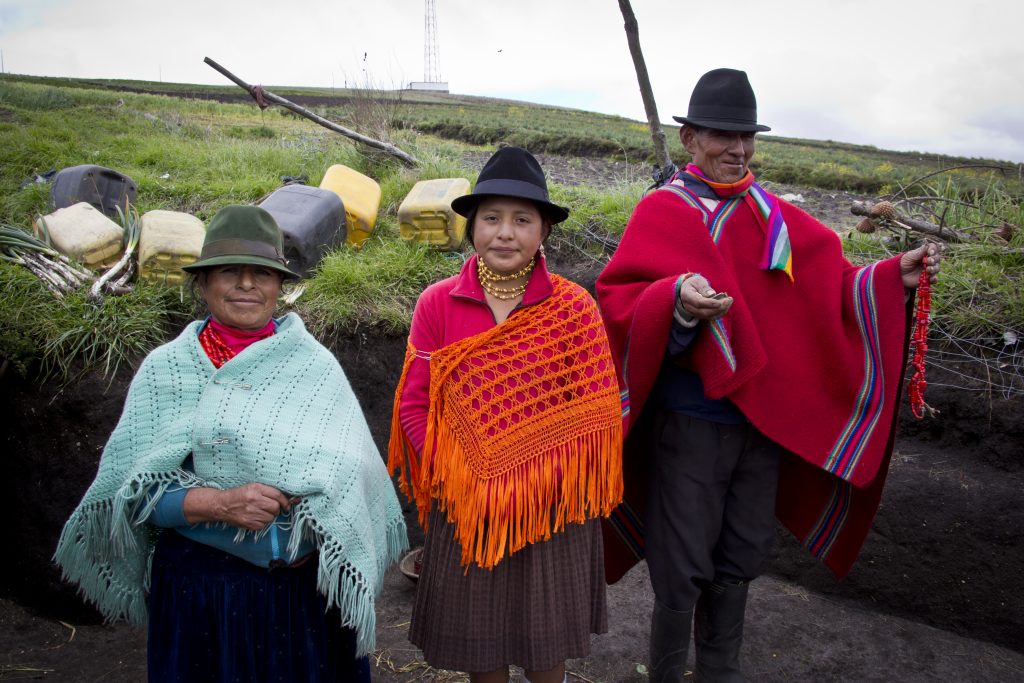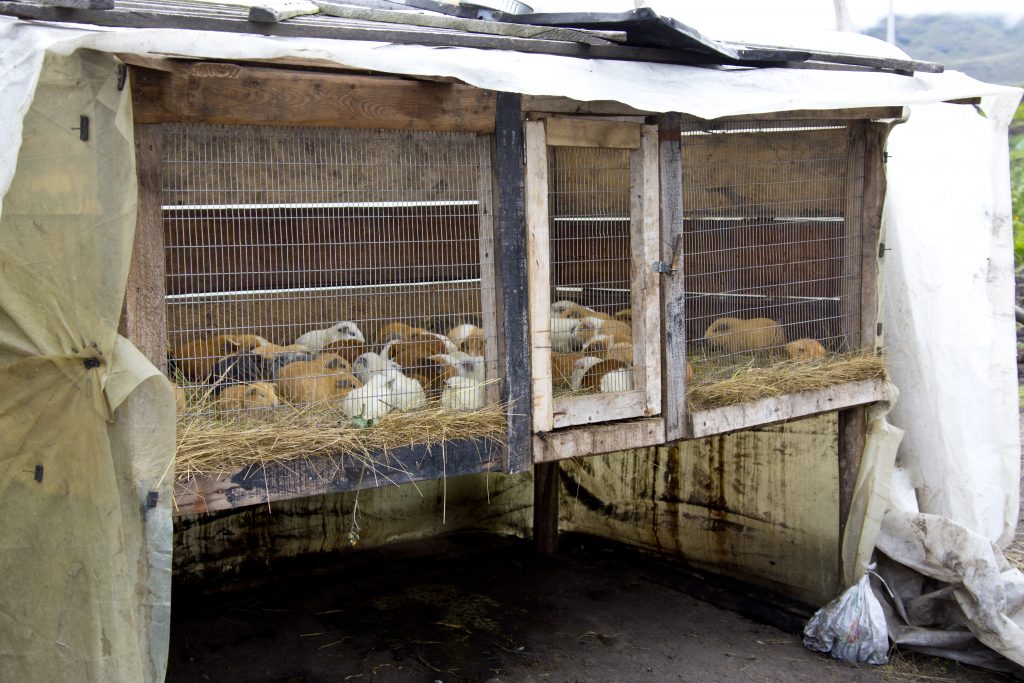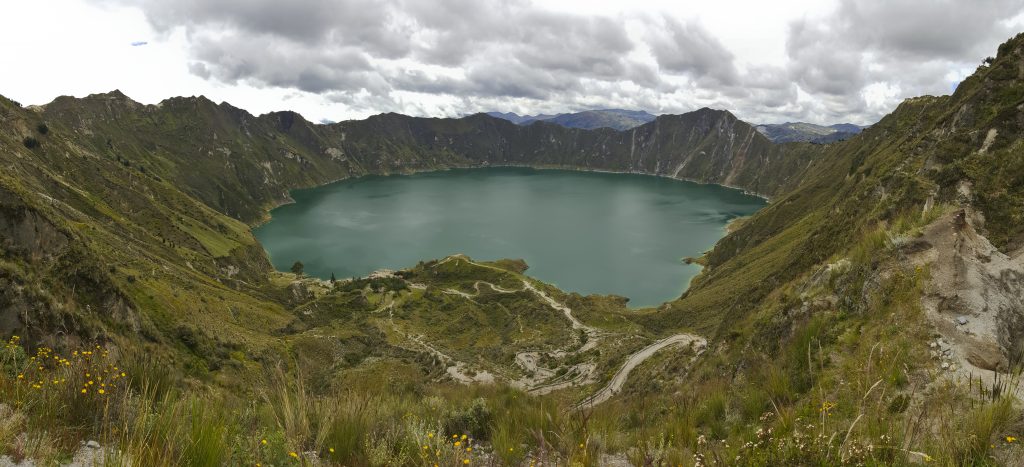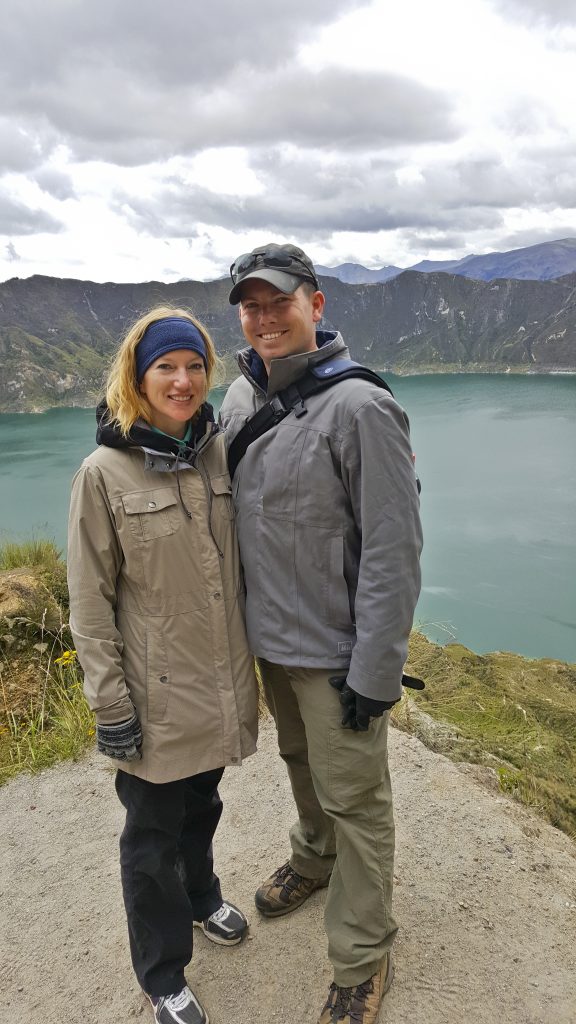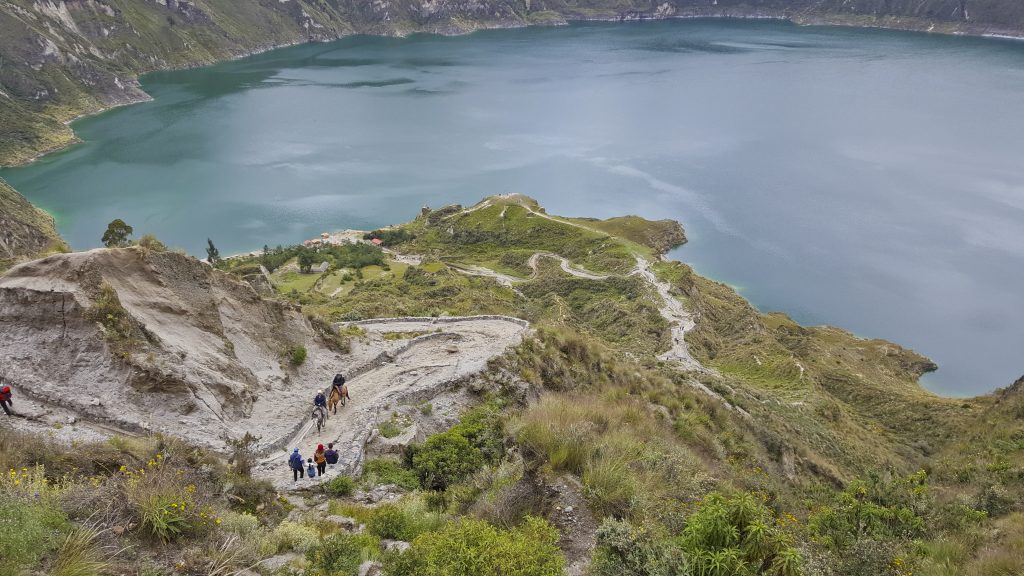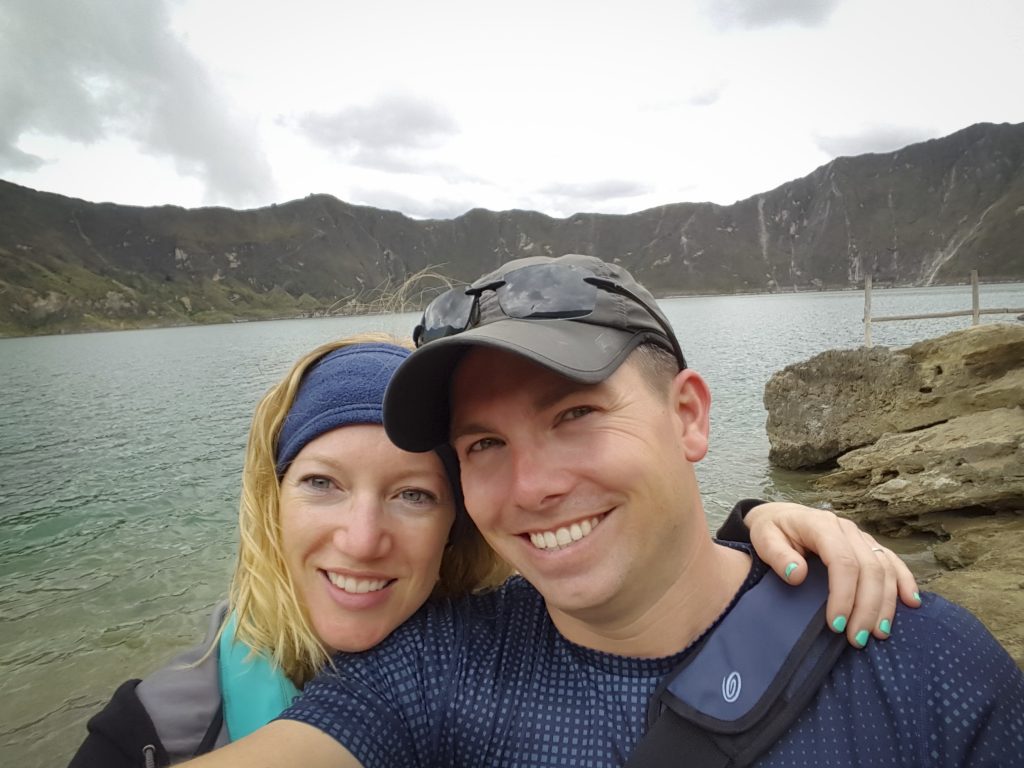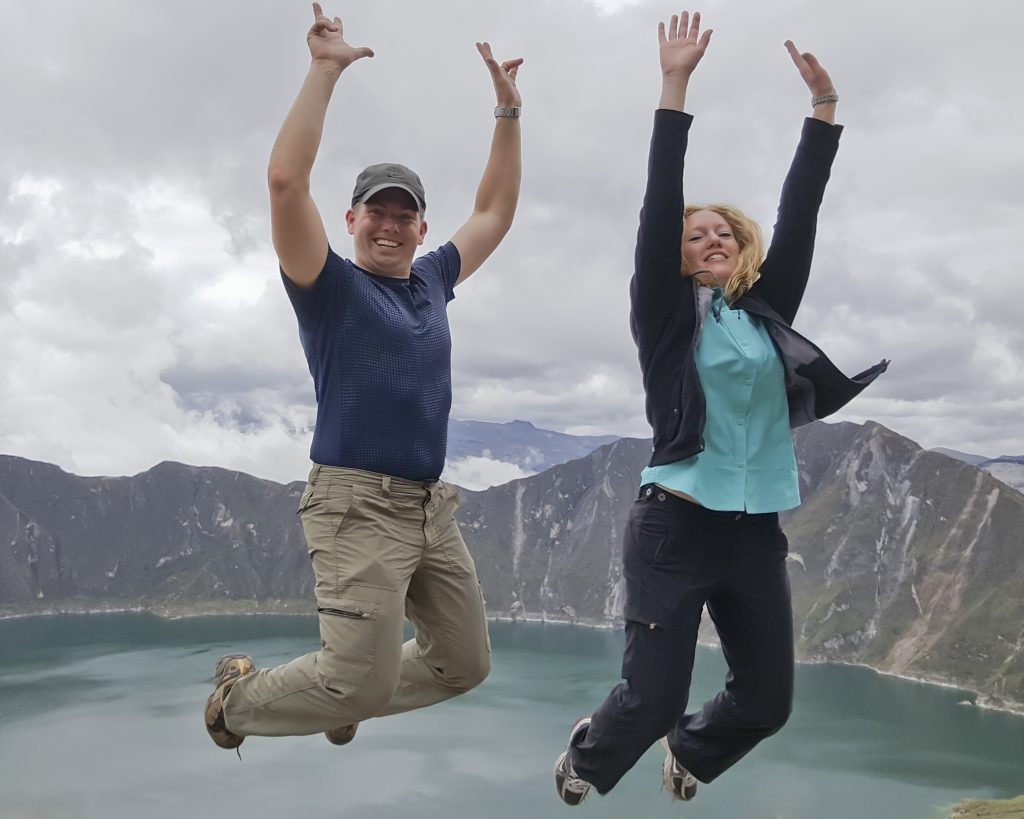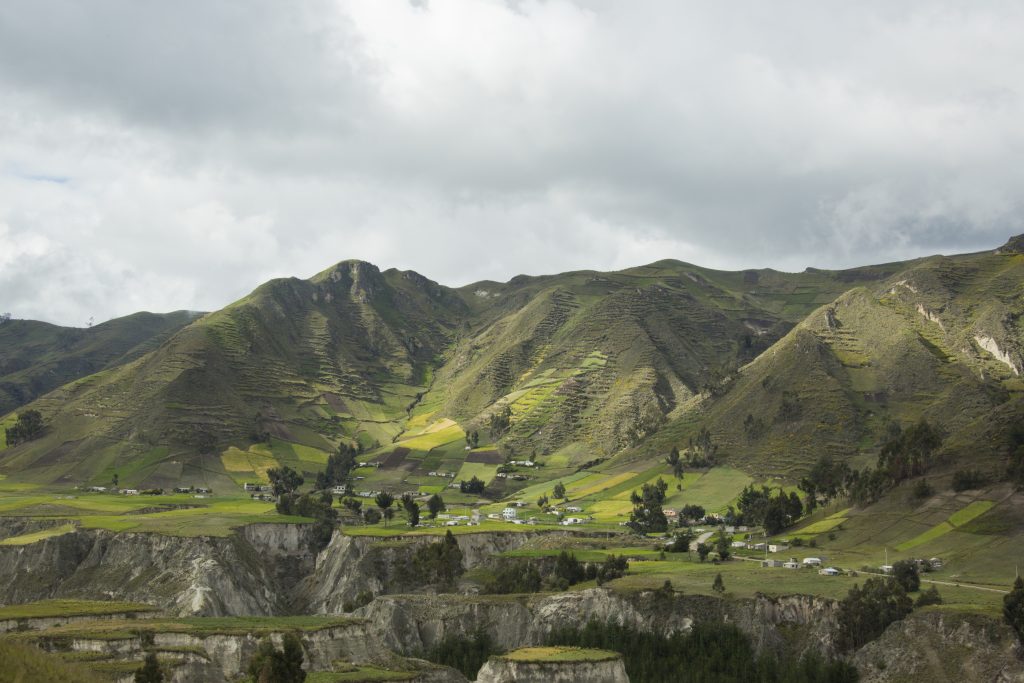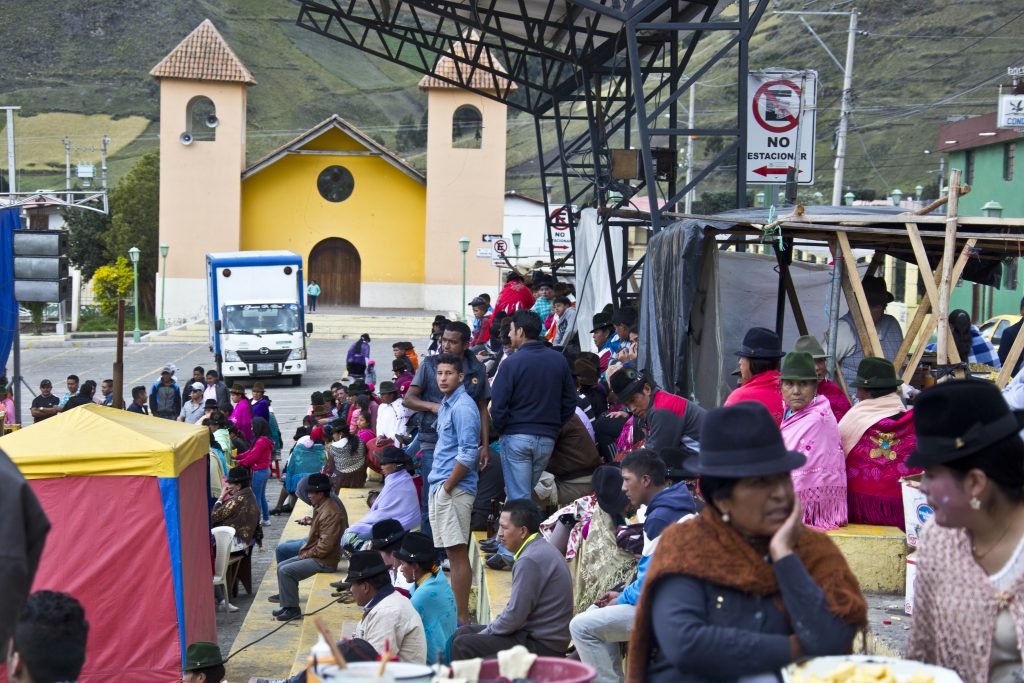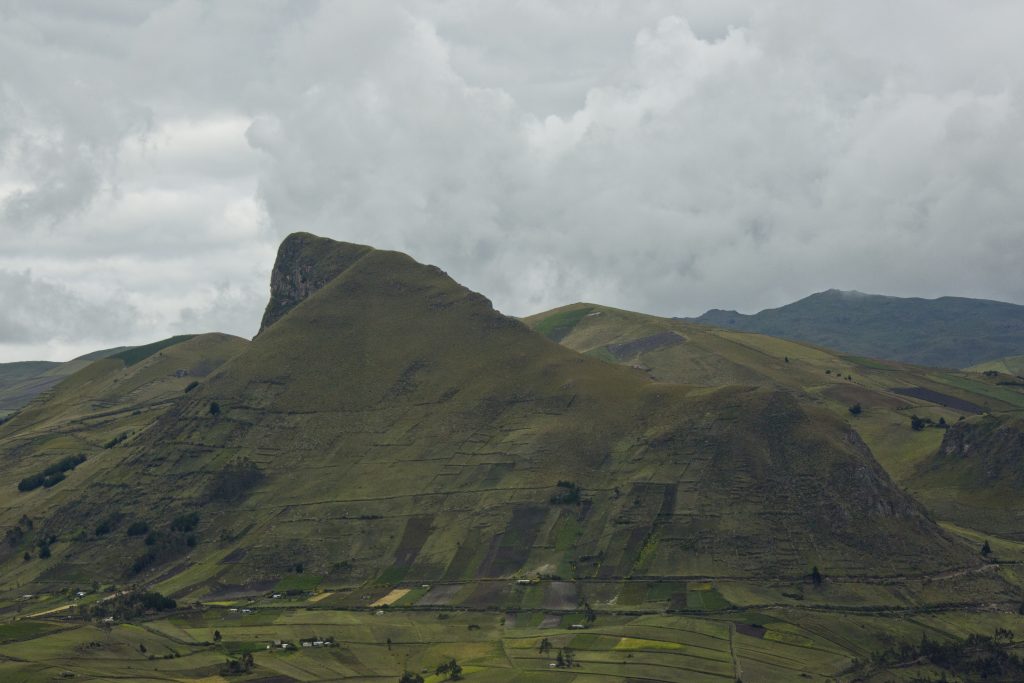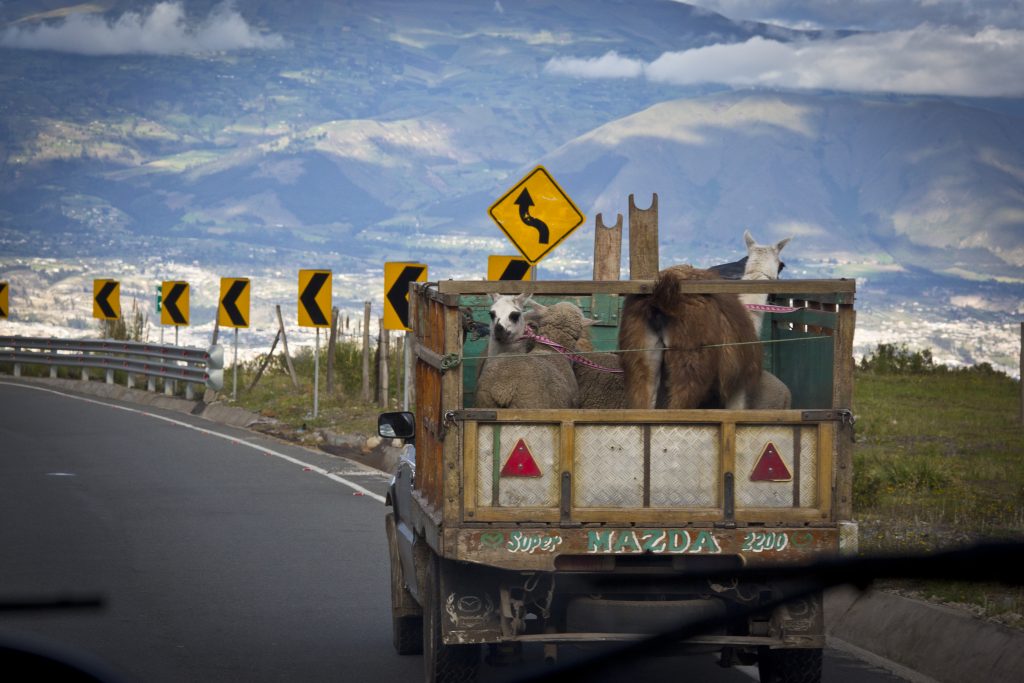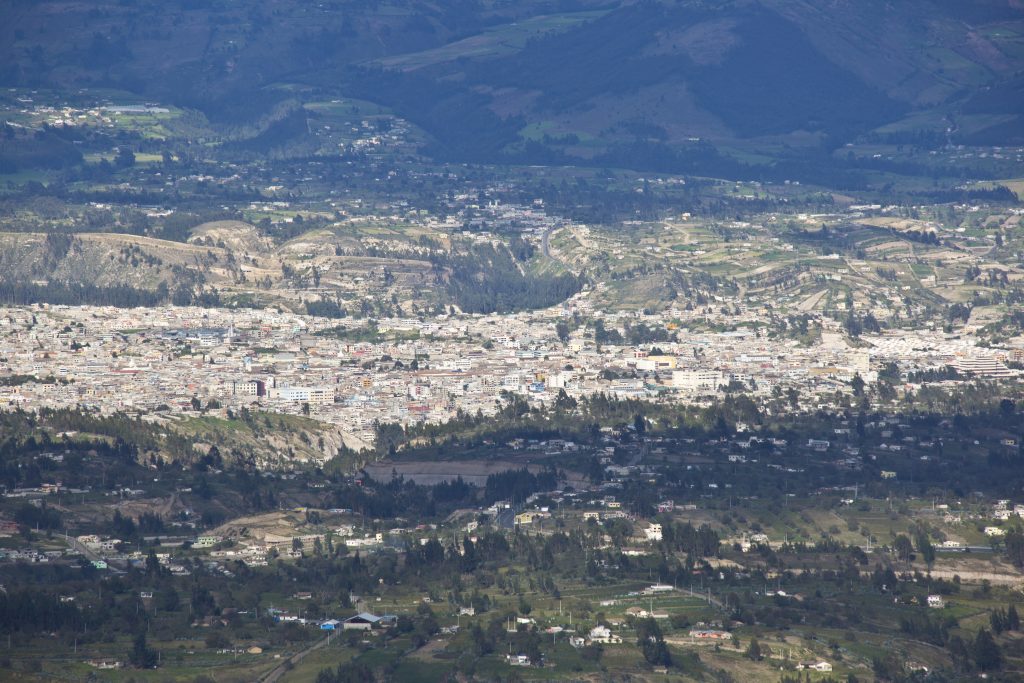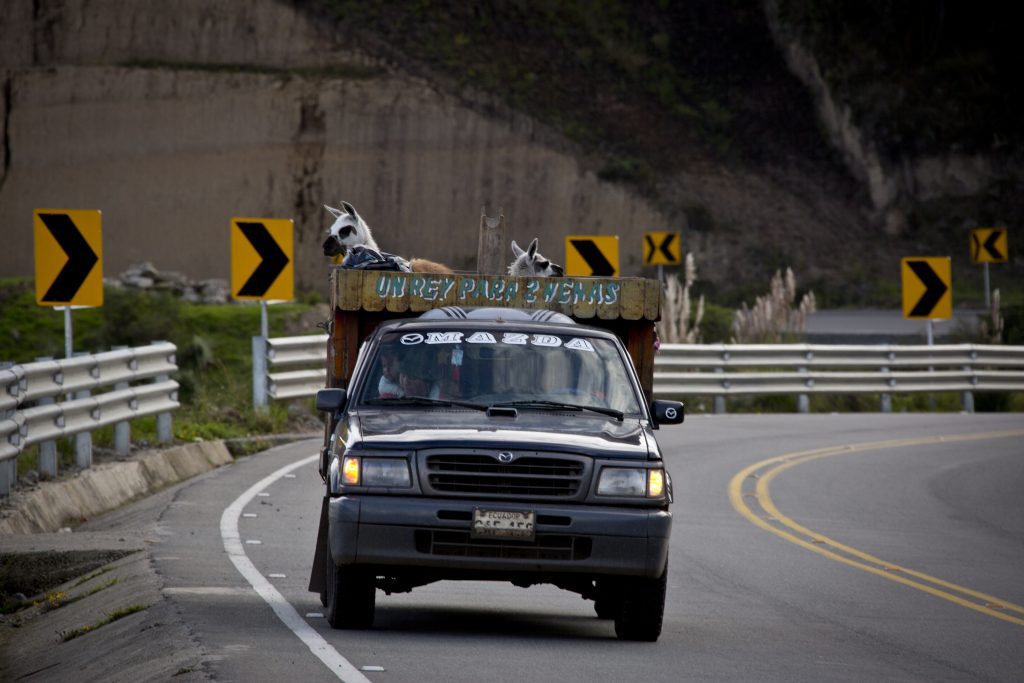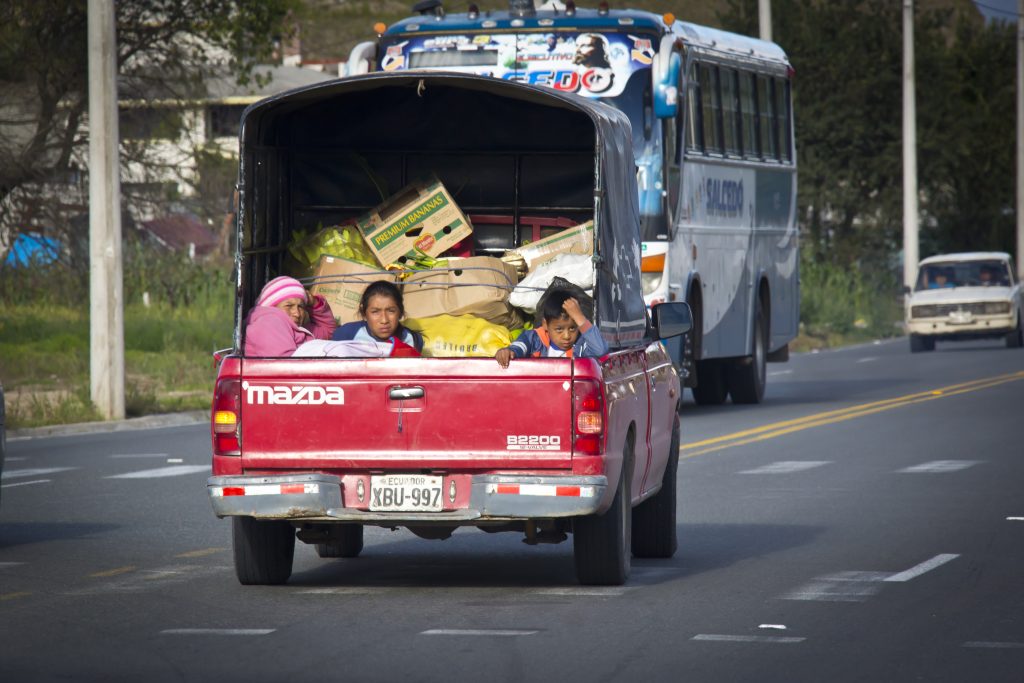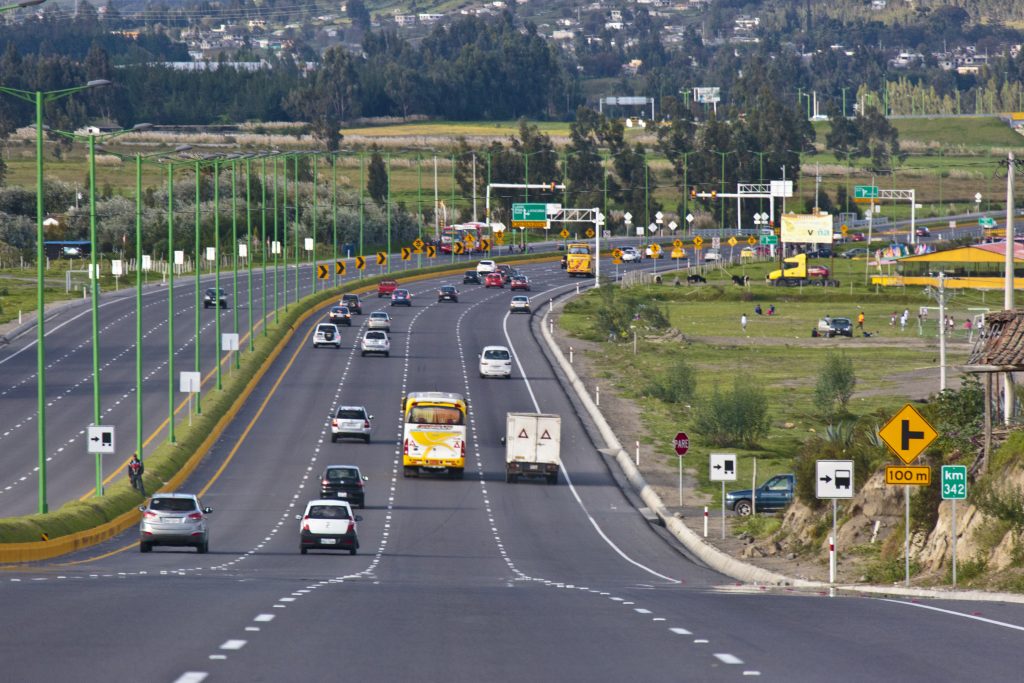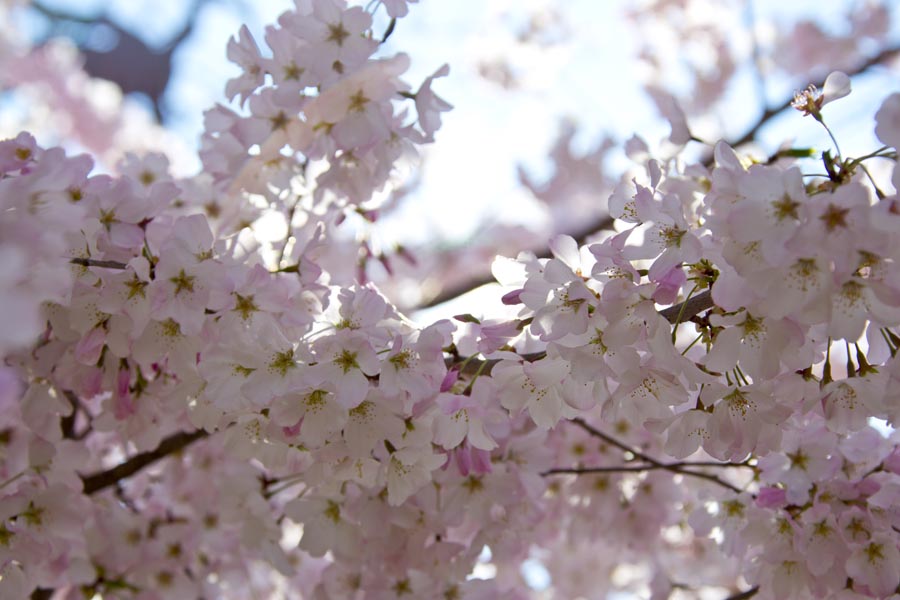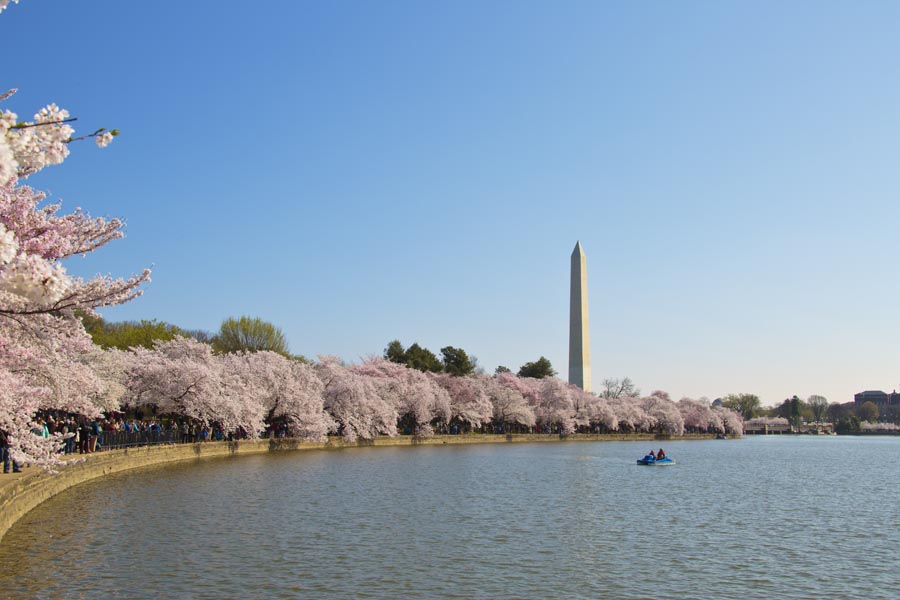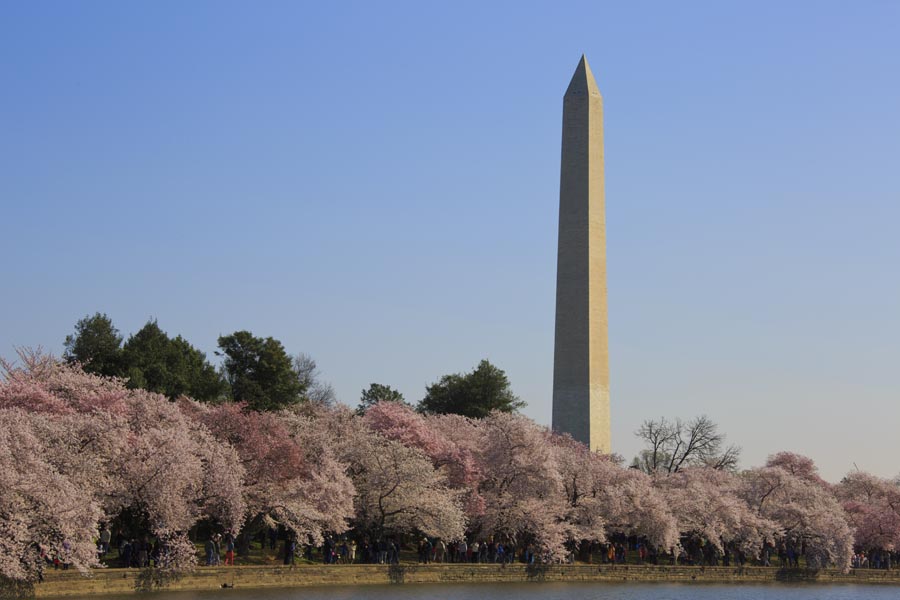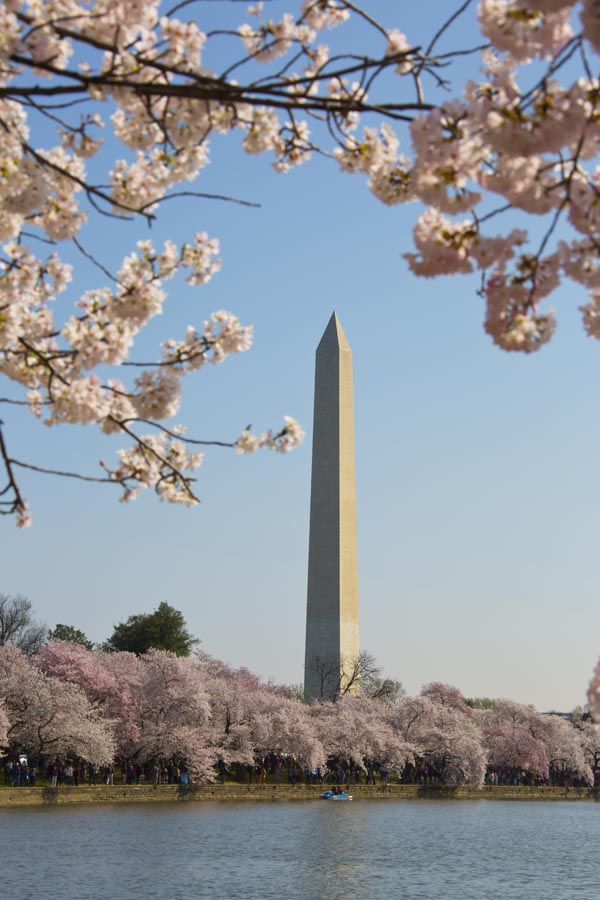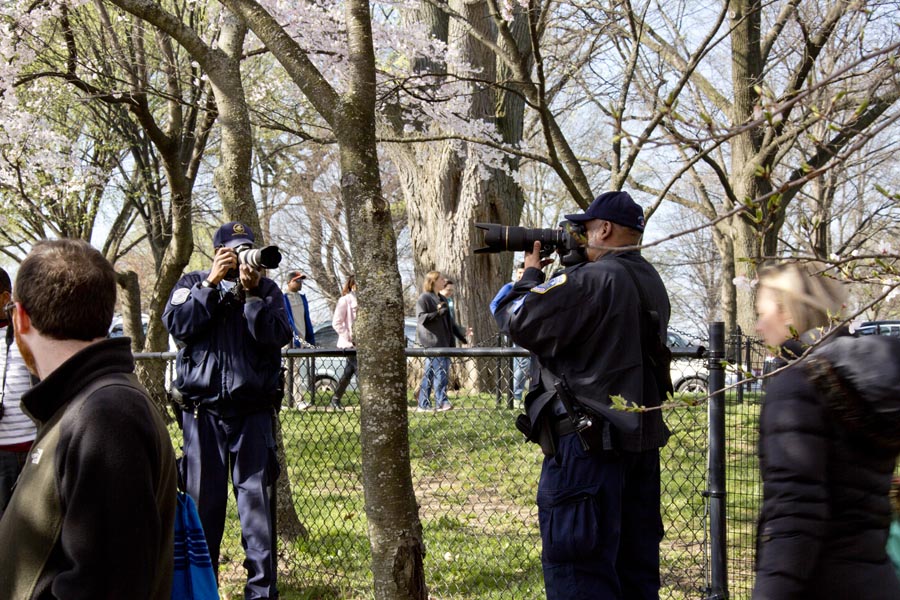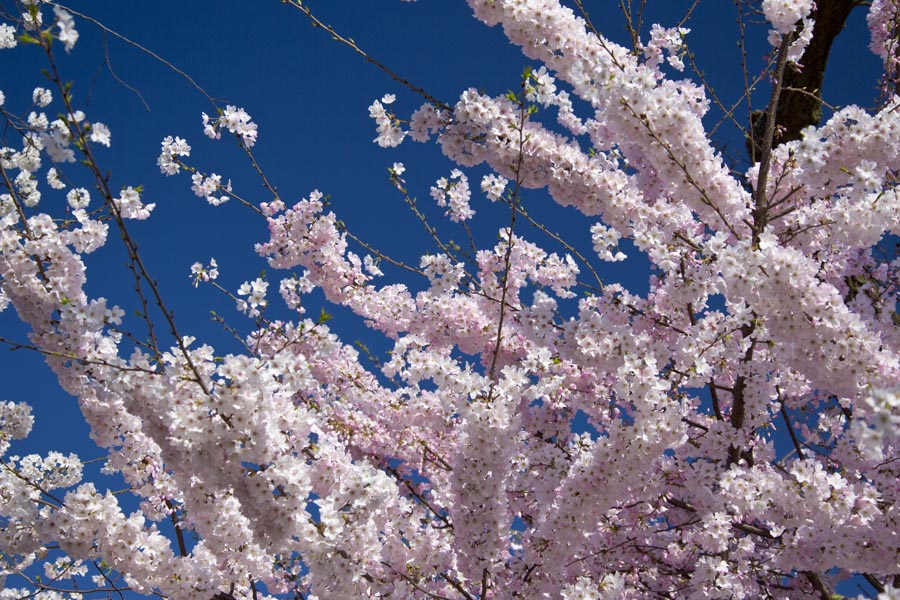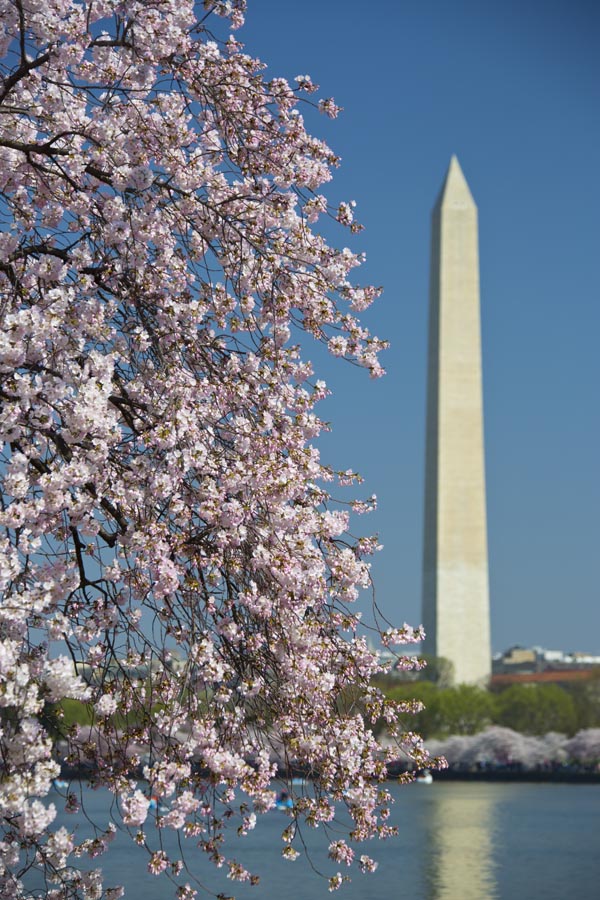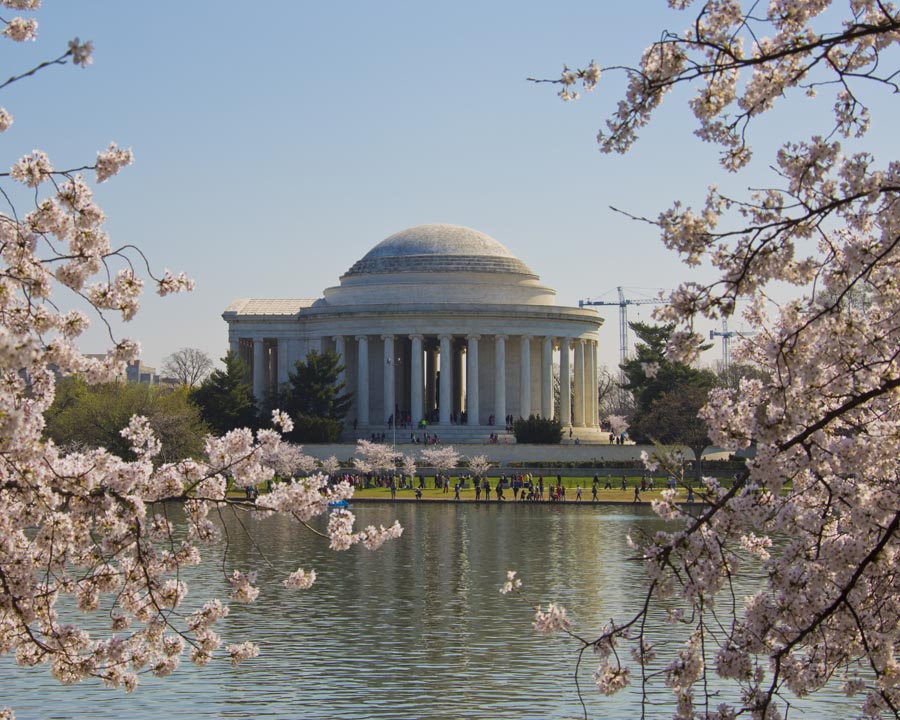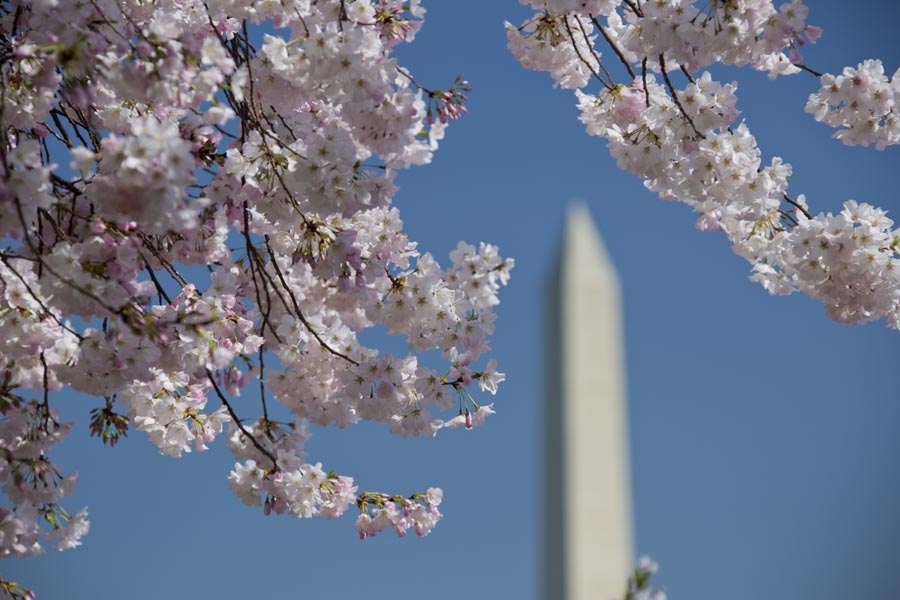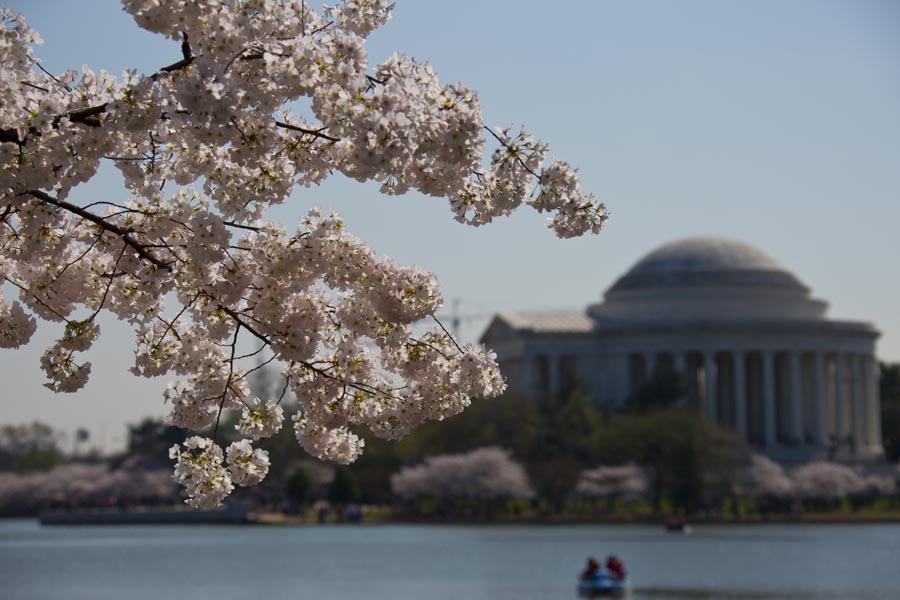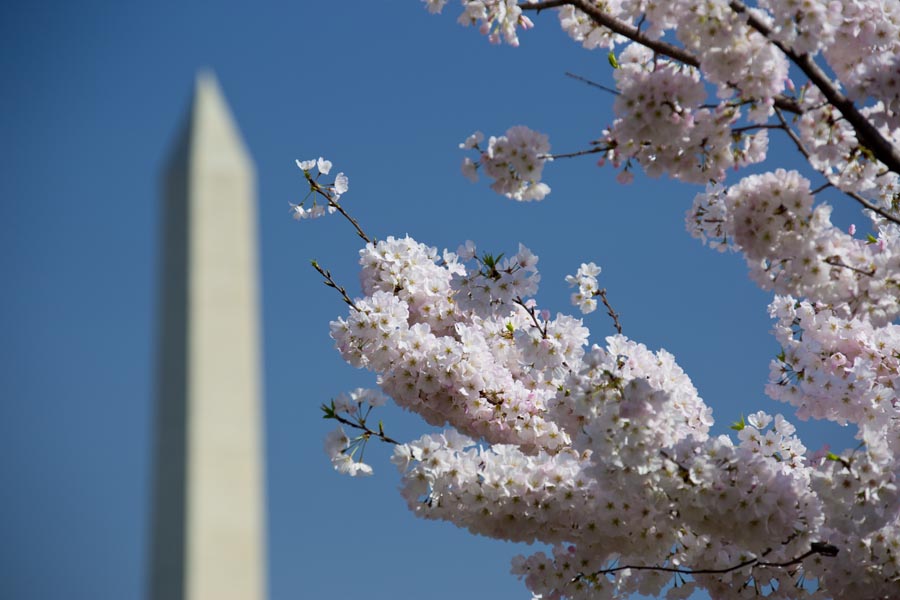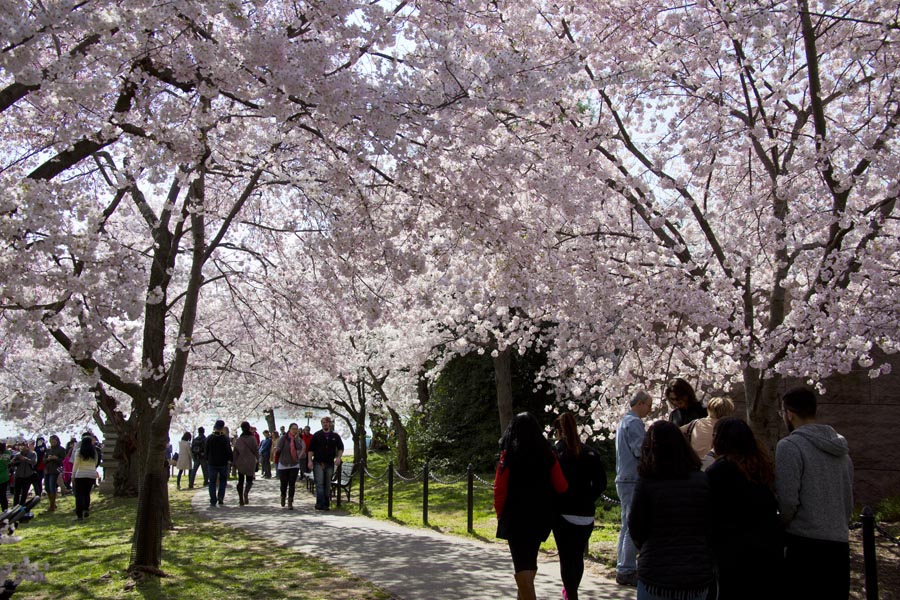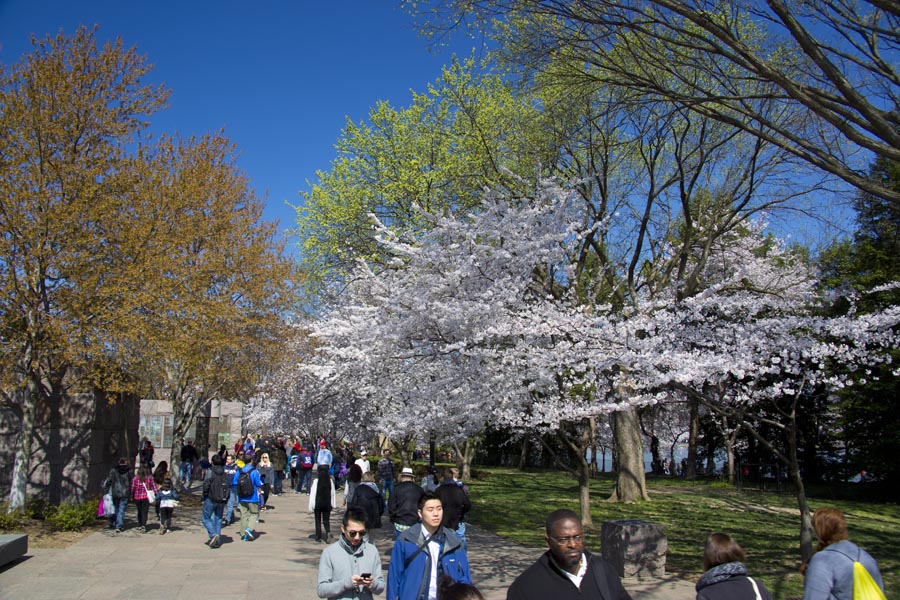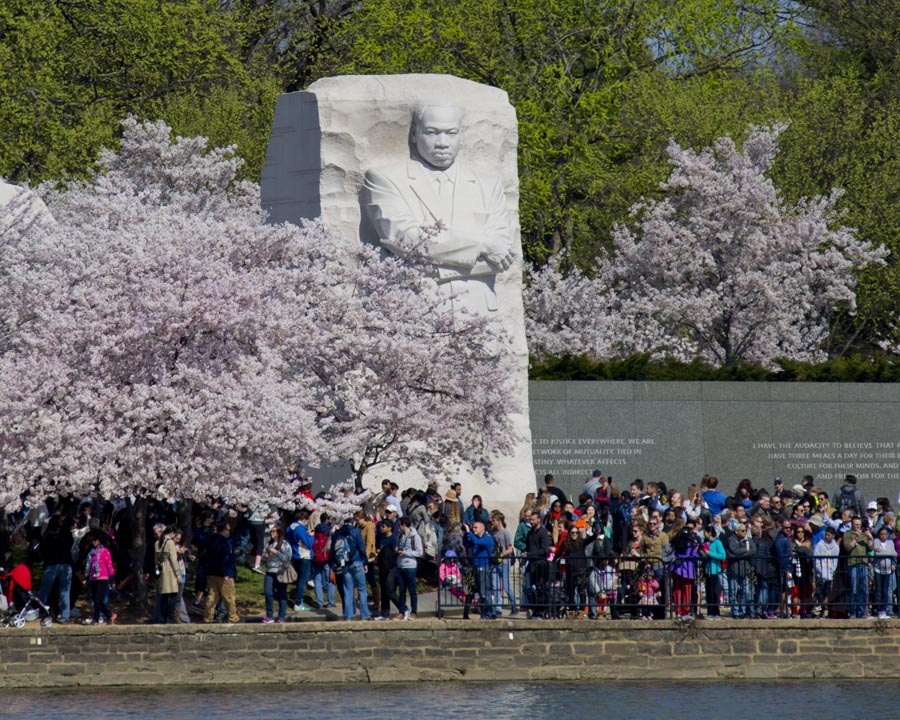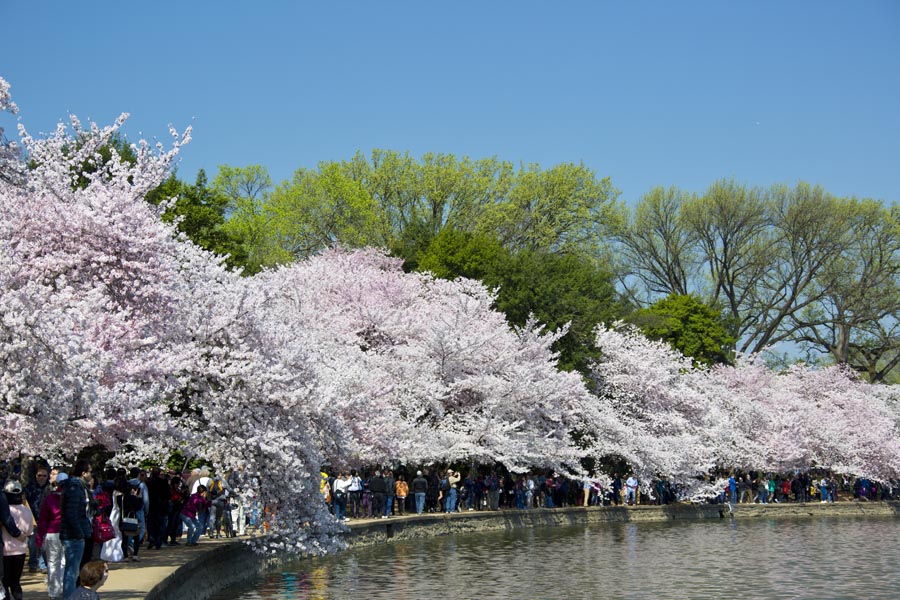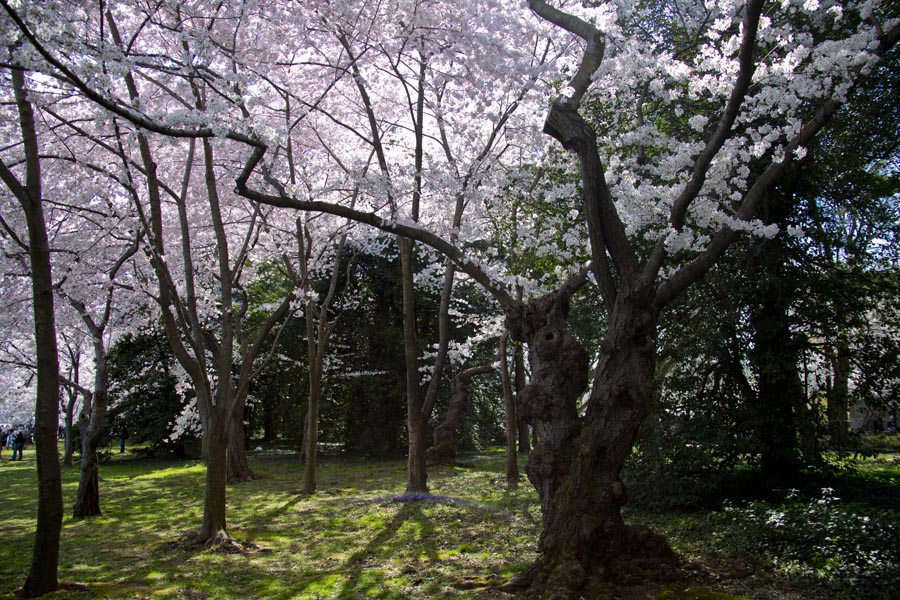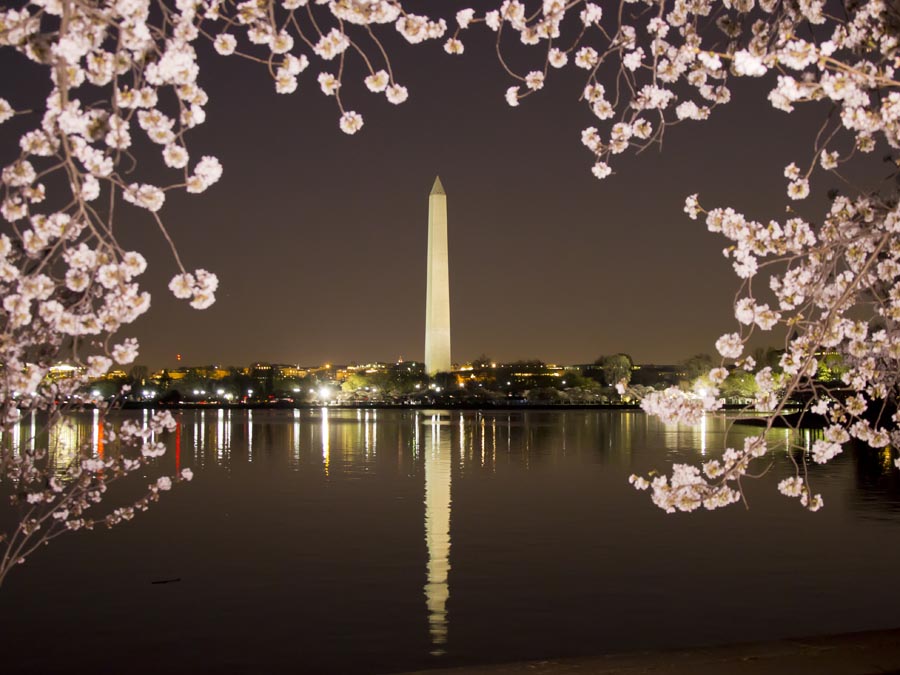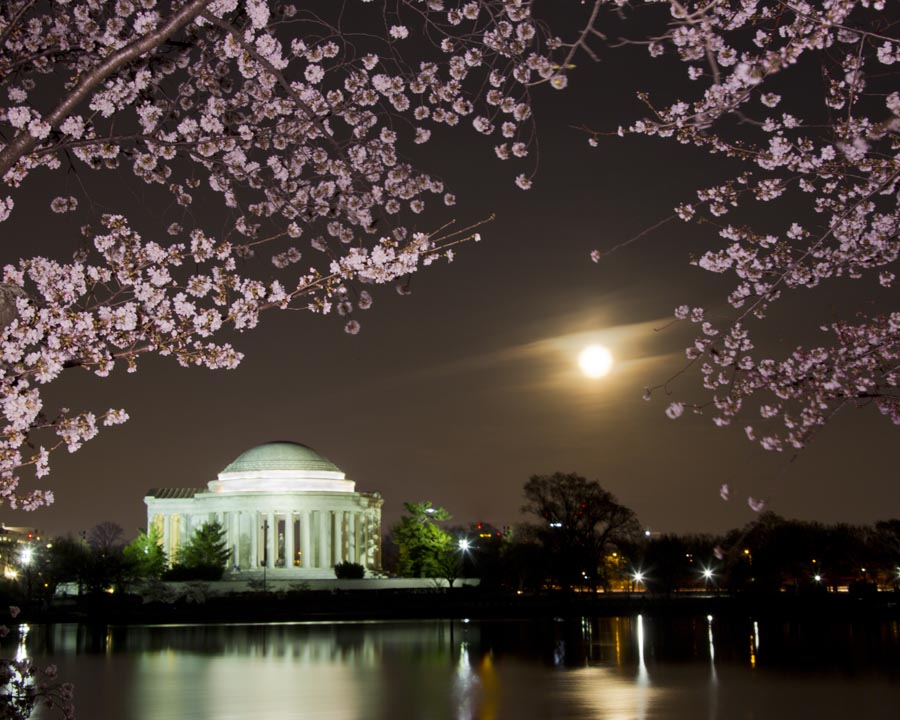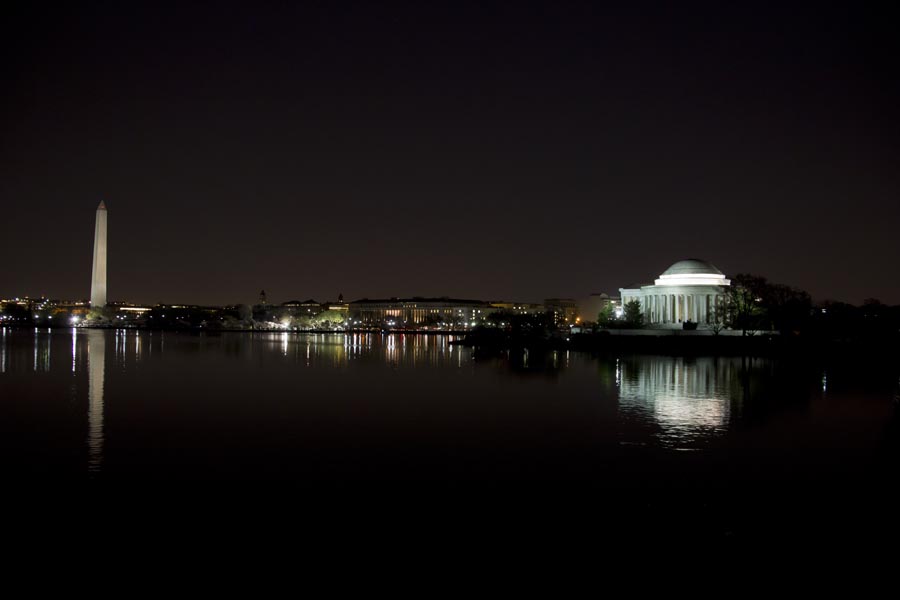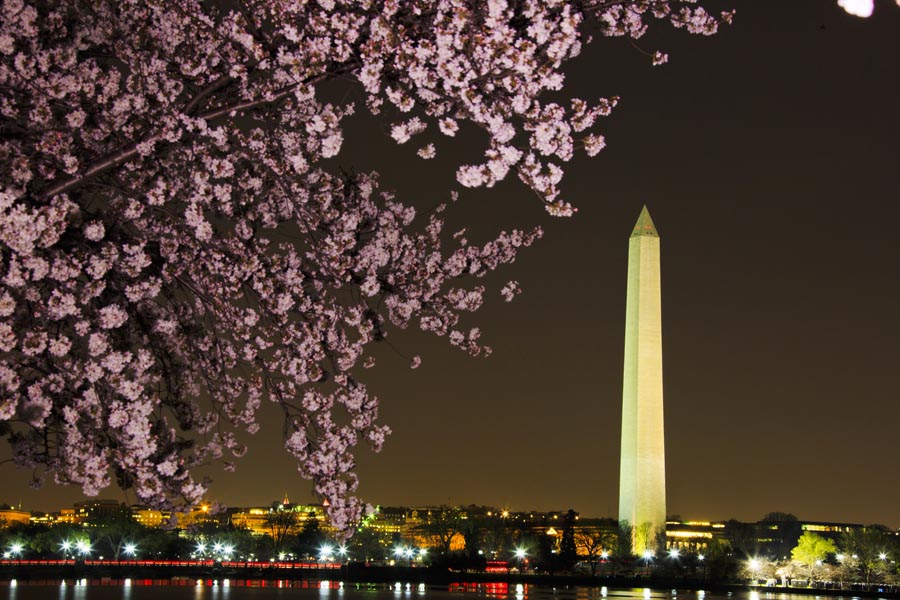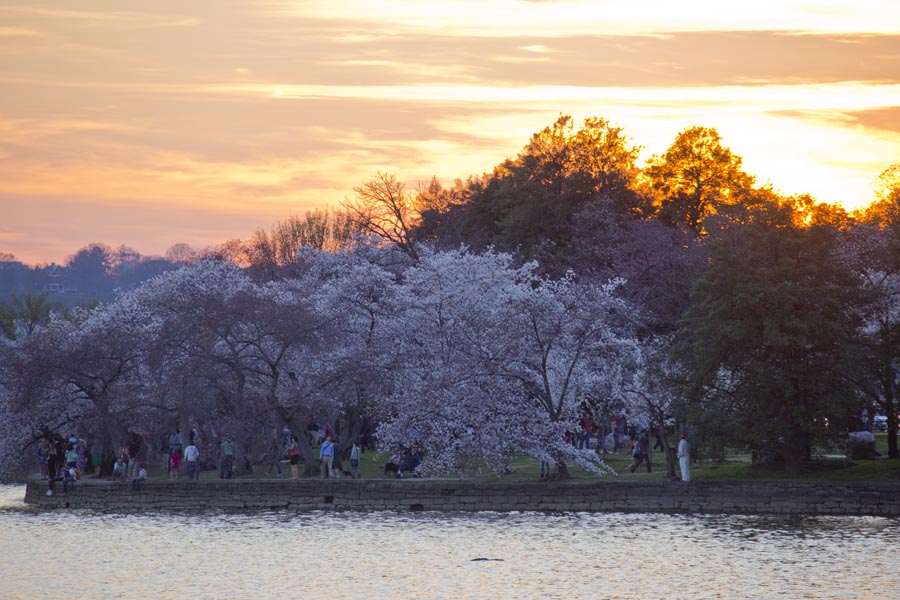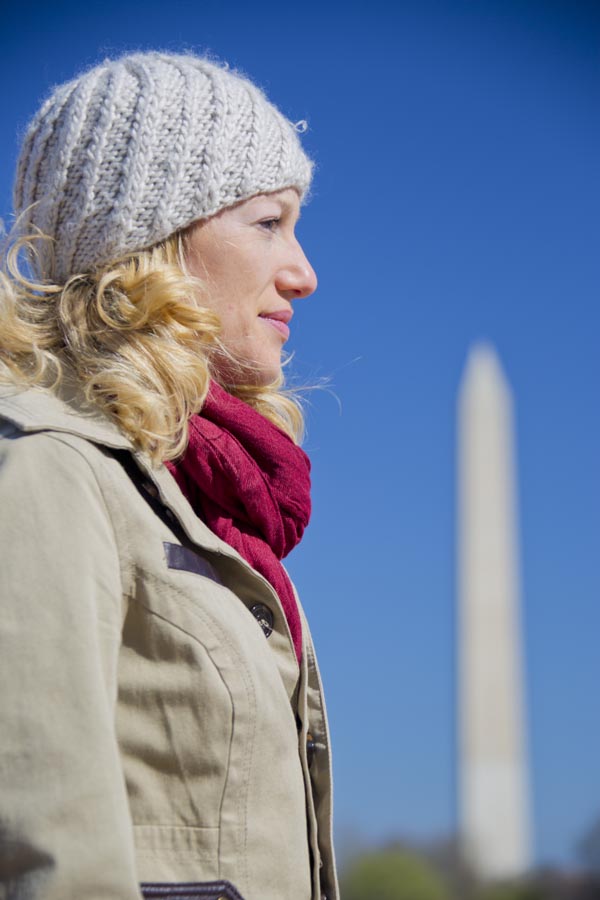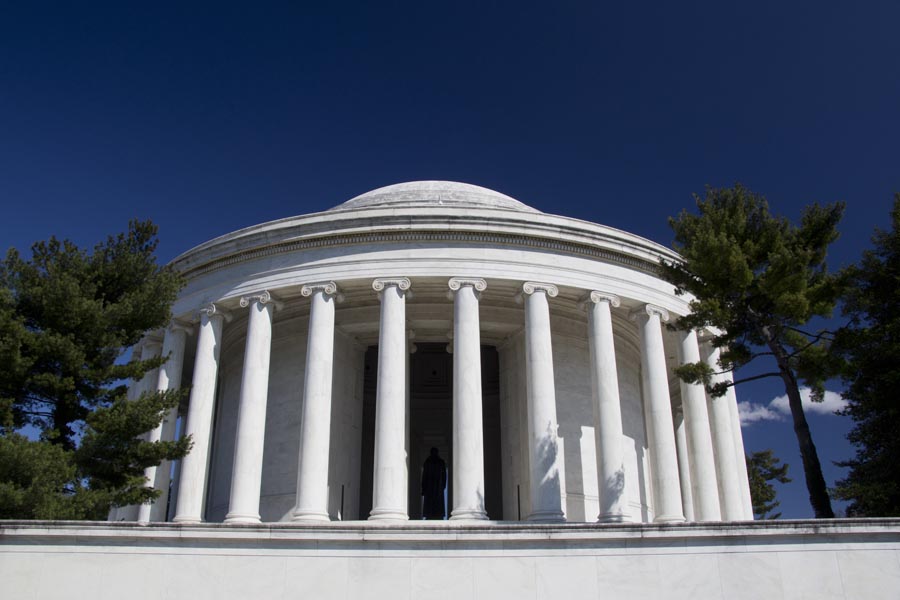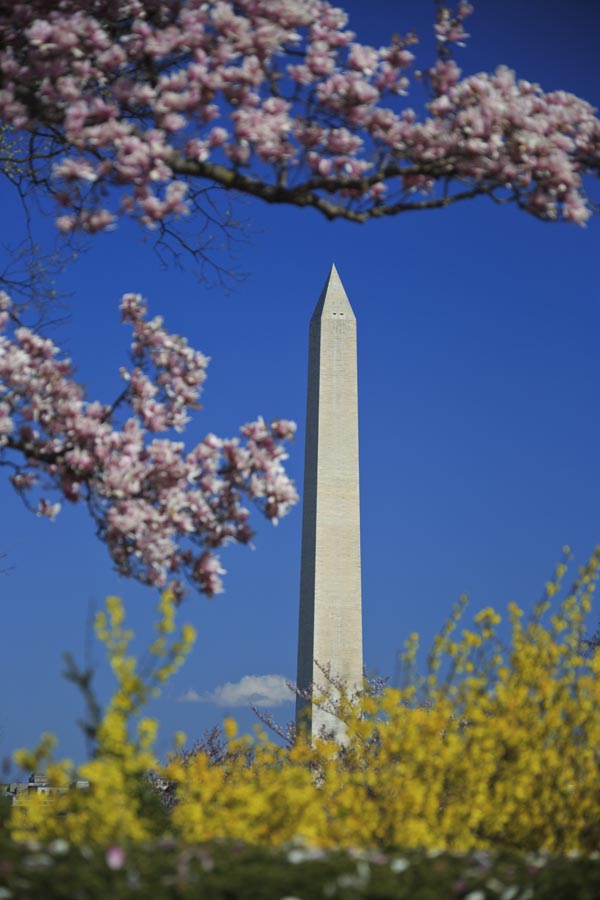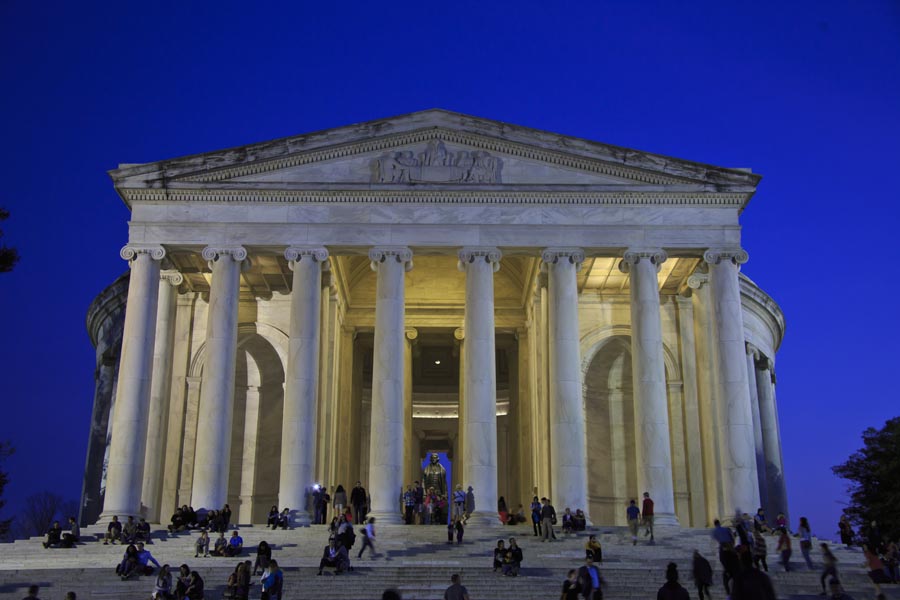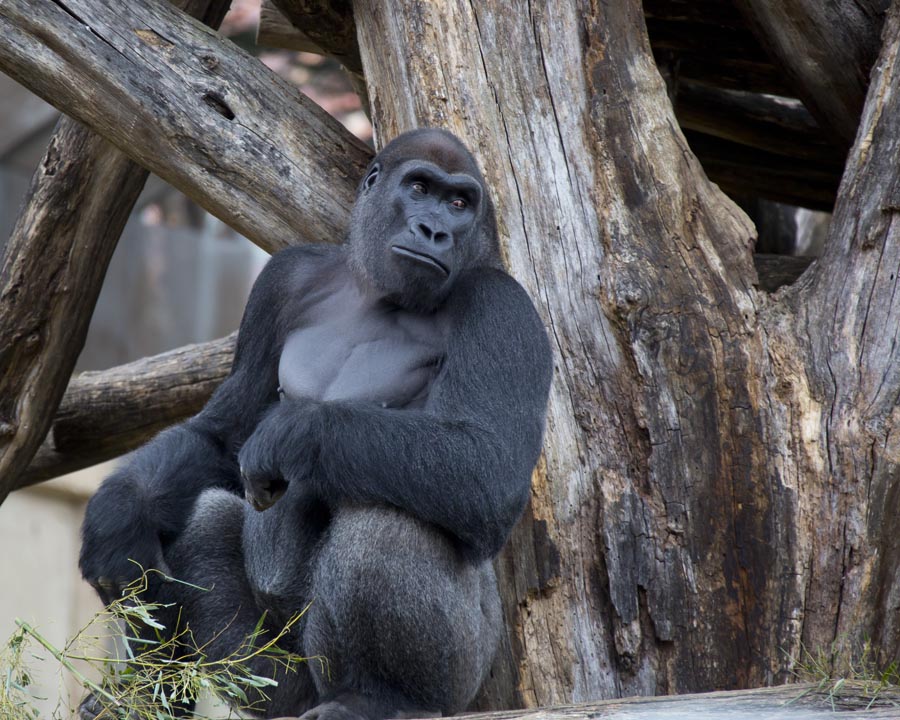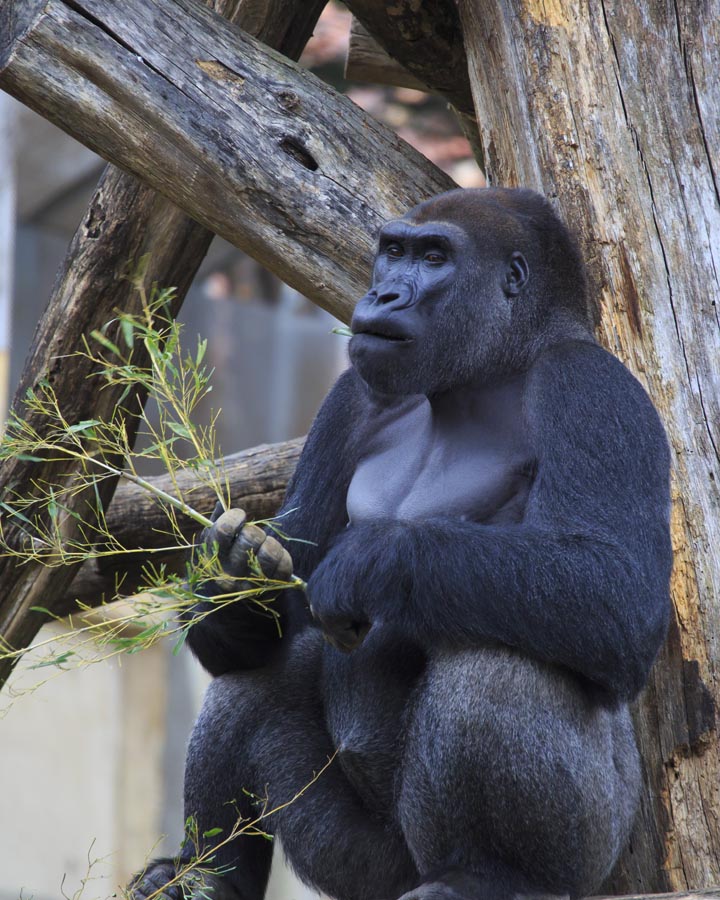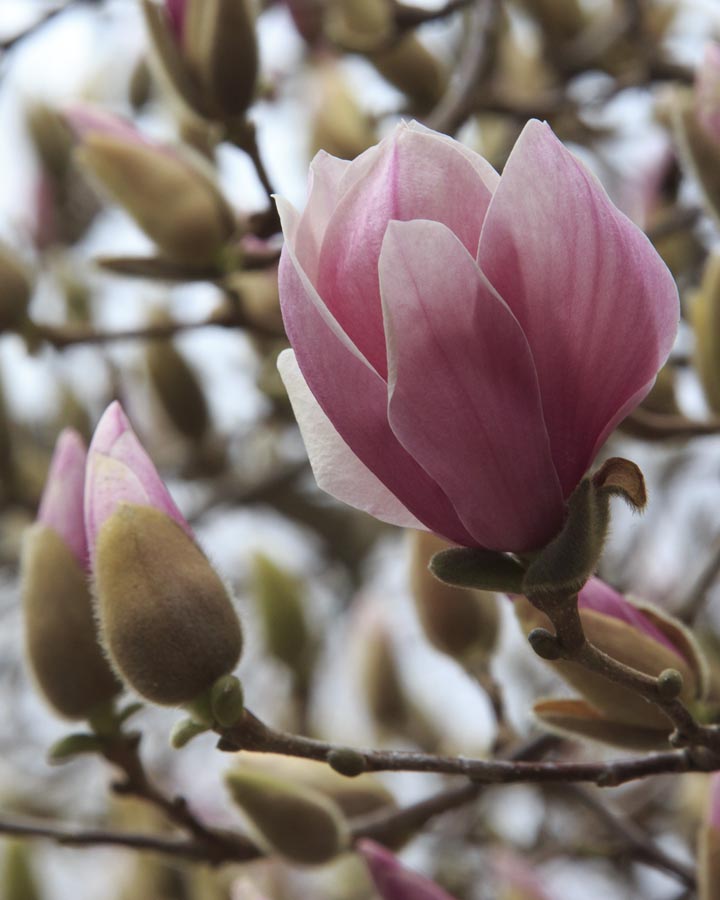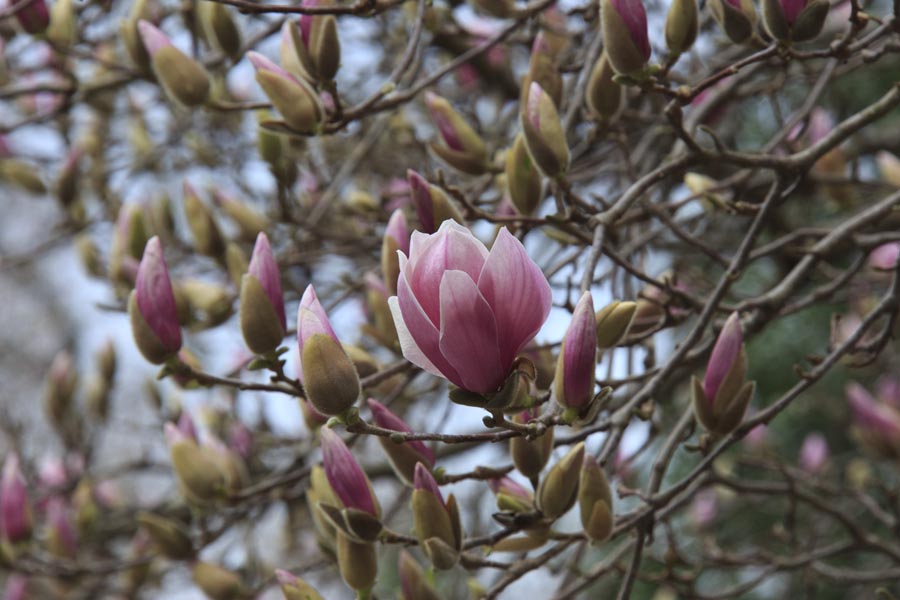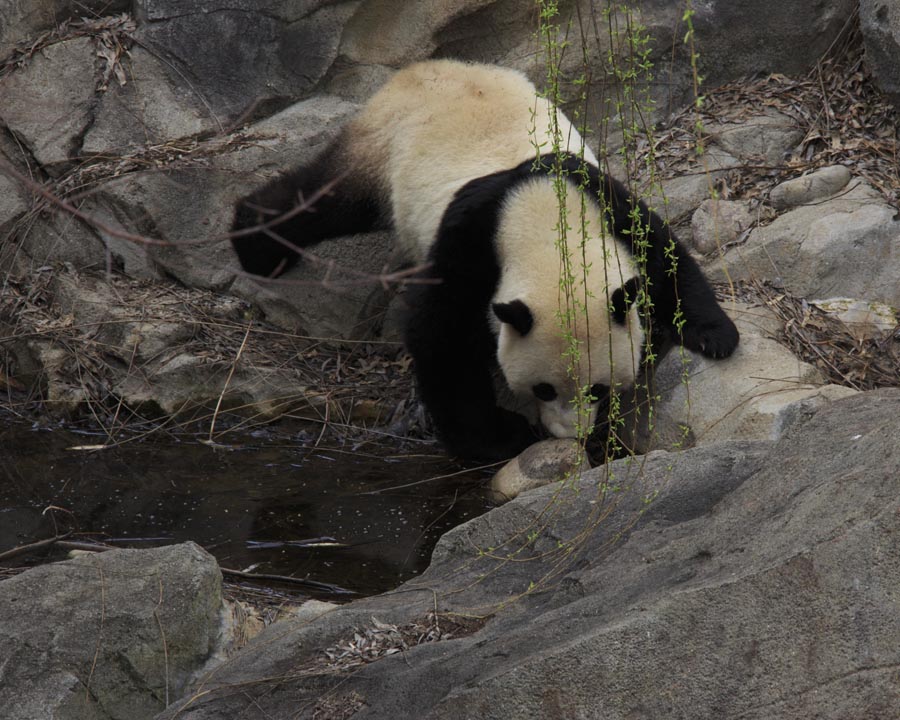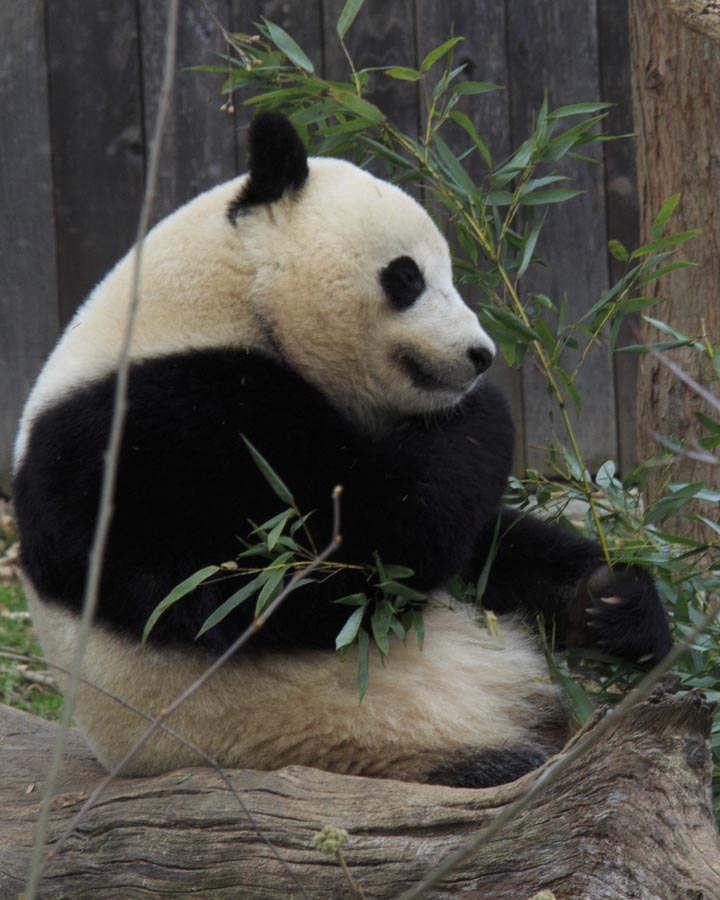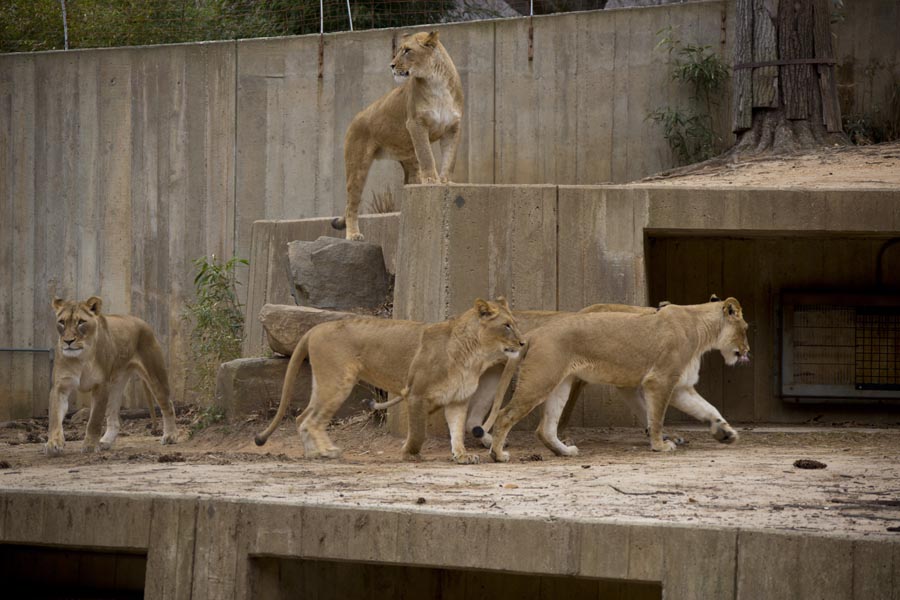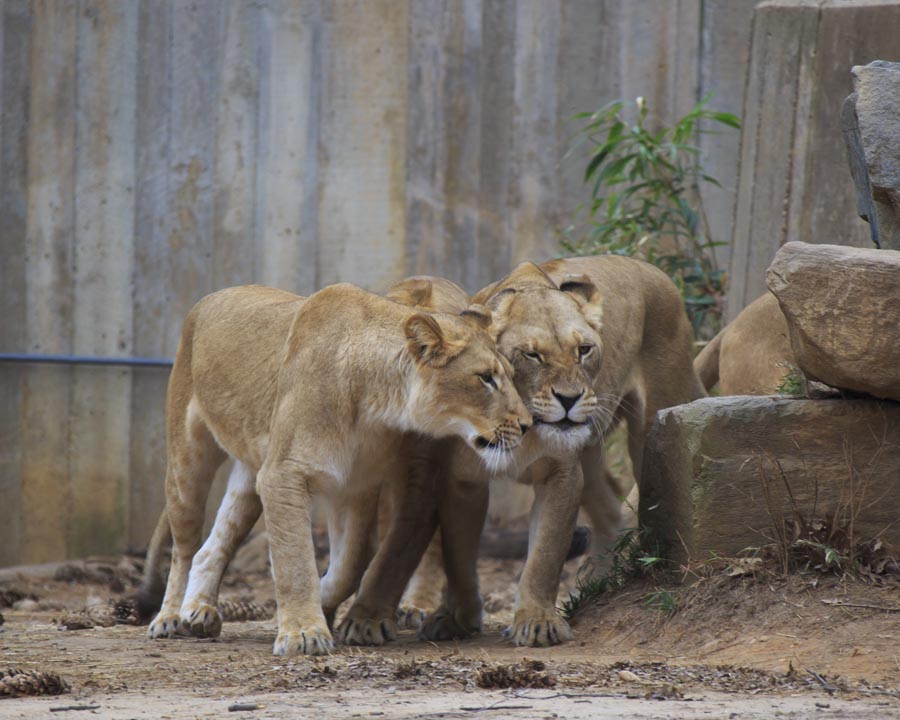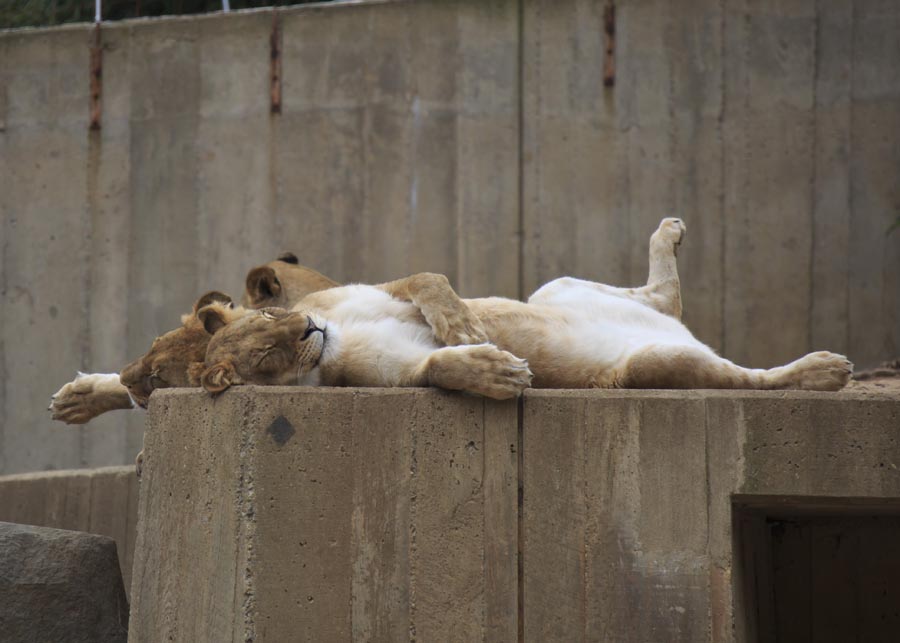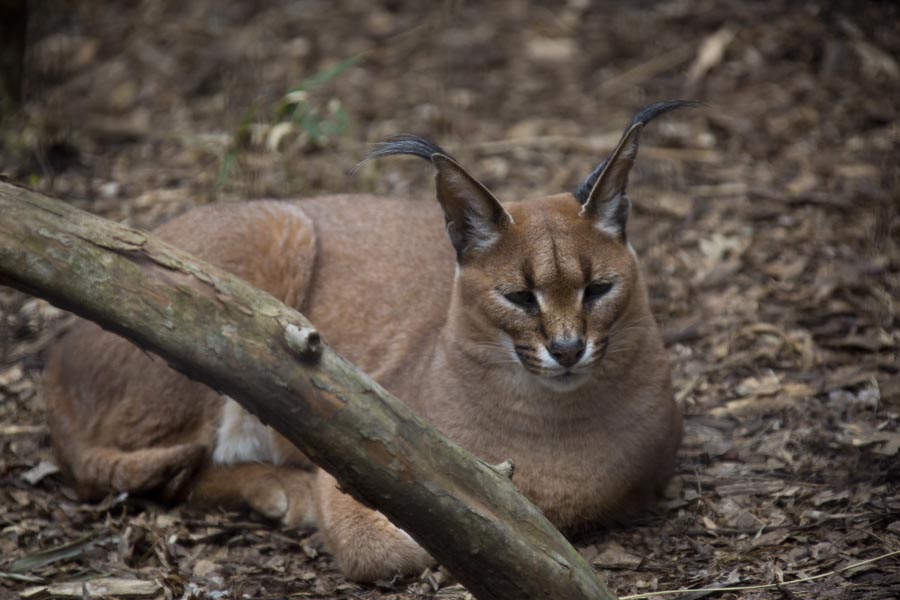After our time in Quito, we moved next stop … the islands made famous by Charles Darwin in the 19th century when he spent 5 weeks surveying the islands and shaped his understanding of evolution through natural selection. Now for context, the Galapagos Islands are a group of 18 islands (plus over 50 islets less than 1 km²) with just under 30,000 people living on 5 of them. The easternmost island, San Cristobal (also where we arrived) is 950 km (590 mi) west of the continent.
Here it is courtesy of Google: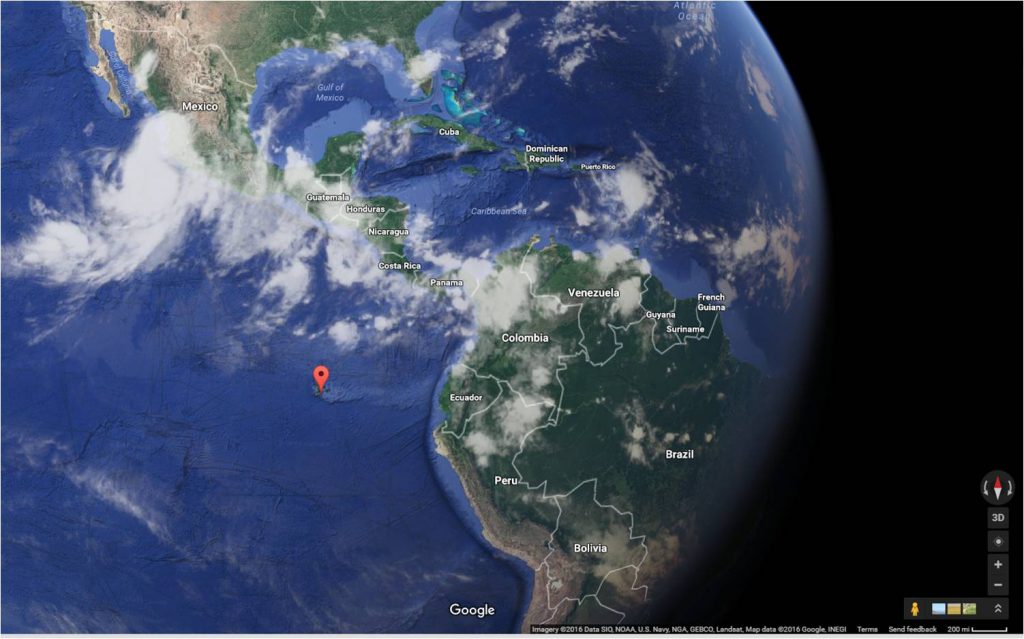
It was a very pleasant journey from our hotel to the airport and out to the islands. The joys of being on an organized tour. 🙂
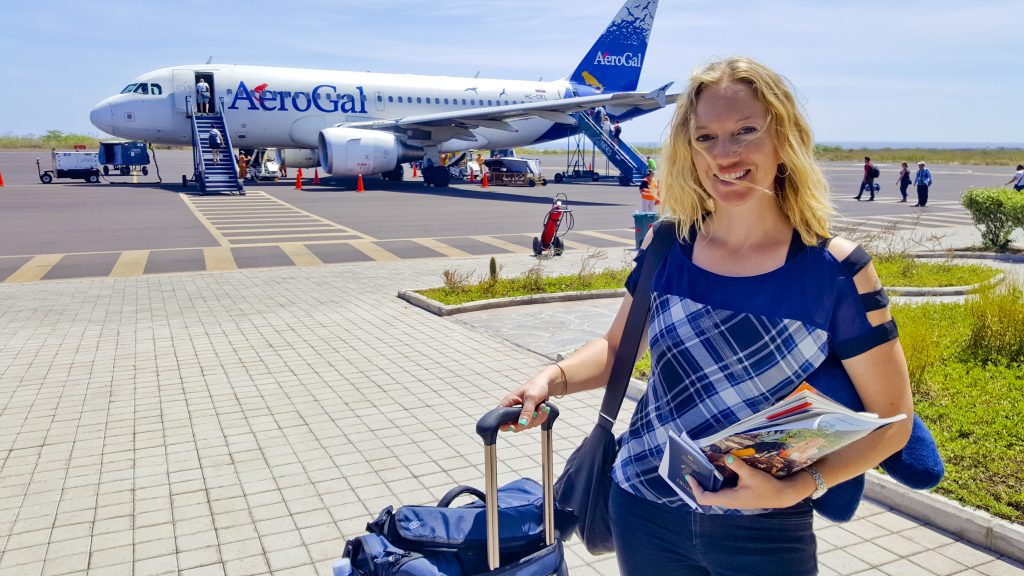
Once through the thorough customs process (understandably so, they are constantly battling invasive species … including humans). Since the land is not terribly fertile, it’s a difficult balance. Ecuador wants tourism in the Galapagos and the wealth that accompanies the hoards. Therefore, development is necessary, but it’s a delicate balance with a terribly fragile ecosystem that is unique in the world. The number of inhabitants has spiked over the last couple decades and it remains to be seen if the development can be ecologically sustainable. Sadly, the fear that it may be lost in the near future motivated us to visit now. We will hope that the balance can be struck and many future generations can experience the immeasurable beauty of the islands.
We met our naturalist guide, Billy, outside the airport. One of the ways to limit the environmental impact of tourists it to limit the size of groups (16 people per naturalist guide), restrict the sites visited (~54), the length of time on shore (2-4 hours) and the size of ships (max 100 passengers).
We began and ended on San Cristobal (the star on the map below). The first day included a bus trip up to the northeast corner to tour a tortoise breeding center. But first, as an orientation, here is a map with the places we visited in the Galapagos (again, thanks Google, although I have annotated the locations and some names). Also, since I have about 250 images to share, I will order the posts roughly chronologically and by island. Since each island is unique and therefore slightly different, it’s interesting to see the differences.
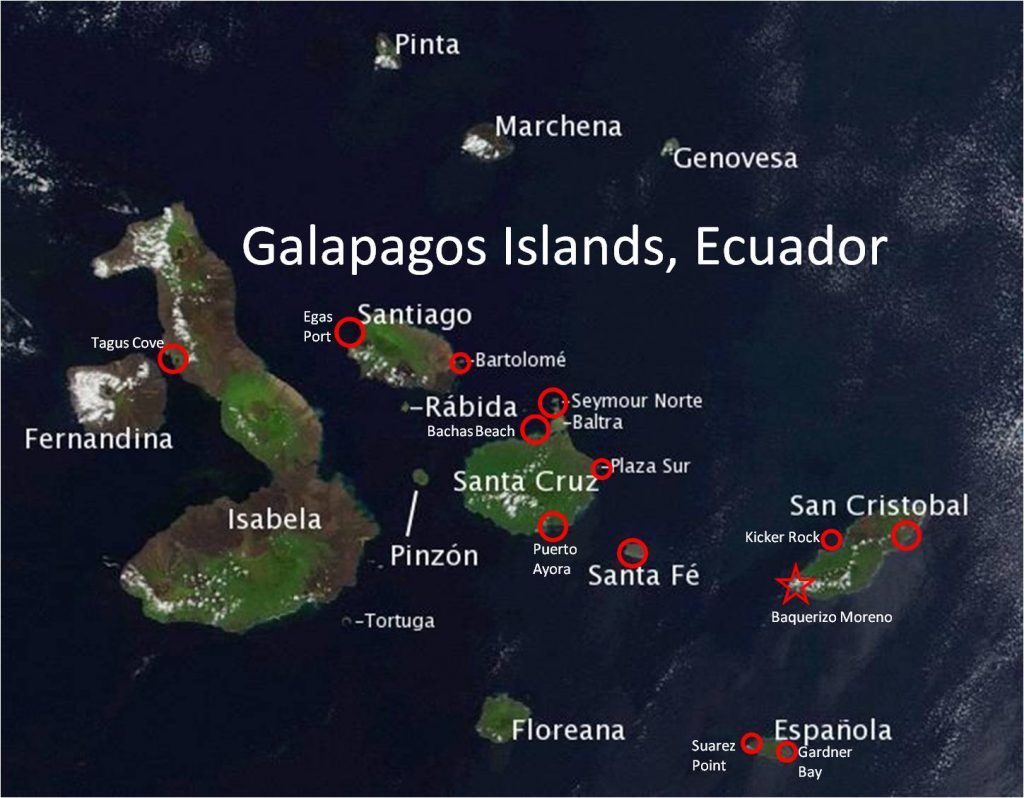
SAN CRISTOBAL
Here are a few images of the village of Puerto Baquerizo Moreno. There are about 6,000 residents and it feels like a sleepy fishing village.
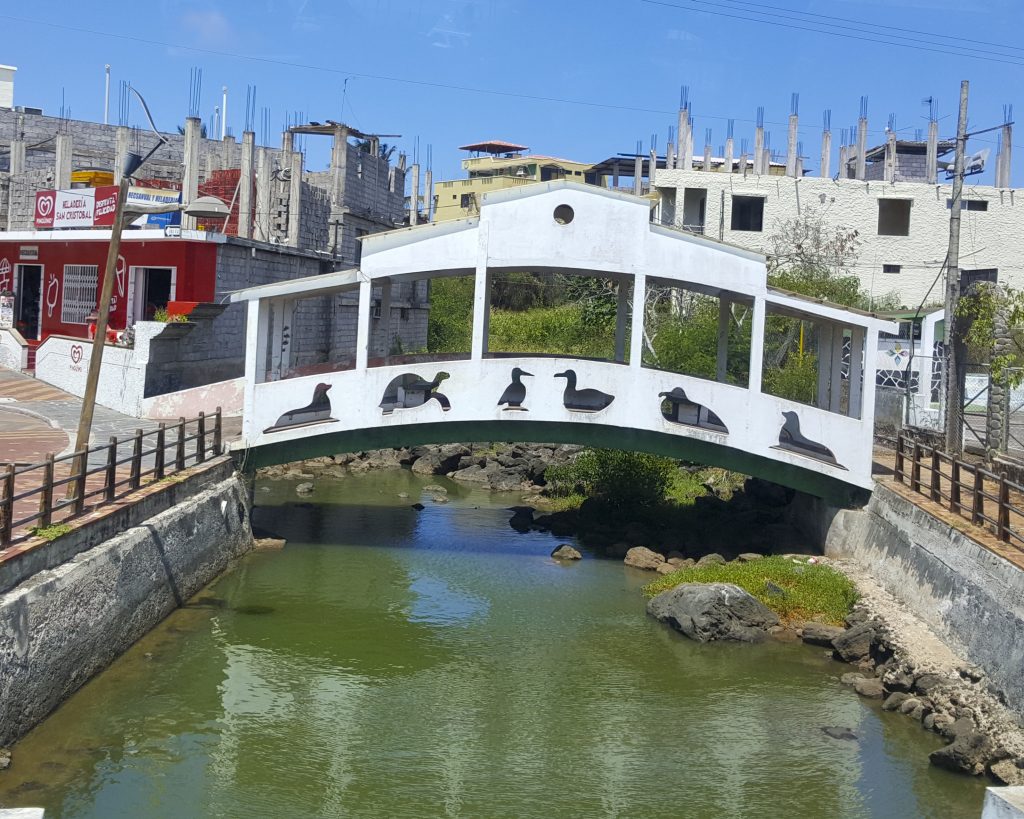

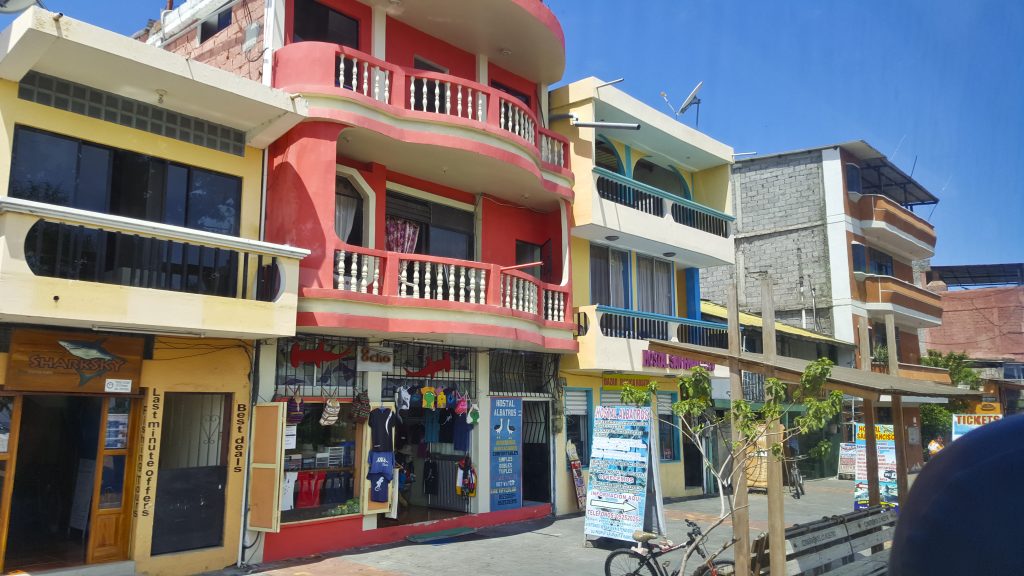
I made the image of a police dirt bike for Alex, who still loves all vehicles.

M/Y MAJESTIC
Now, here is our boat … as you can see, the Motor Yacht Majestic lives up to her name. She is 35 m (115′) long with a beam of 7 m (23′), cruises at 10 knots and carries 16 passengers with 10 crew.
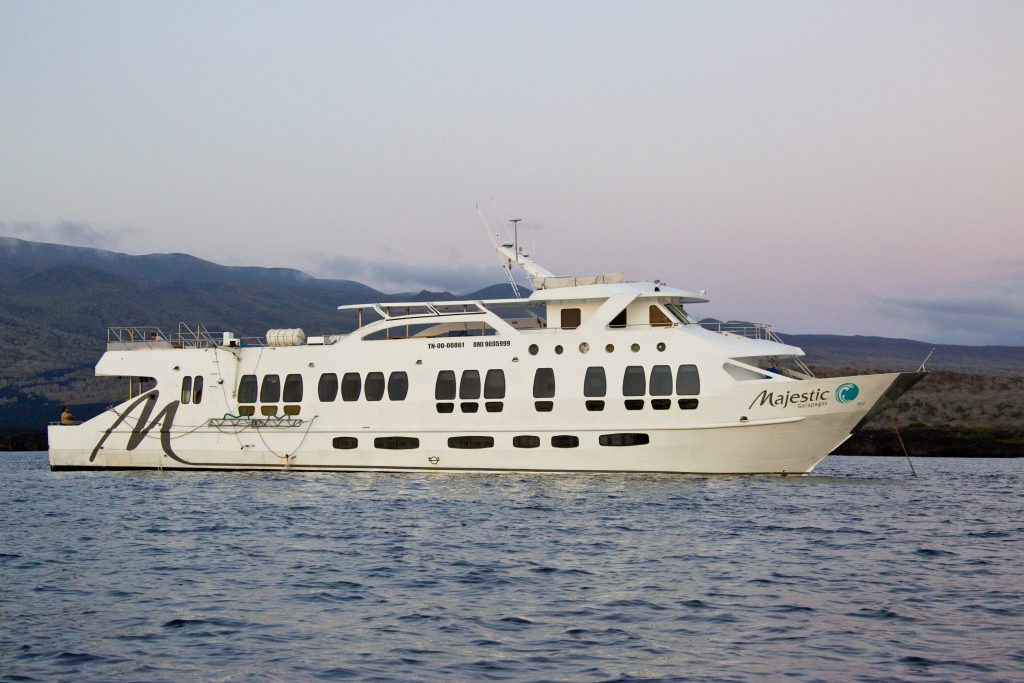
Although not overly large, there was plenty of space to spread out. The top deck had tables, lounge space and a Jacuzzi. The main deck had the dining room, more lounge space and 4 cabins. The lower deck had 4 cabins for passengers and the crew spaces.
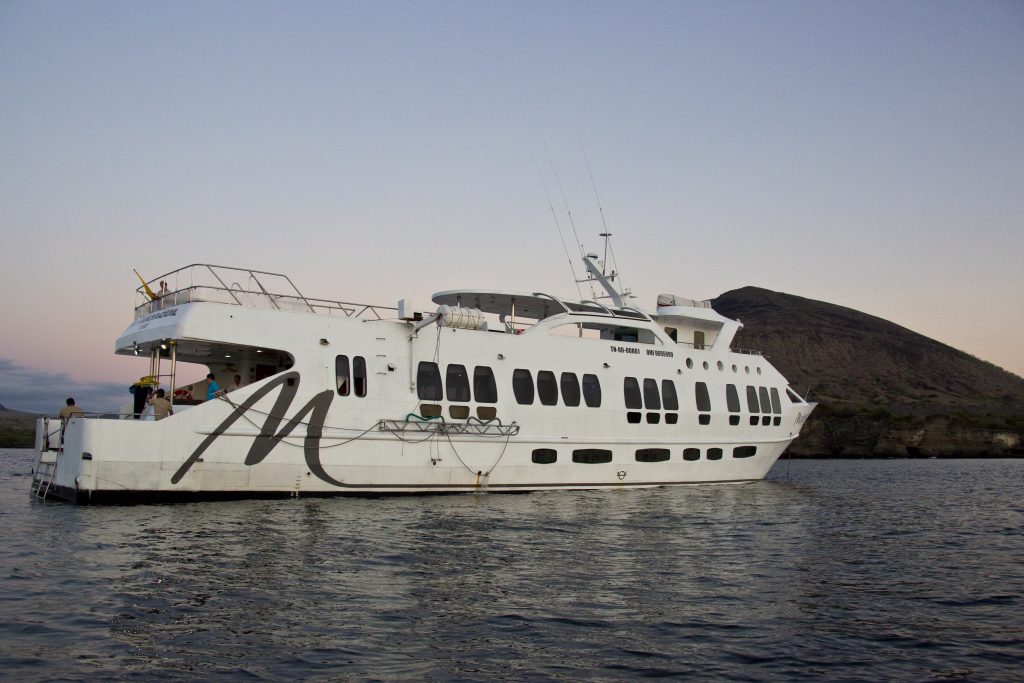
Here is our cabin … after we had lived in it a few days. It was very comfortable and we really enjoyed the large windows. Fortunately, on this boat, every cabin comes with air conditioning and a private bathroom.
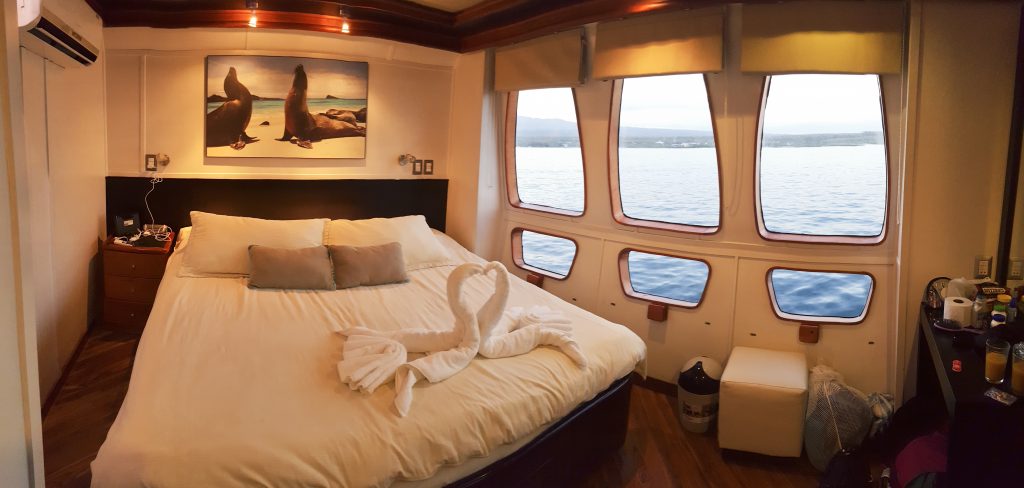
OK, now that everyone has bit of background and I know I’ve taken a long time to get to it (thank you for your patience), here are the stars of the Galapagos … the animals! Trust me, it was worth the wait. They are spectacular.
SANTA FE
At nearly every beach, we were met by furry mammals, these friendly sea lions, cousins of the California variety.
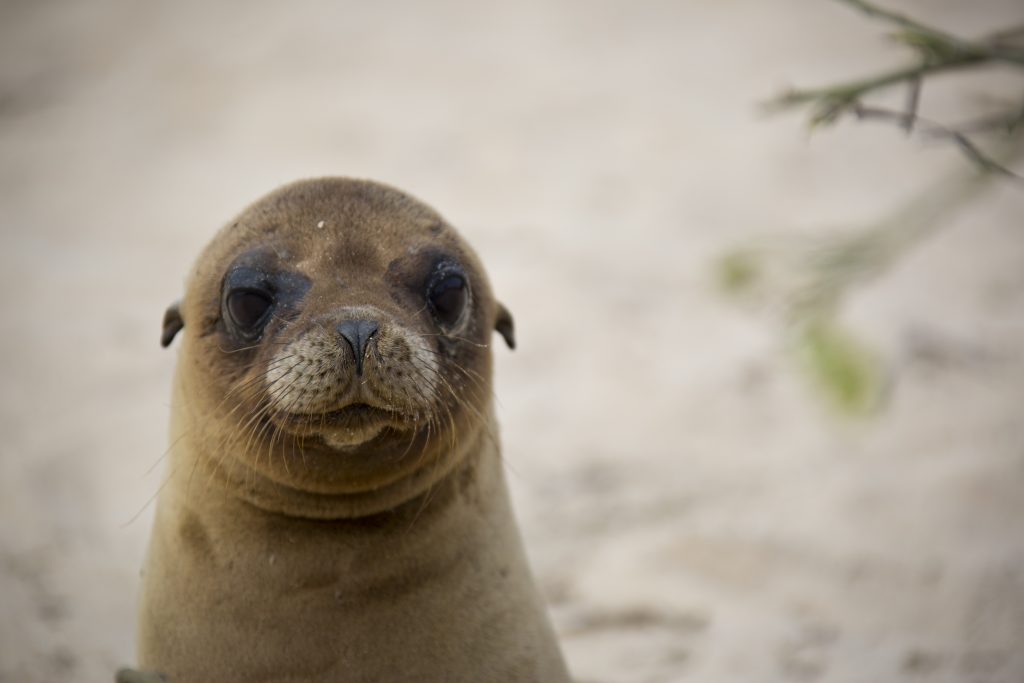
Another familiar visitor, the large Galapagos Land Iguana.
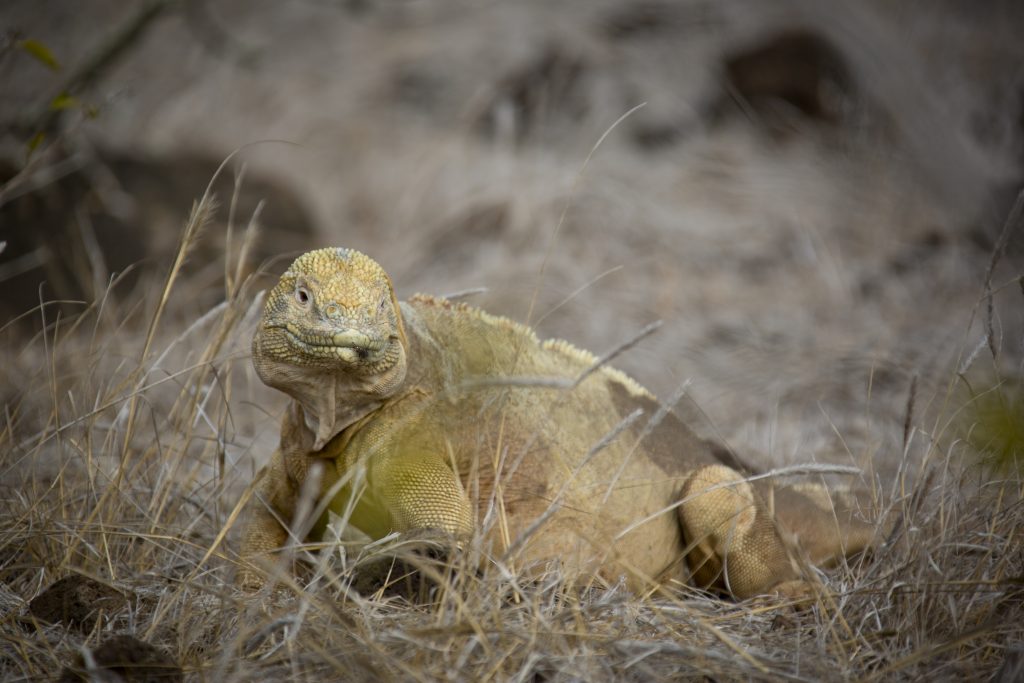
The other sight on Santa Fé was the immense Opuntia cactus. These cacti are more like trees!
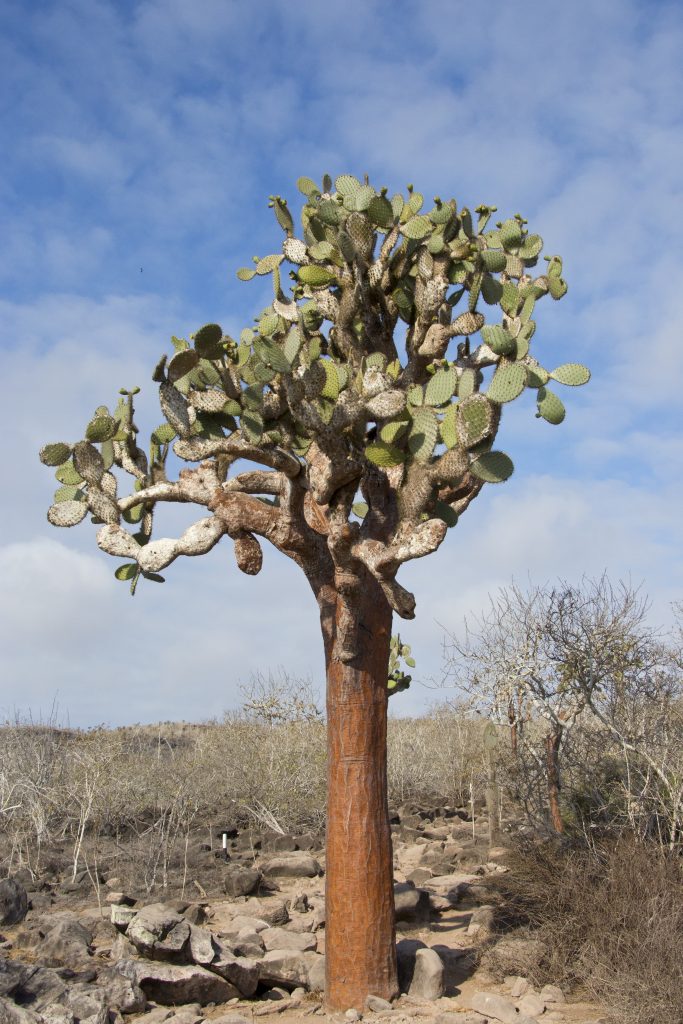
Two permanent residents of Santa Fé with our floating home in the background.
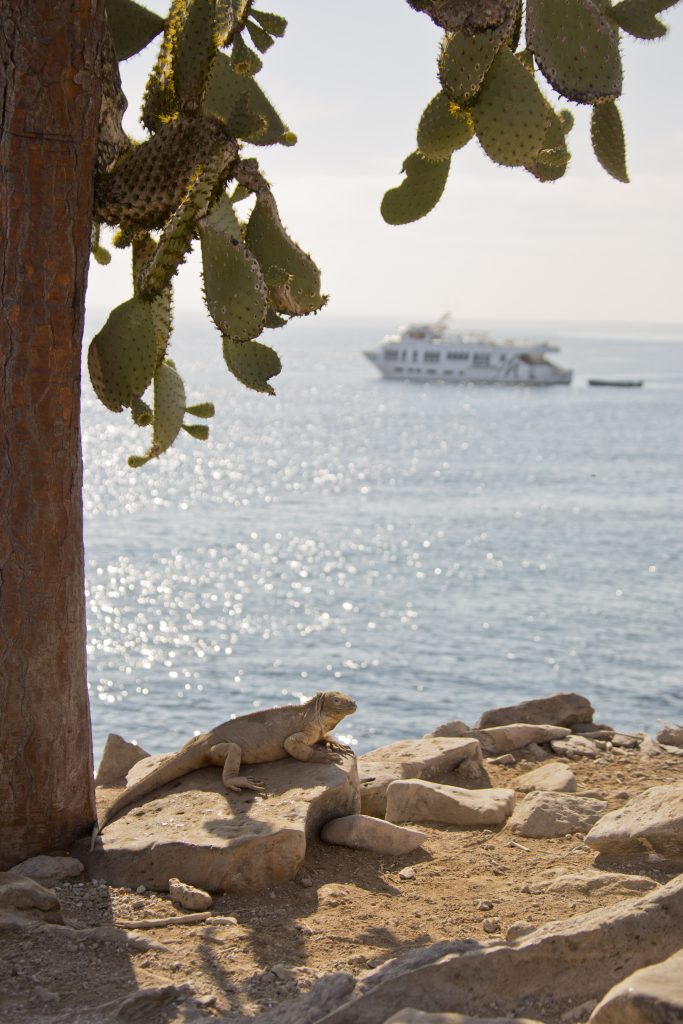
A Galapagos hawk, which is about the same size as a red-tailed hawk in North America.
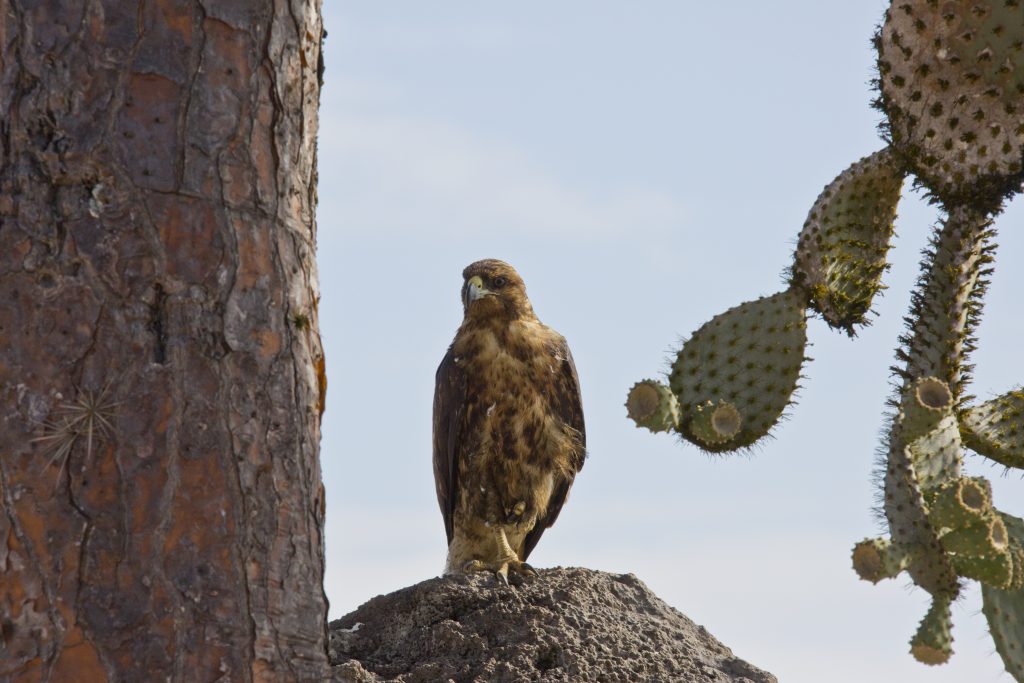
The iguanas did lots of chillin. Charles Darwin wasn’t a fan … in his book chronicling the voyage of the Beagle he remarked the Galapagos Land Iguana were “ugly animals, of a yellowish orange beneath, and of a brownish-red colour above: from their low facial angle they have a singularly stupid appearance.” I don’t know, I think they look a little smug.
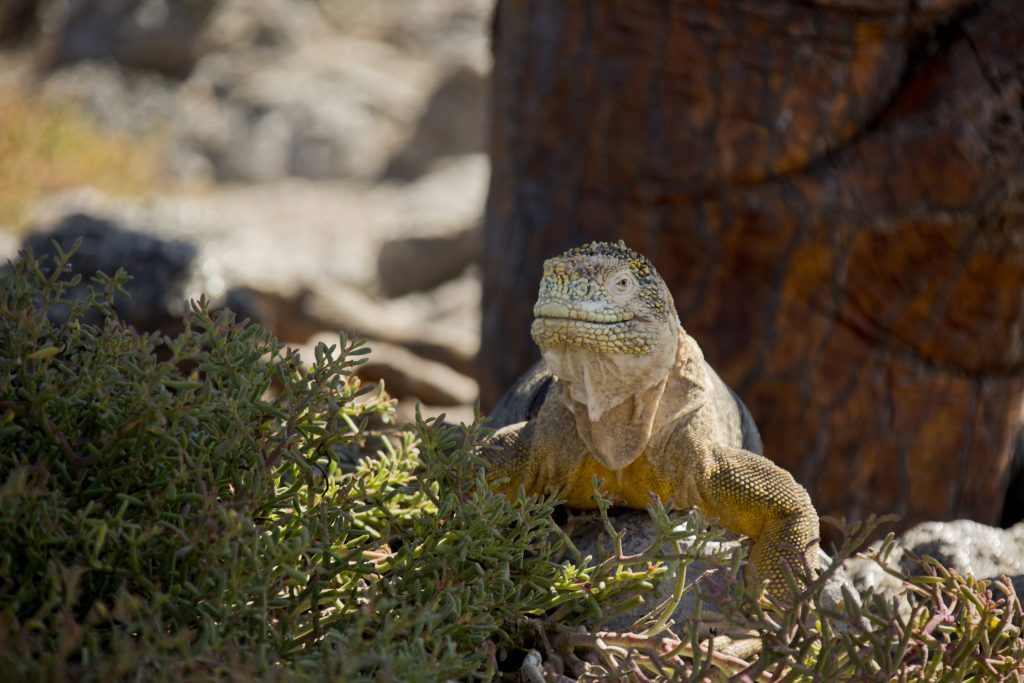
SOUTH PLAZA ISLAND
A barren landscape, it’s easy to see how fragile it is and why animals had to evolve and adapt, if they couldn’t leave the island to go to another.
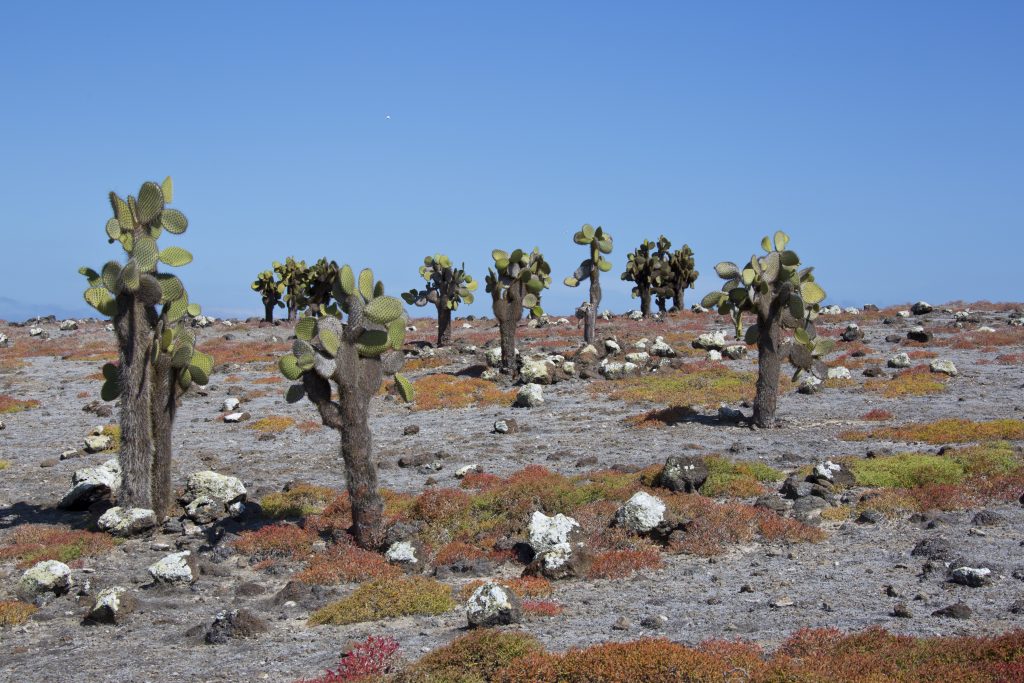
There are likely only 5,000-10,000 land iguanas left on the islands. In the 19th century, they were all over, but introduced species that became feral (pigs, rats, dogs and cats) nearly wiped them out.
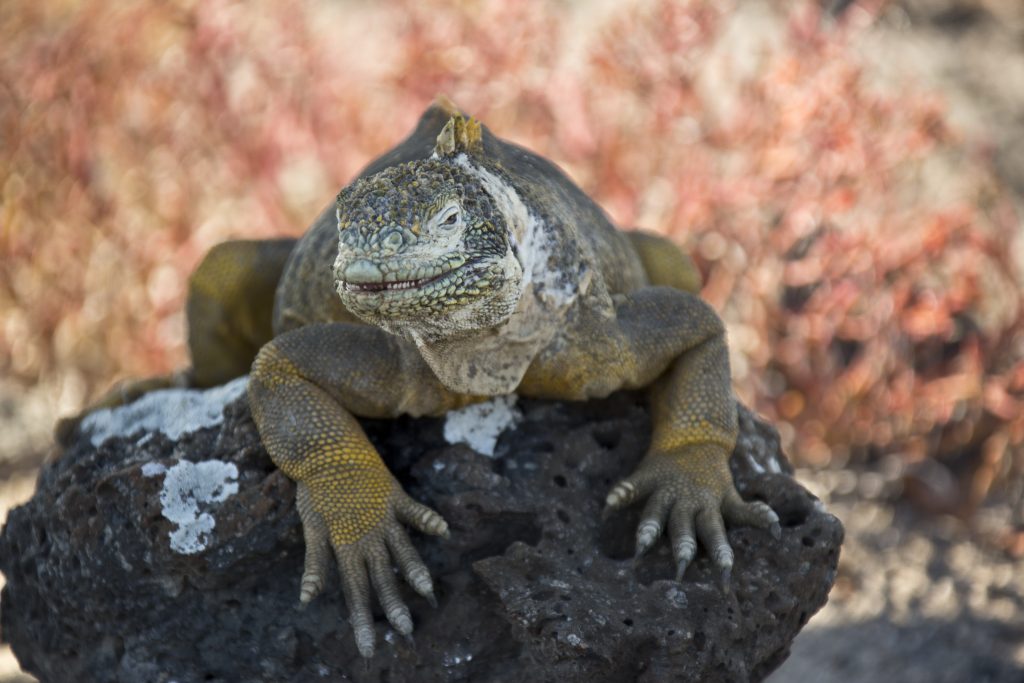
The Red-billed tropicbird:
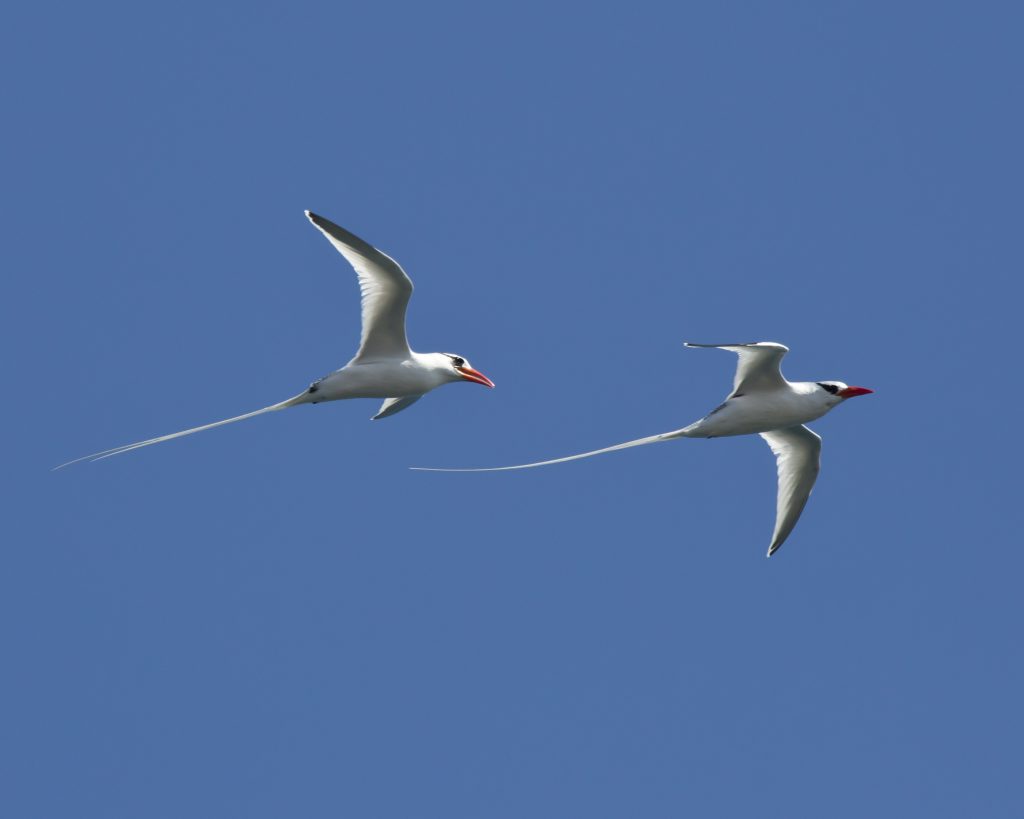
and the top and back view of this majestic flier.

The red rock crab (or Sally Lightfoot Crab) was a common site on most all the islands. A spectacular red on the black volcanic rock.
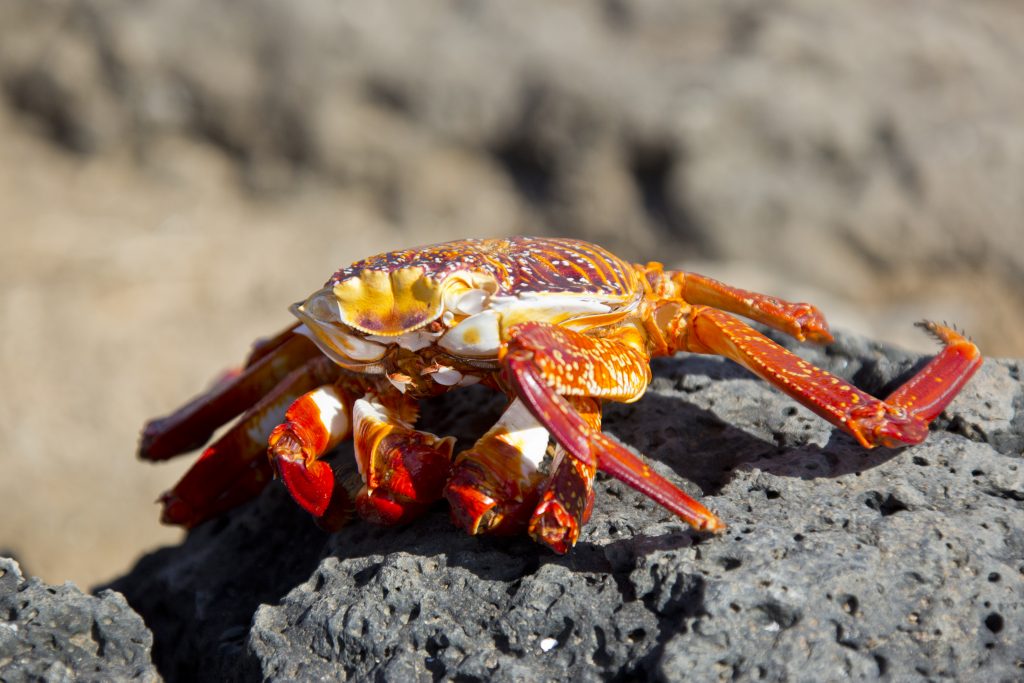
We hiked up to this beautiful cliffline and found this pelican.
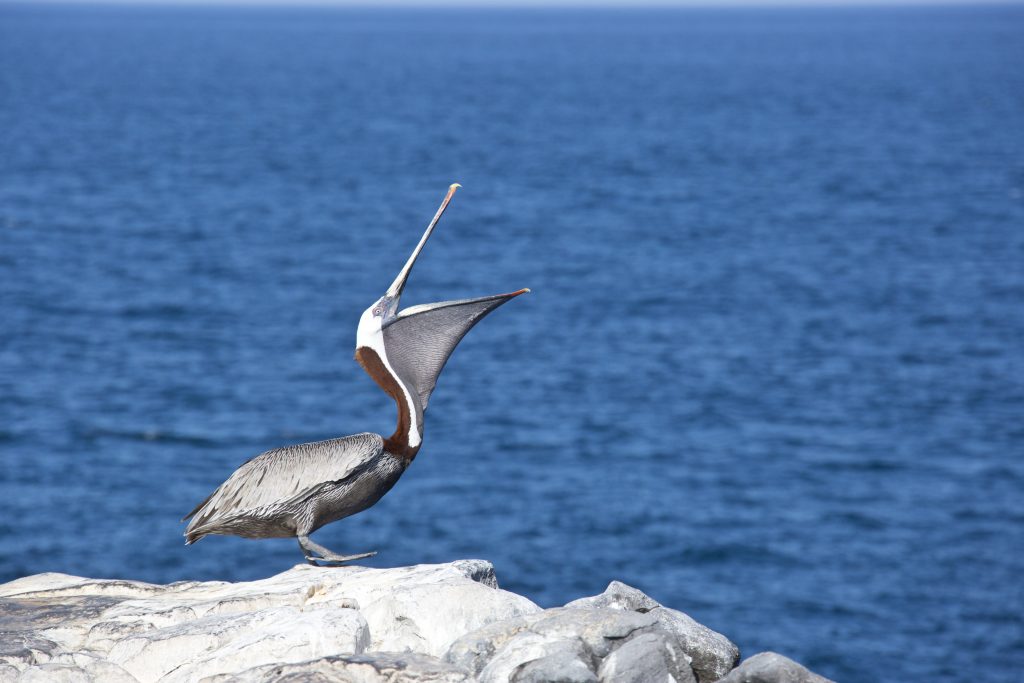
He was doing a little pouch stretching.
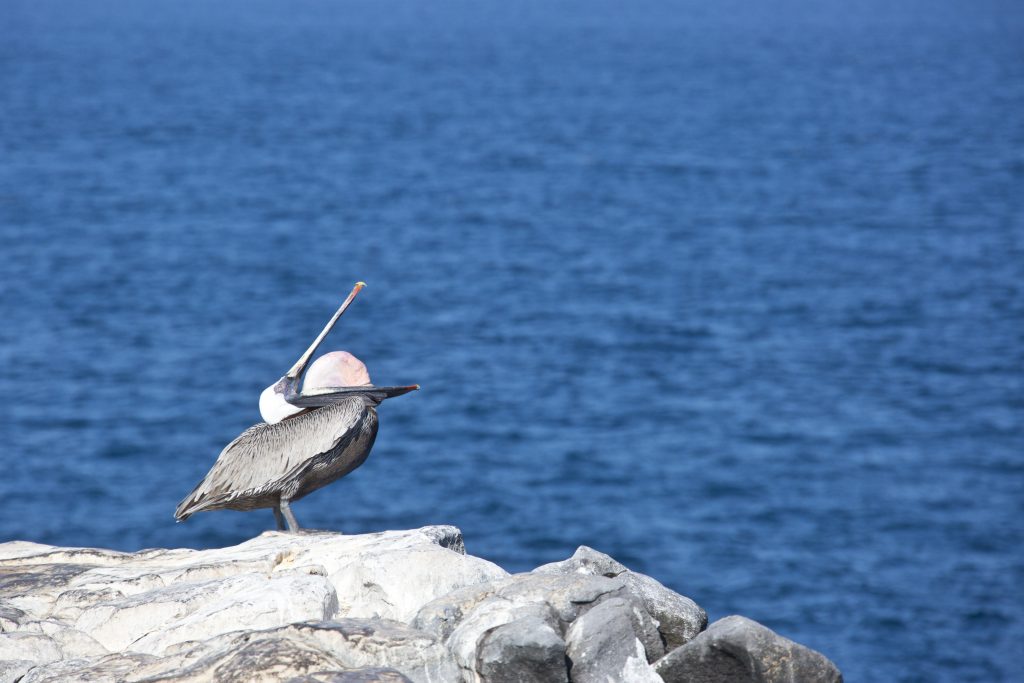
Another guest had worked his way all the way to the top of the cliff. An impressive feat while effectively sliding over sharp lava / coral.

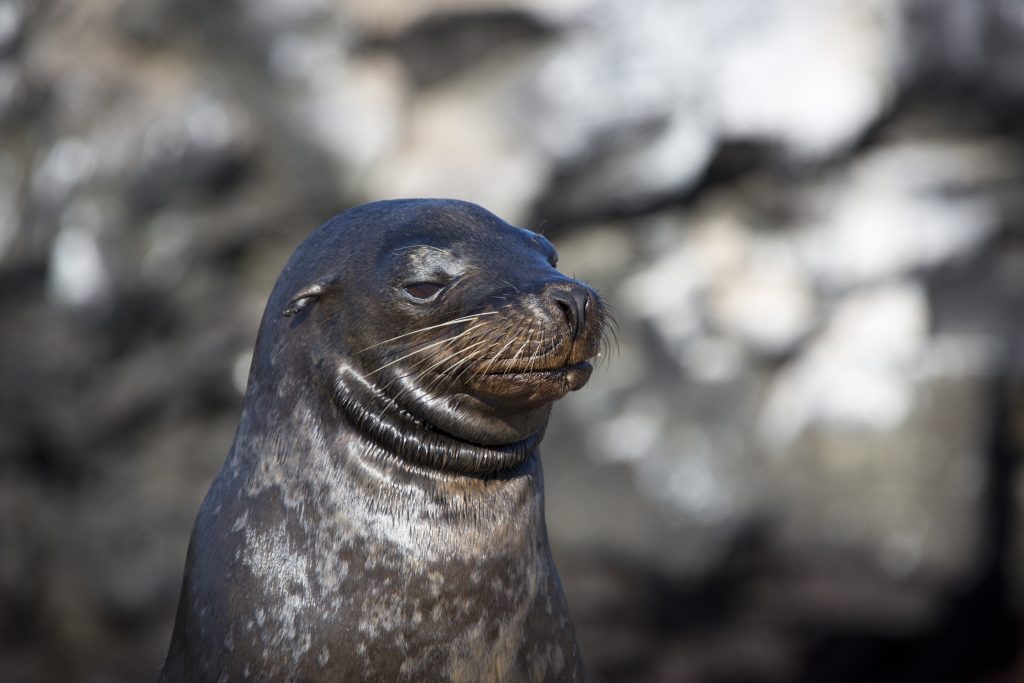
He seemed very proud to have made it up.
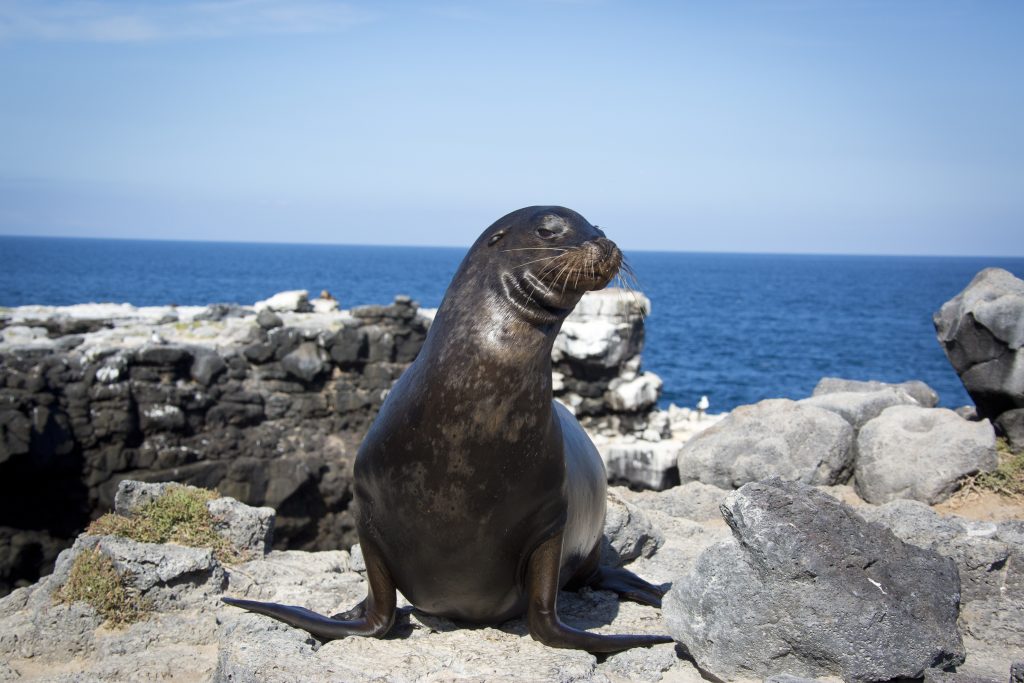
Mmm, I love the sun…
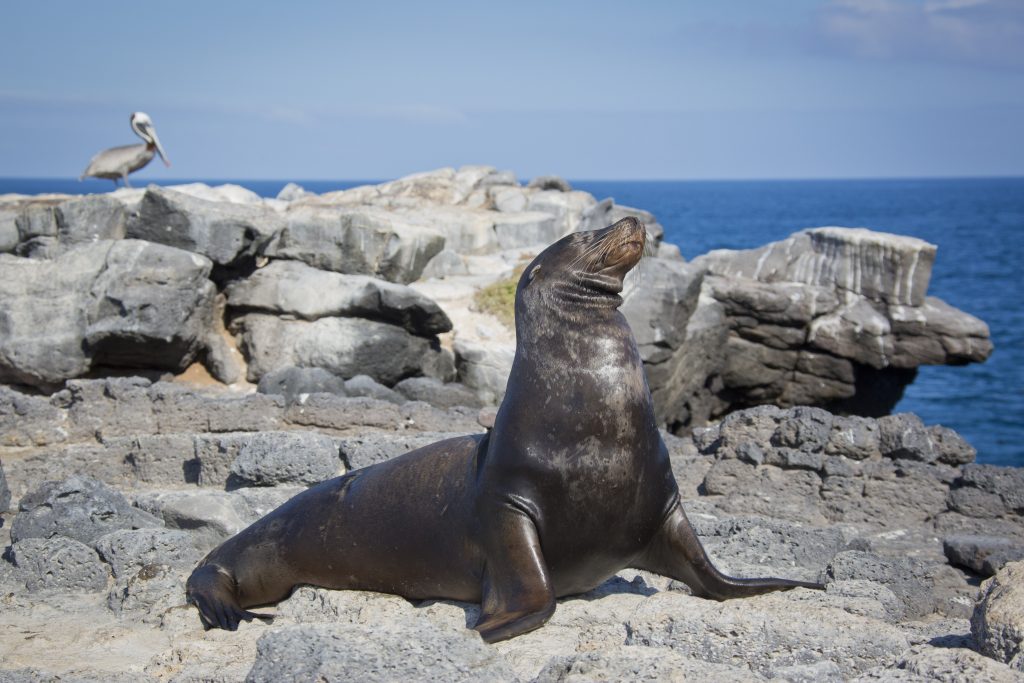
Oh yes, I’d like a drink over here, please!
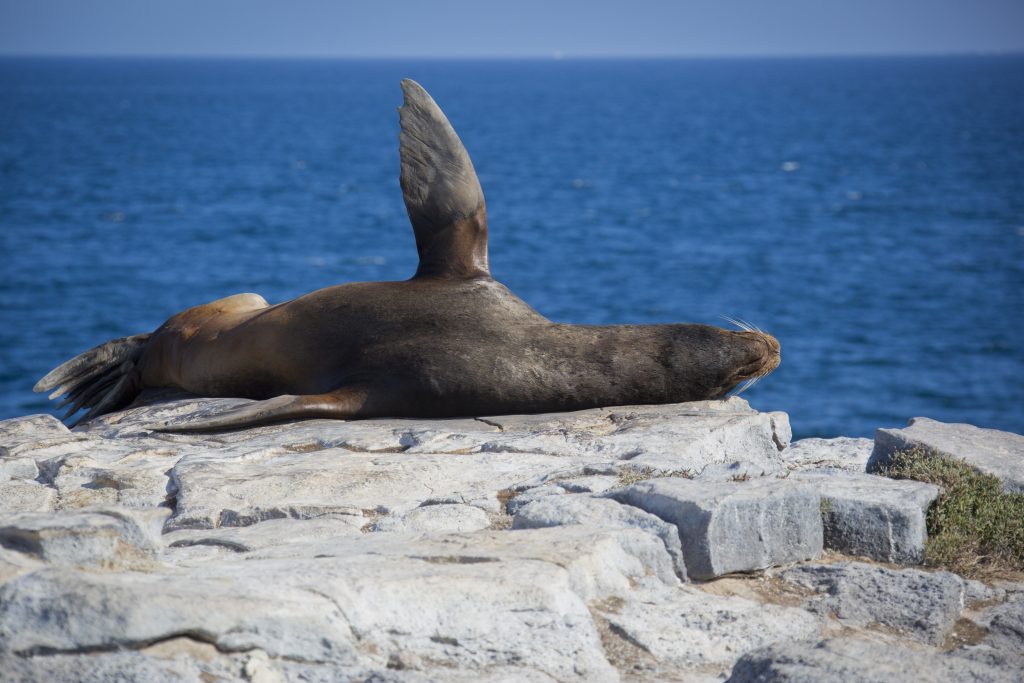
Since the sea lions had been coming up the cliff so long, the sharp coral and lava had been worn smooth like marble.
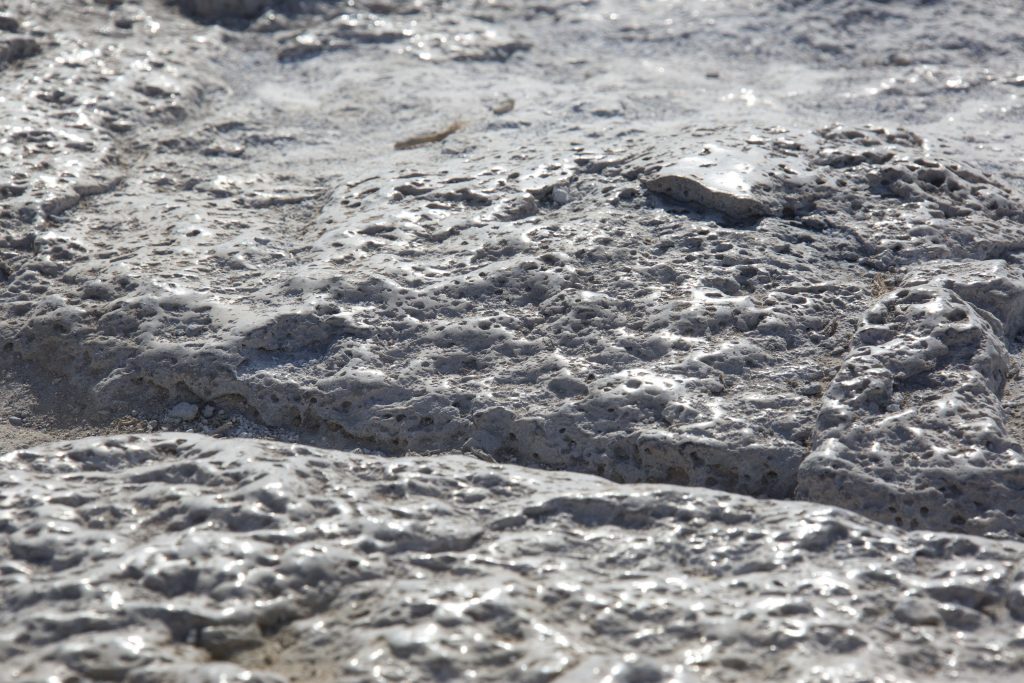
Another yellow iguana enjoying the sun too.
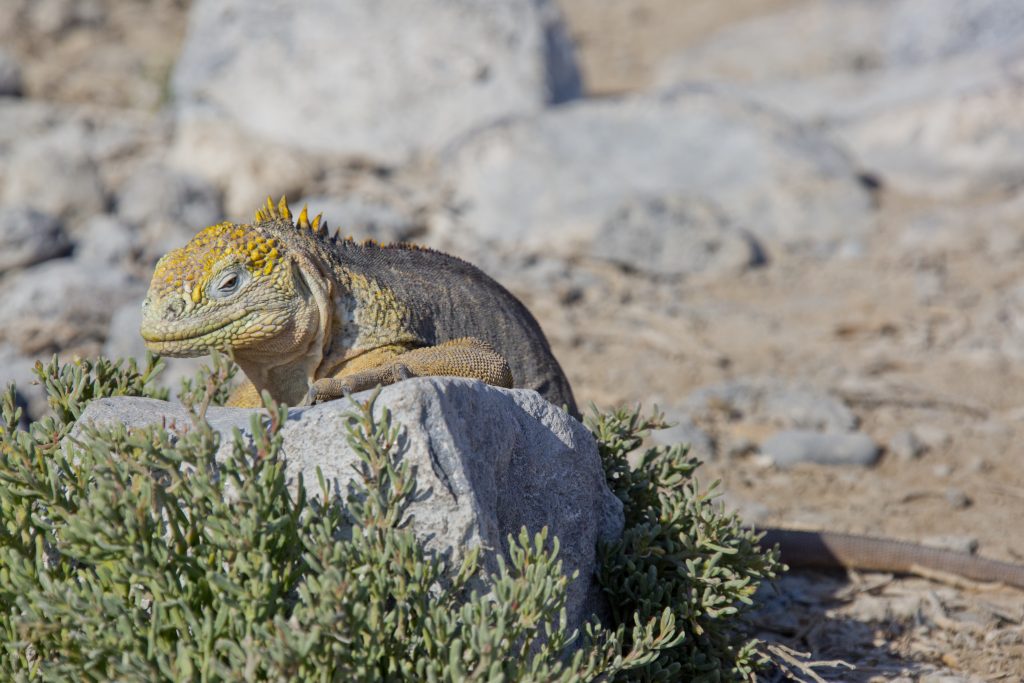
Here is one of the many types of species of Darwin’s Finches.
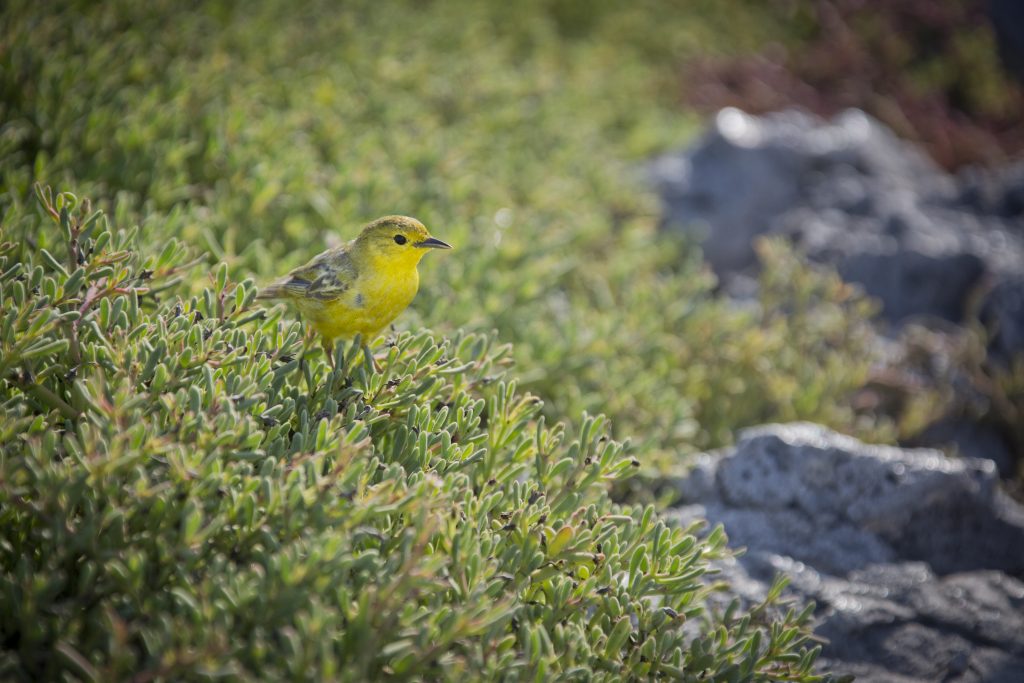
Sauntering across the trail.
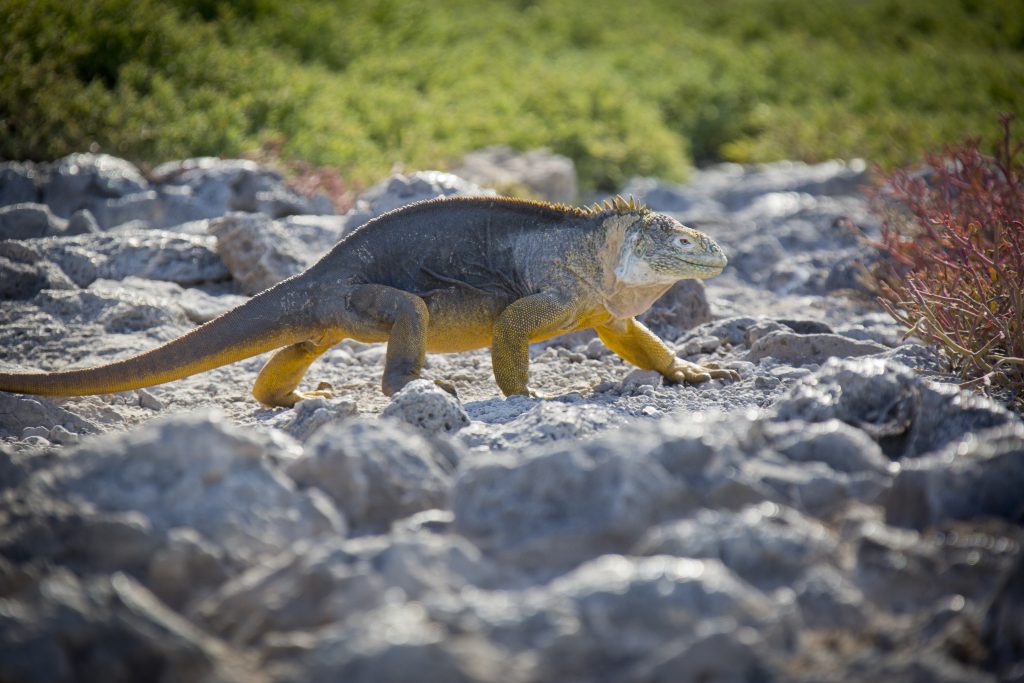
An image to give you an idea of the relative size of the land iguana.
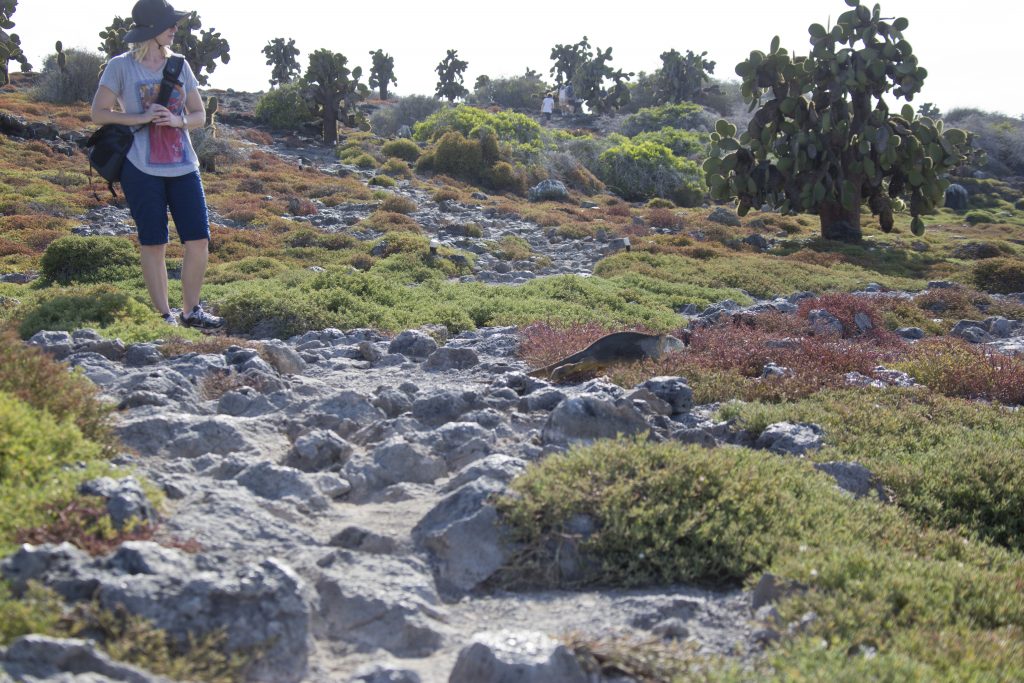
And now … into the water! We chose this itinerary because we wanted to focus on the endemic land-based animals in the Galapagos. However, we love being in the water, so it was a treat to be able to snorkel. Sadly, none of the boats that do land tours also offer SCUBA (from what we found, at least). So we contented ourselves with staying a few meters from the surface. Here is Anna all kitted up (as they say in the UK).
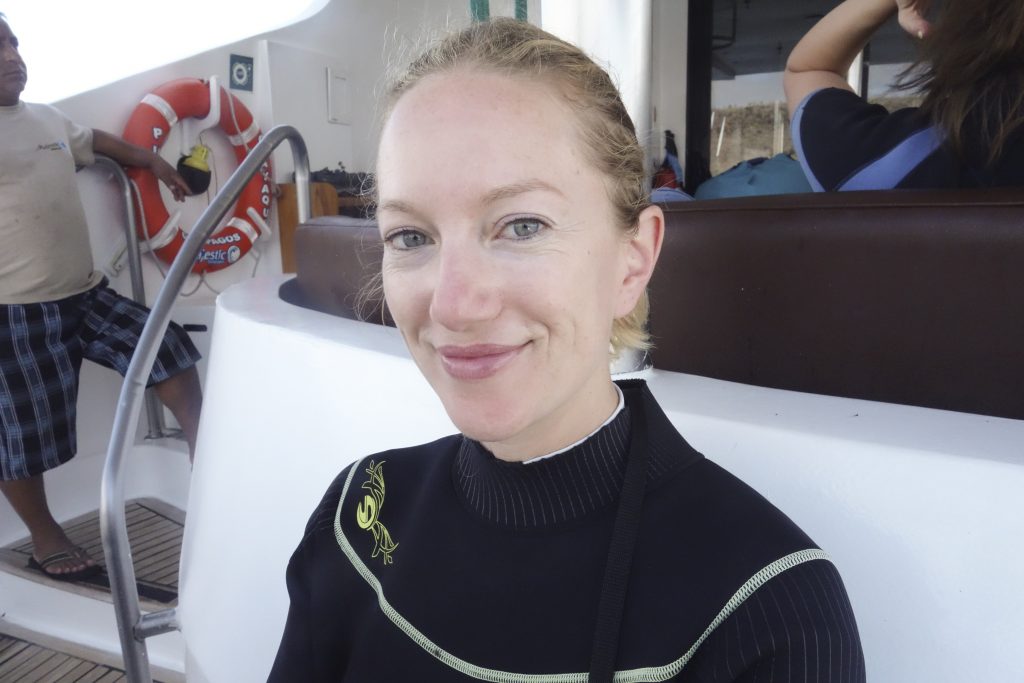
I love diving with seals and sea lions as they are very curious and willing to play with divers (or snorkelers).

Billy explained that if I dive down and do loops underwater, the sea lions might follow suit and sure enough!
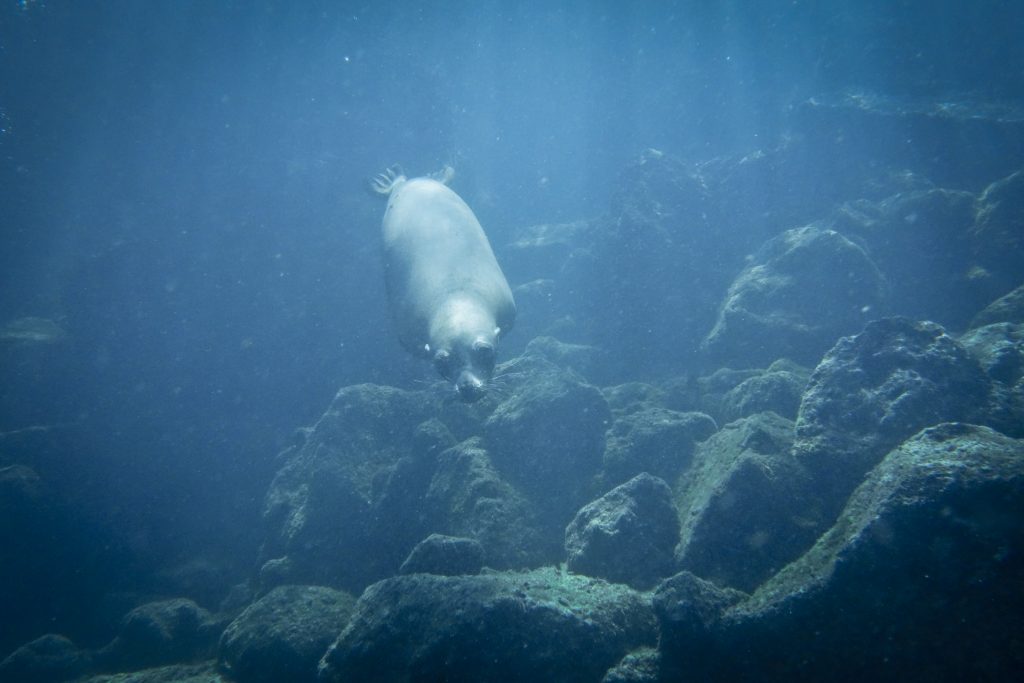
Looping away!

The guides were kind enough to point out this giant bait ball which I got to go swim through. It’s a bit surreal swimming through a cloud of fish.
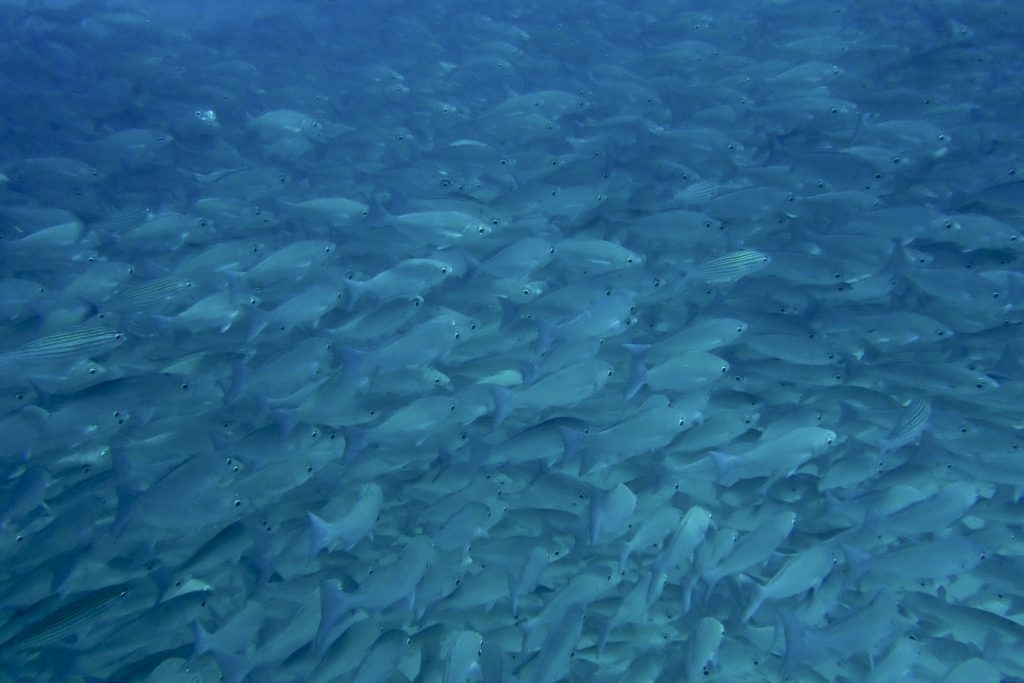
Anna took the camera and got an image of me parting the fish.
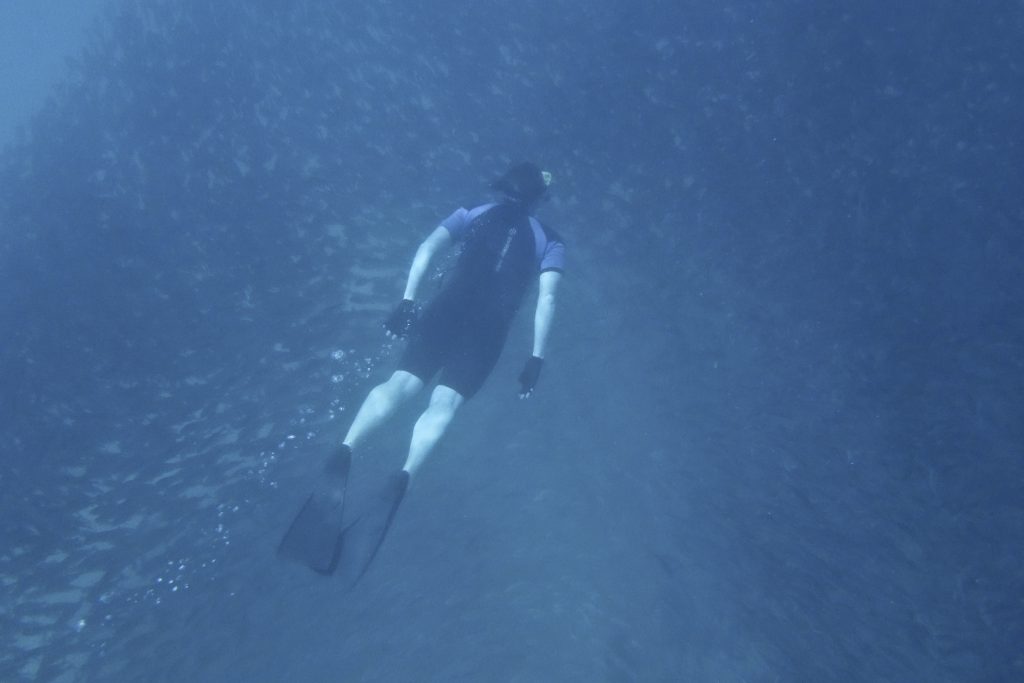

As we South Plaza island, we were greeted by a coupe whales. This was as close as we got, but they are always fun to see.

As we sailed around Isabela Island, we had some tag alongs. These Greater Frigate birds came one at a time…

At first, sitting on the boat.
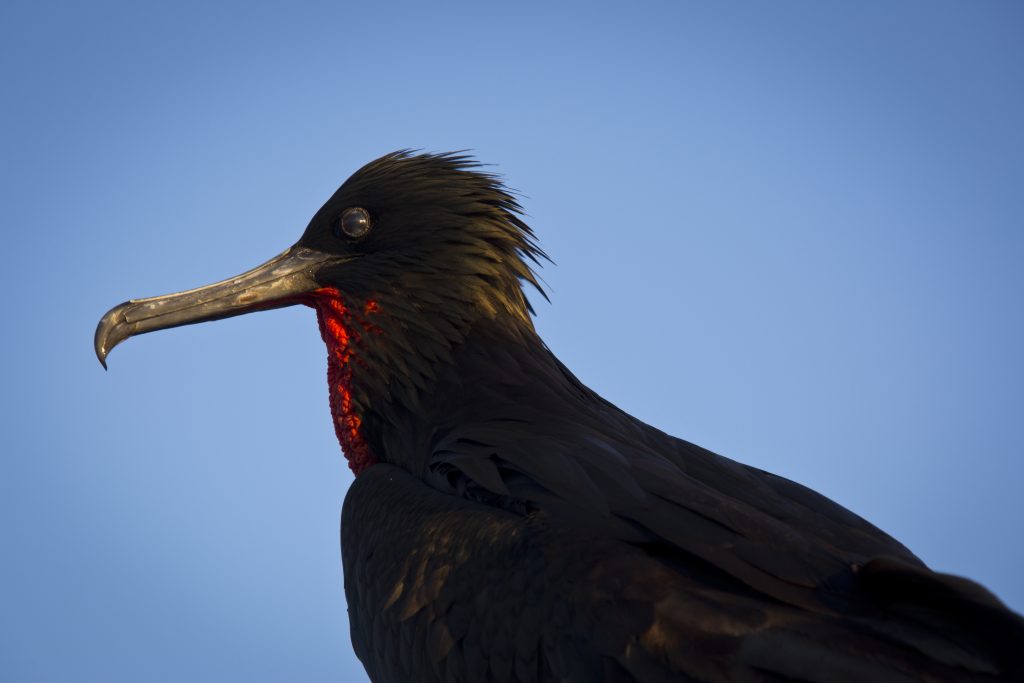
Then, cruising overhead. We would see many more on our voyage, but they are fun to watch cruising and matching our speed seemingly effortlessly.
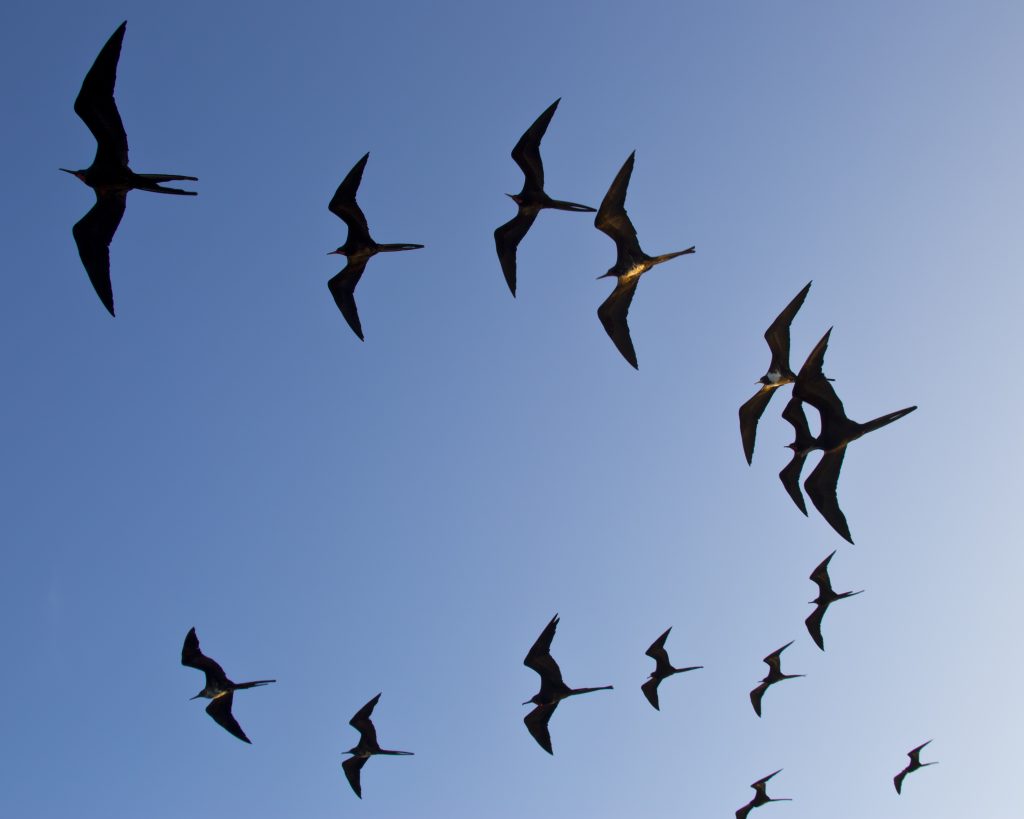
And with that, the sun rapidly slipped over the horizon.
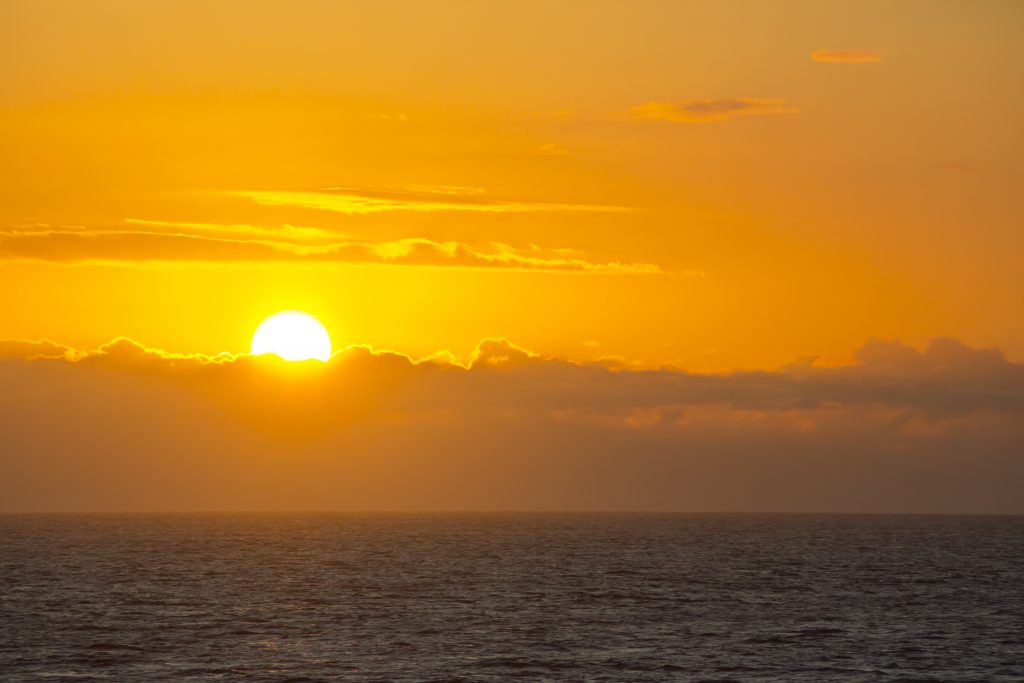
Many more islands to visit… But dinner was first.
Until the next island.
–Jim

